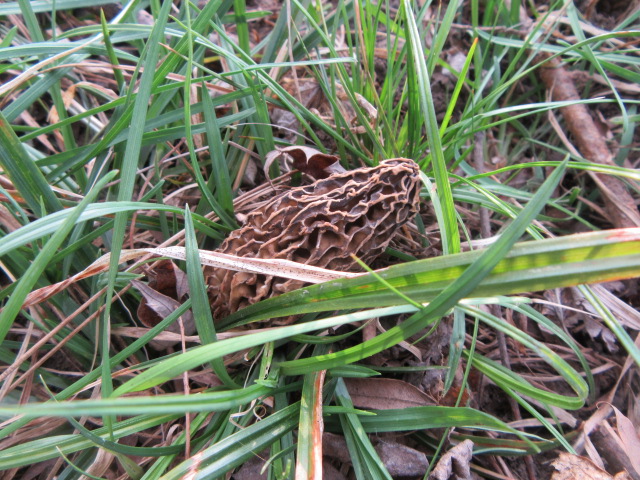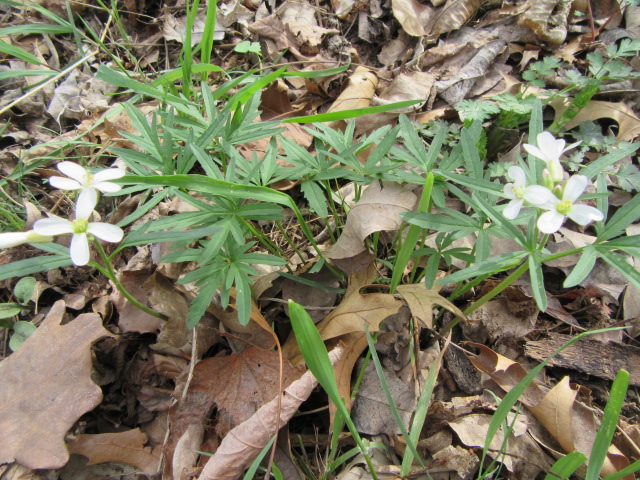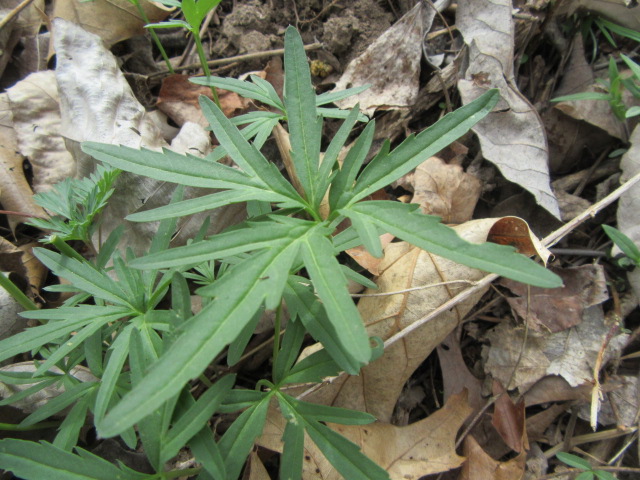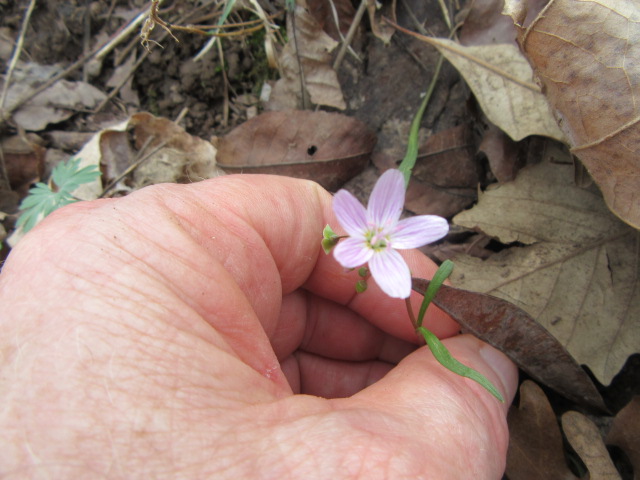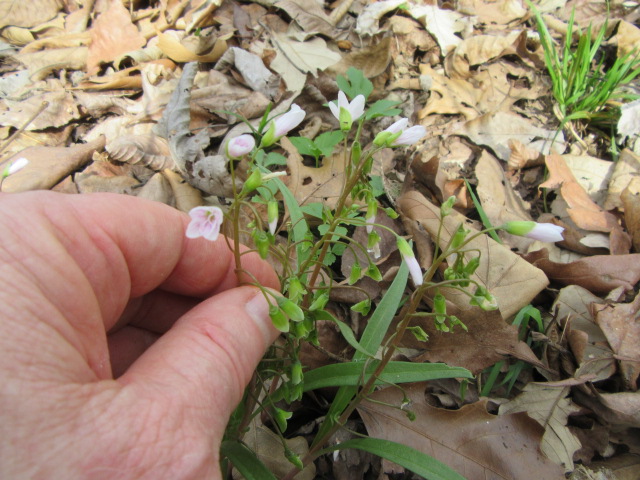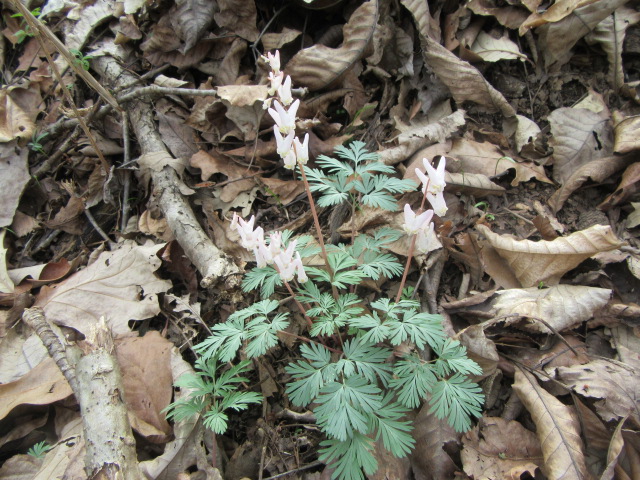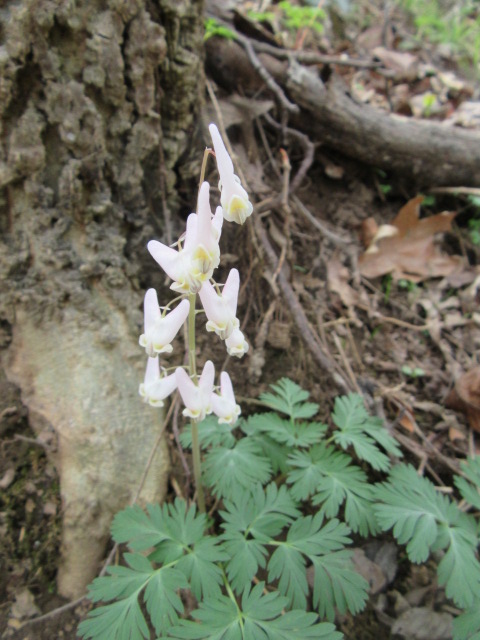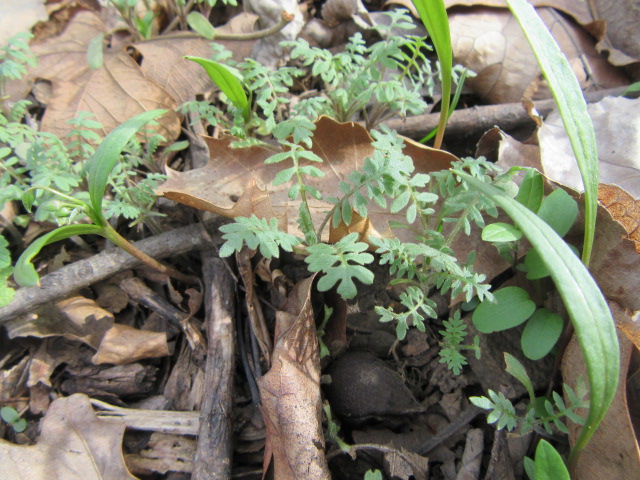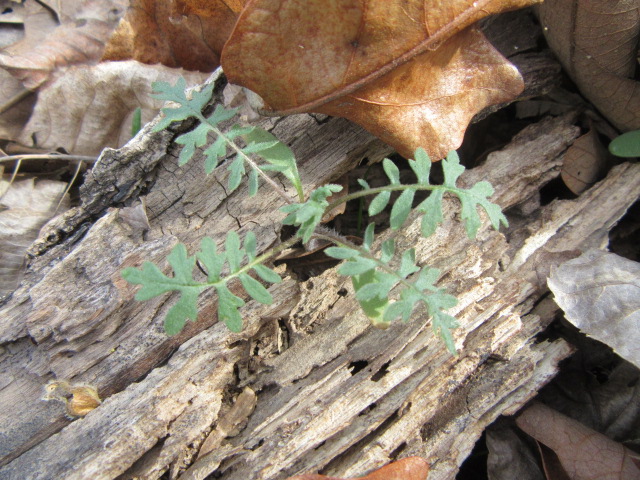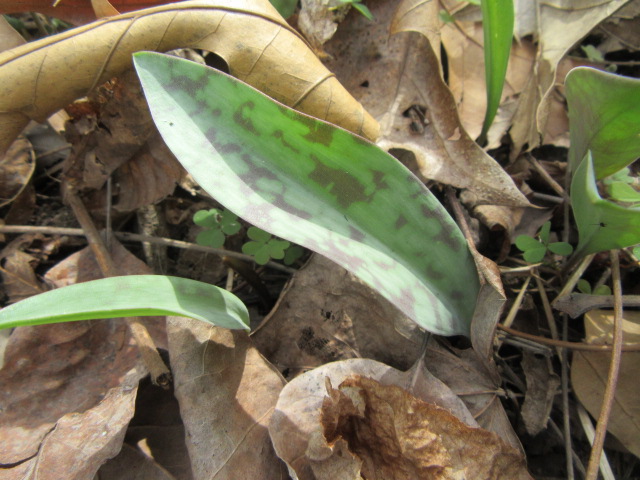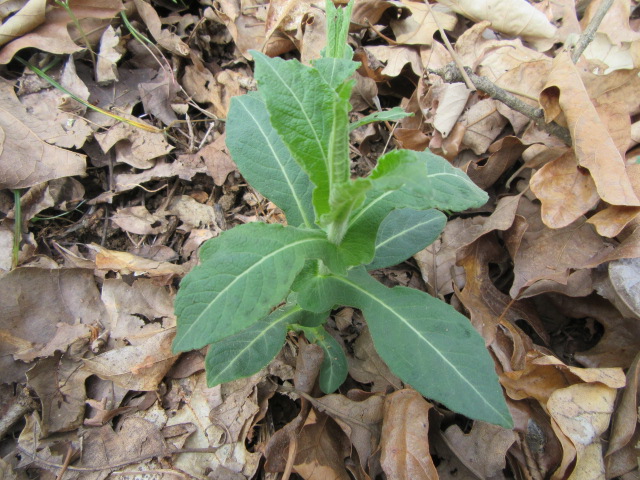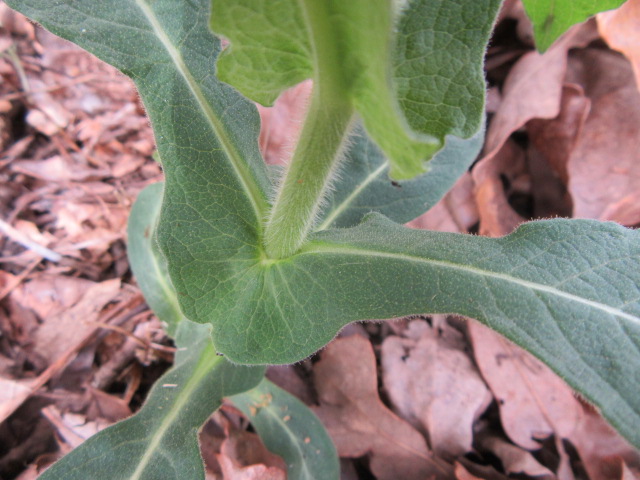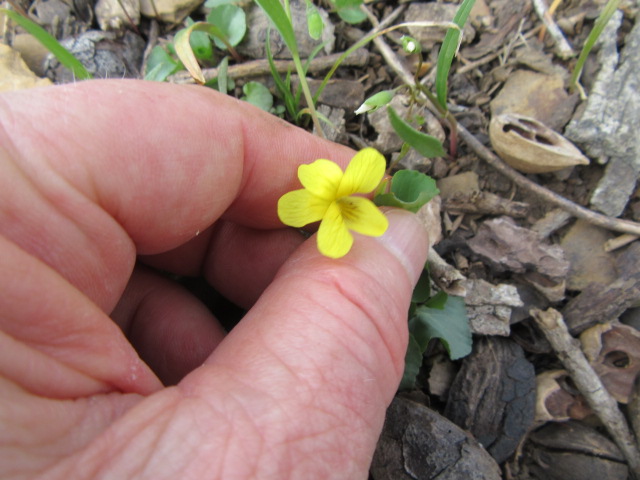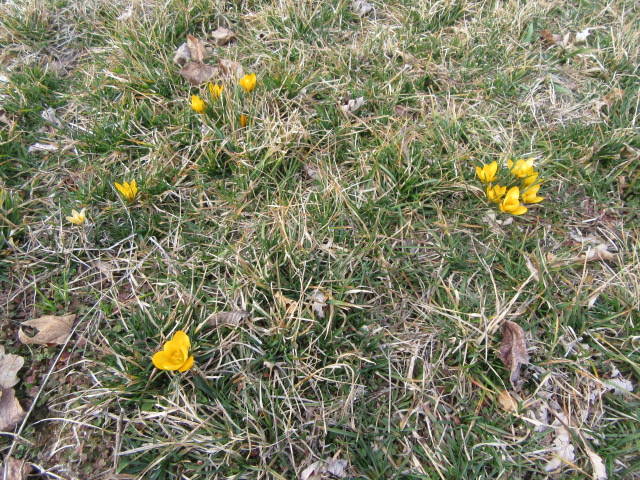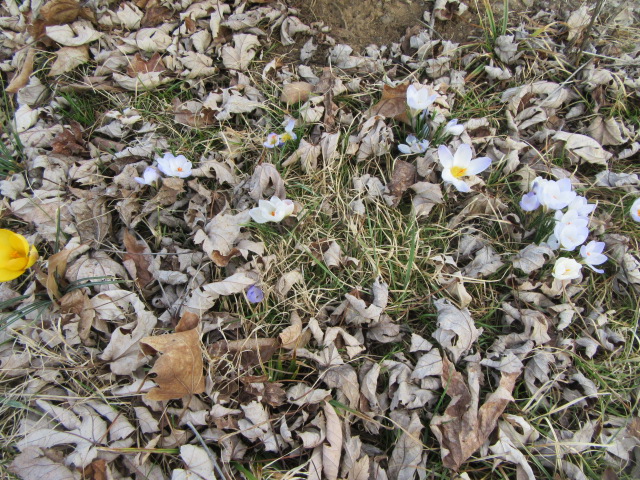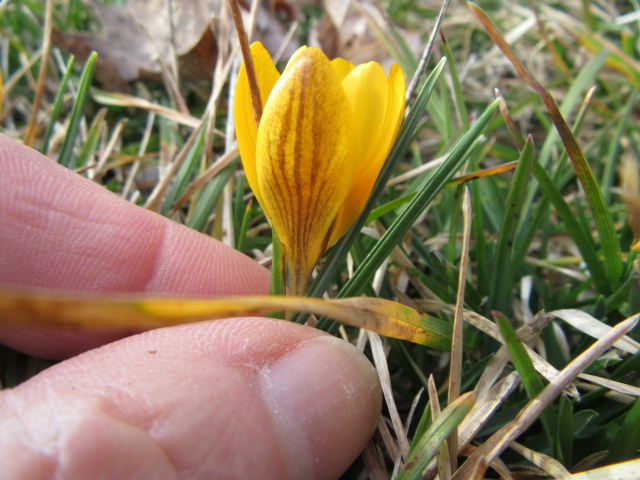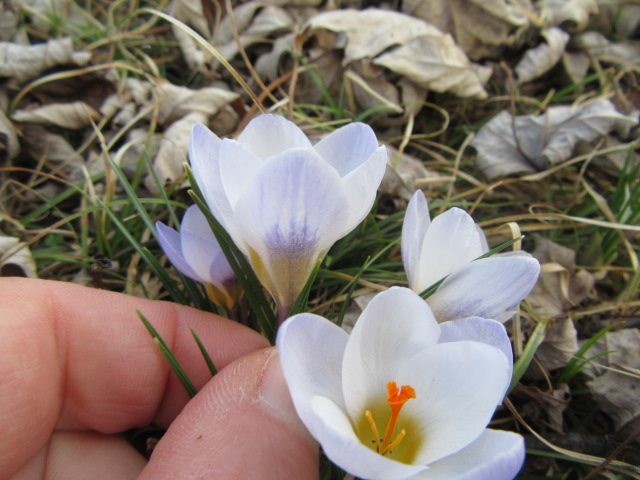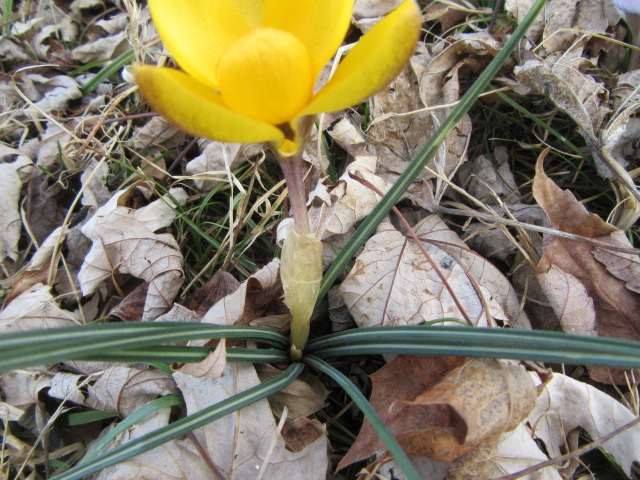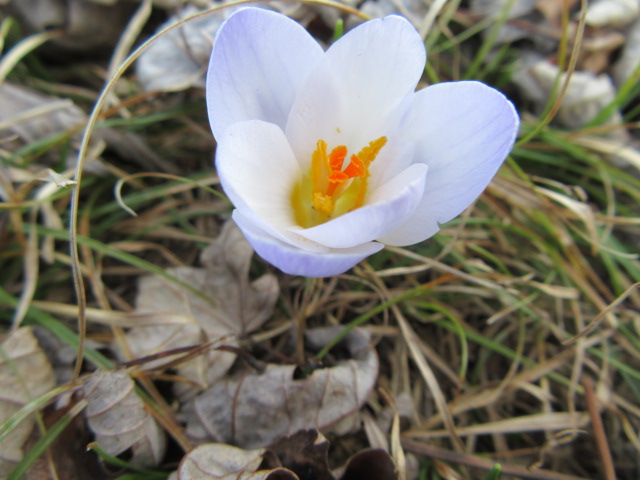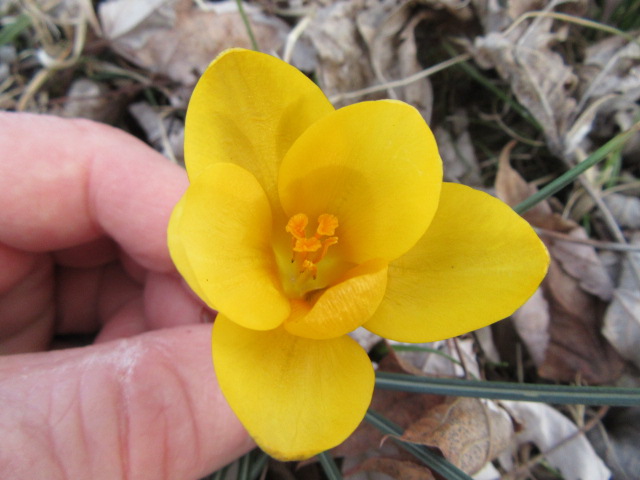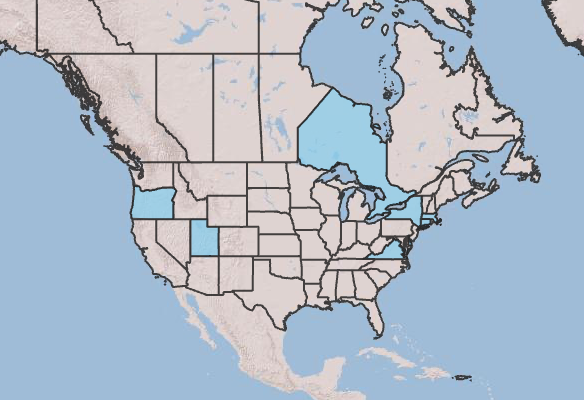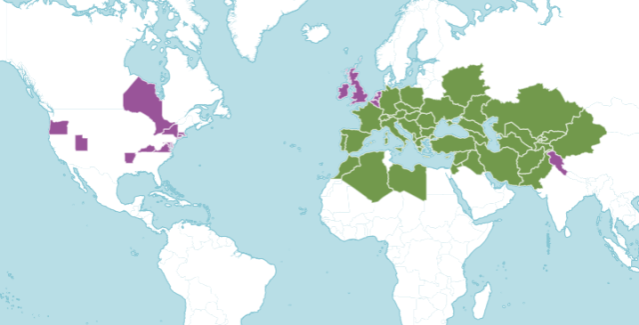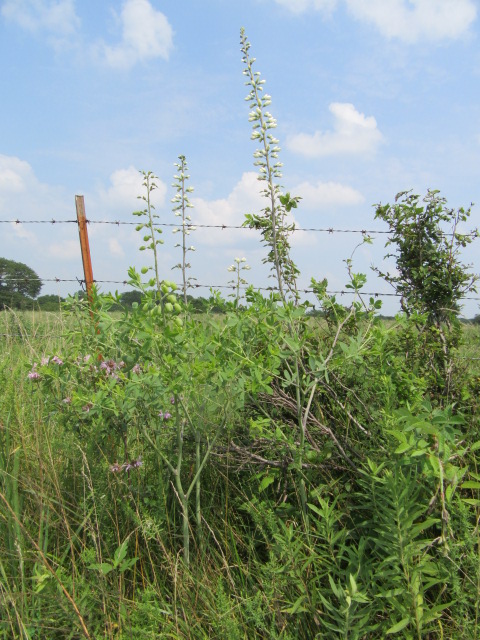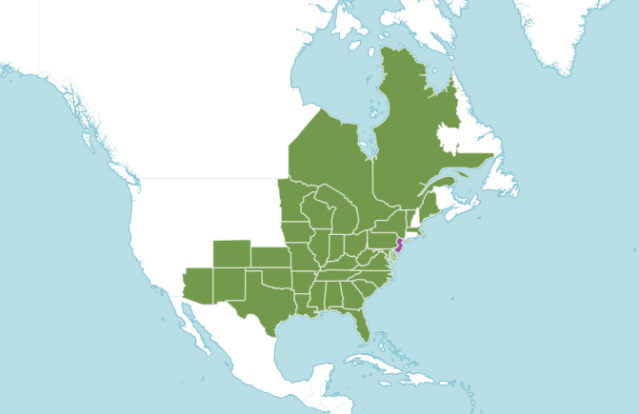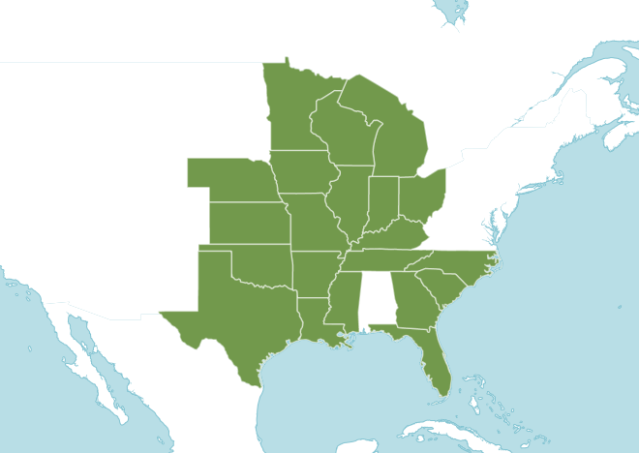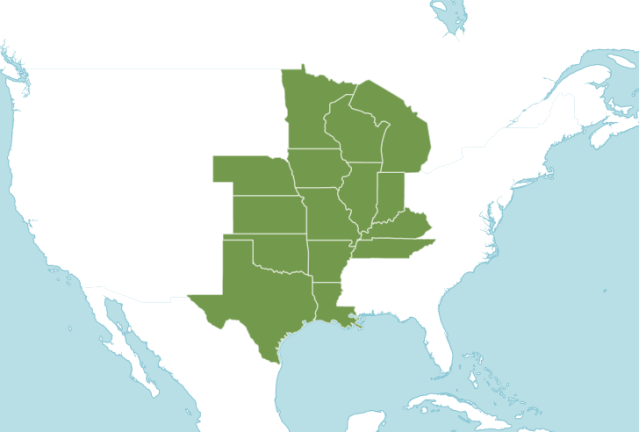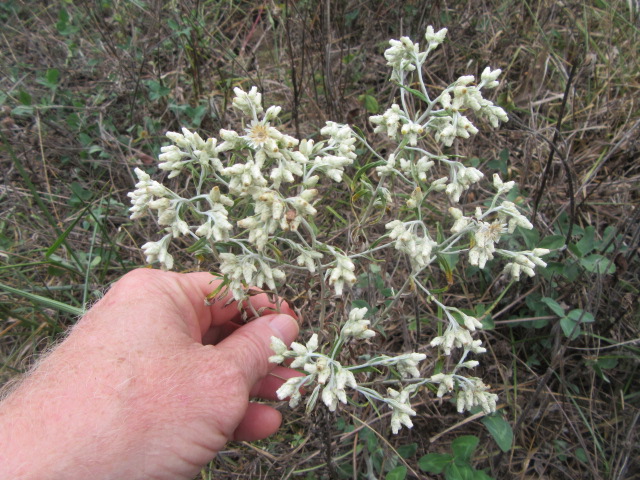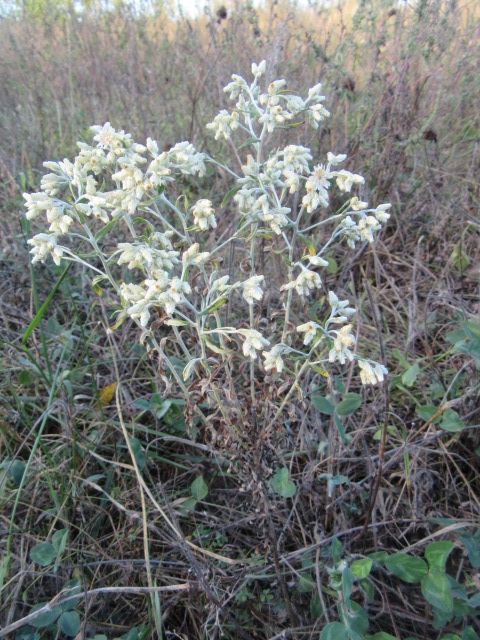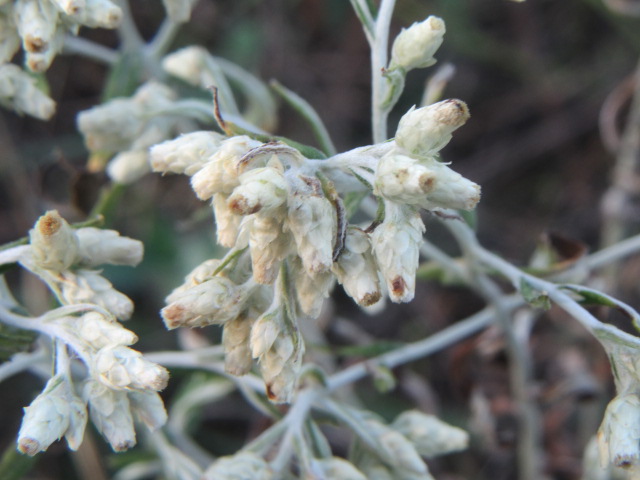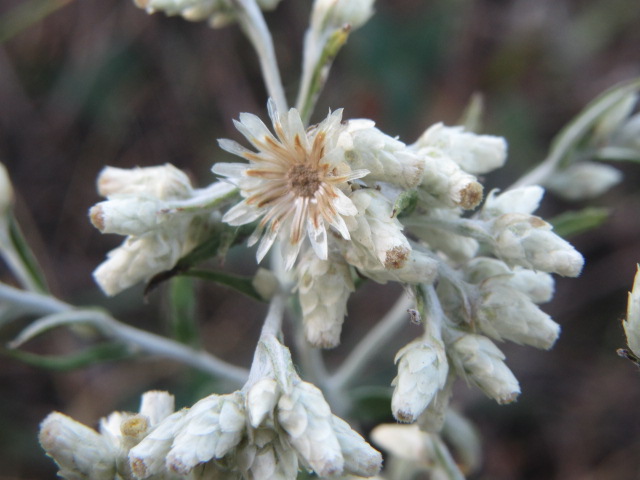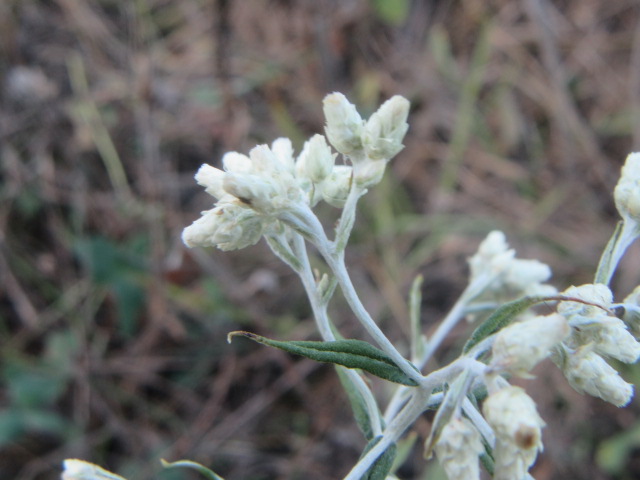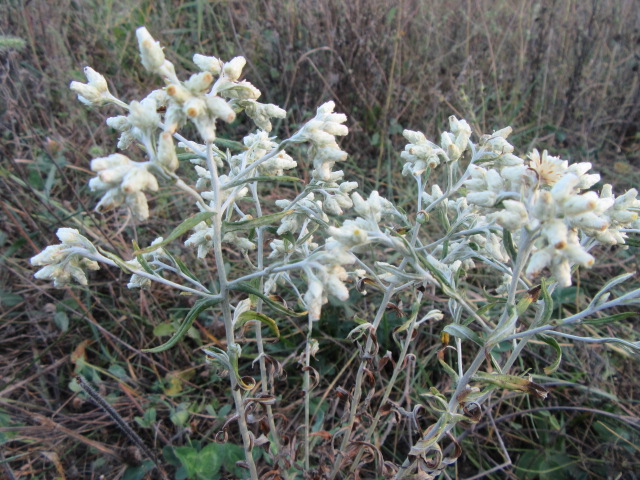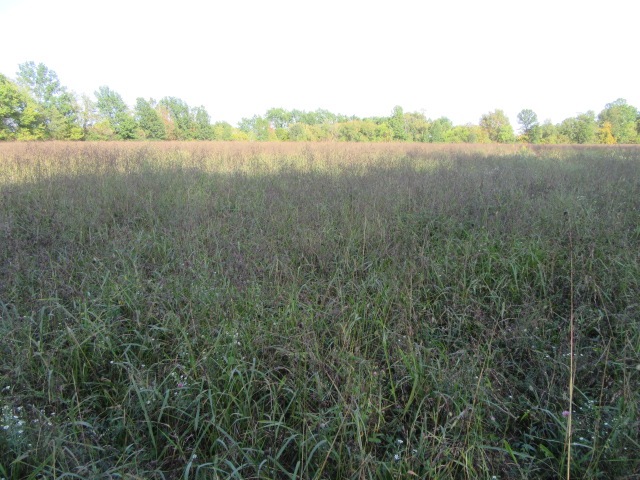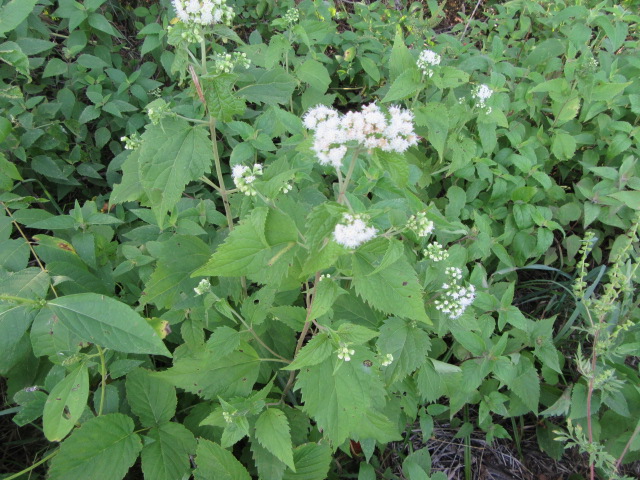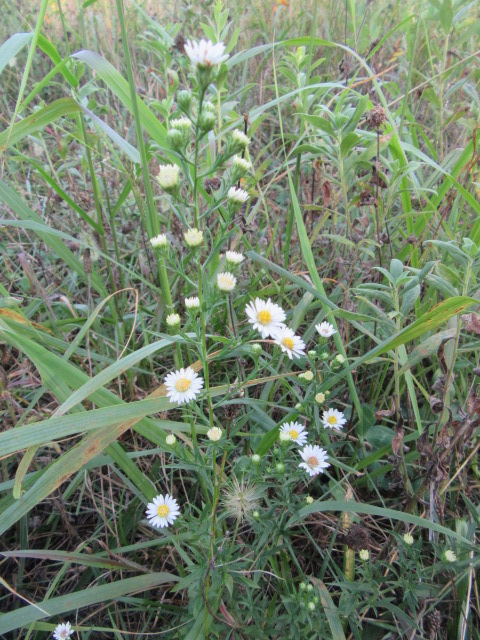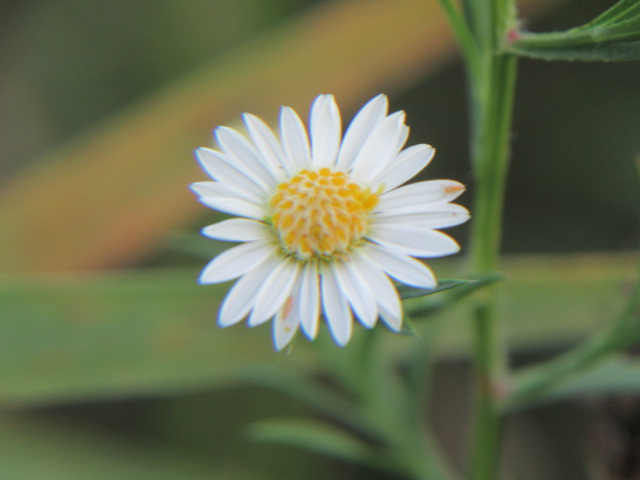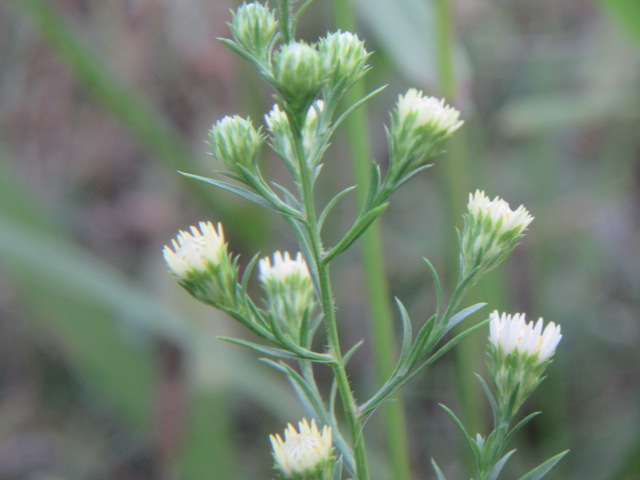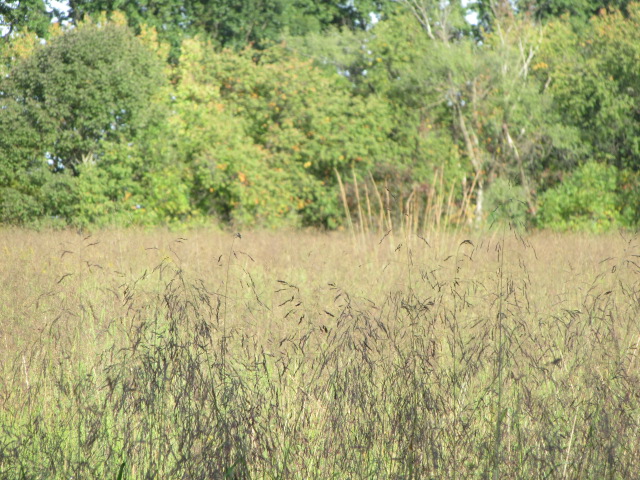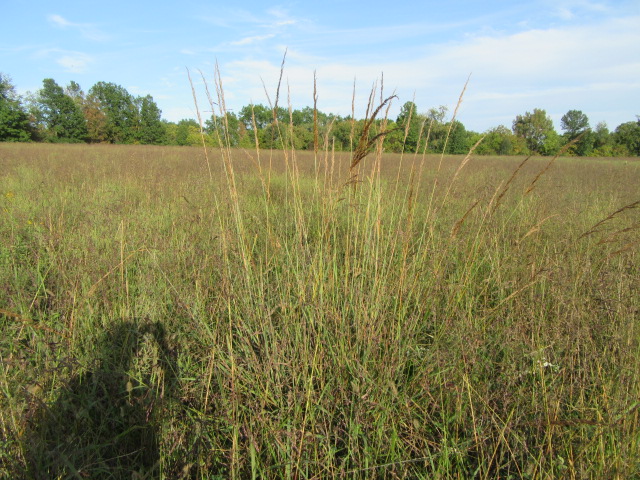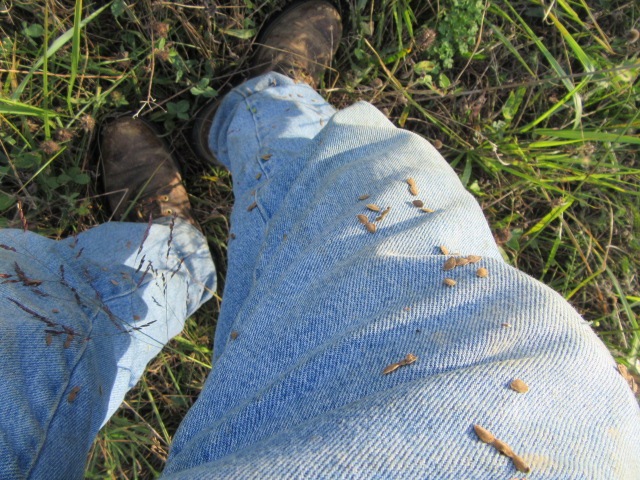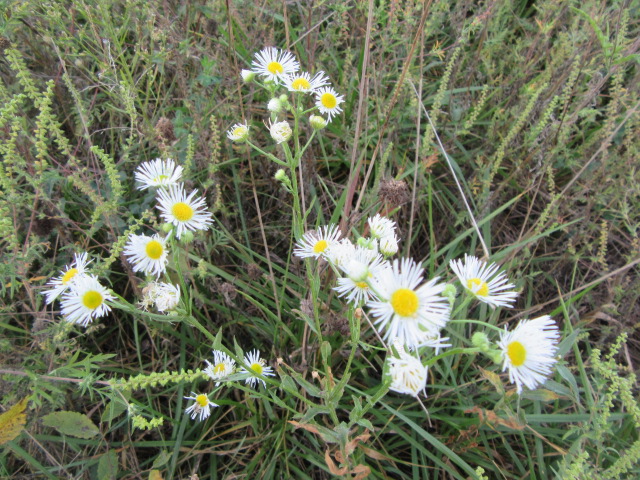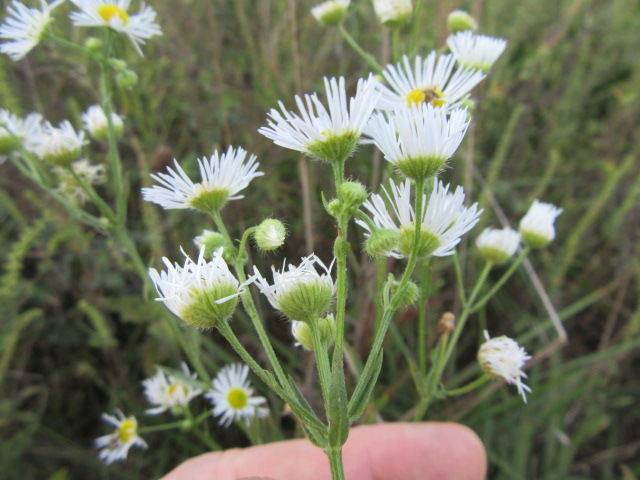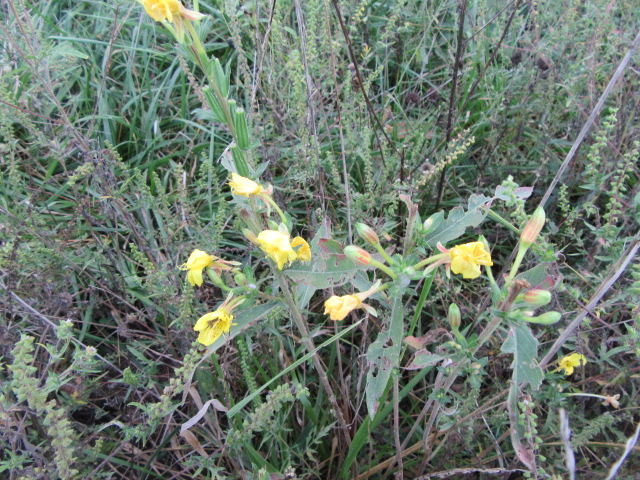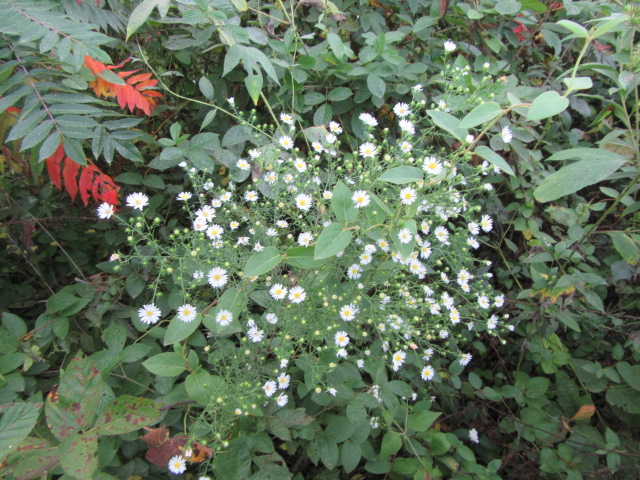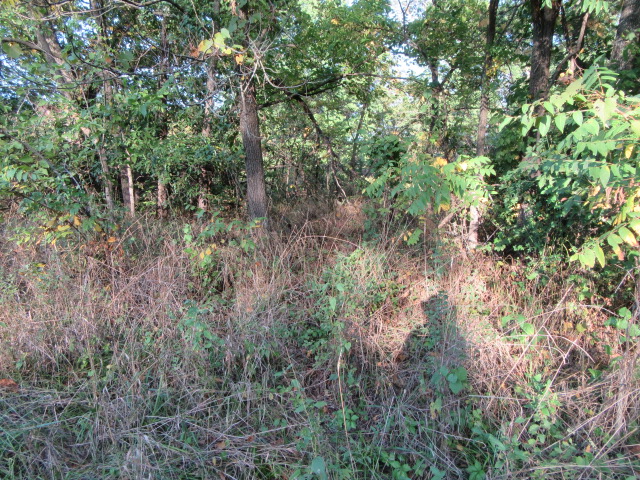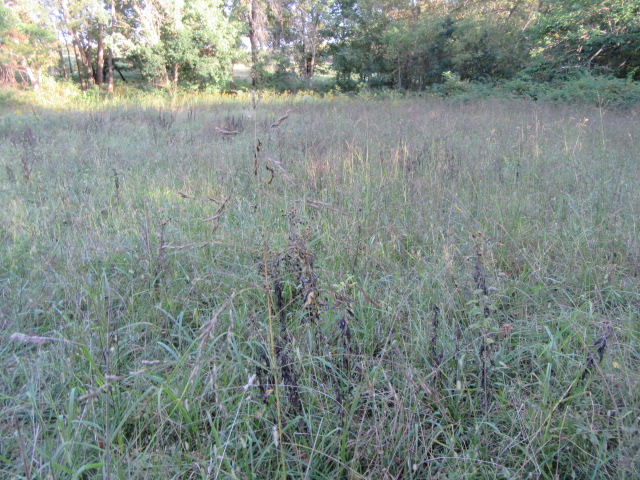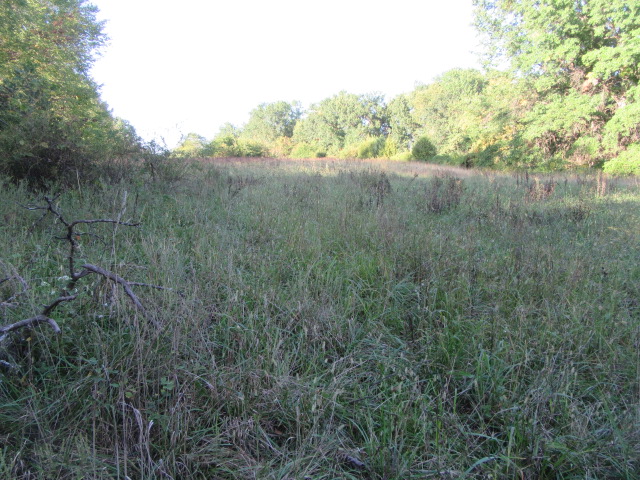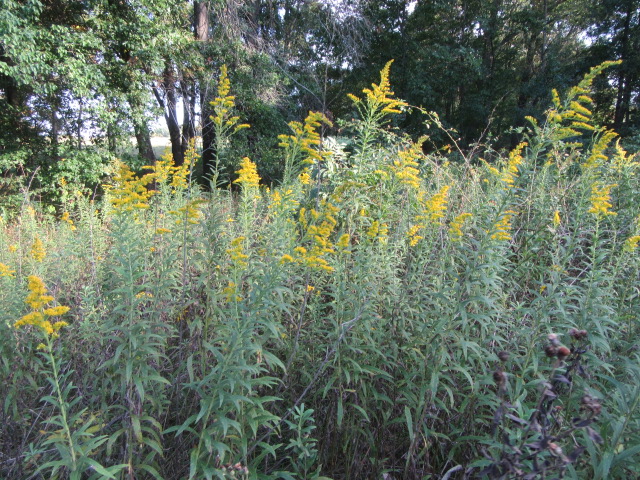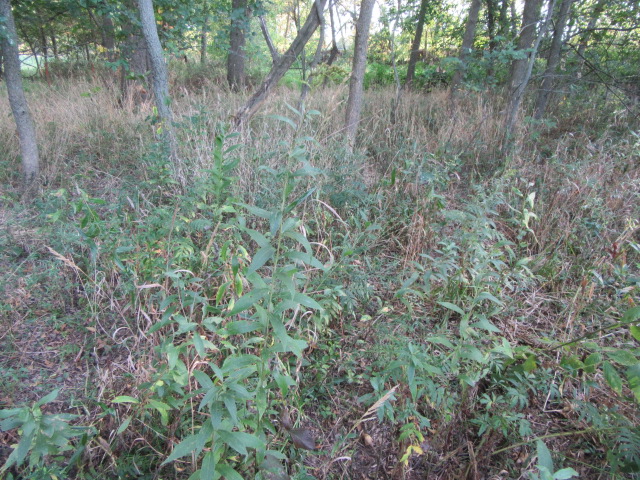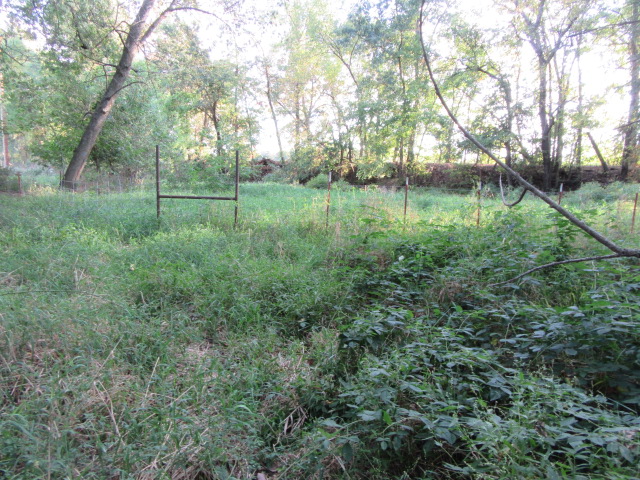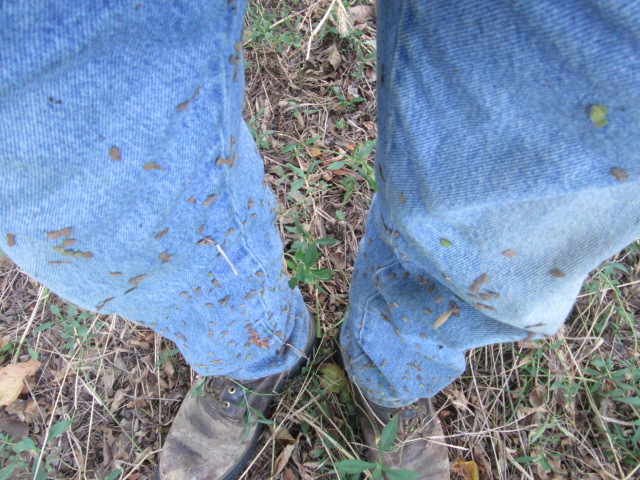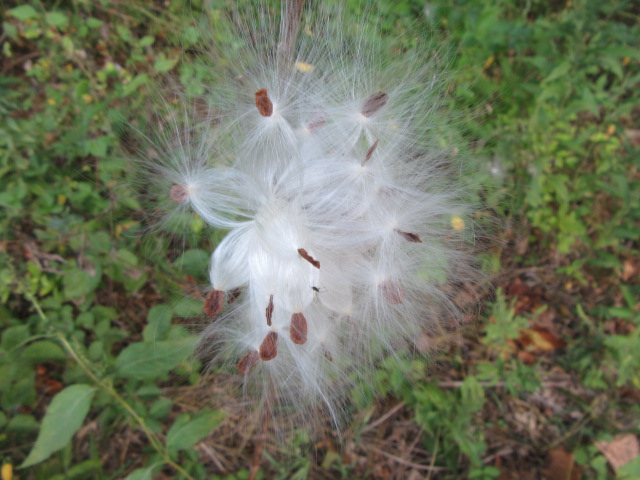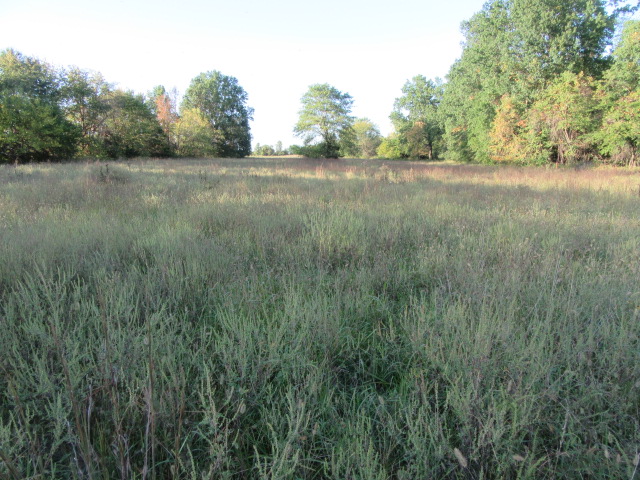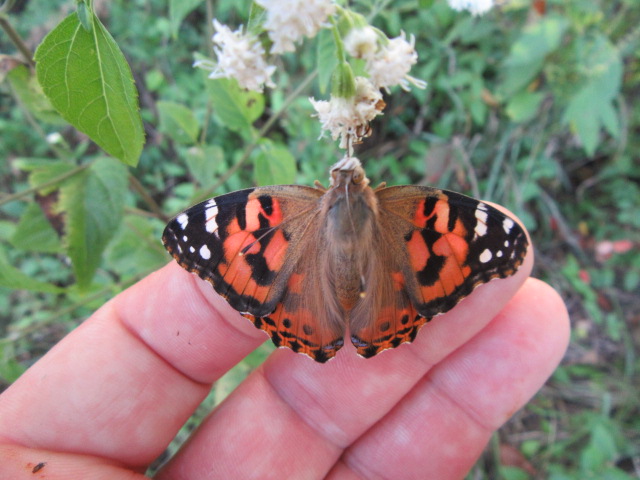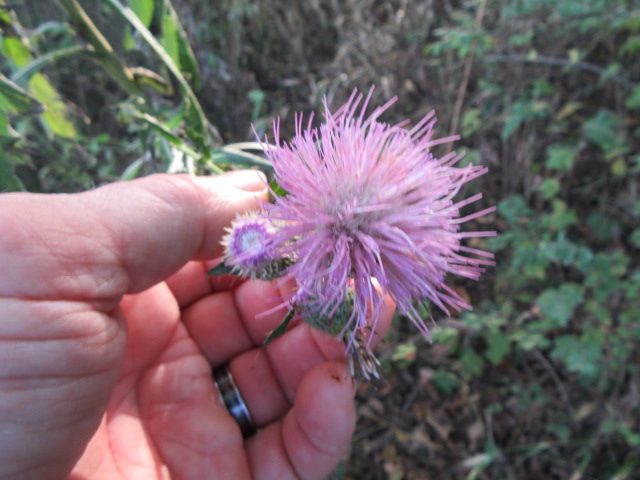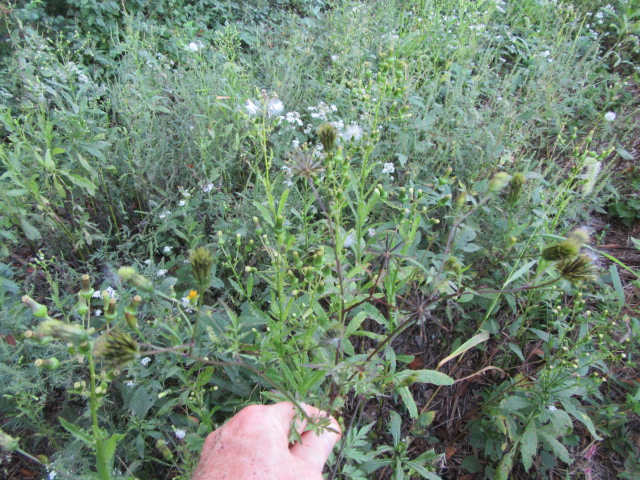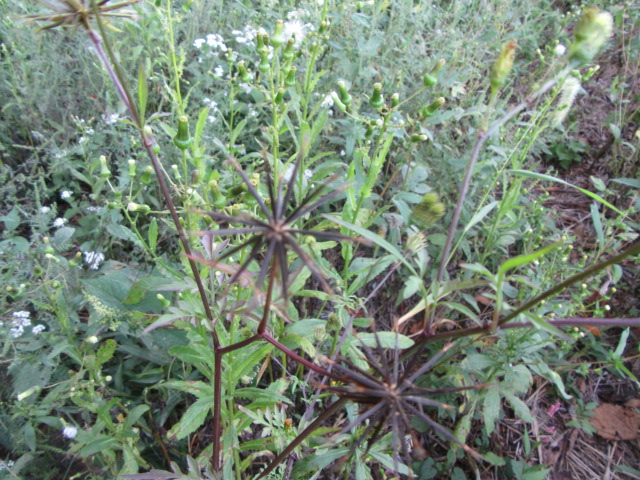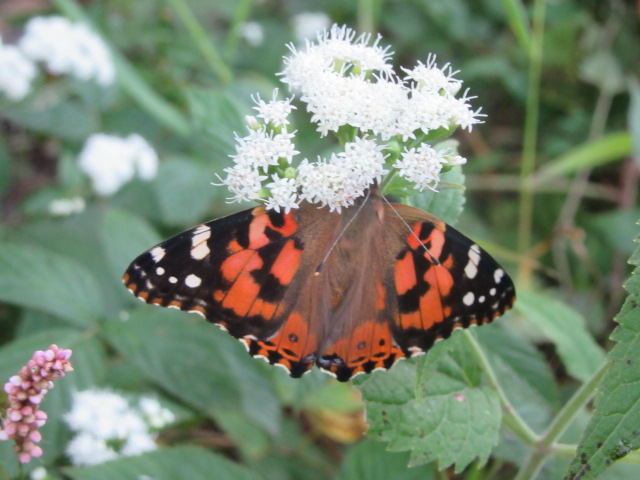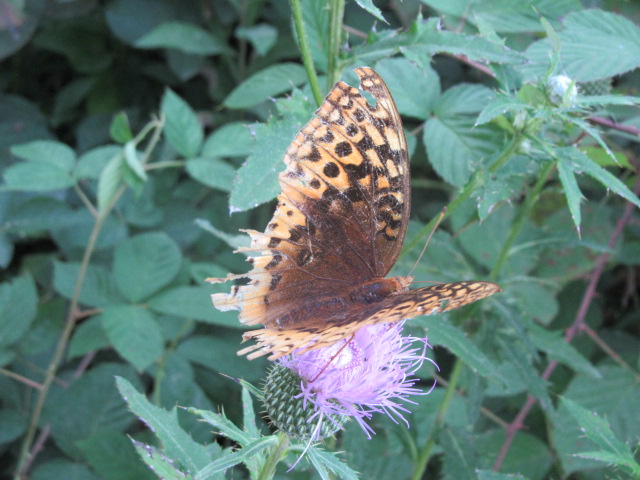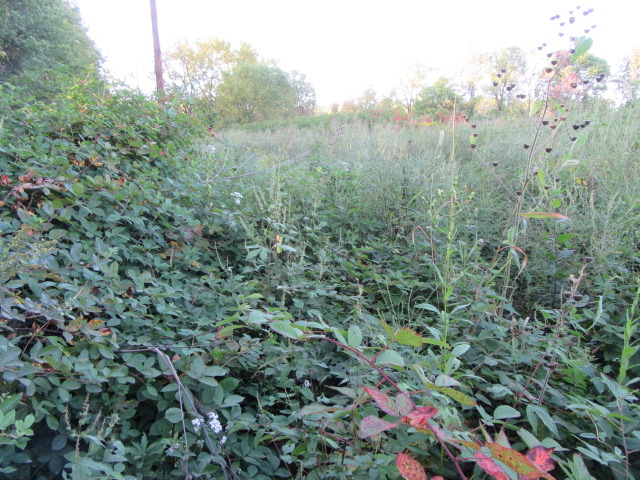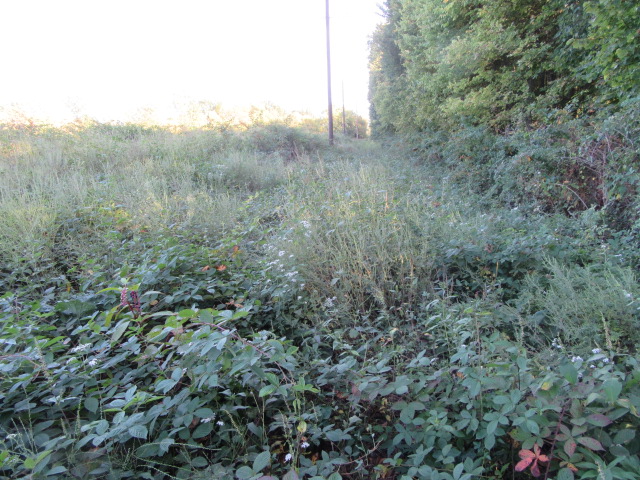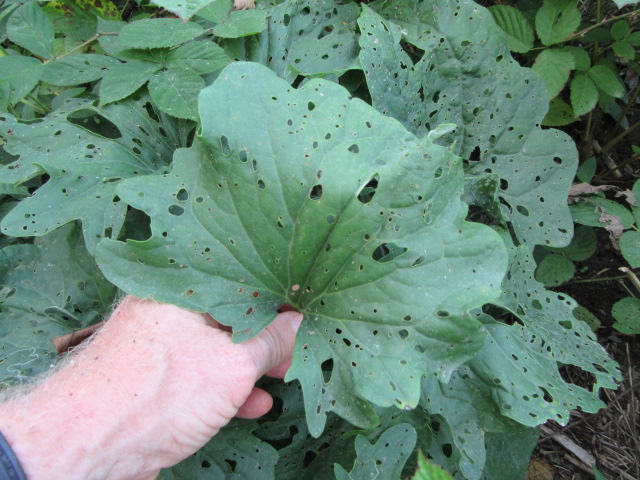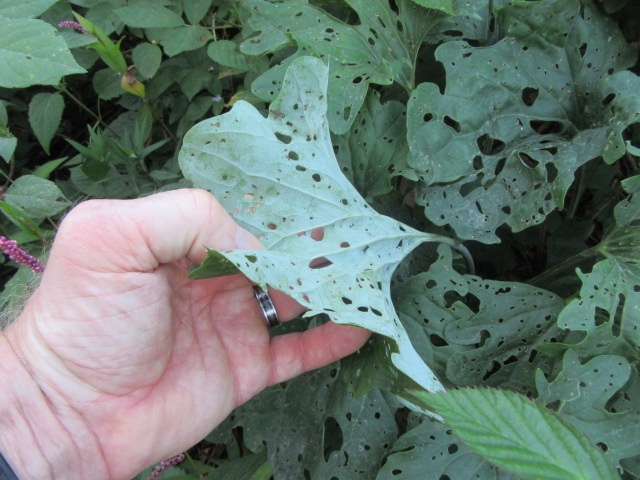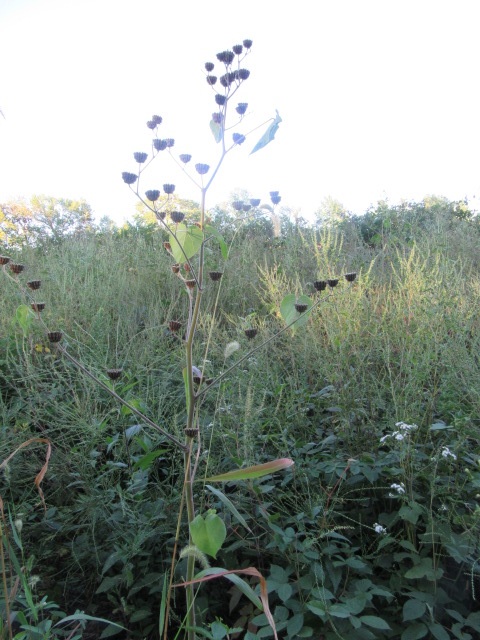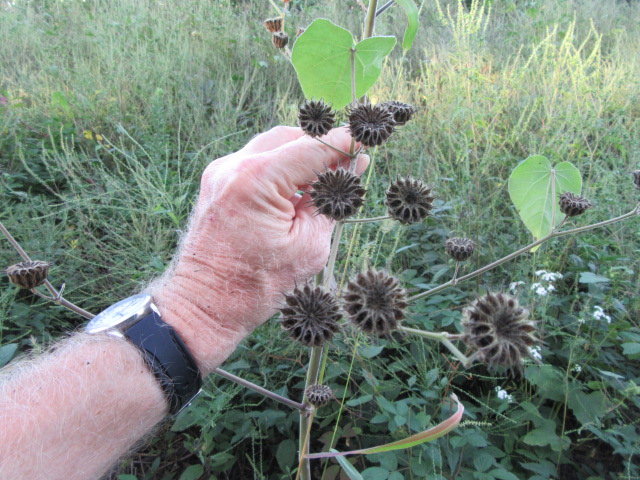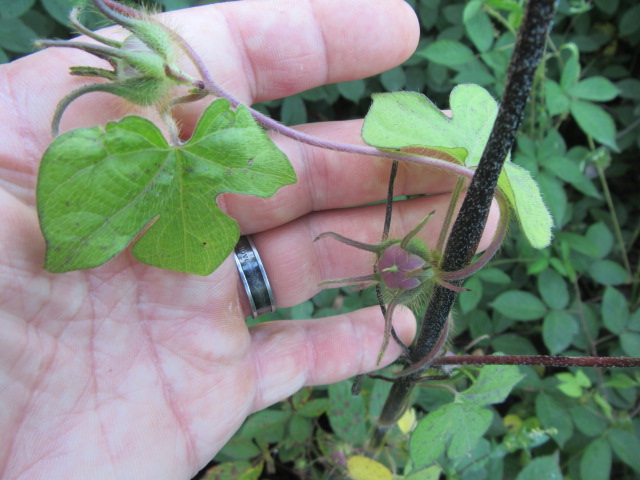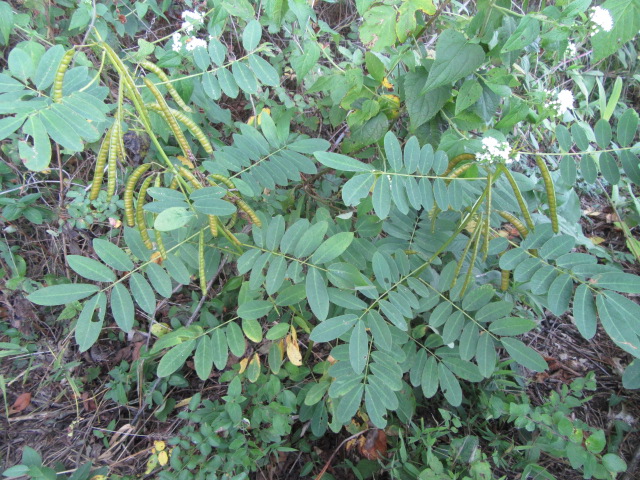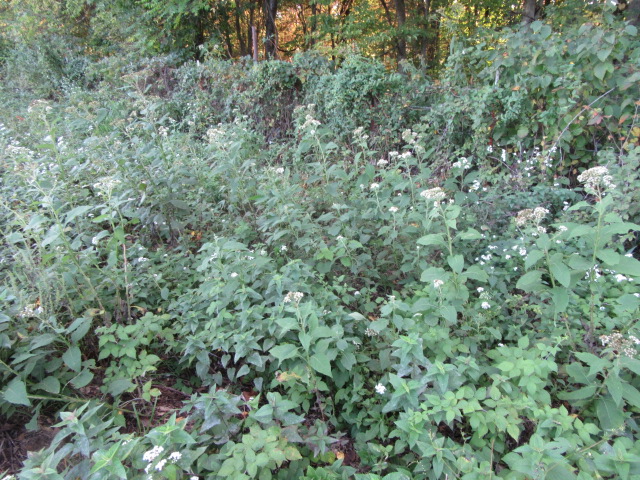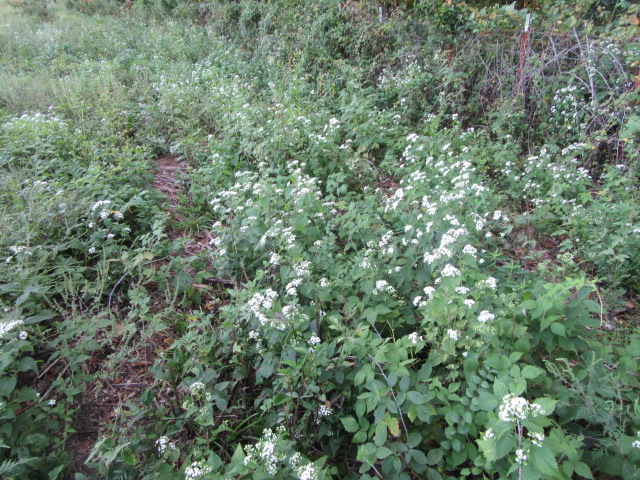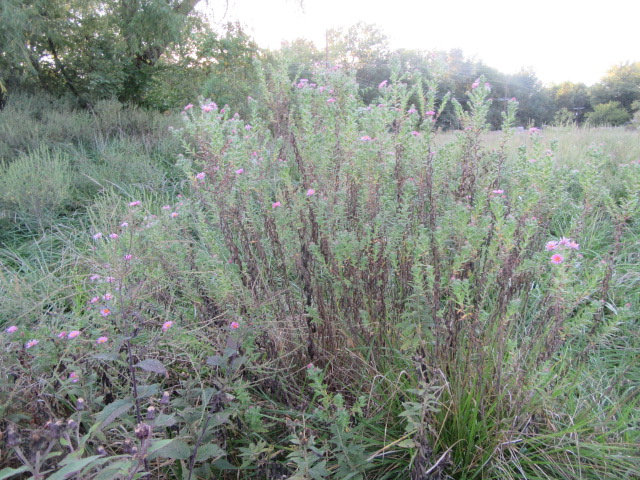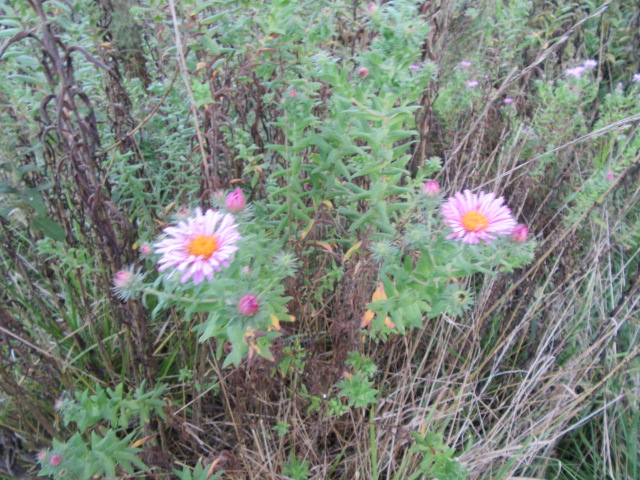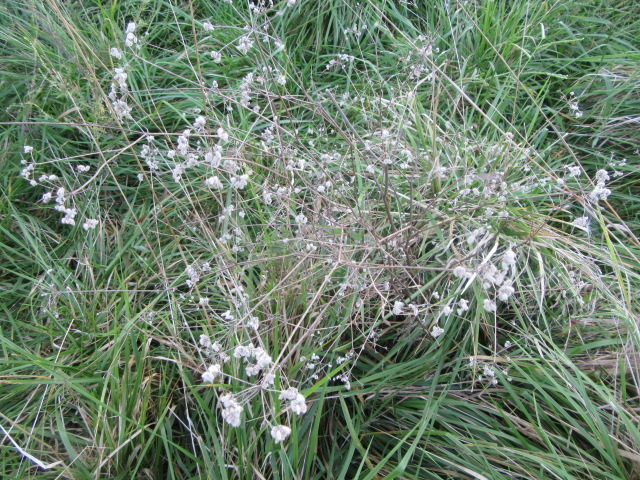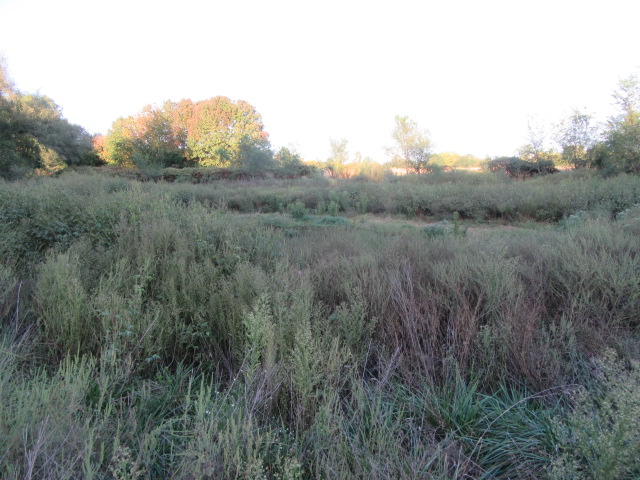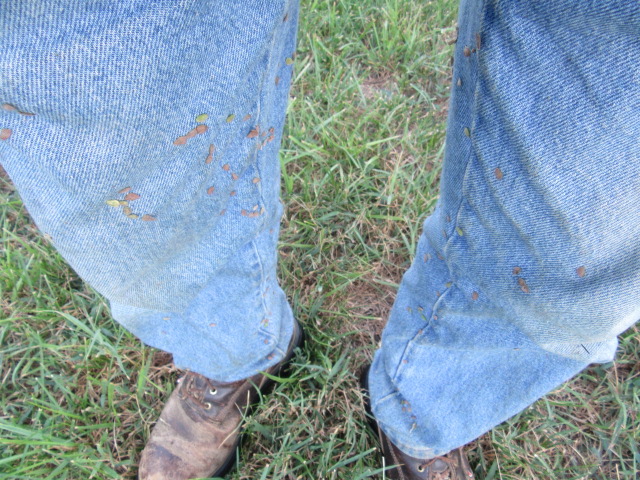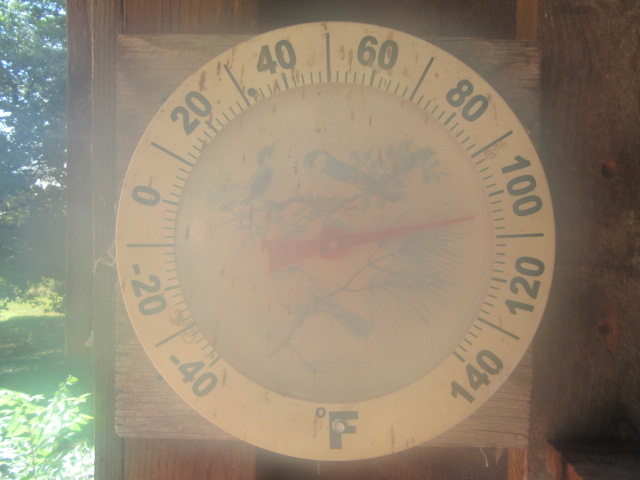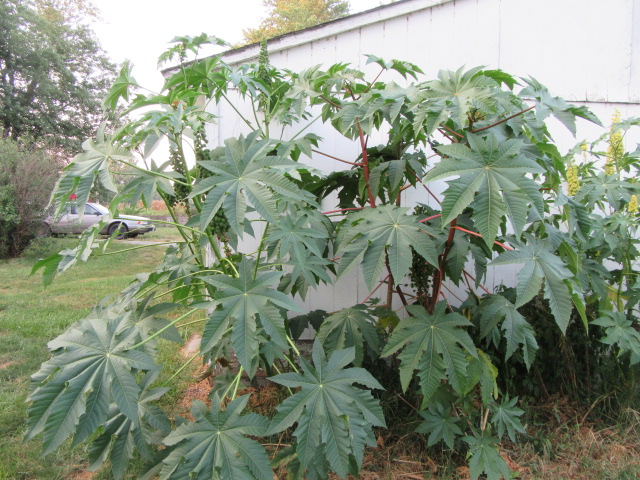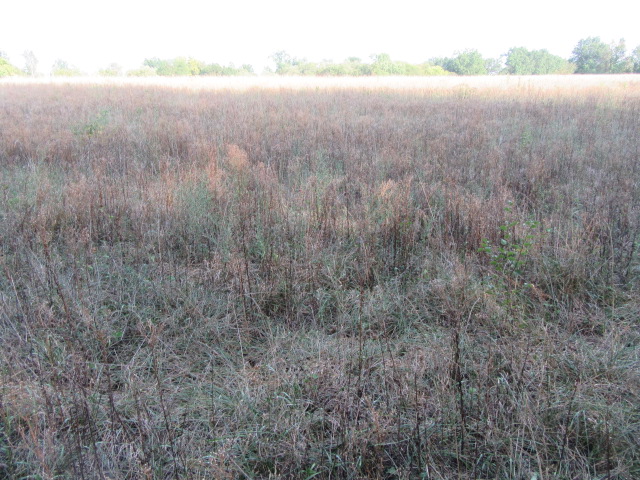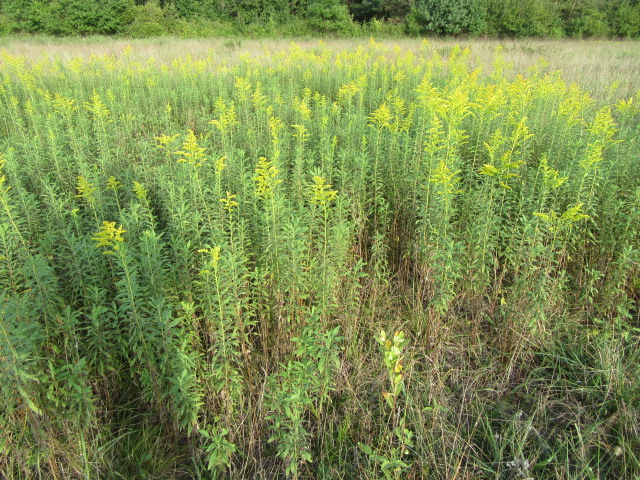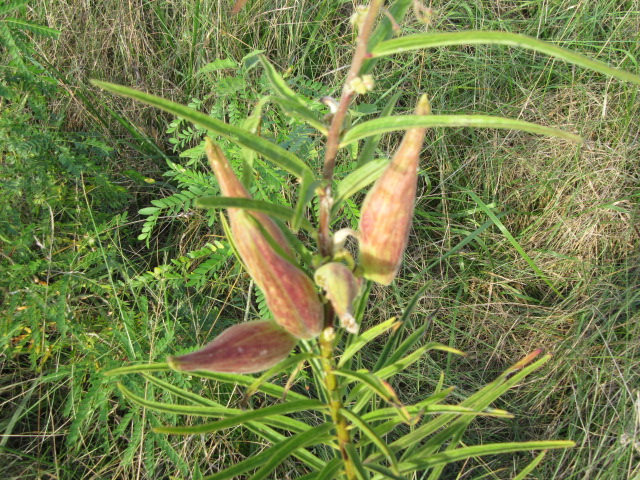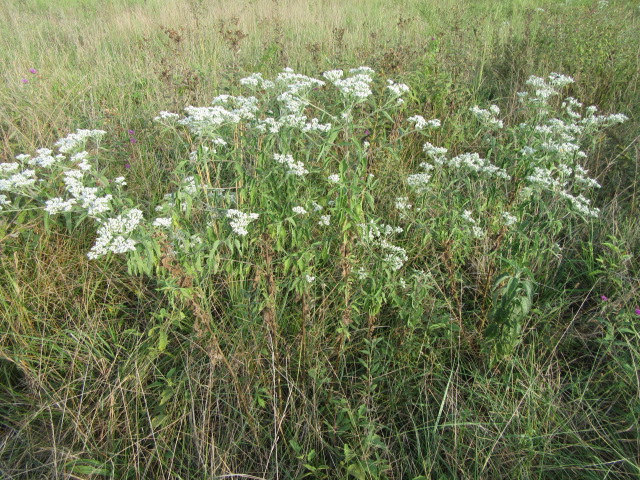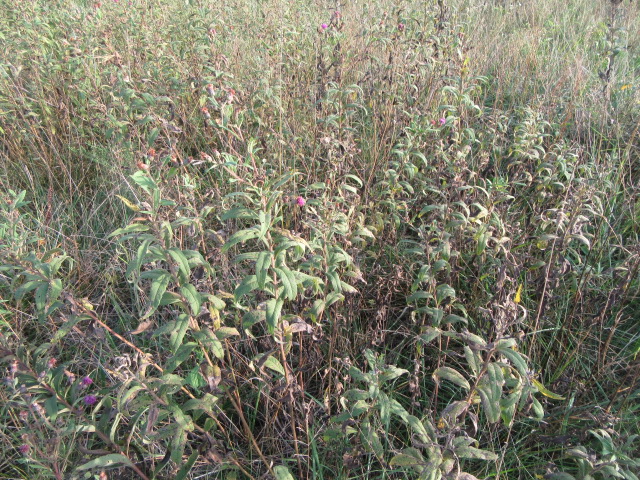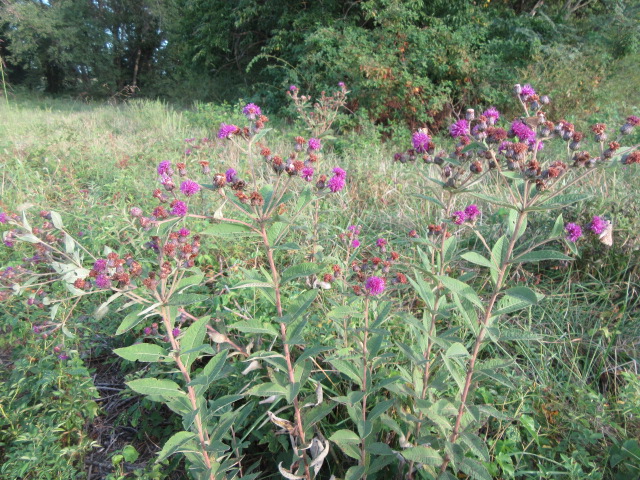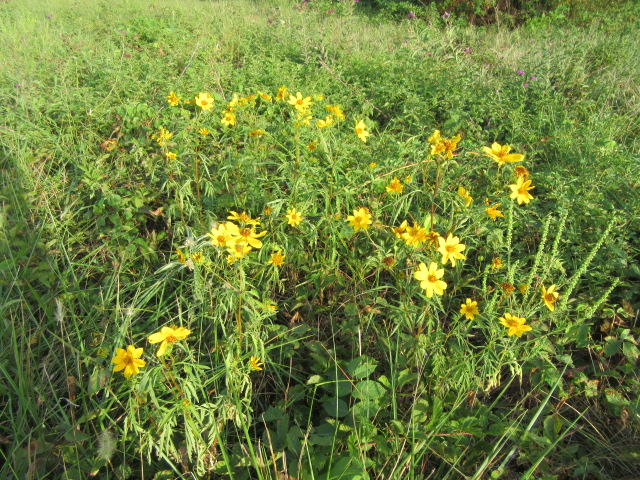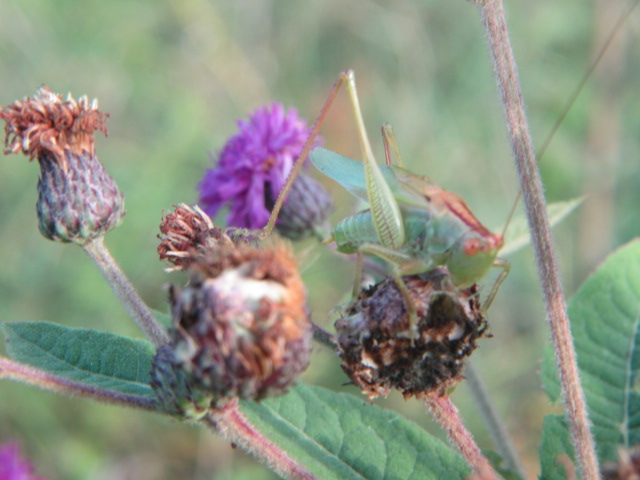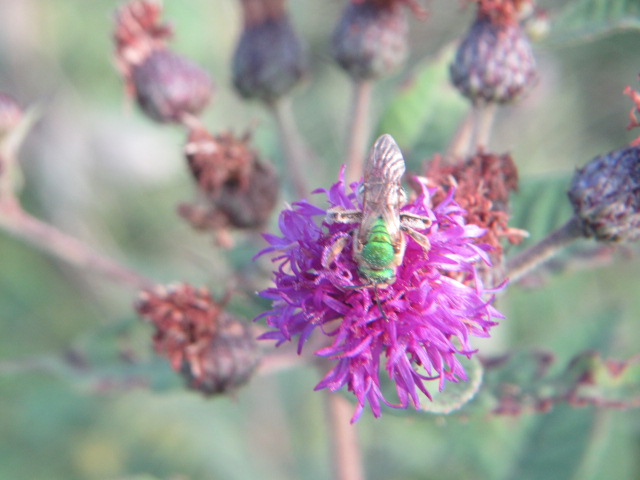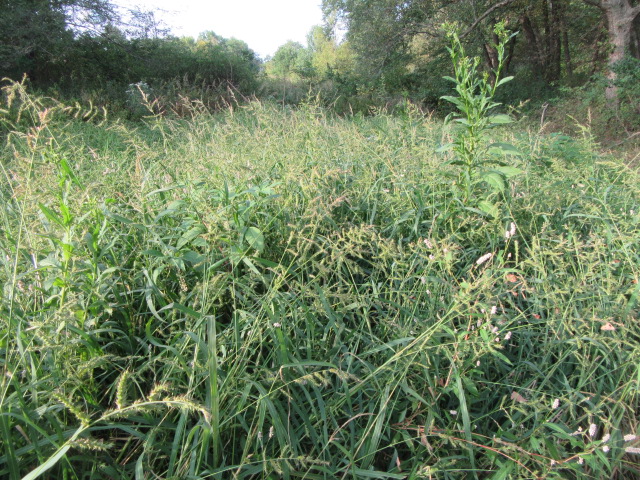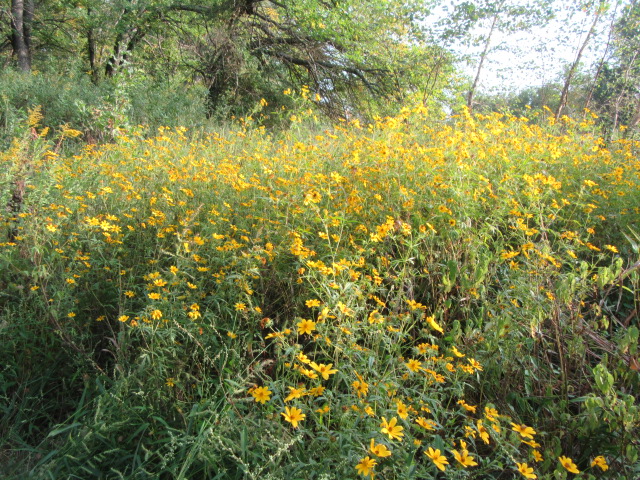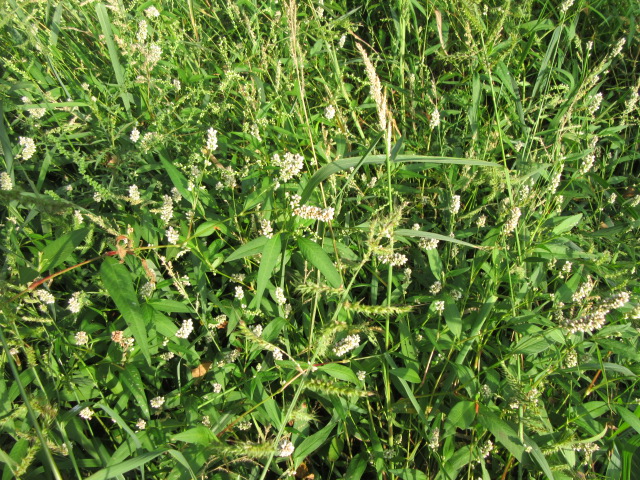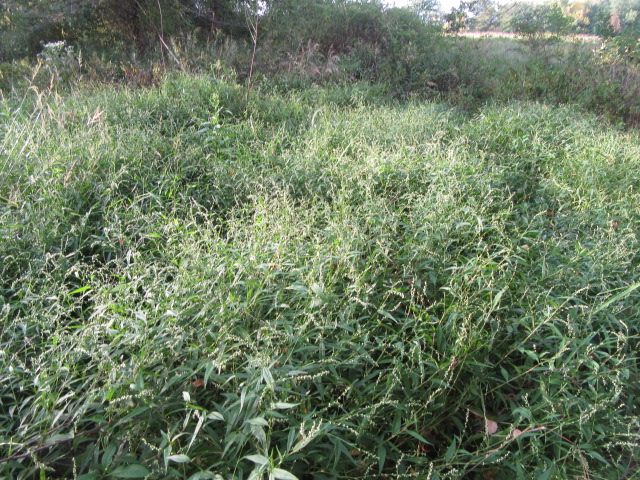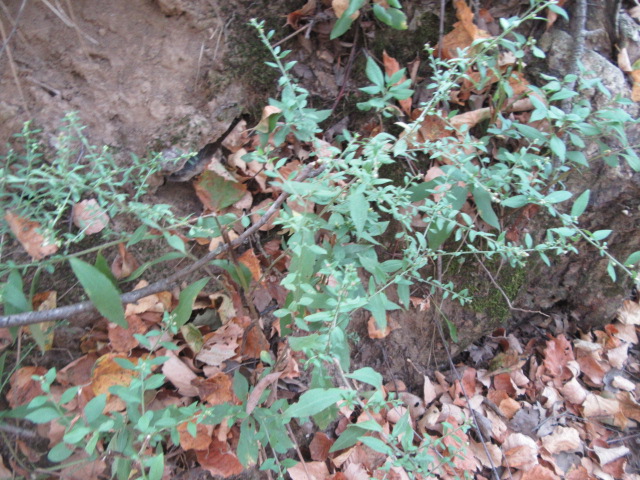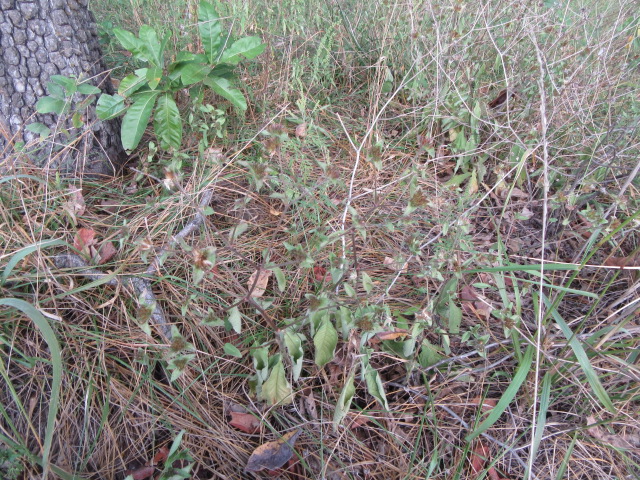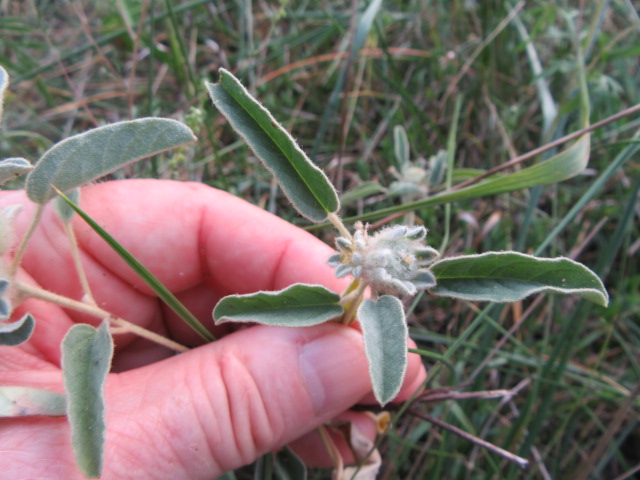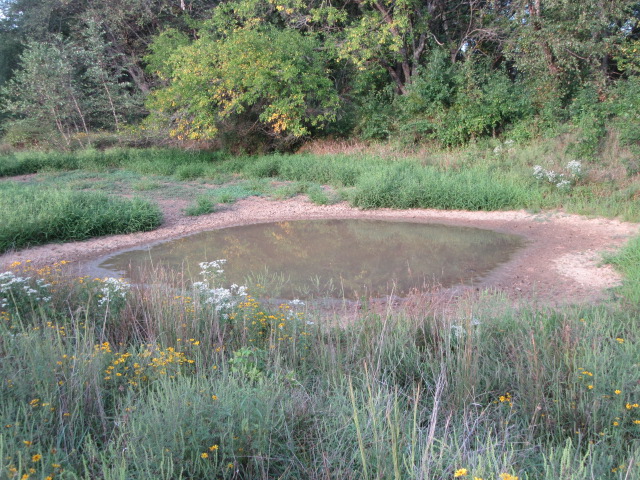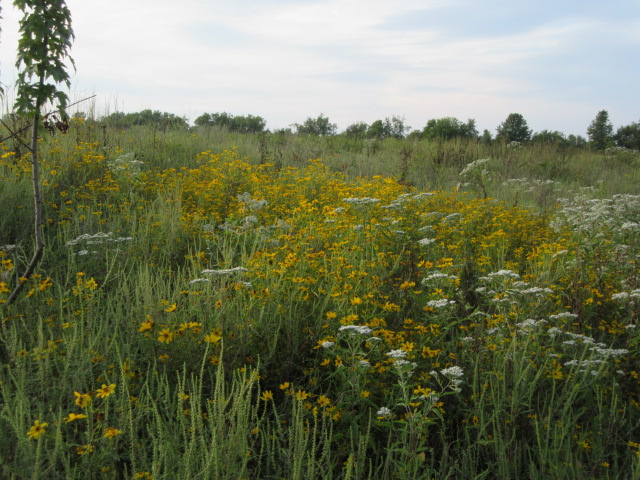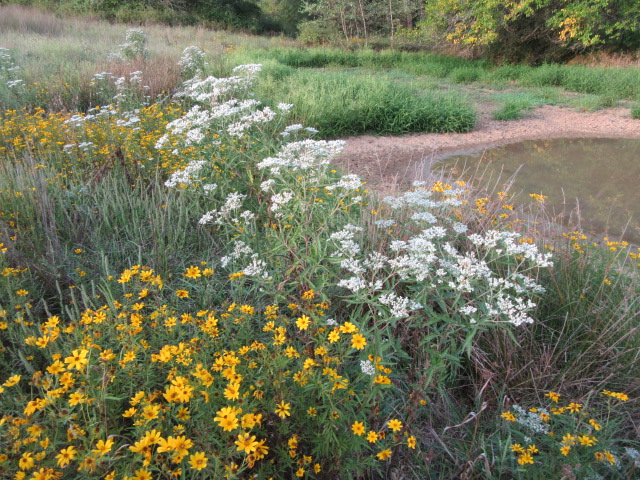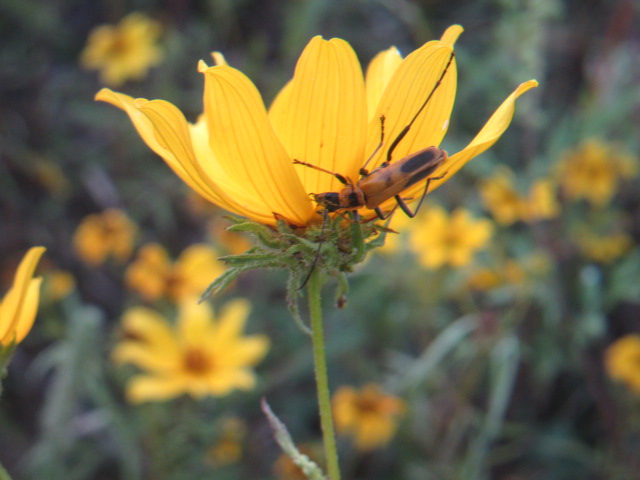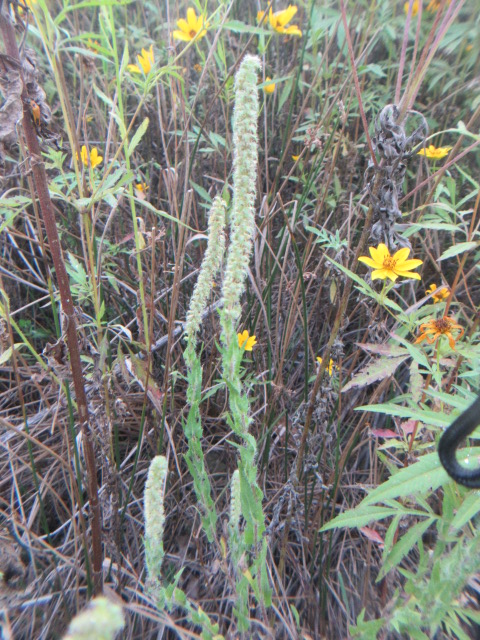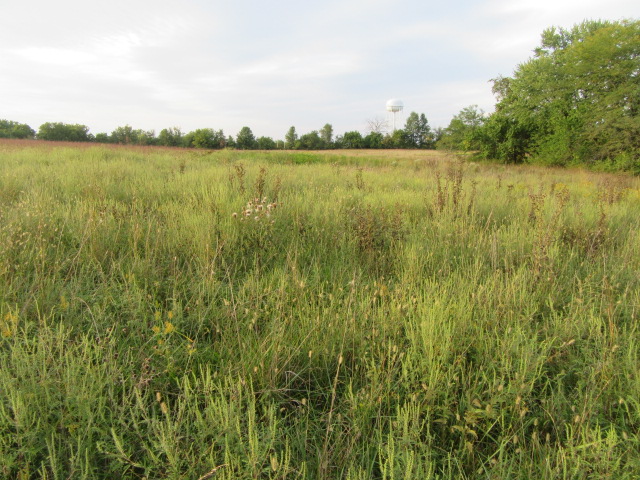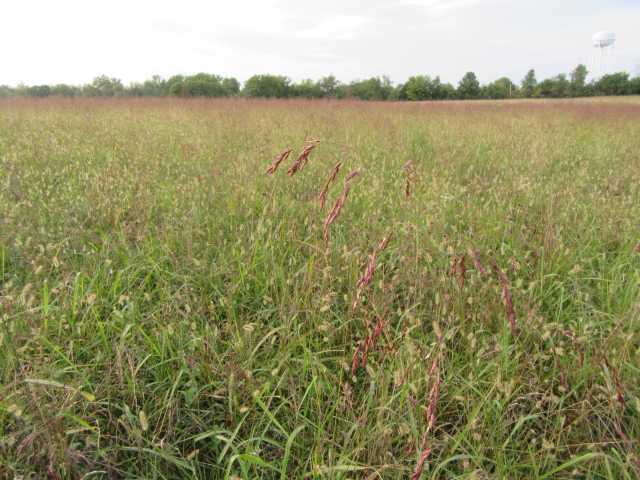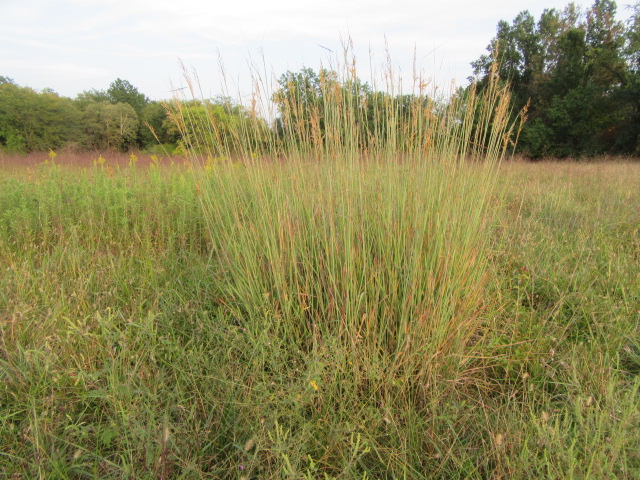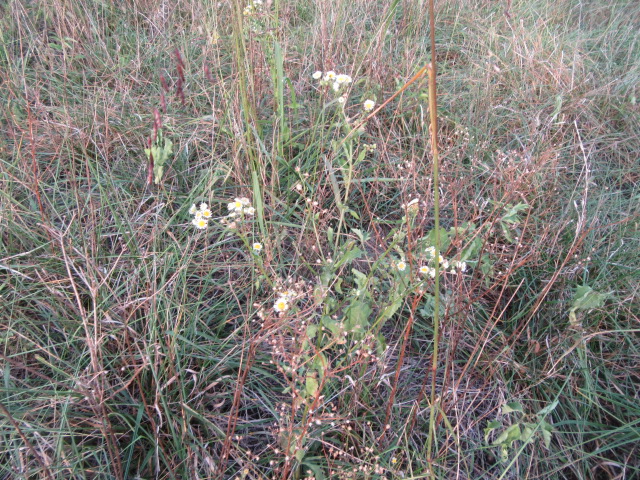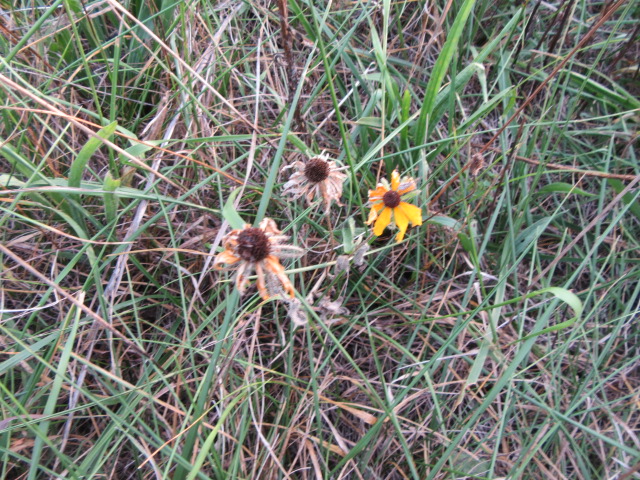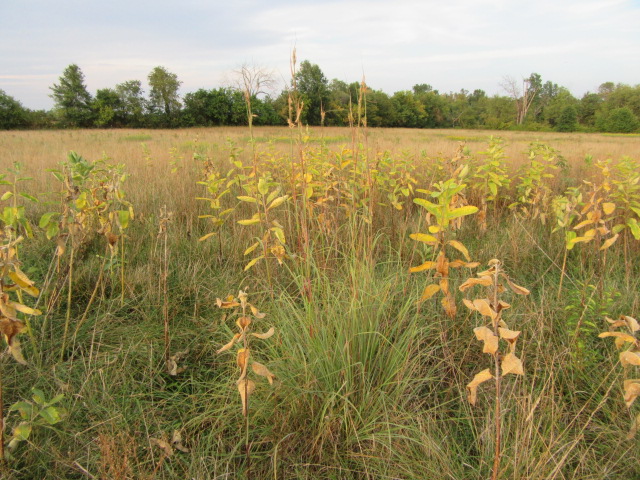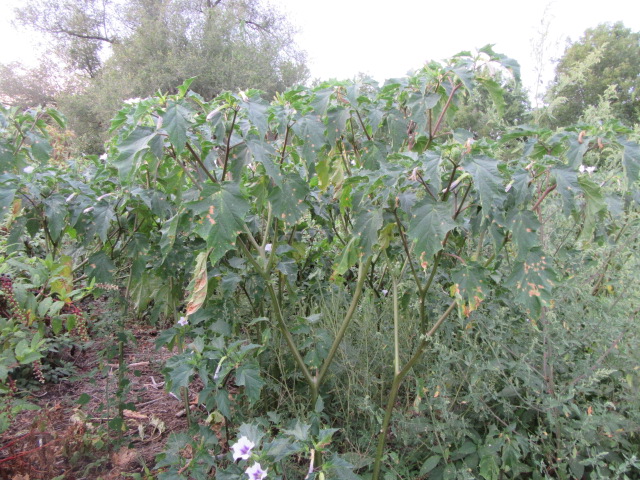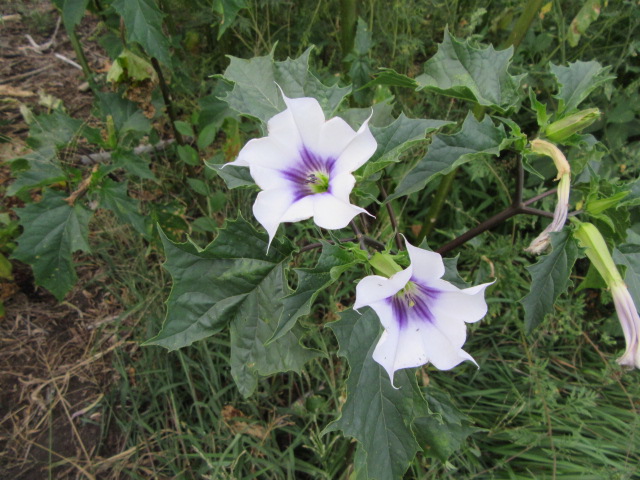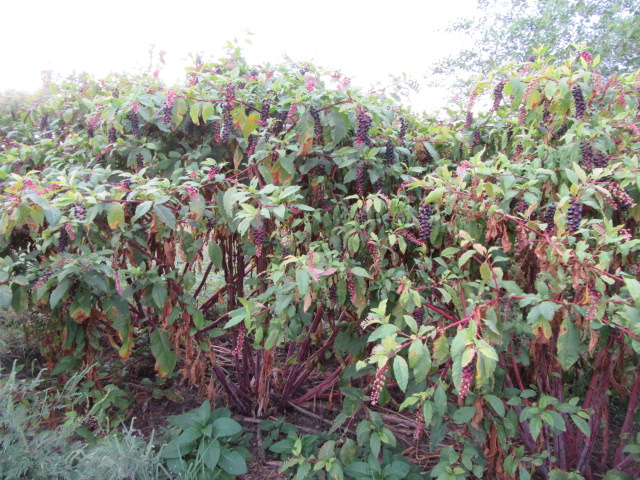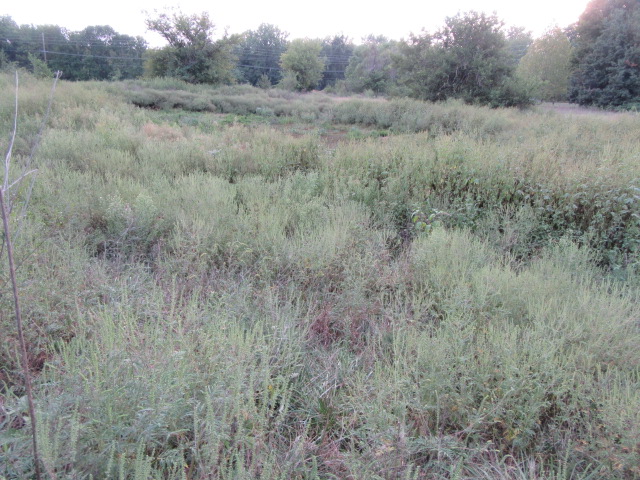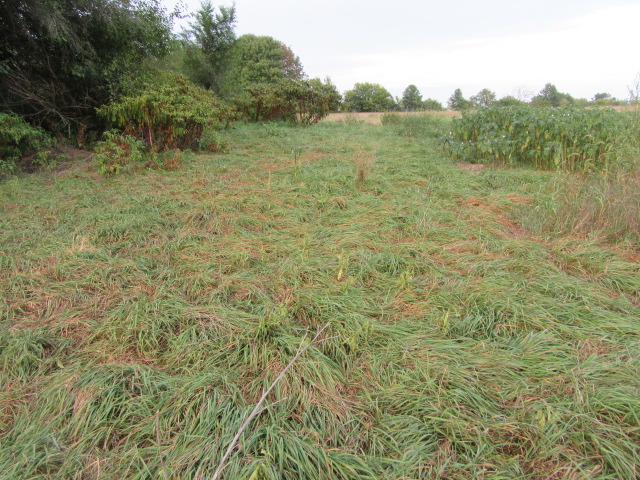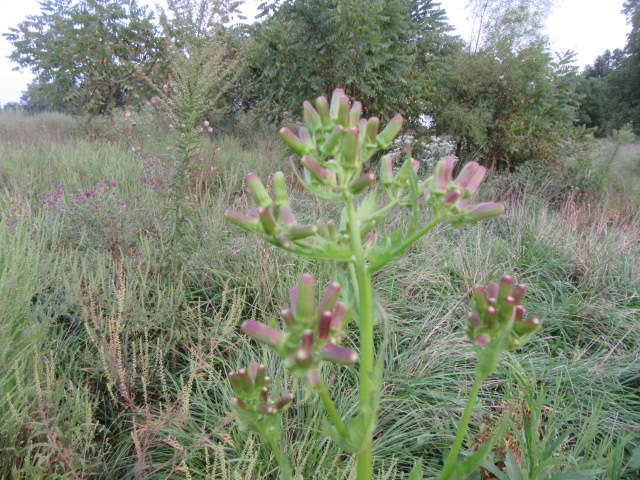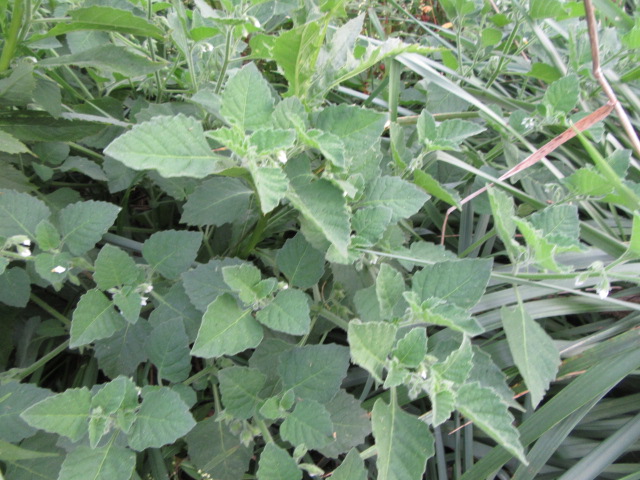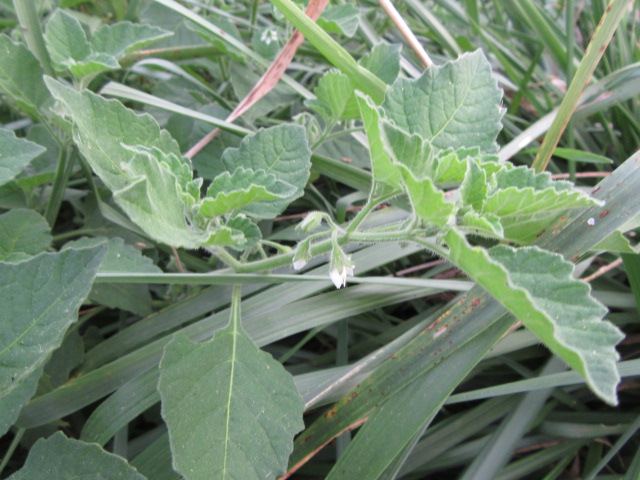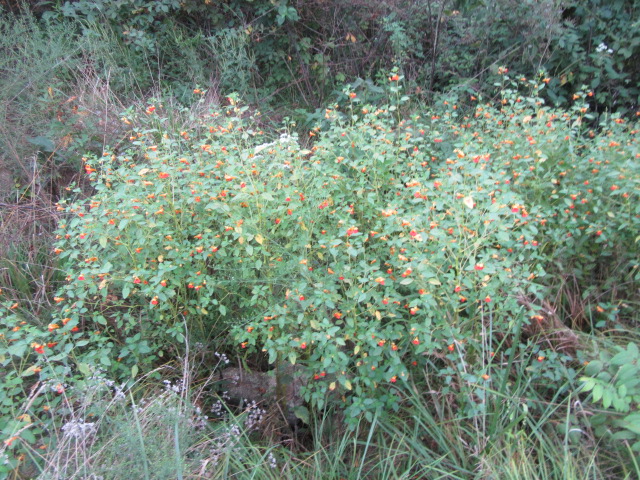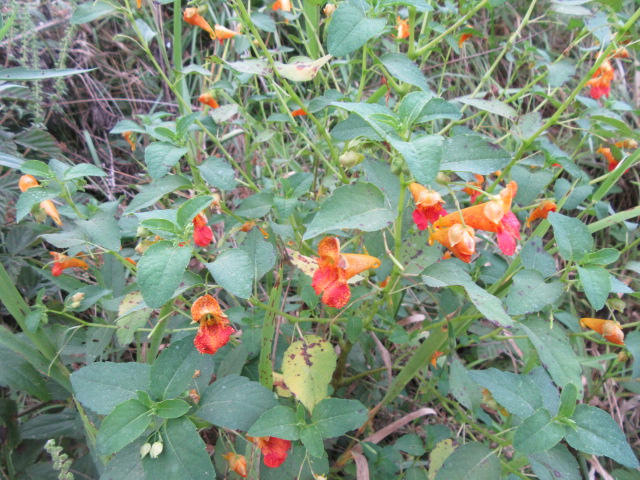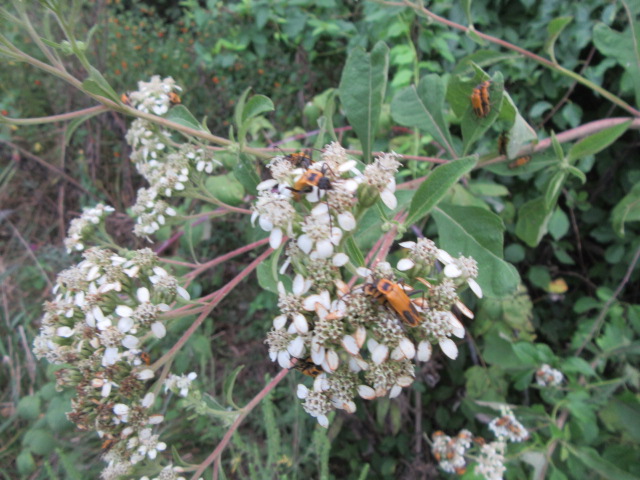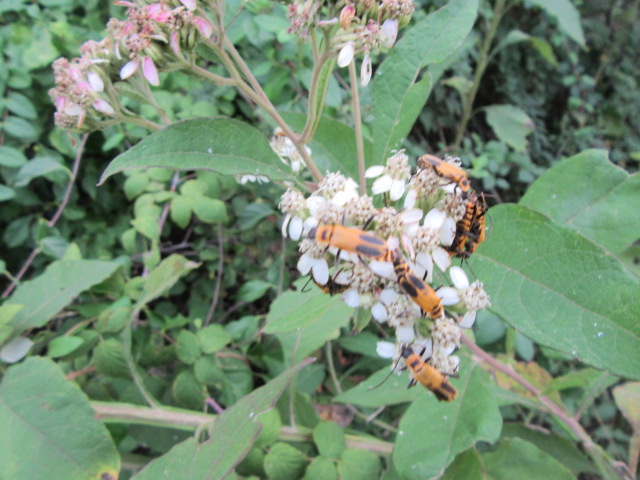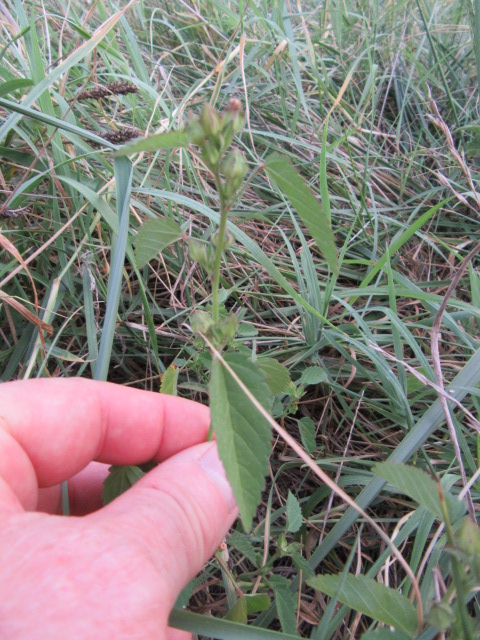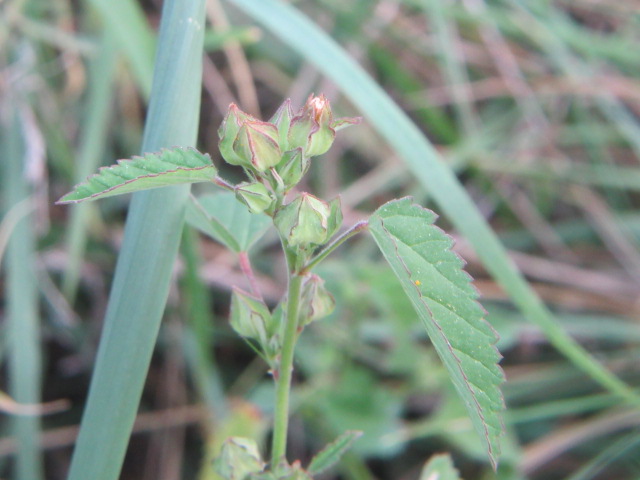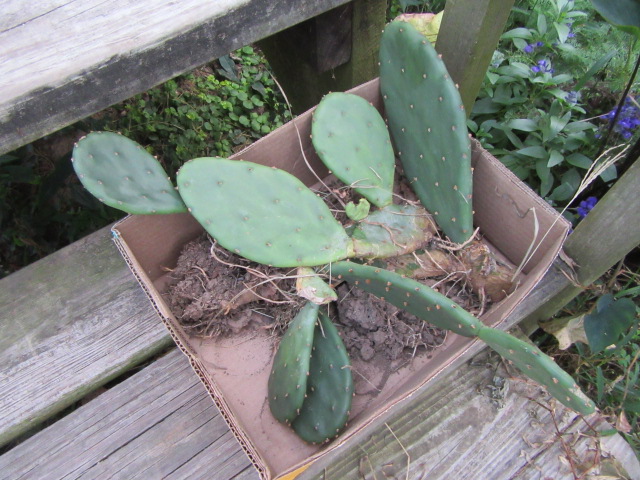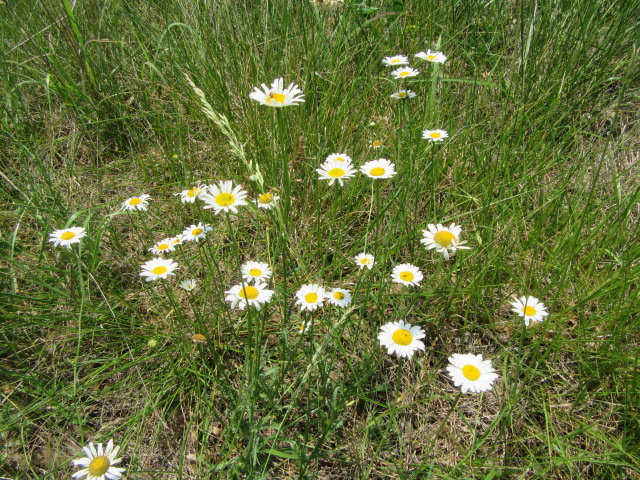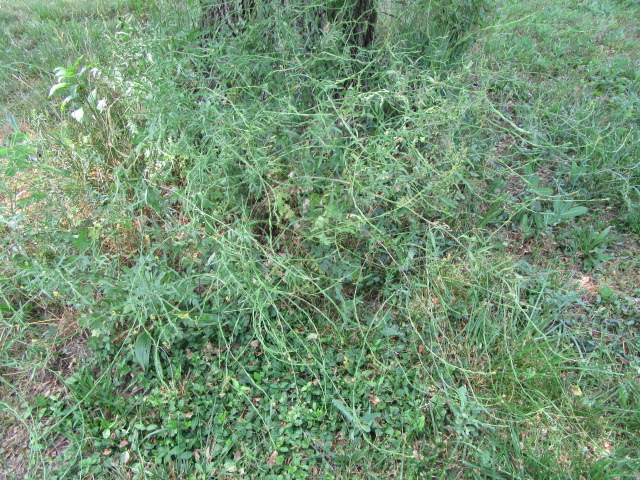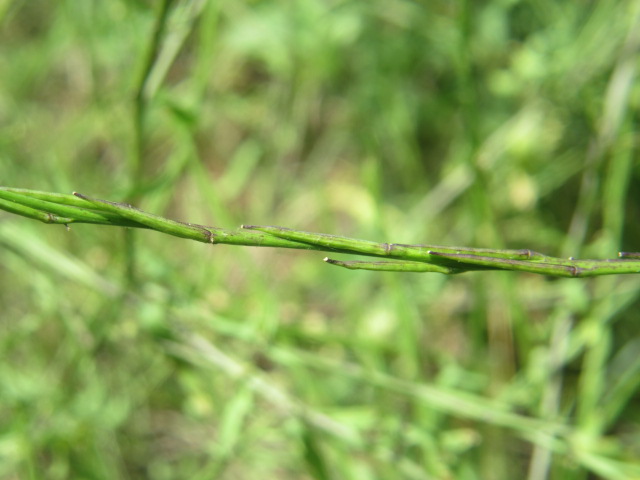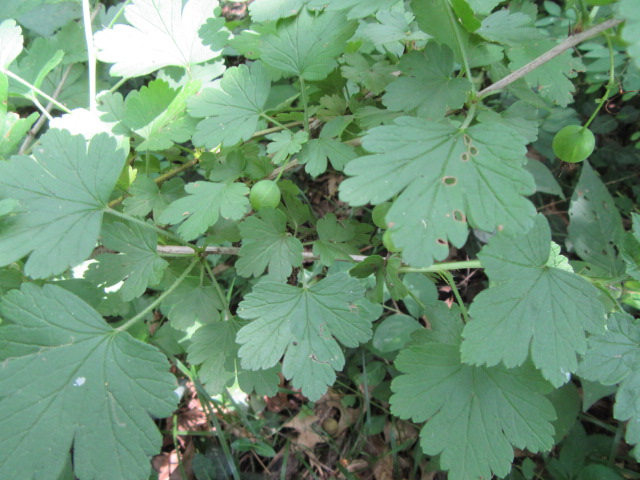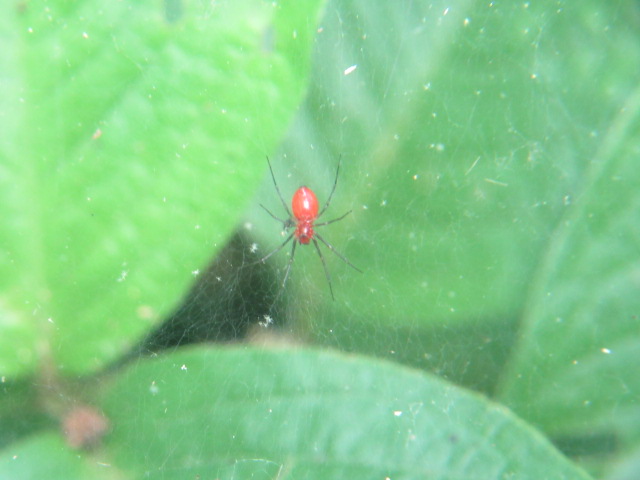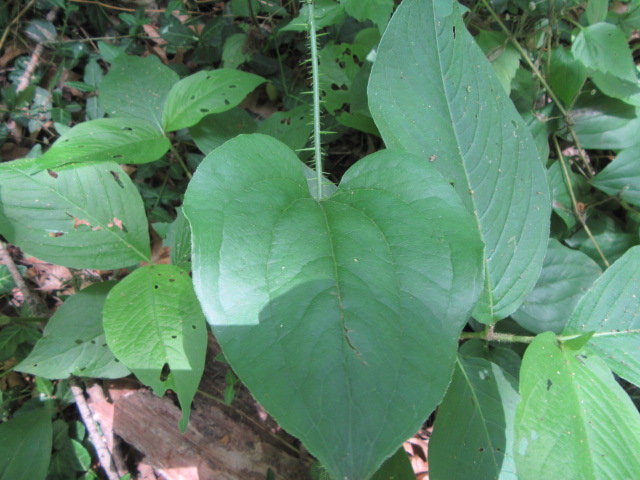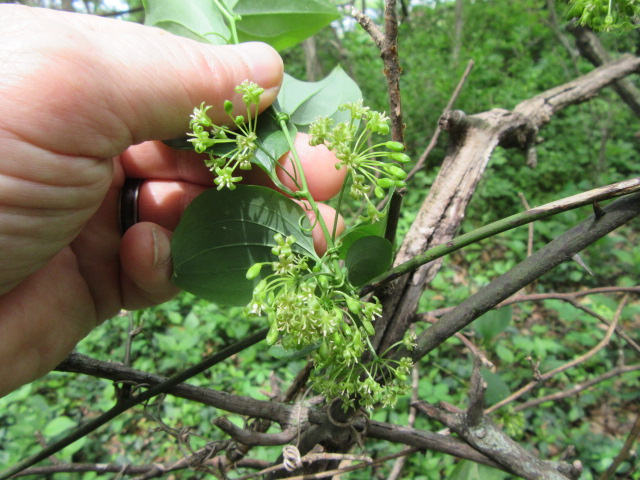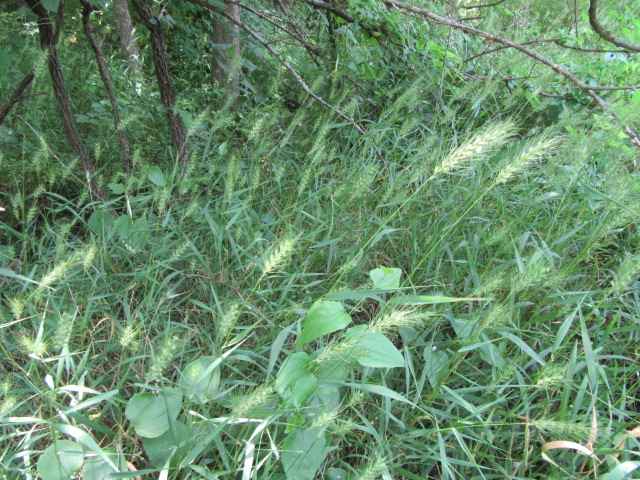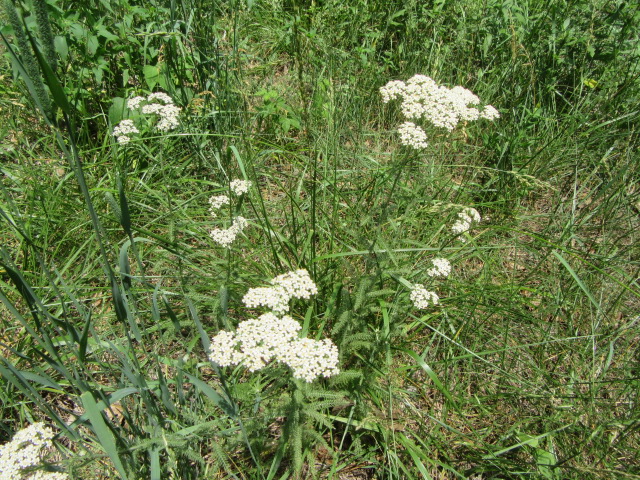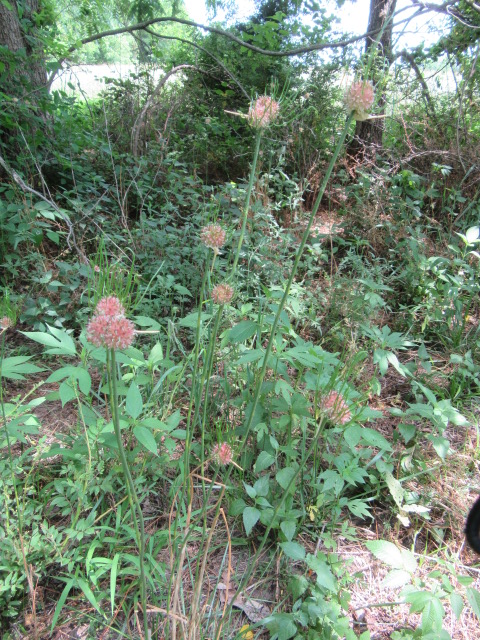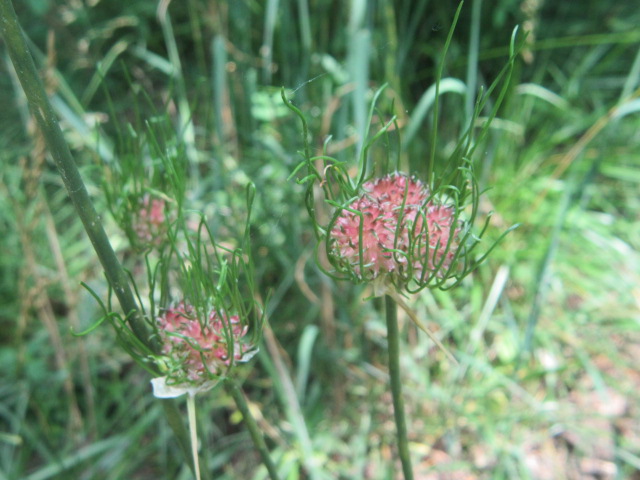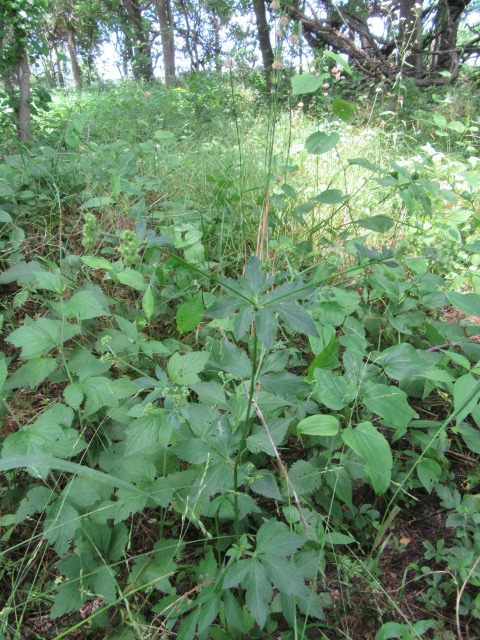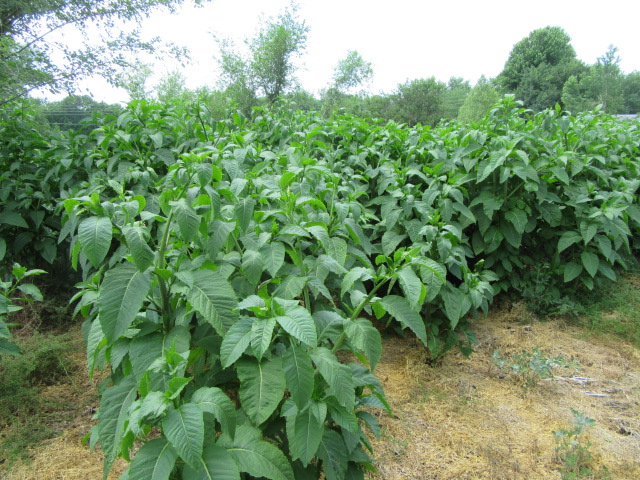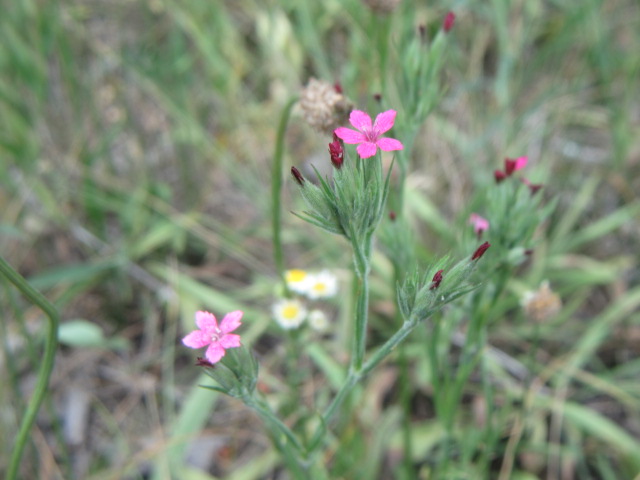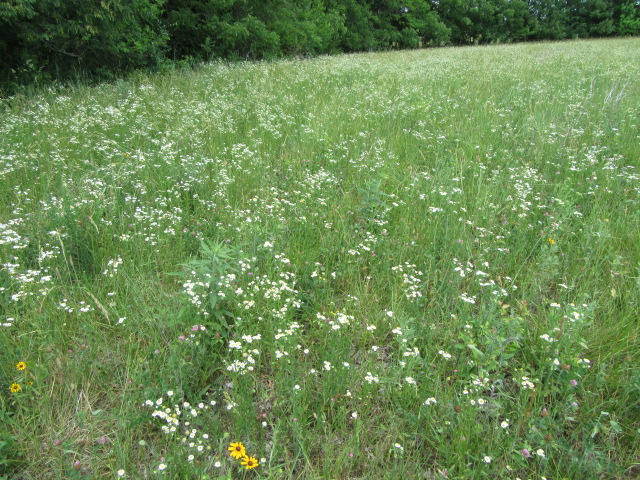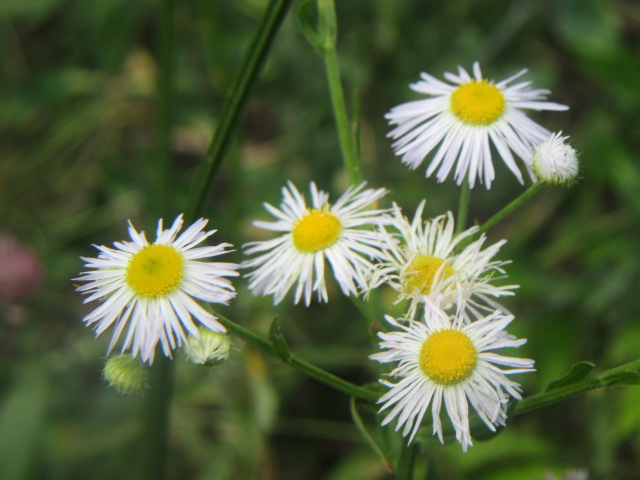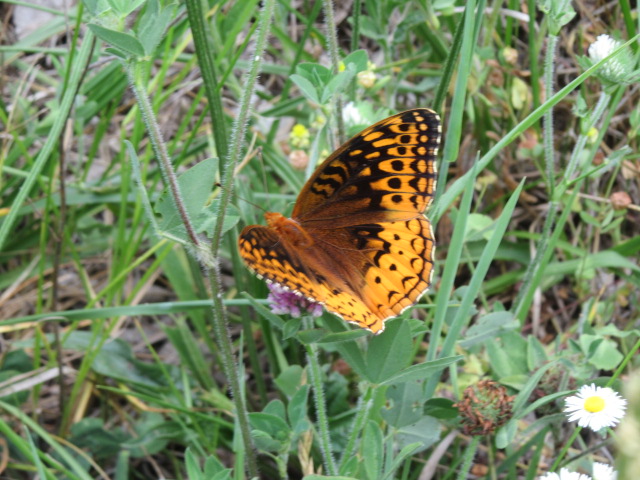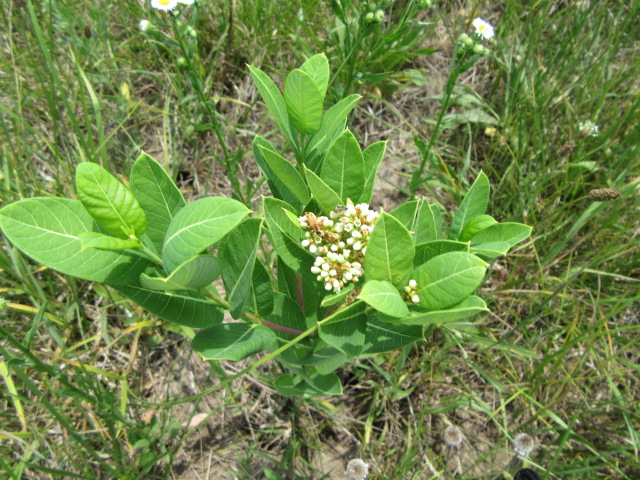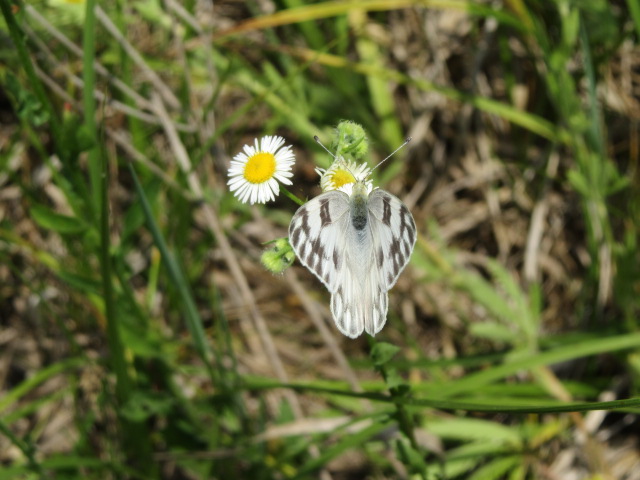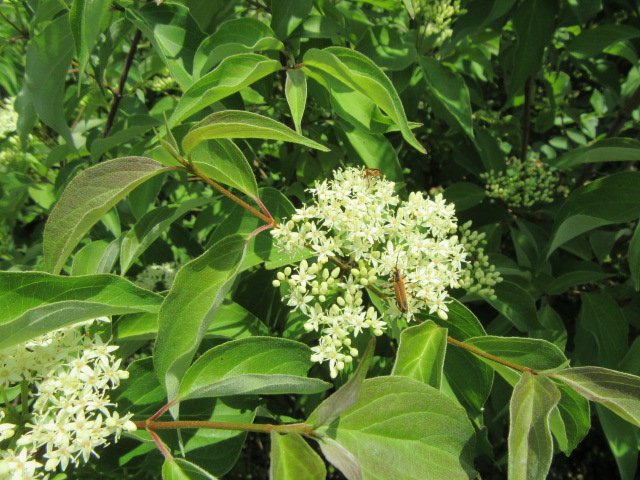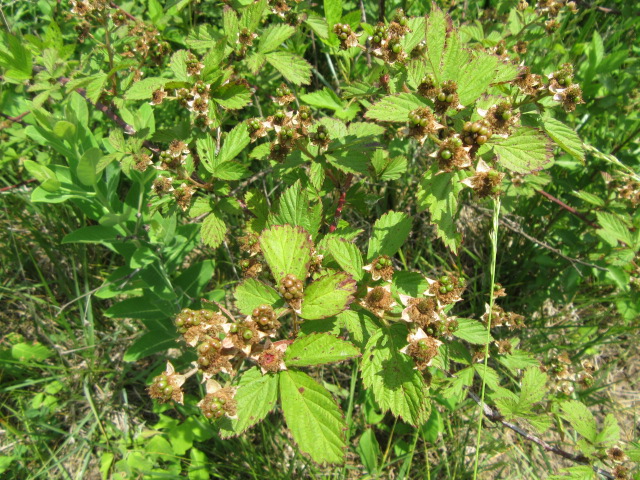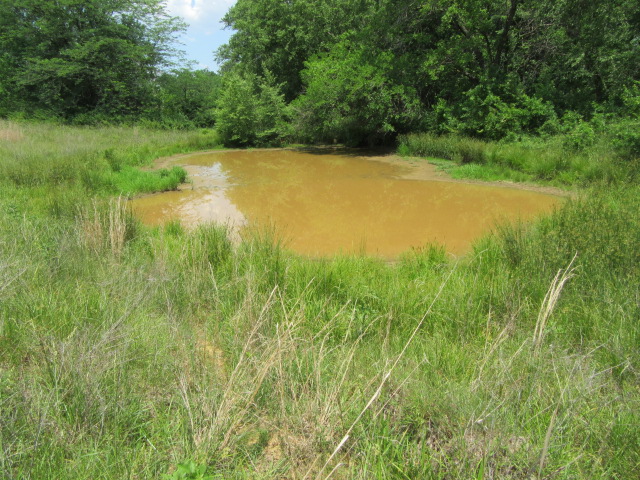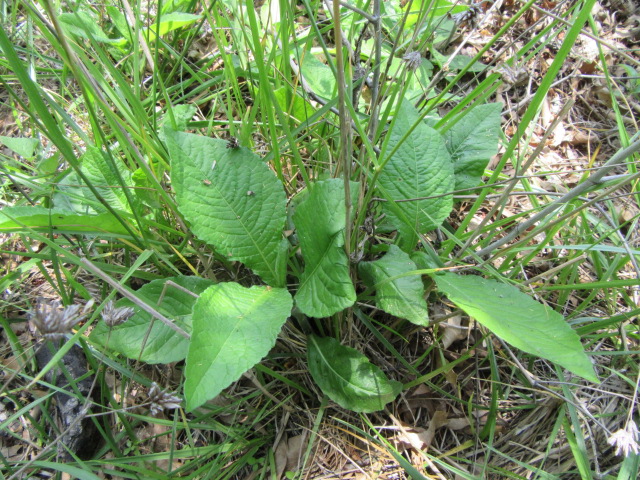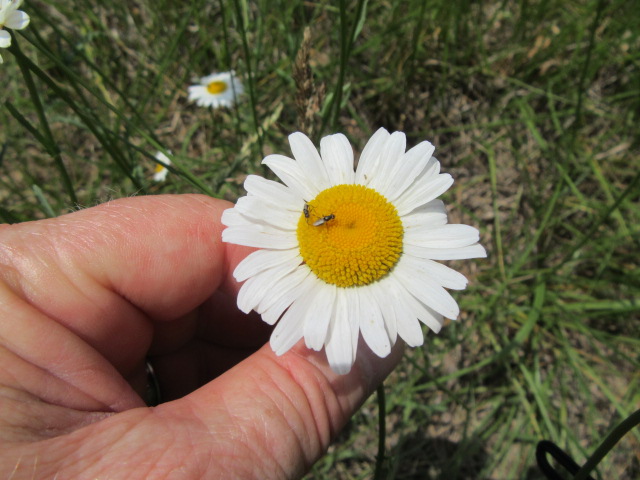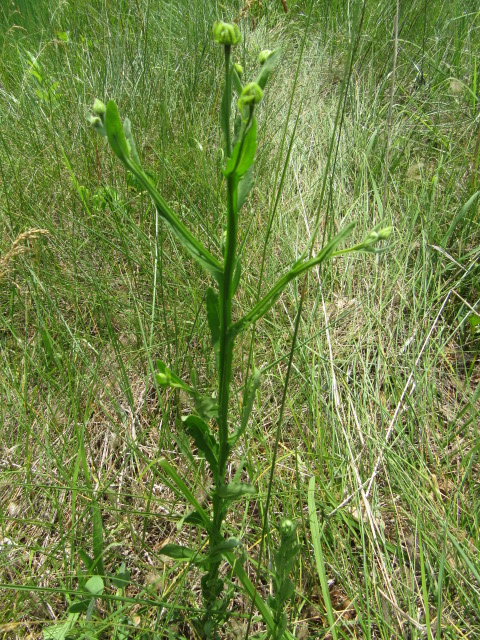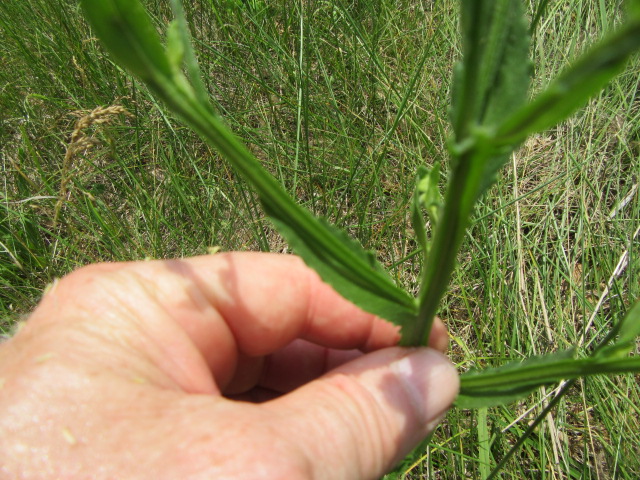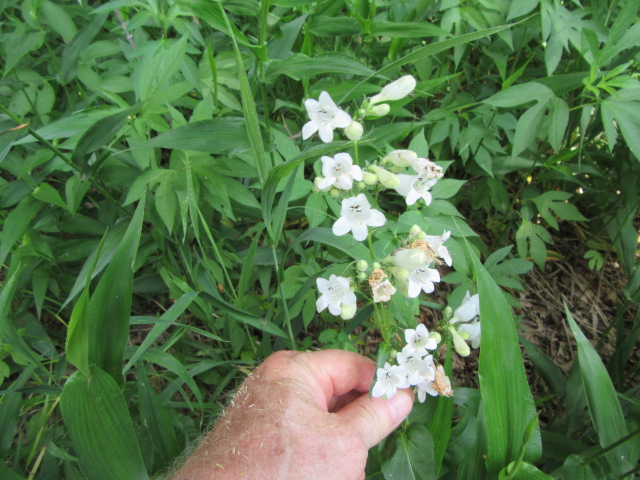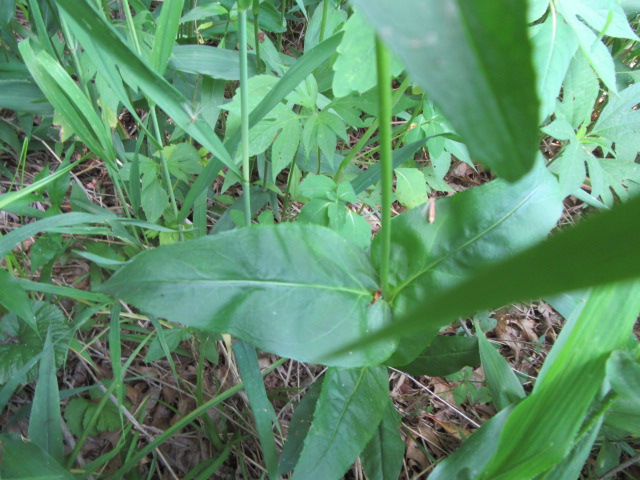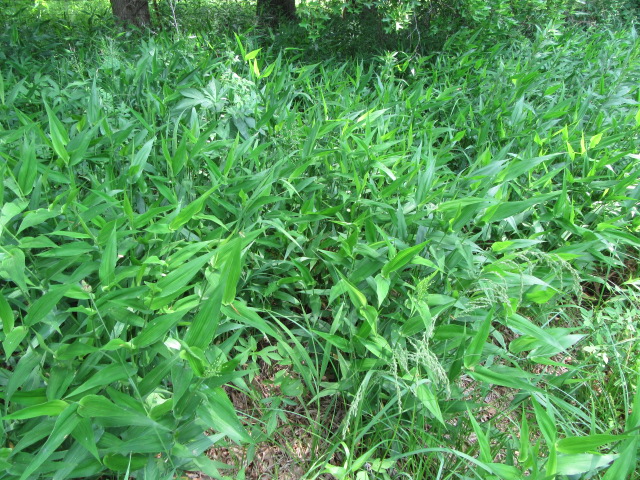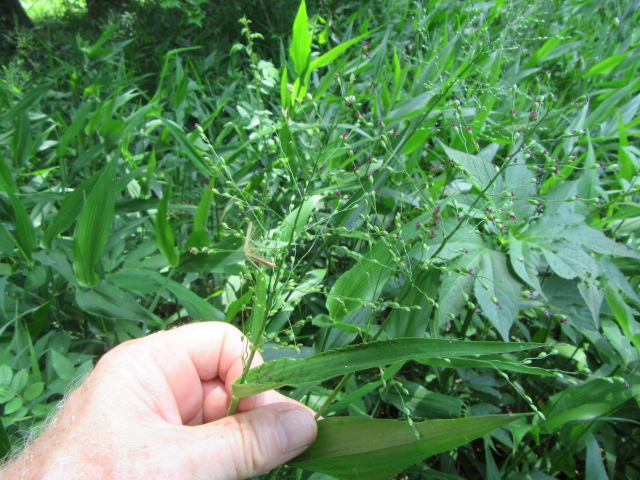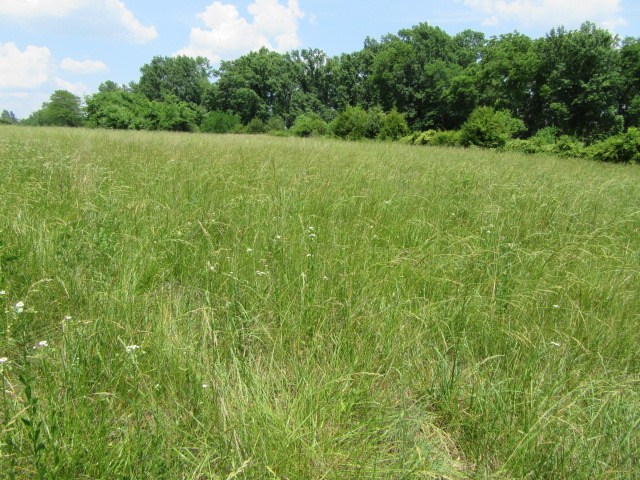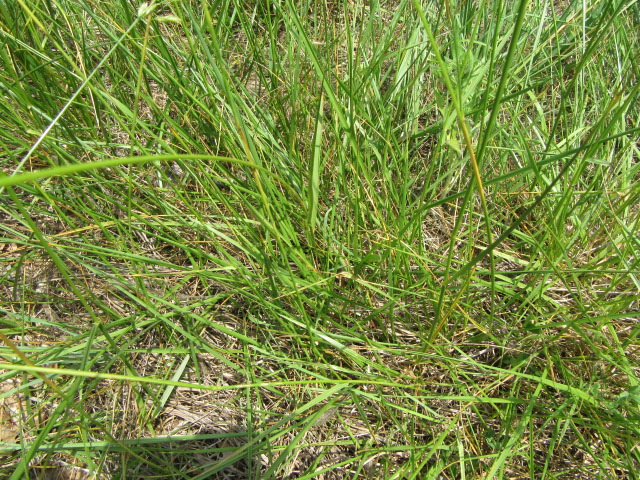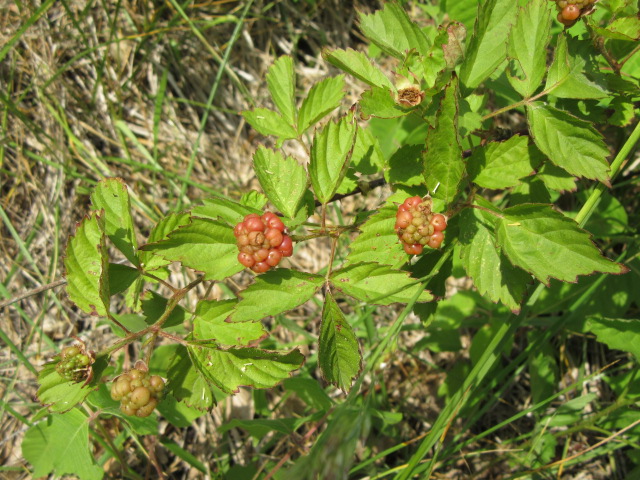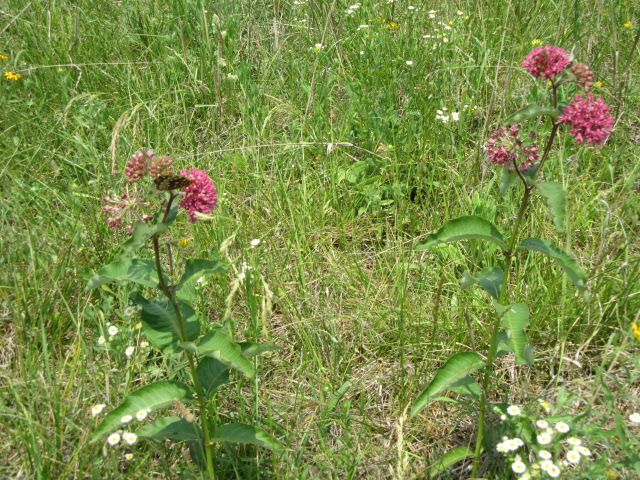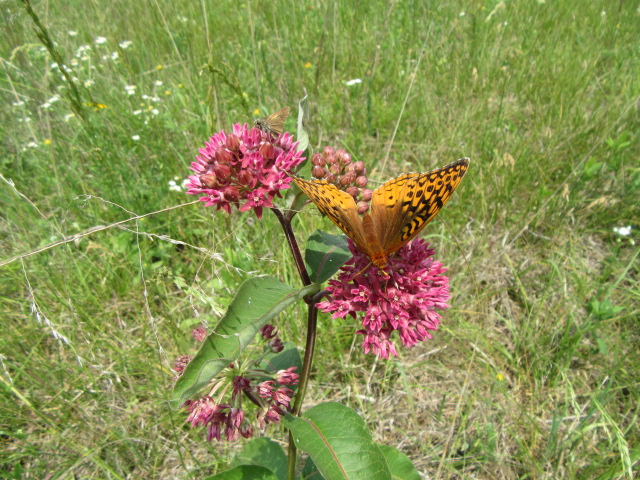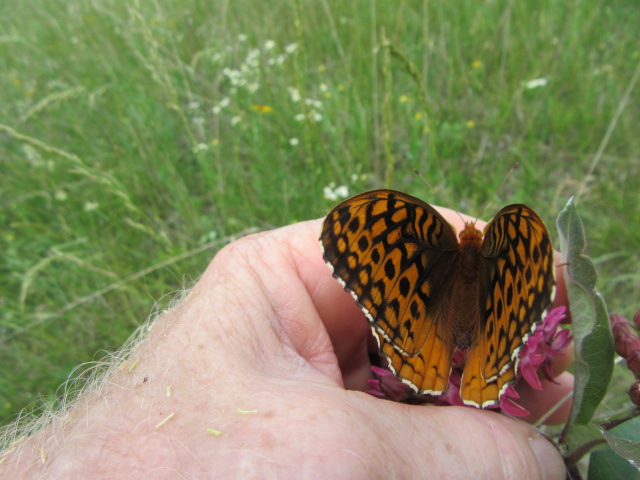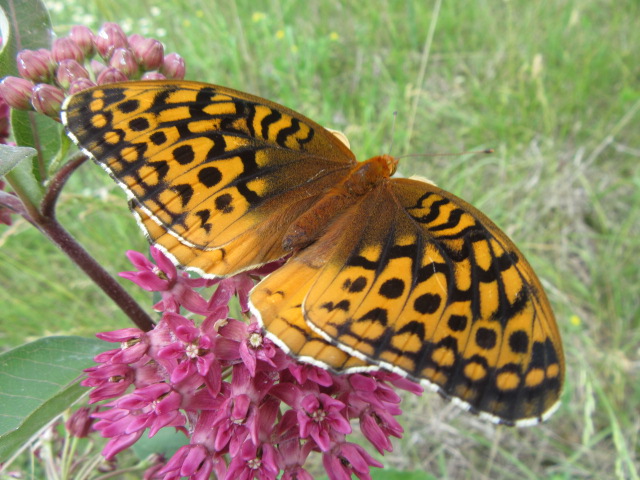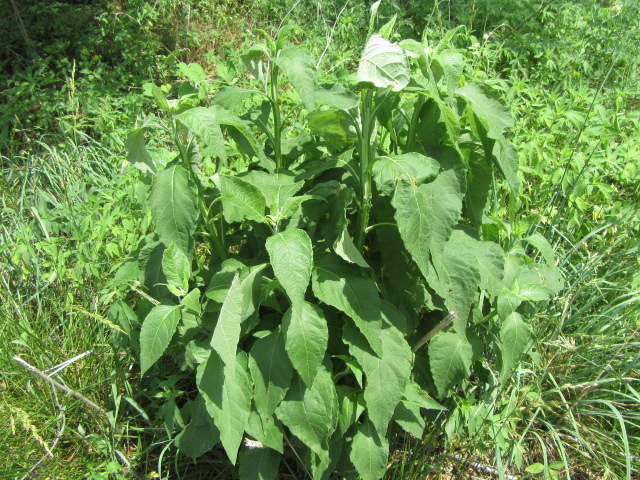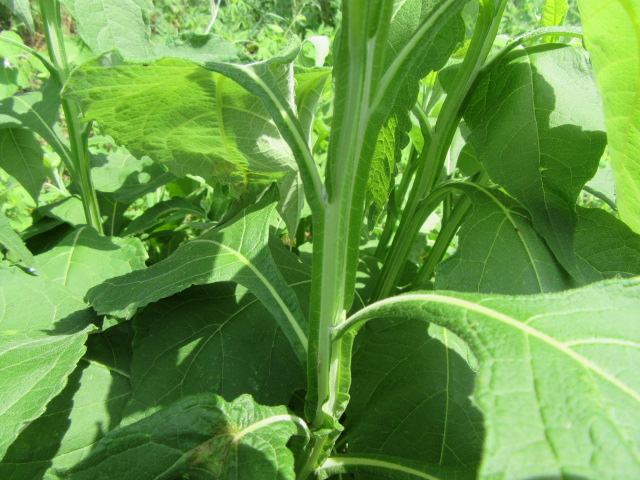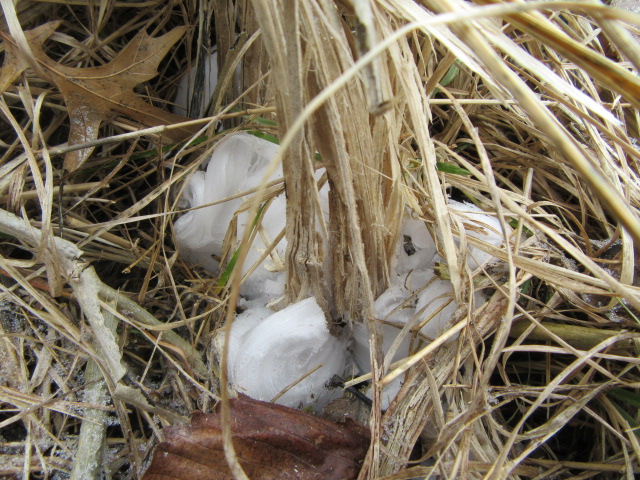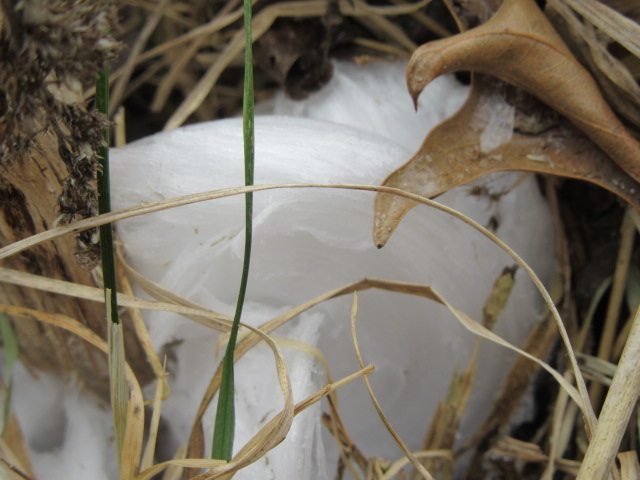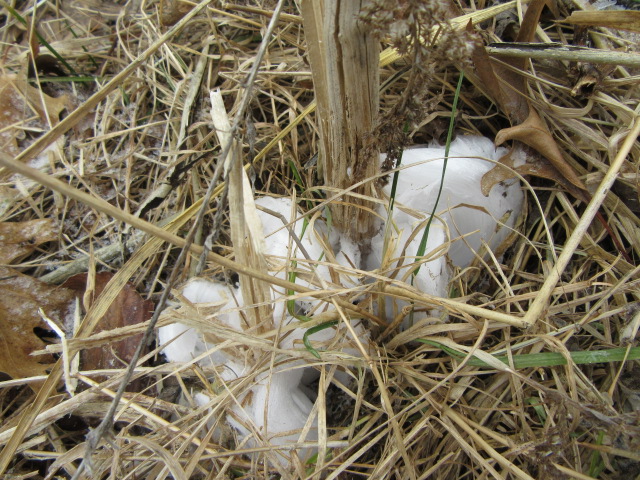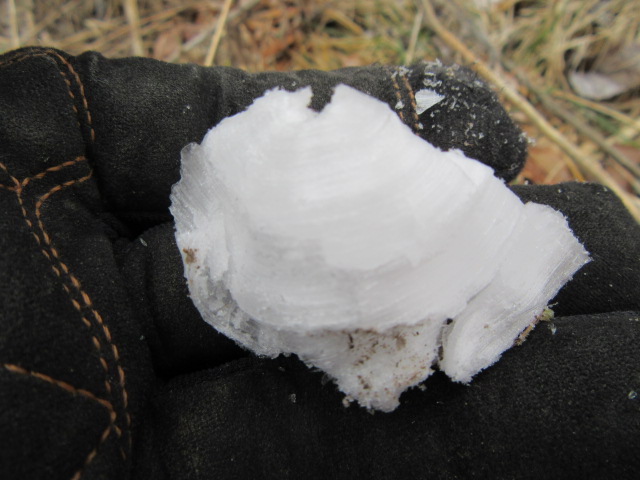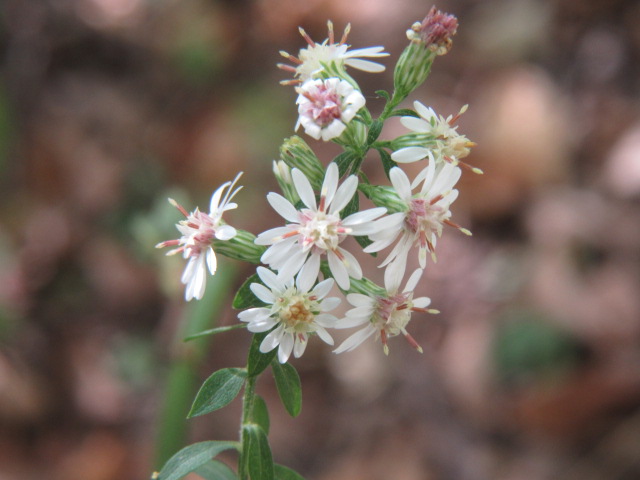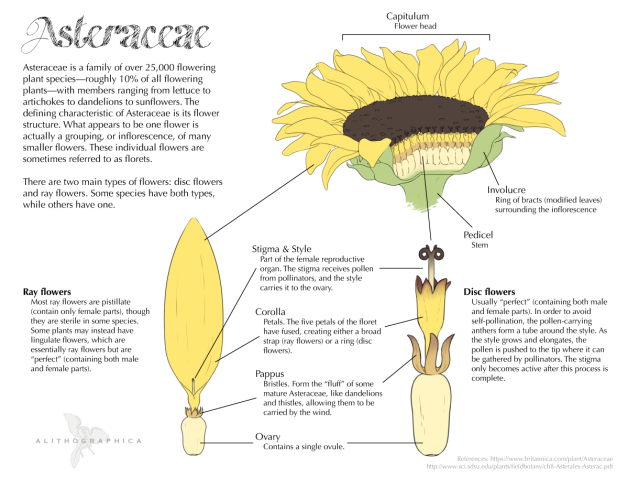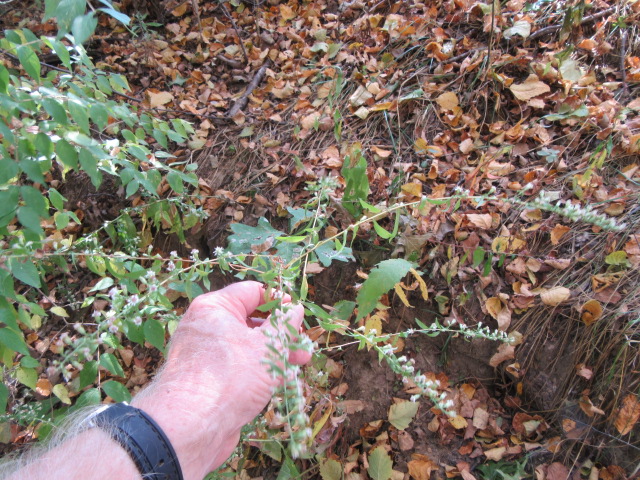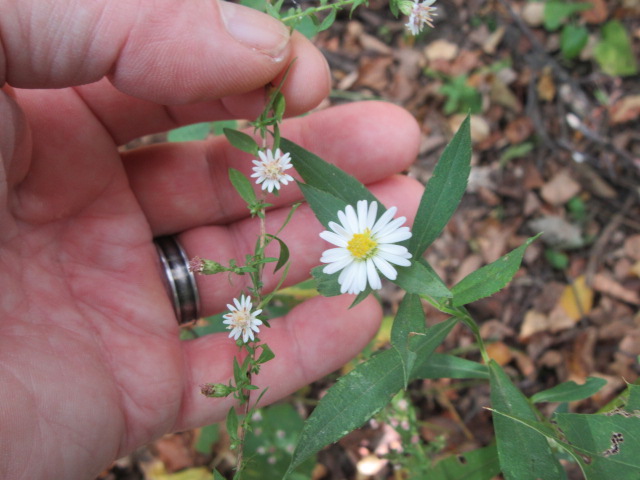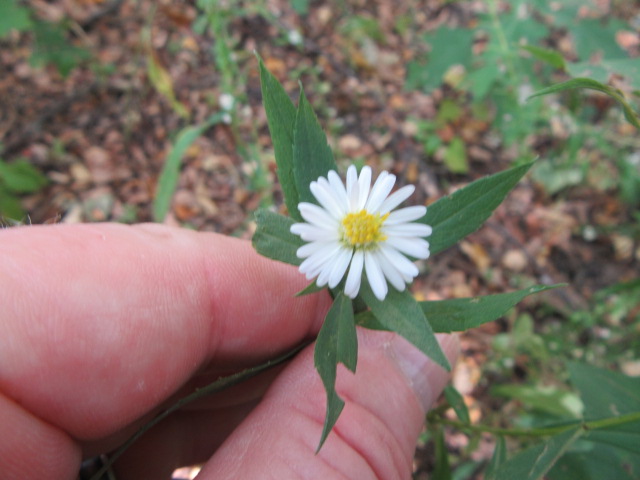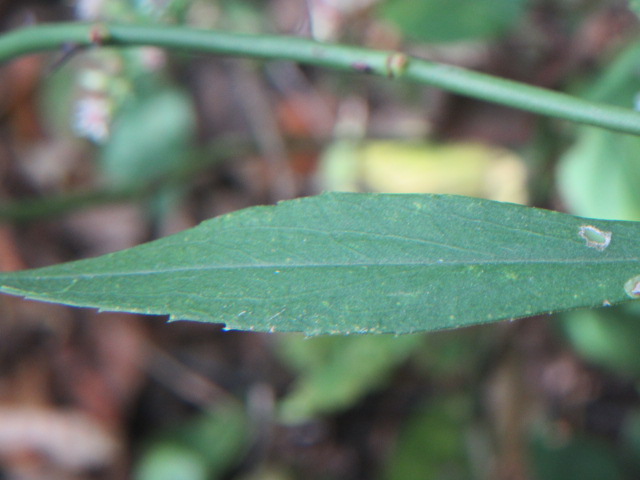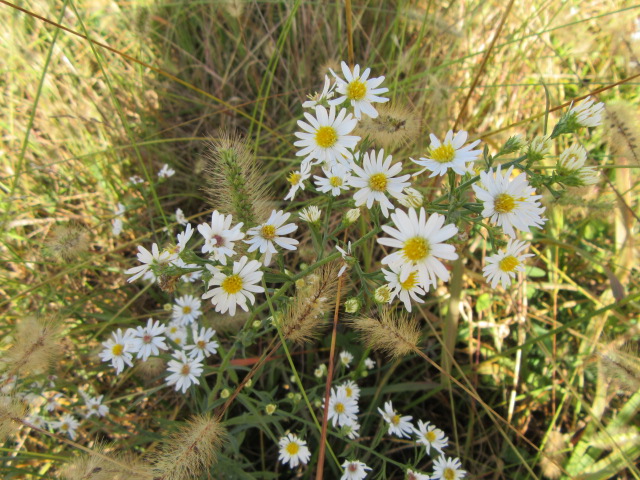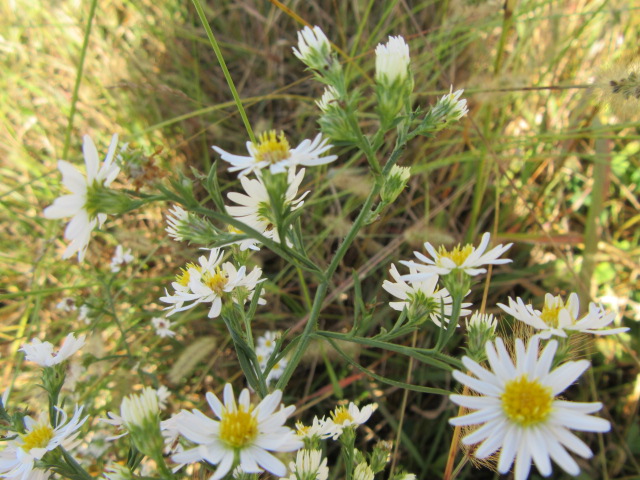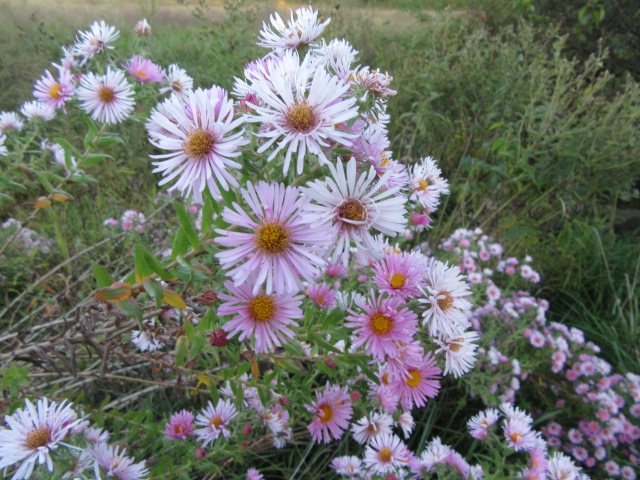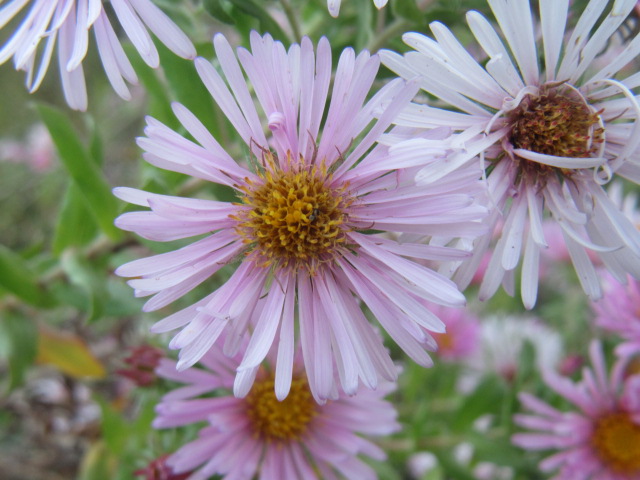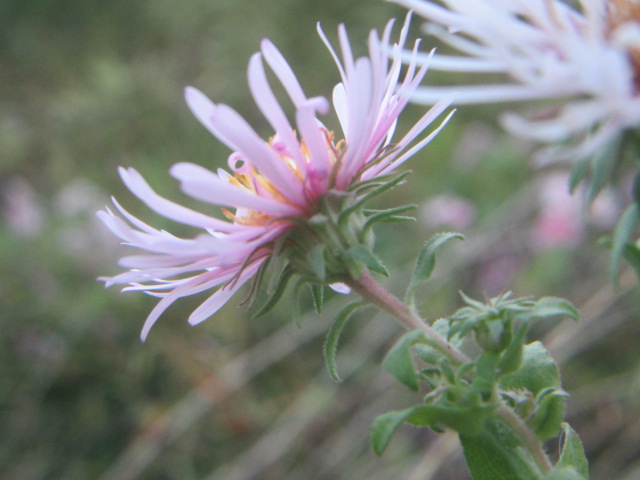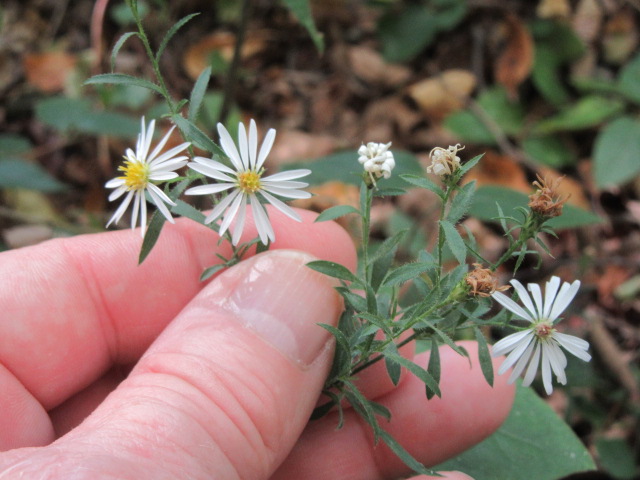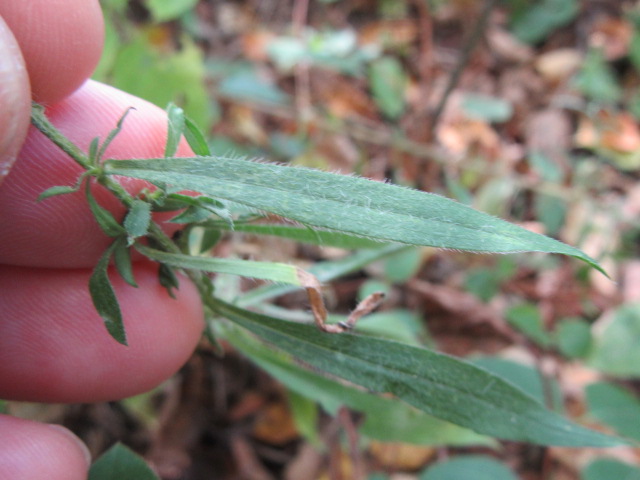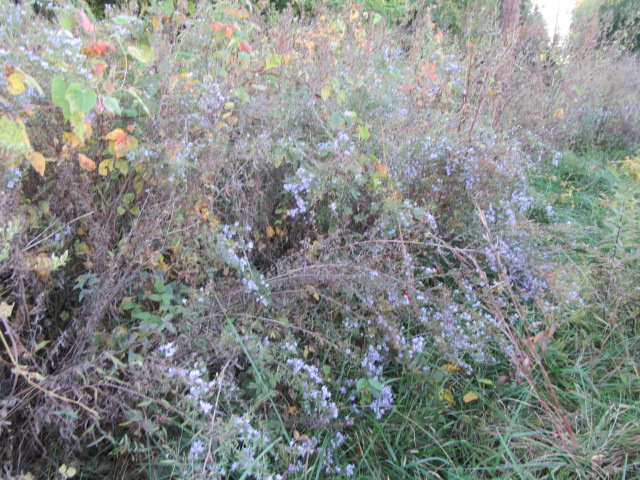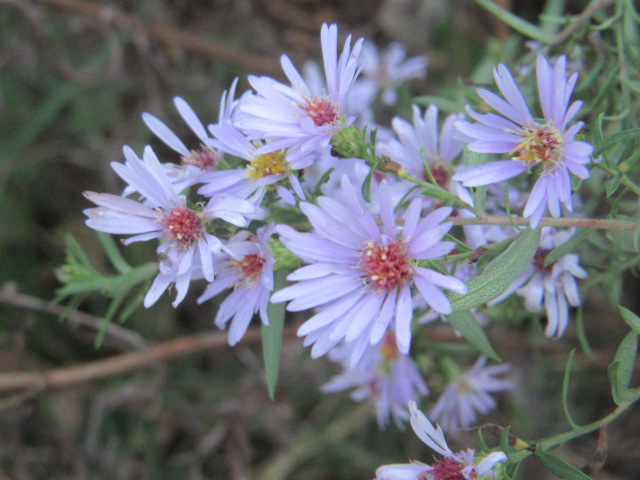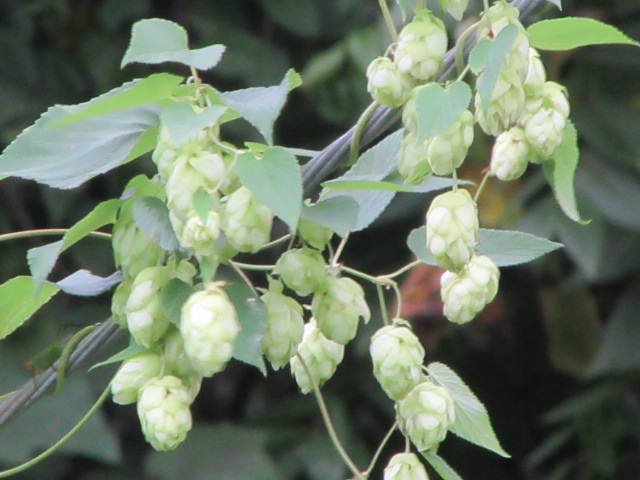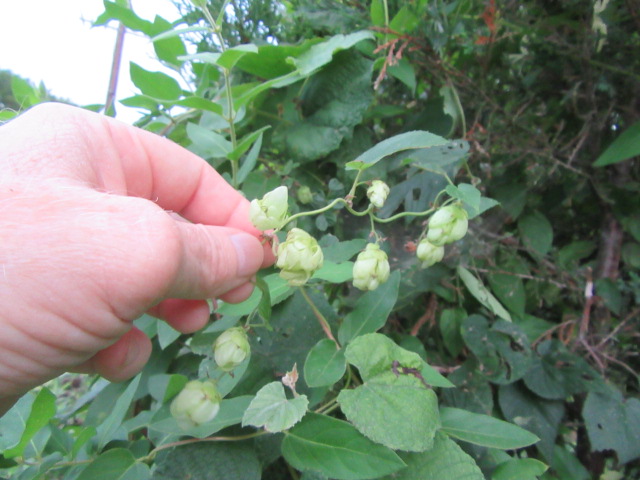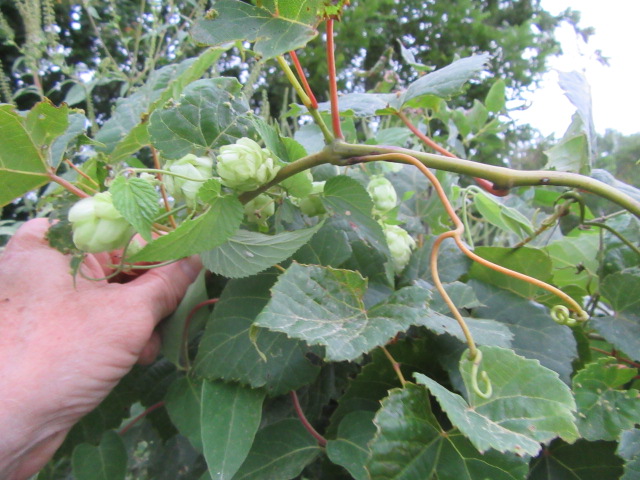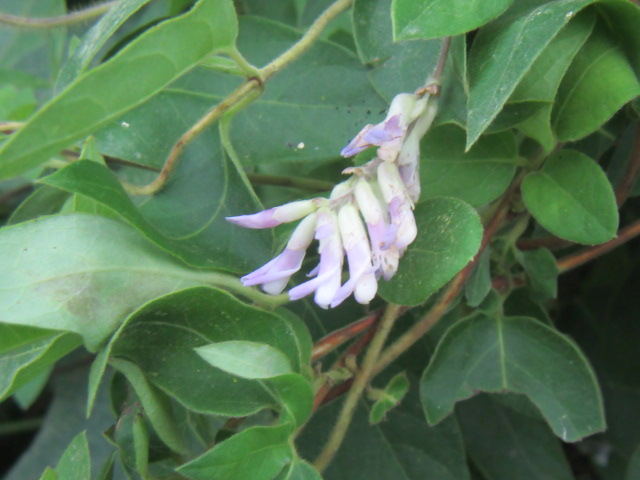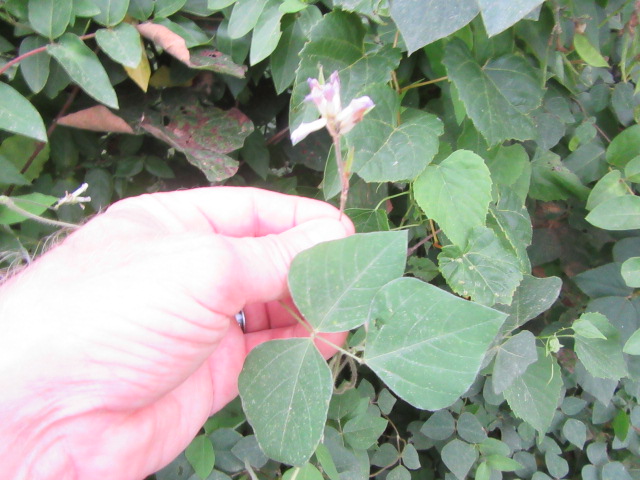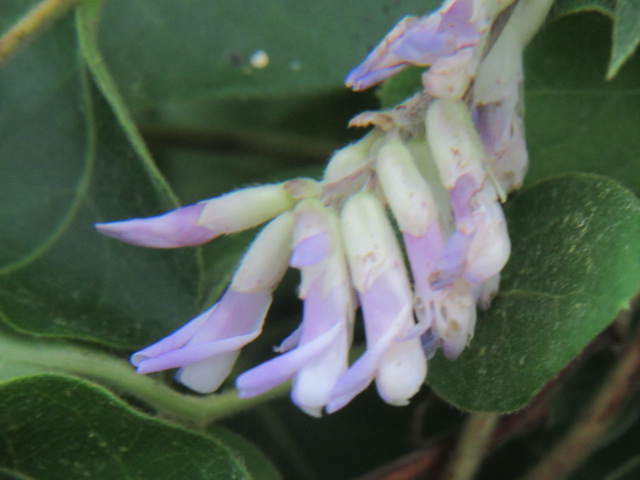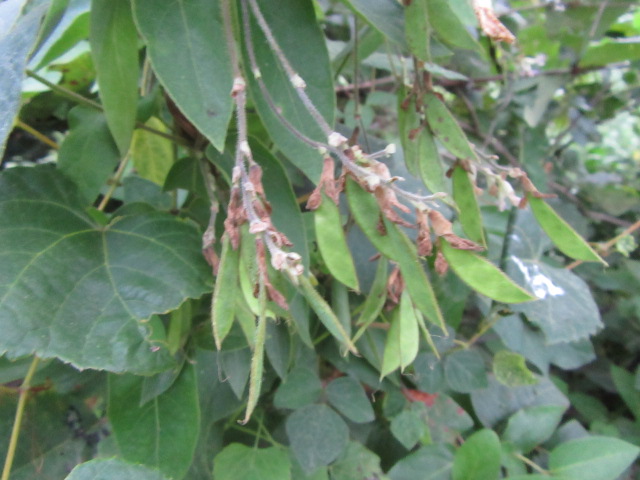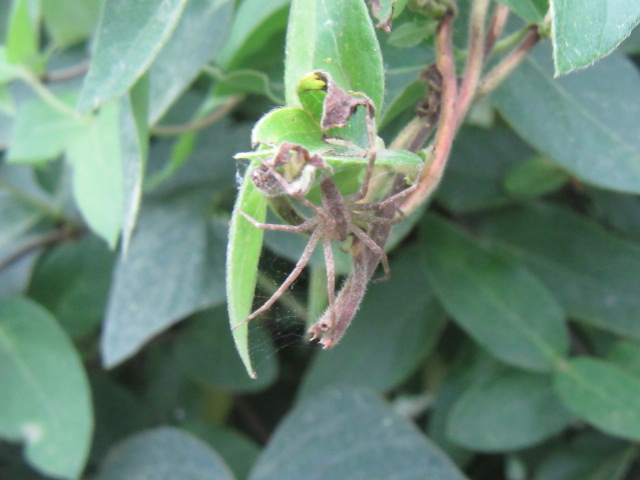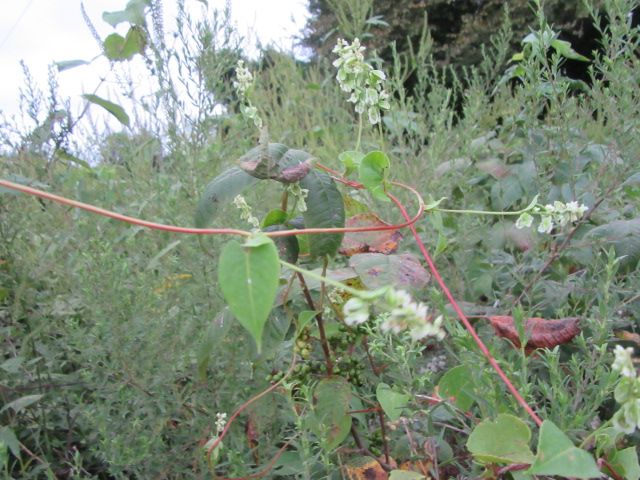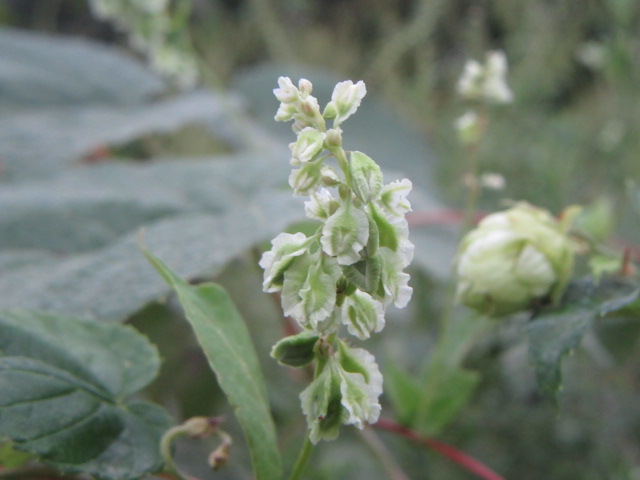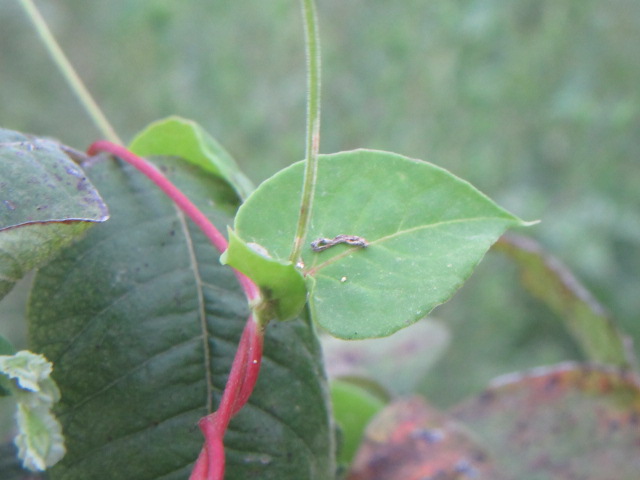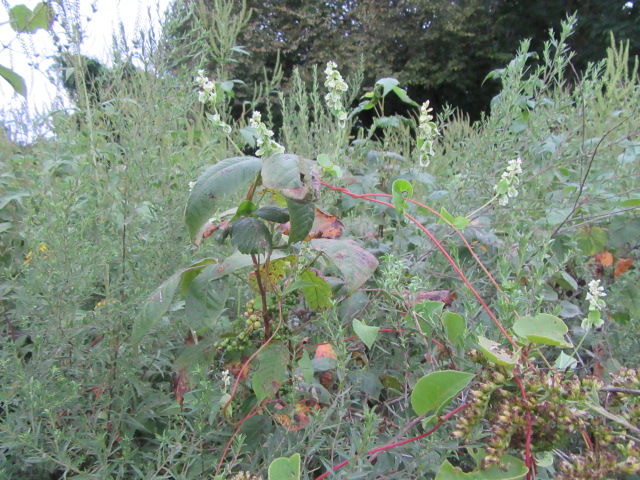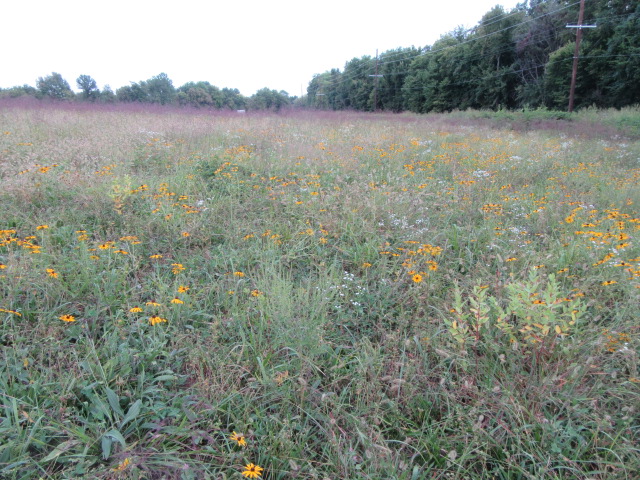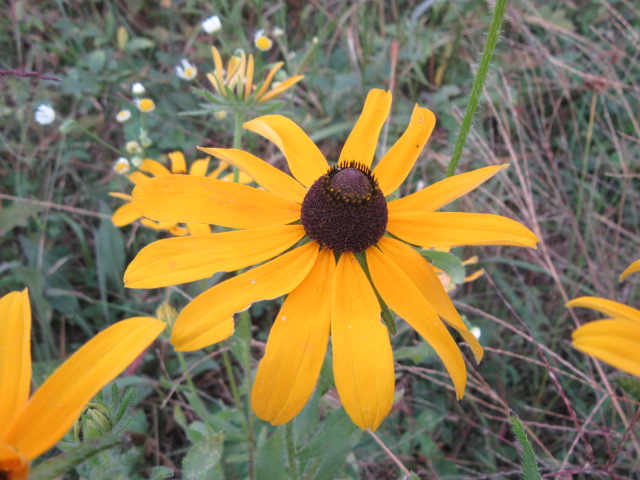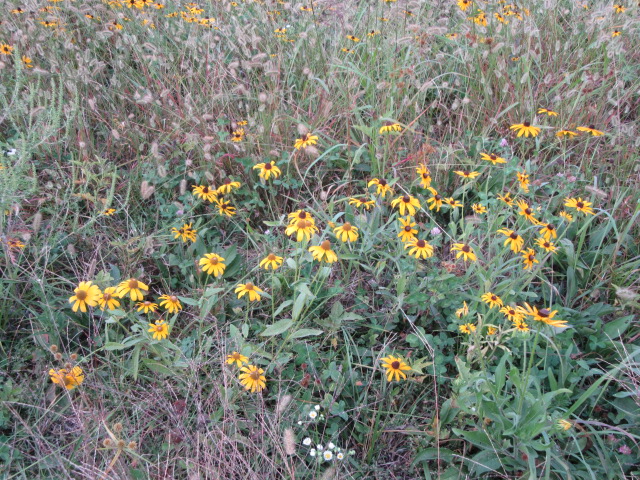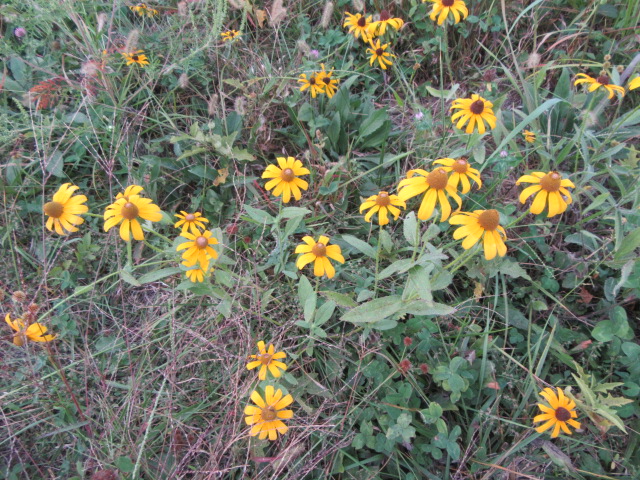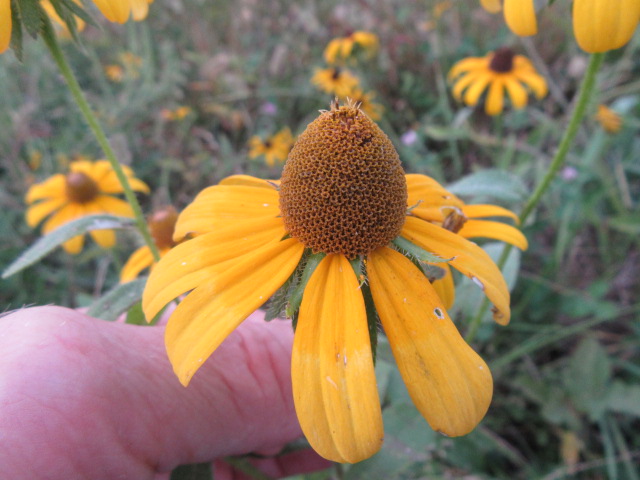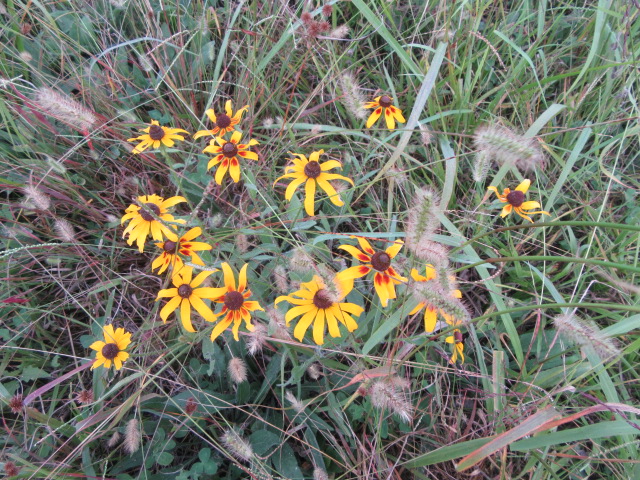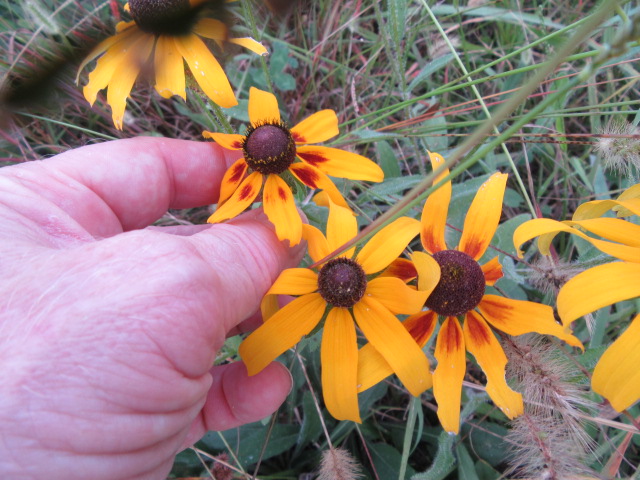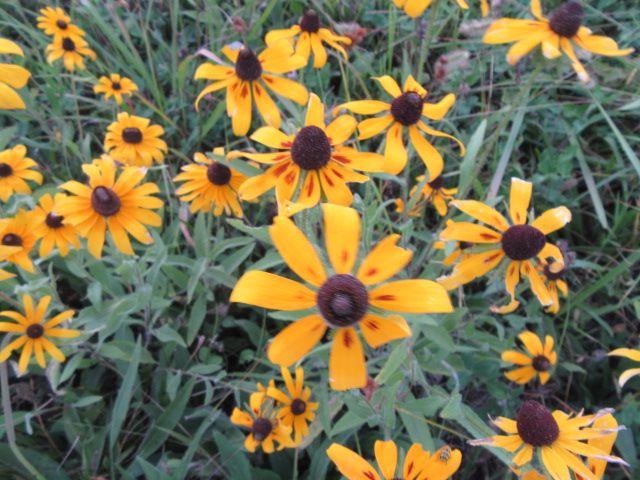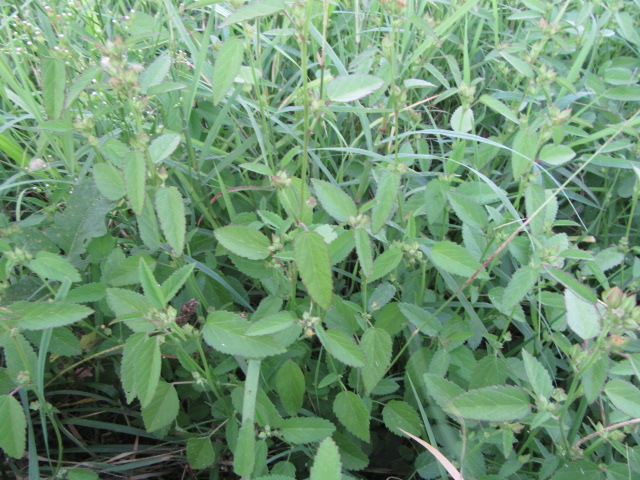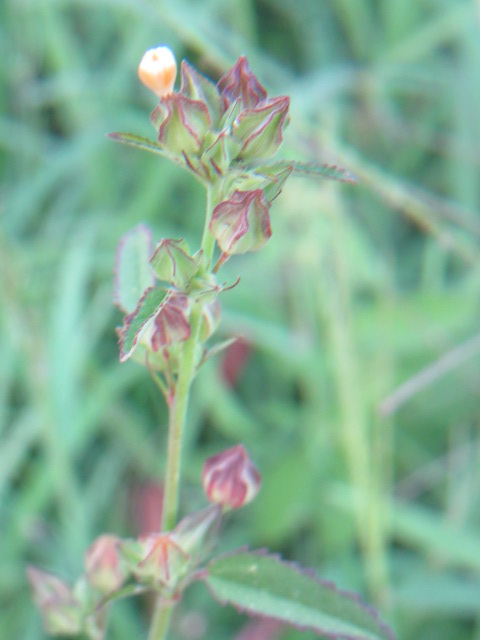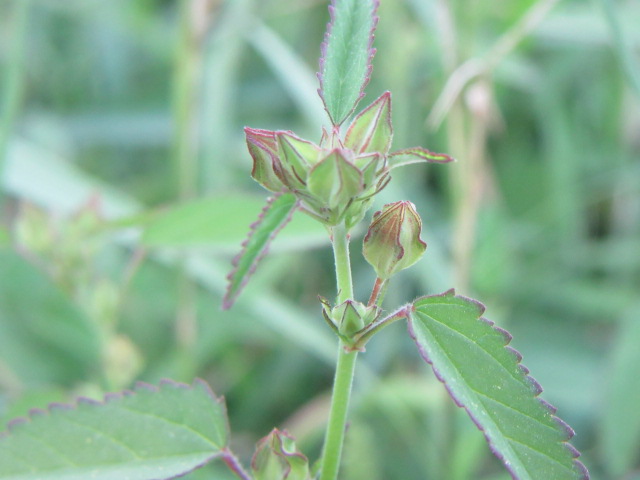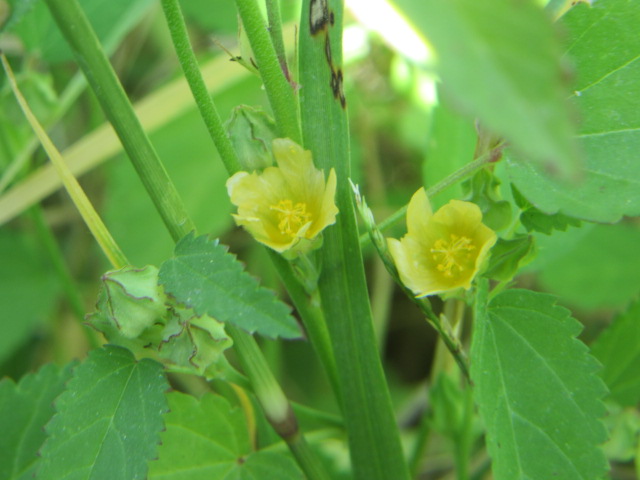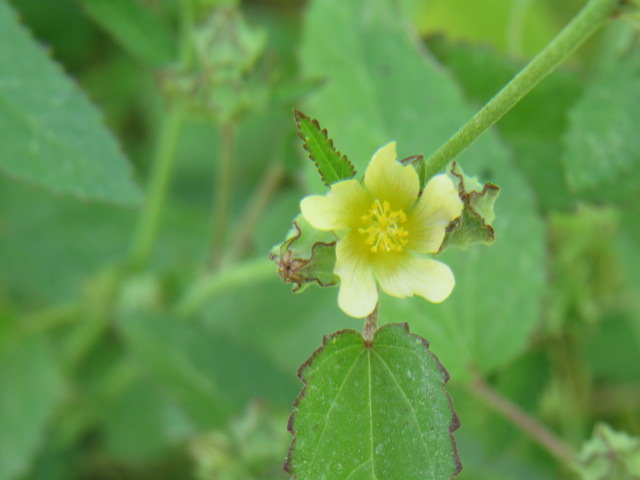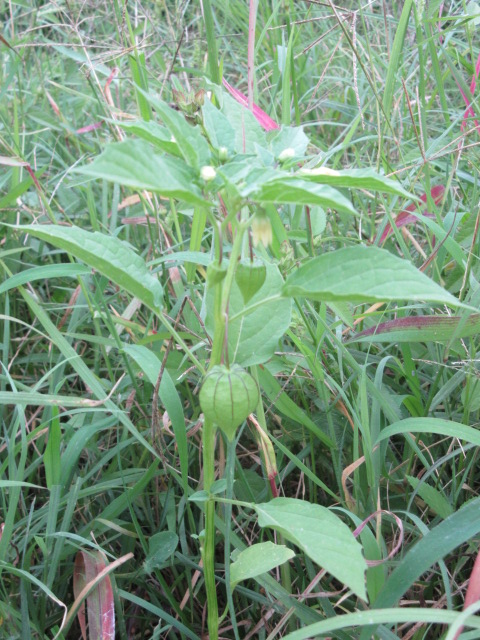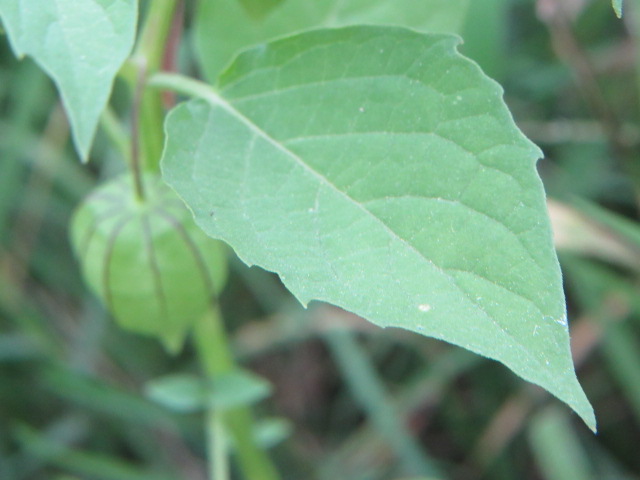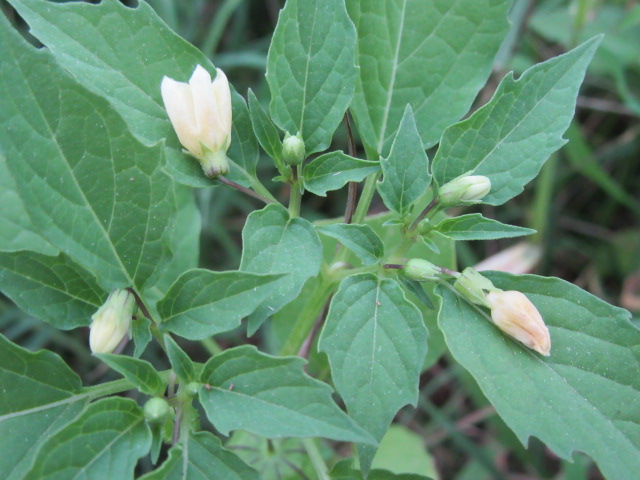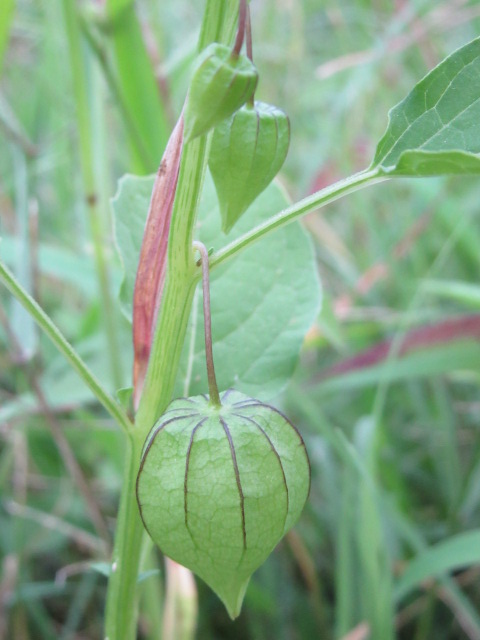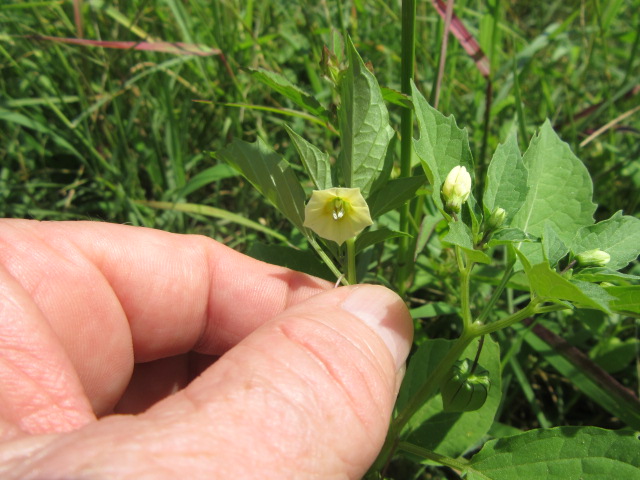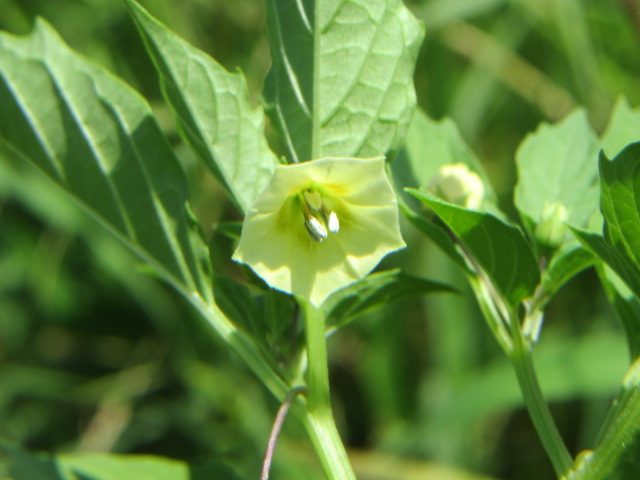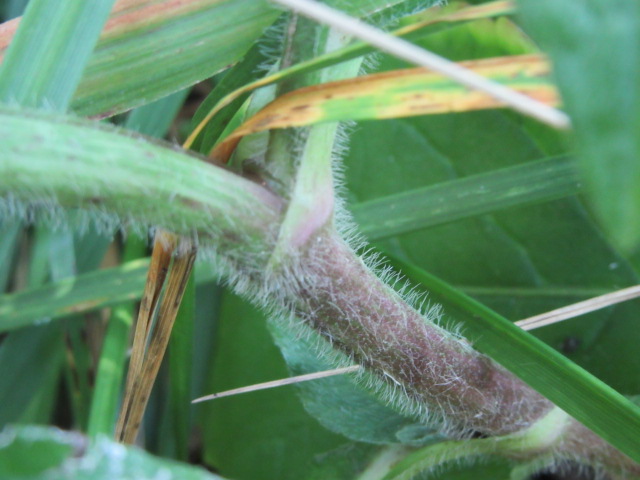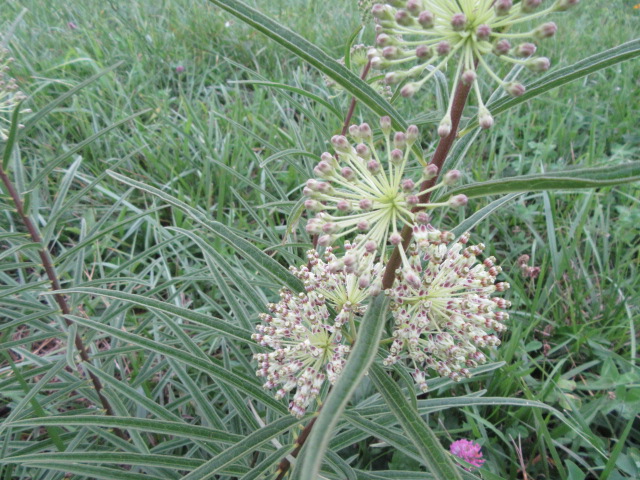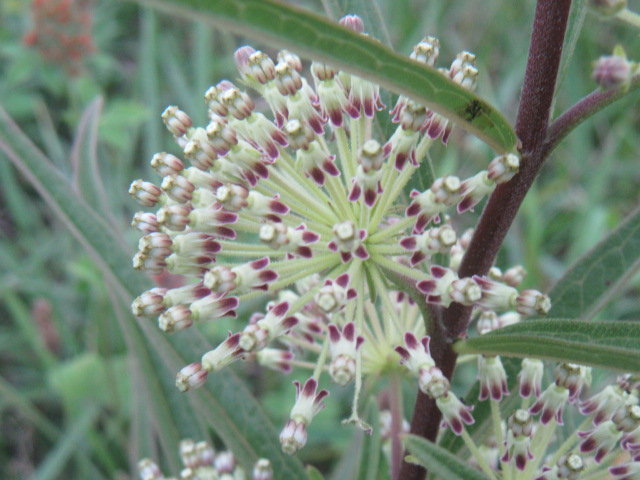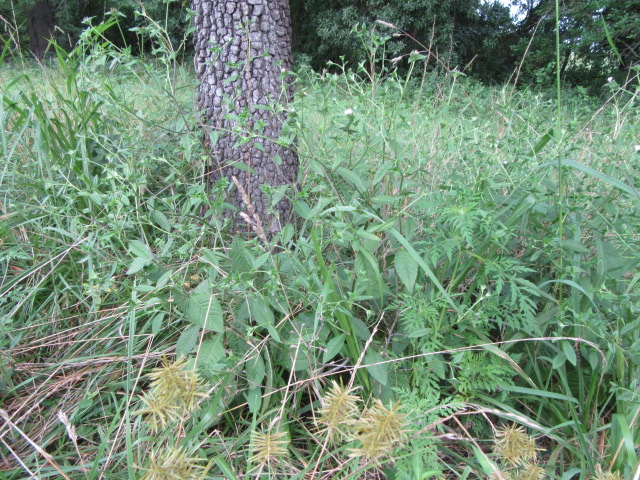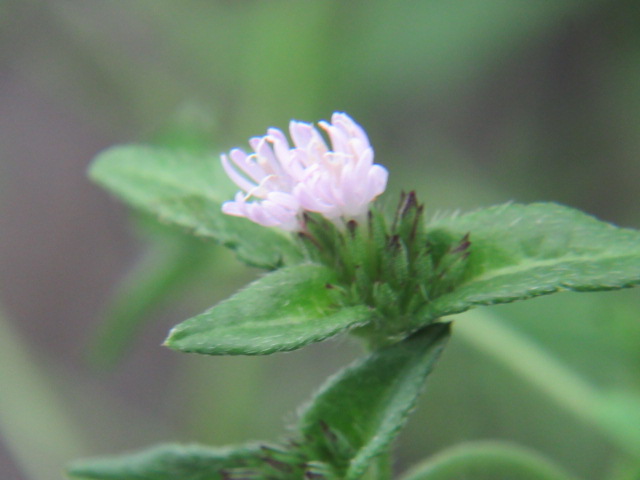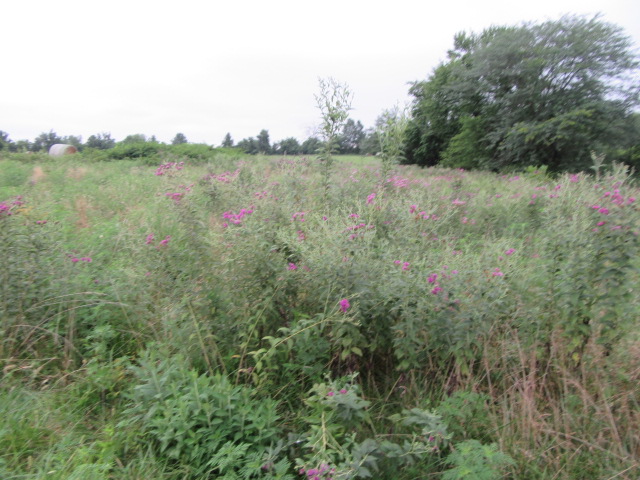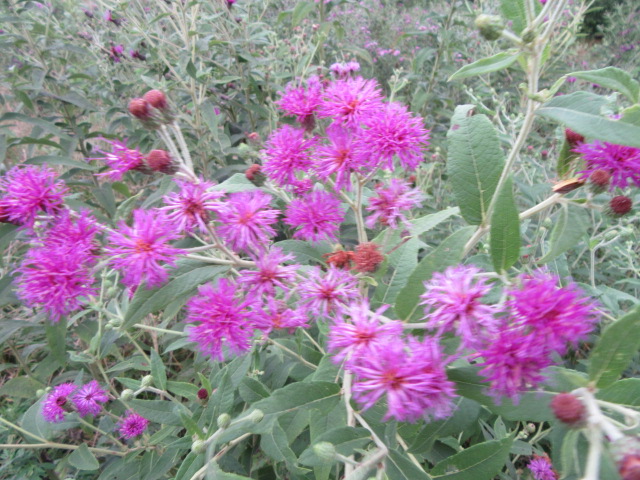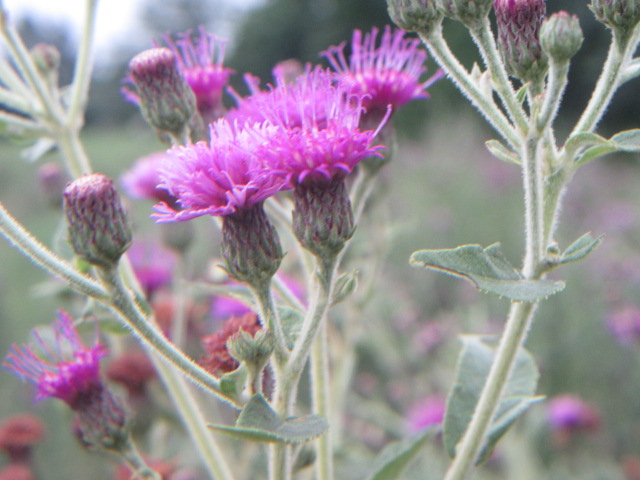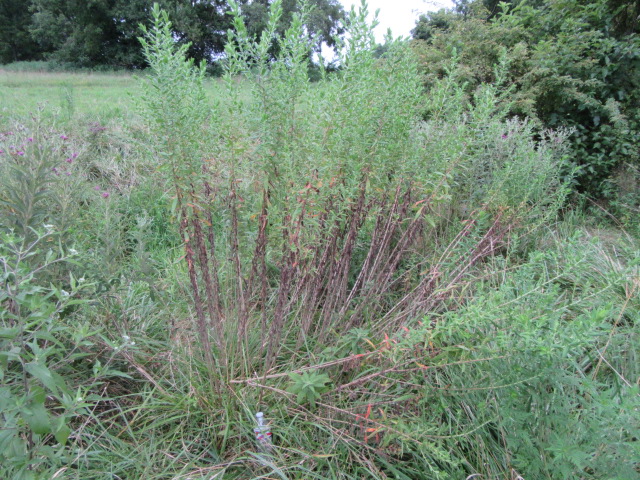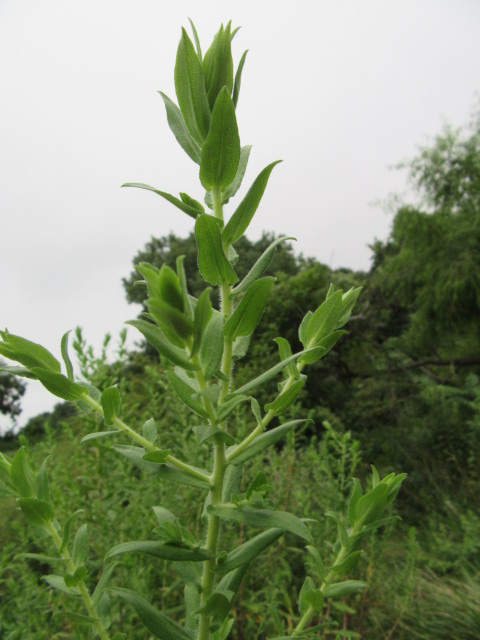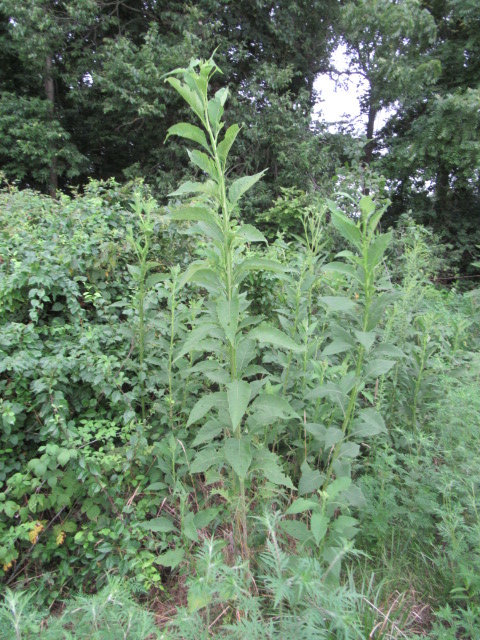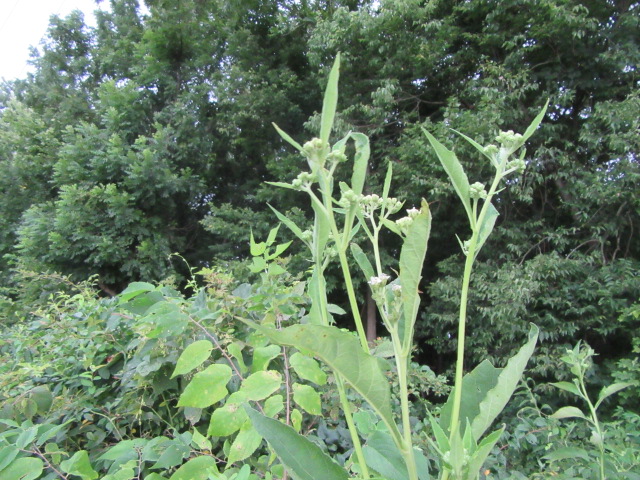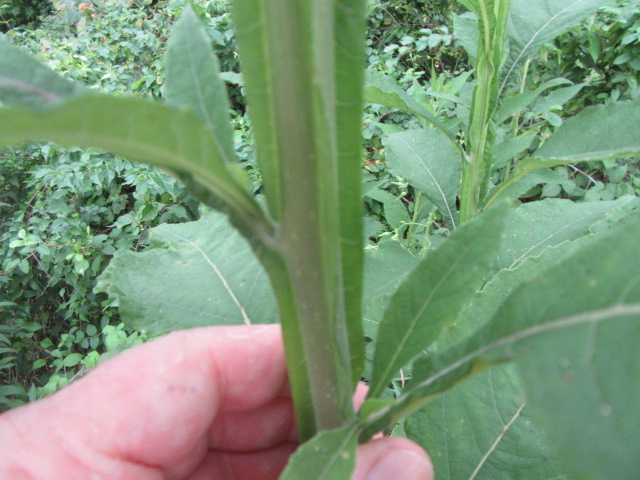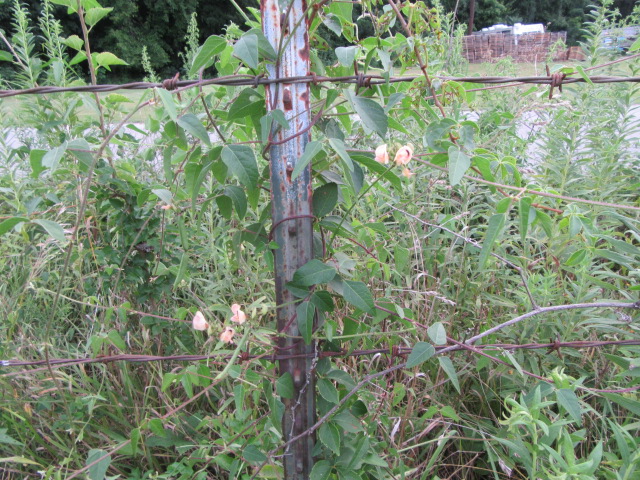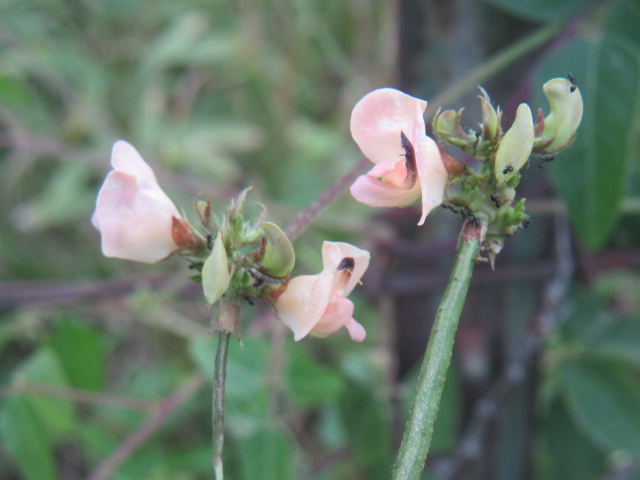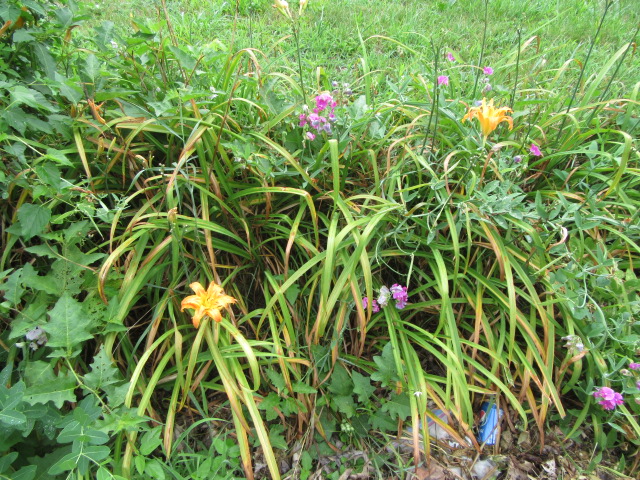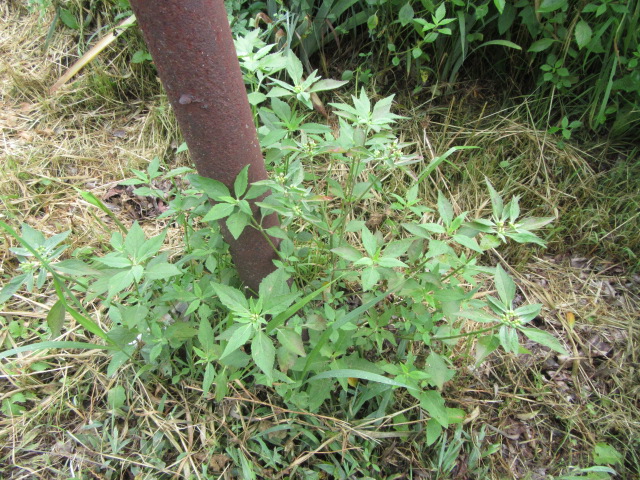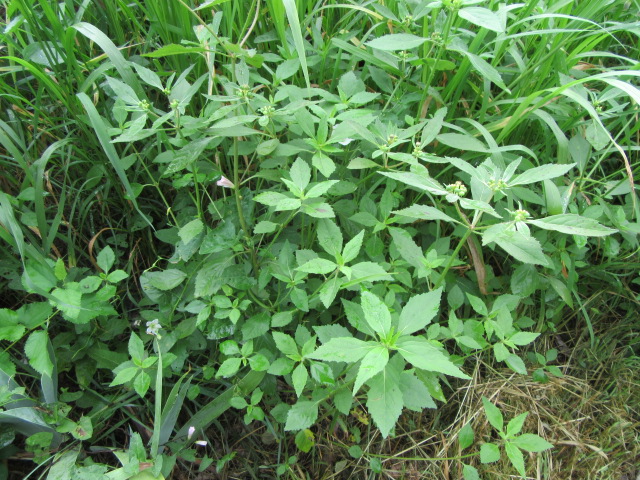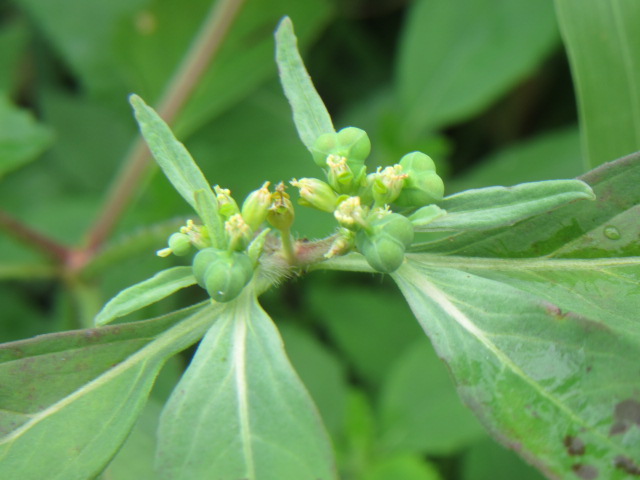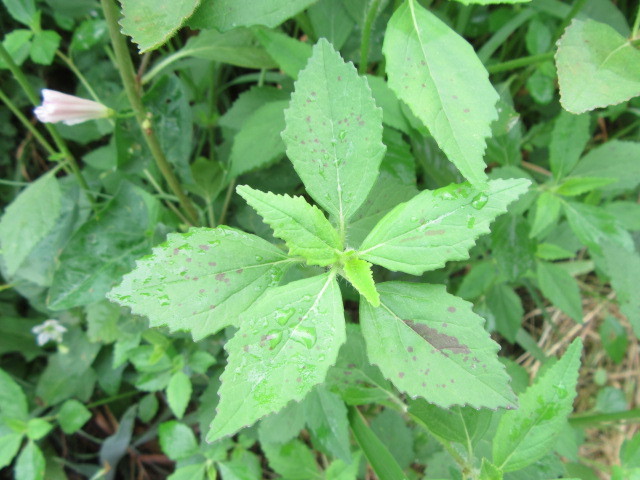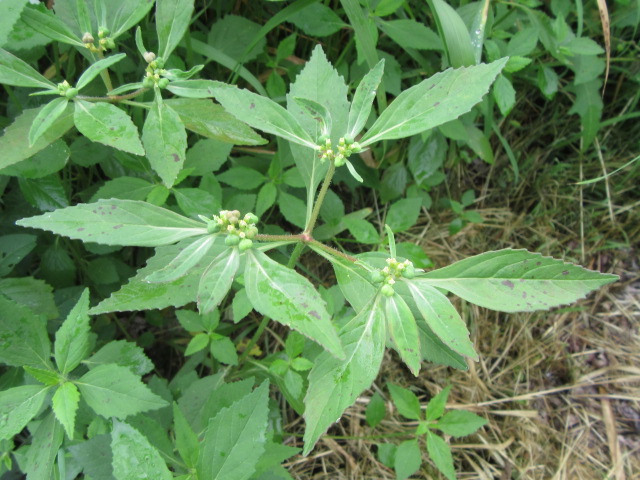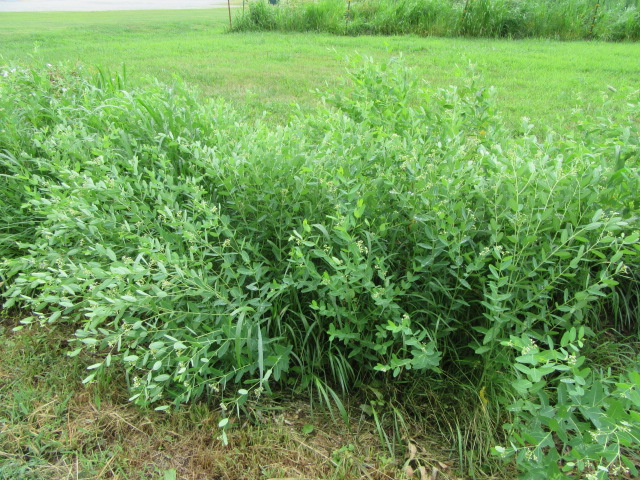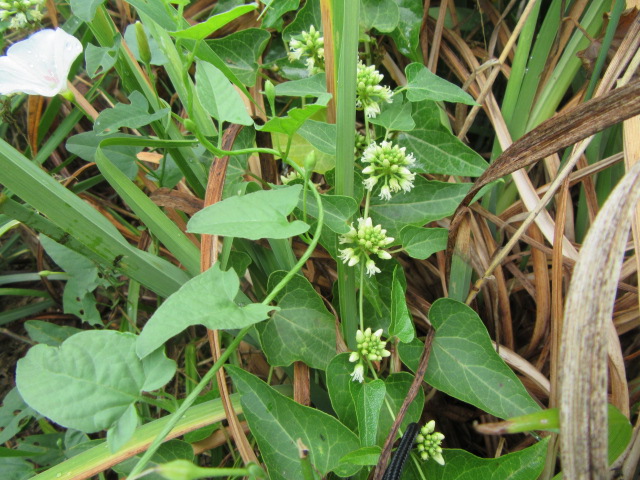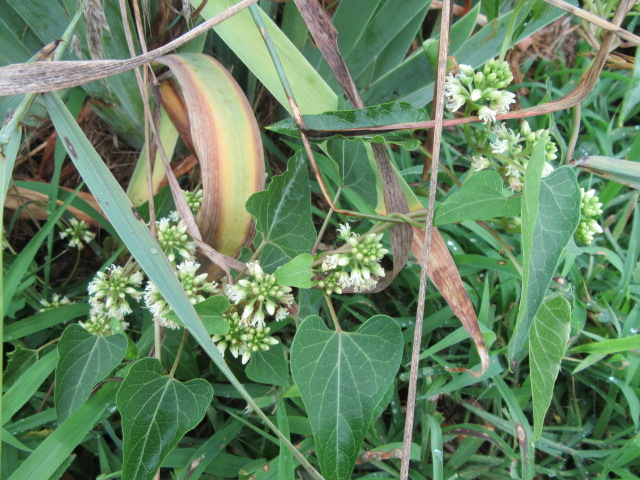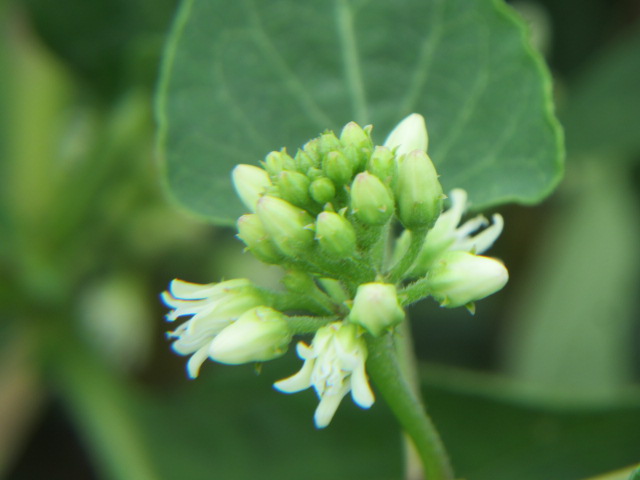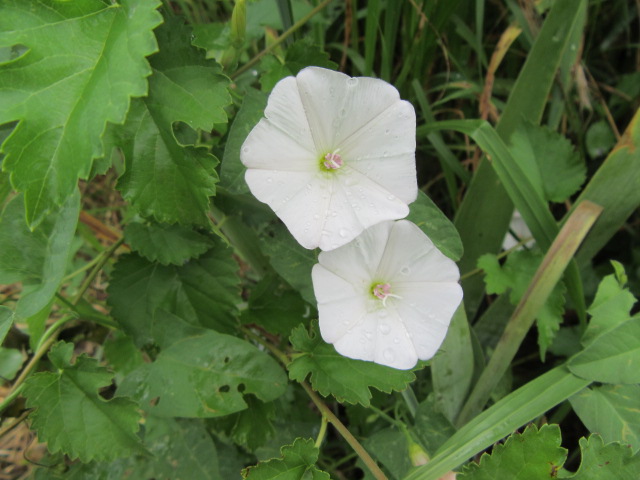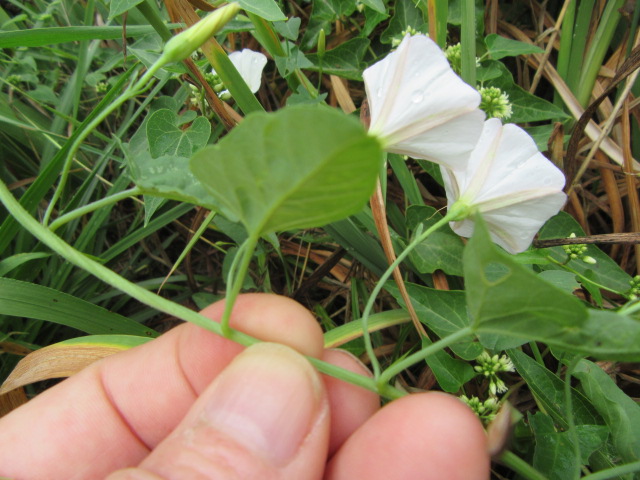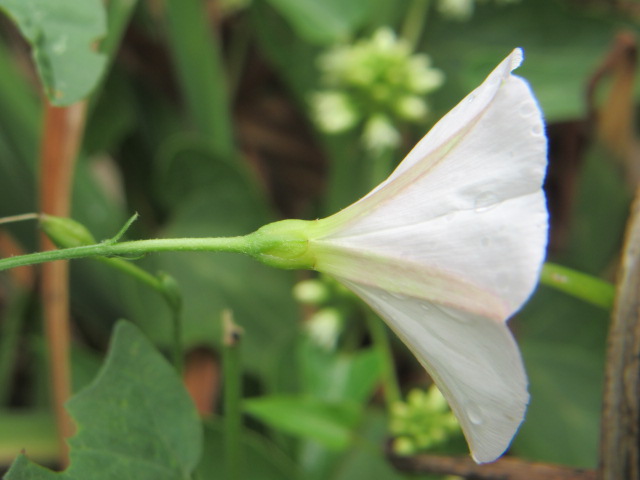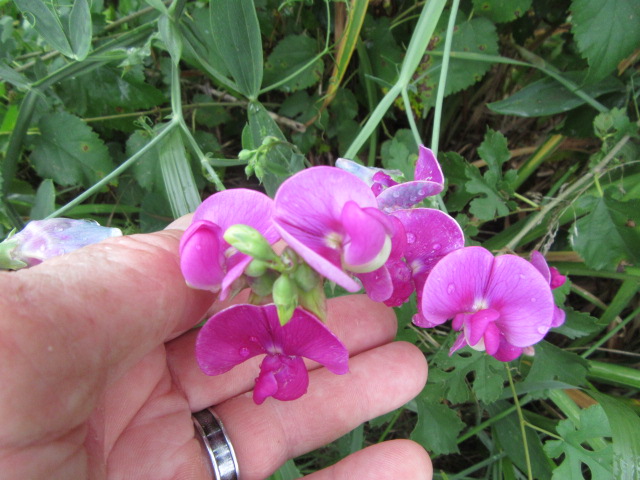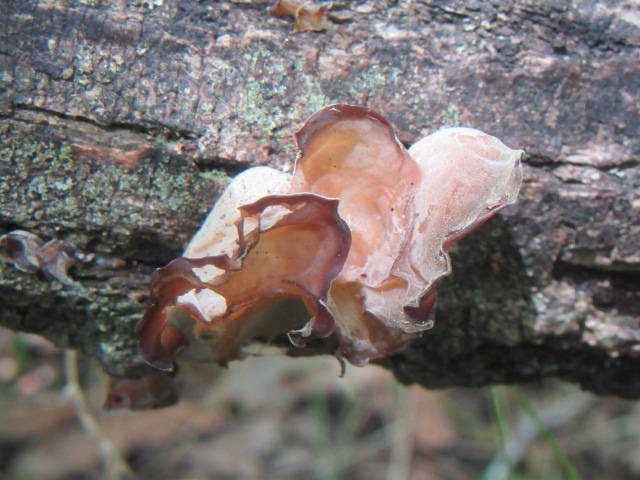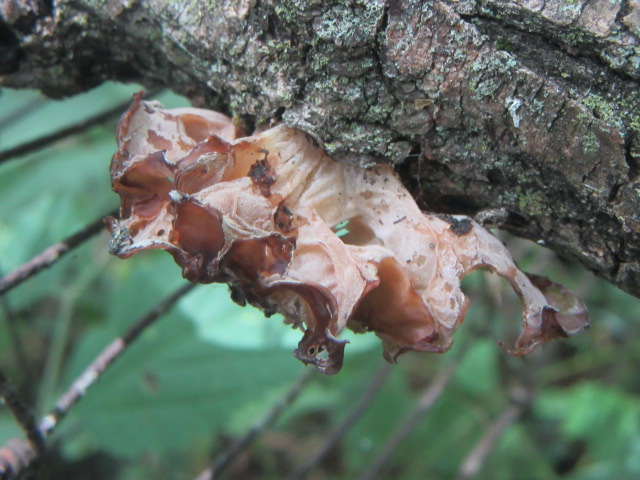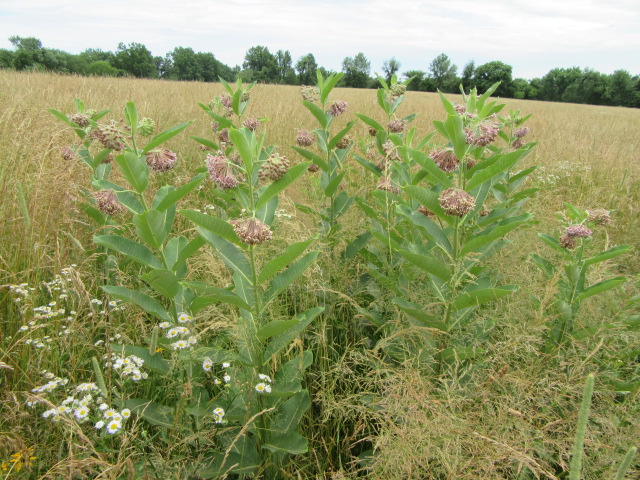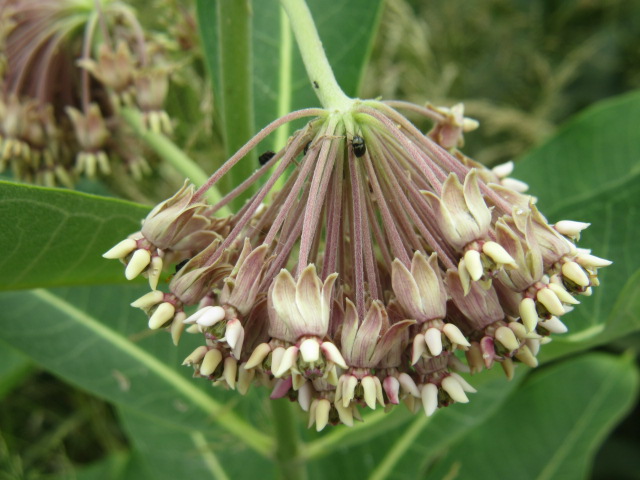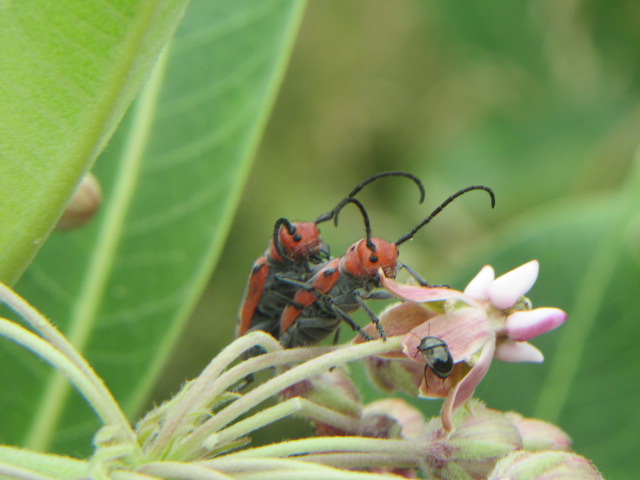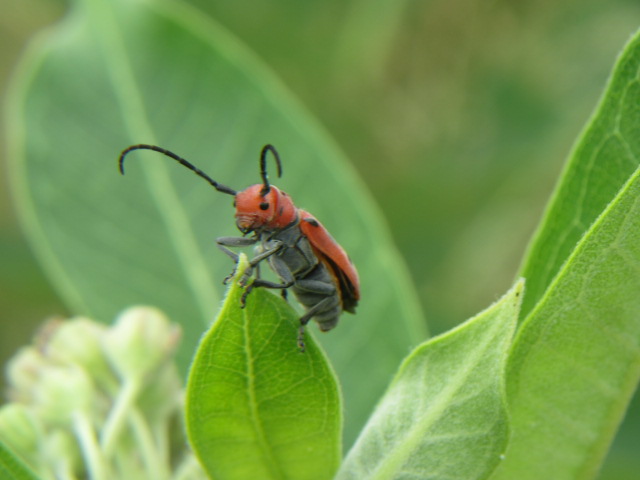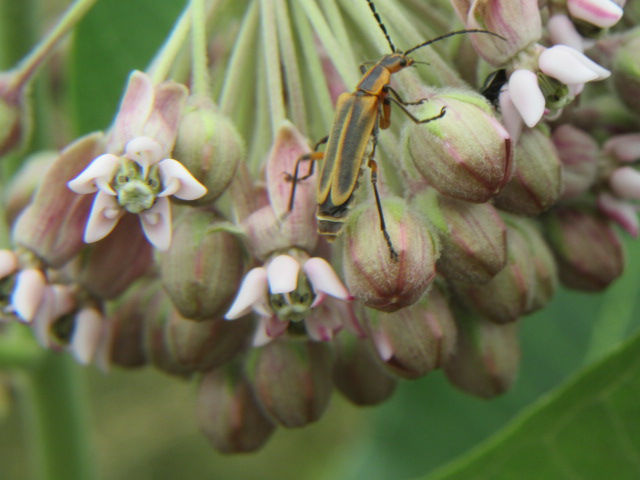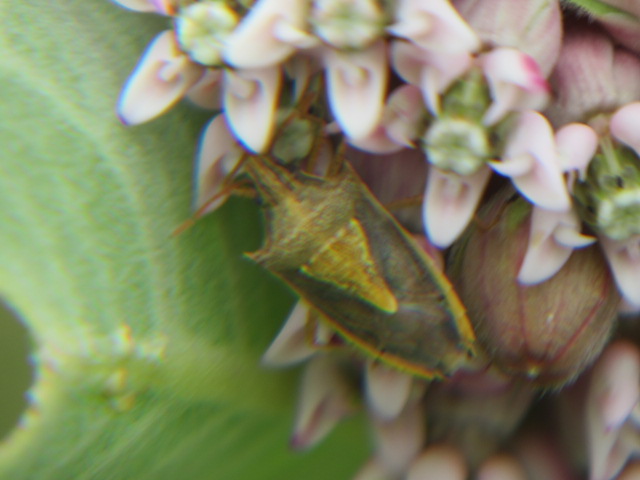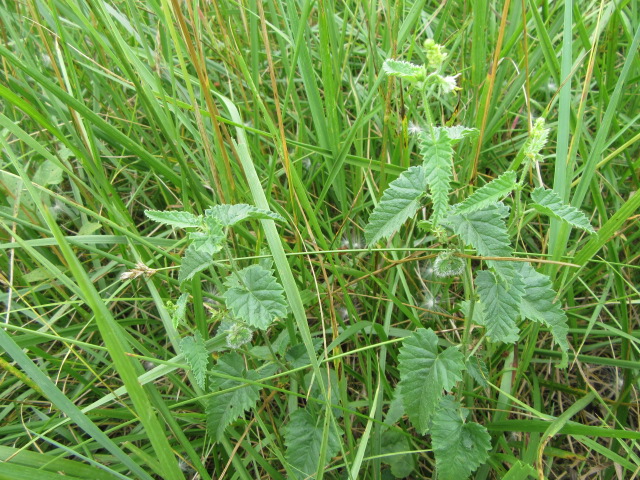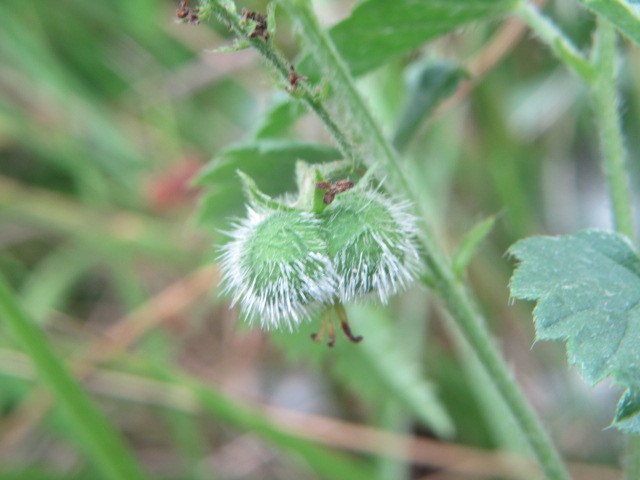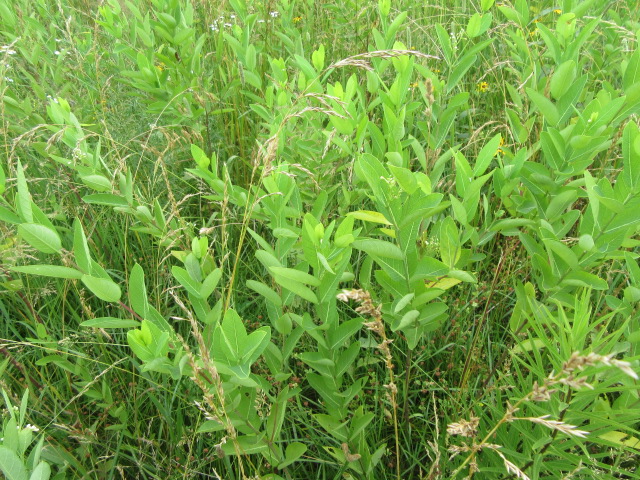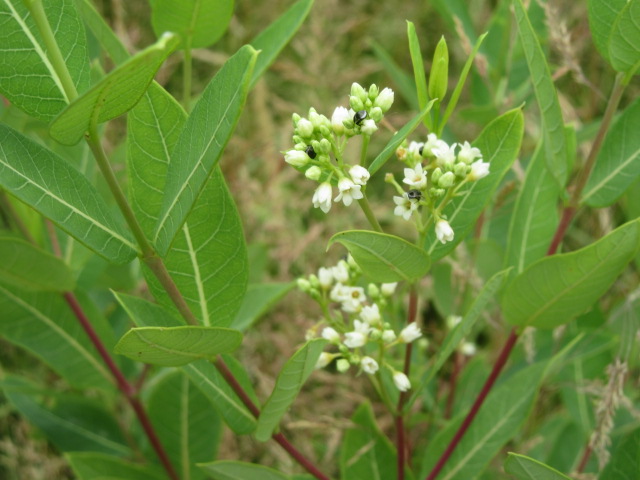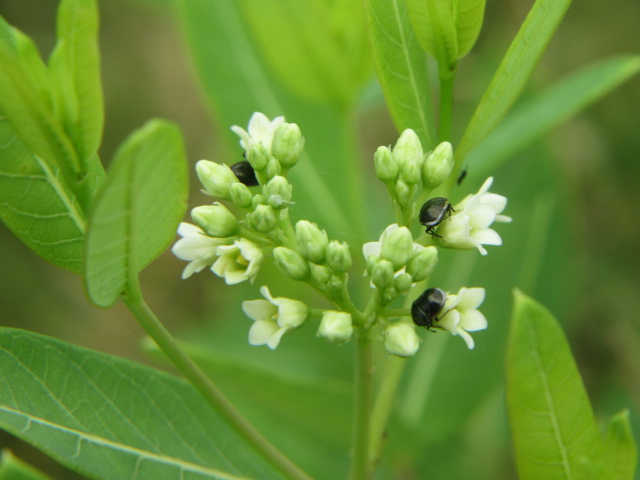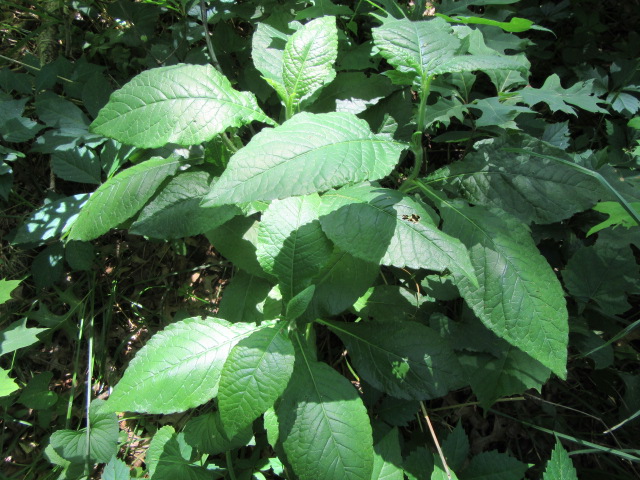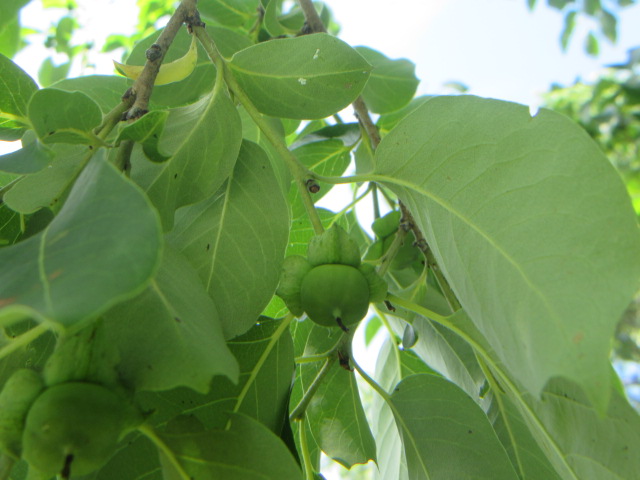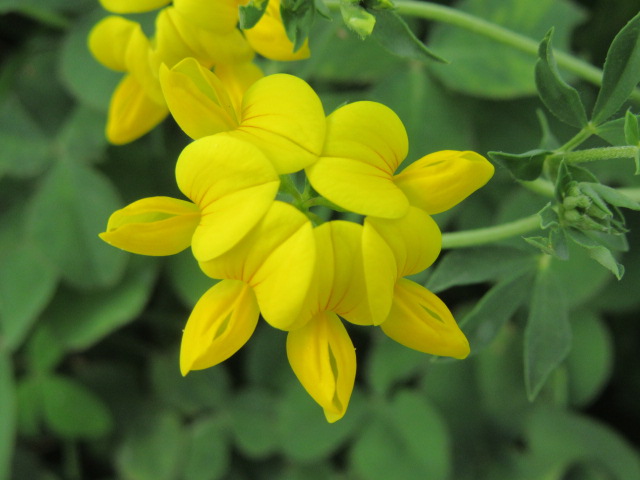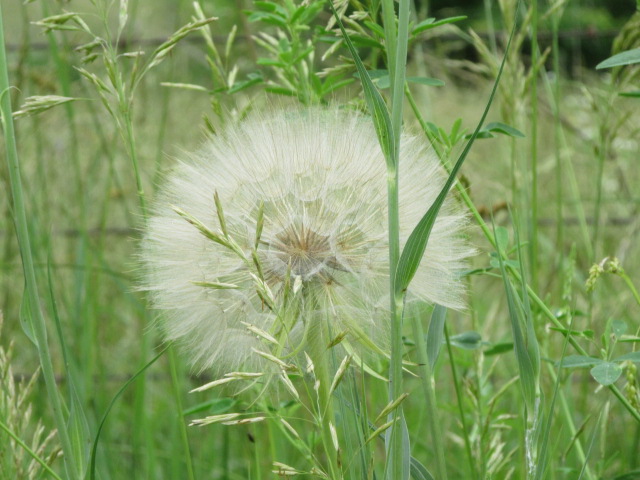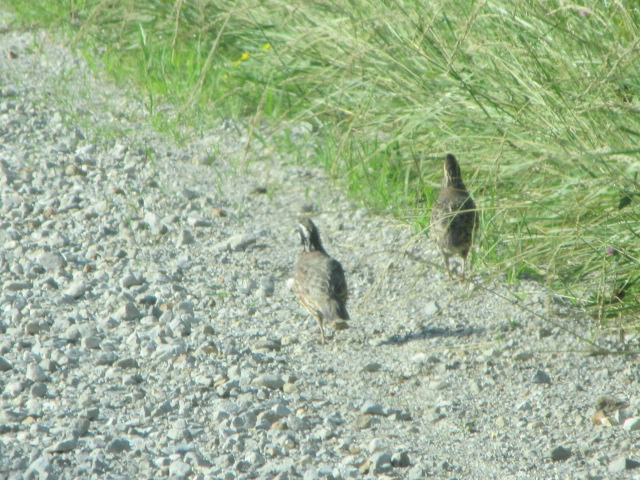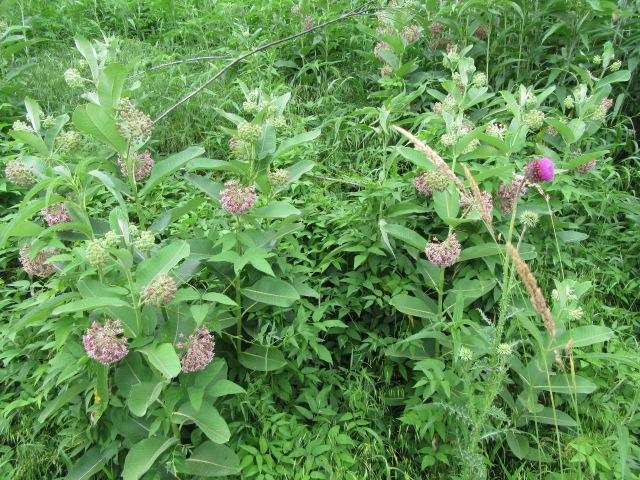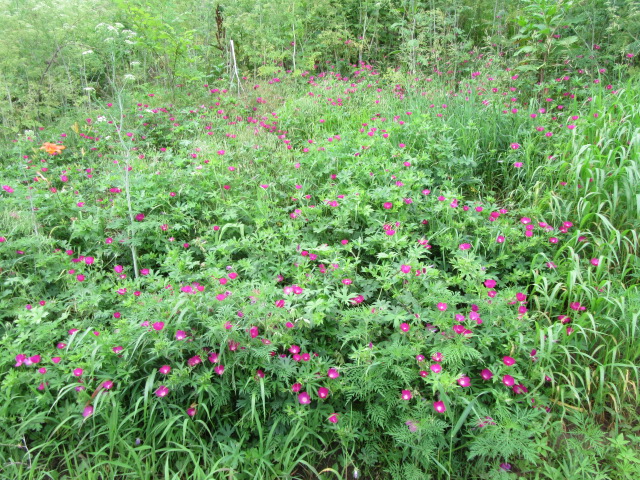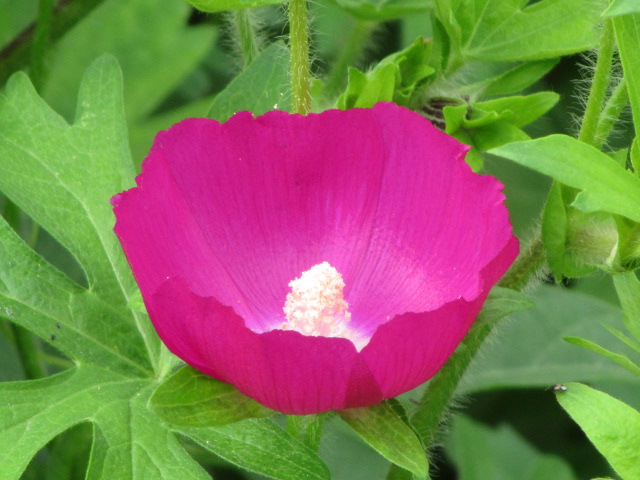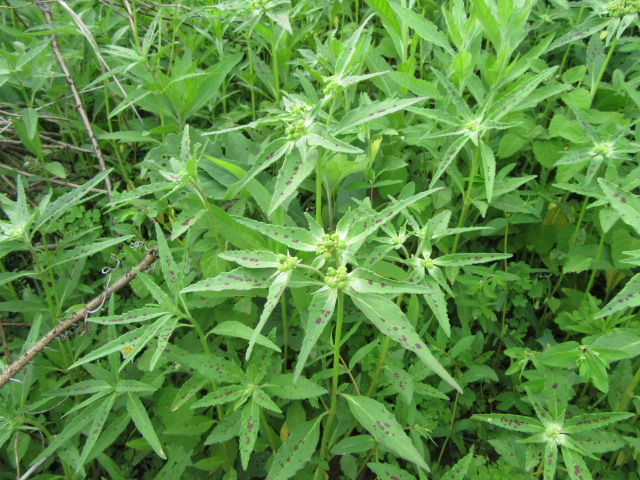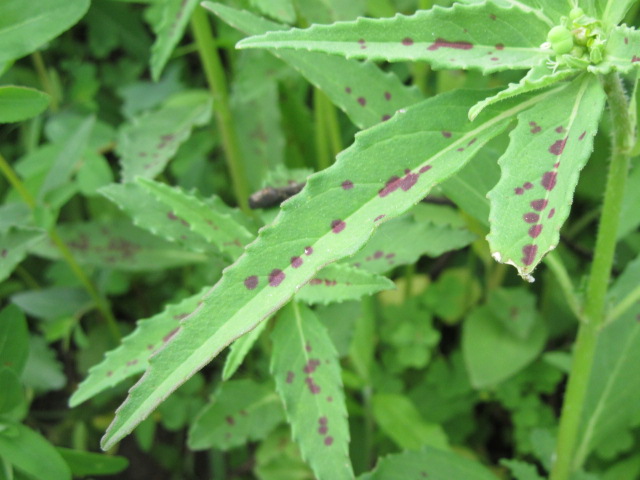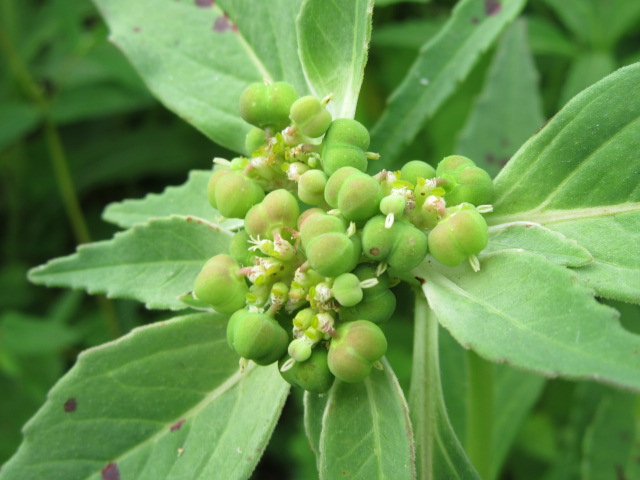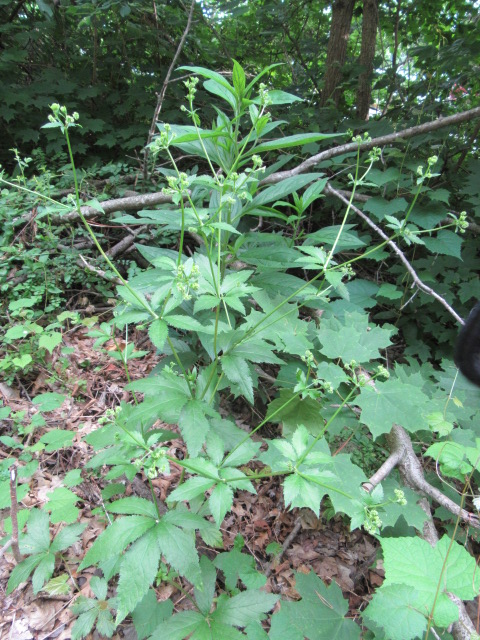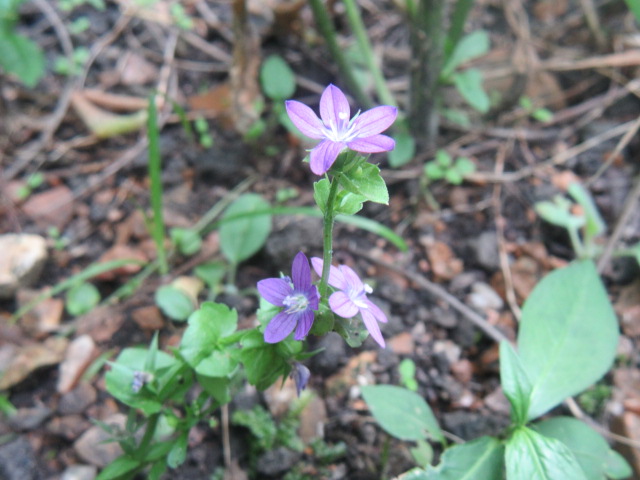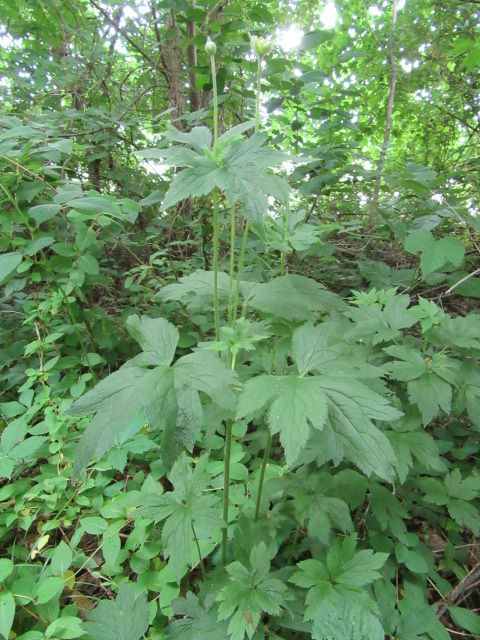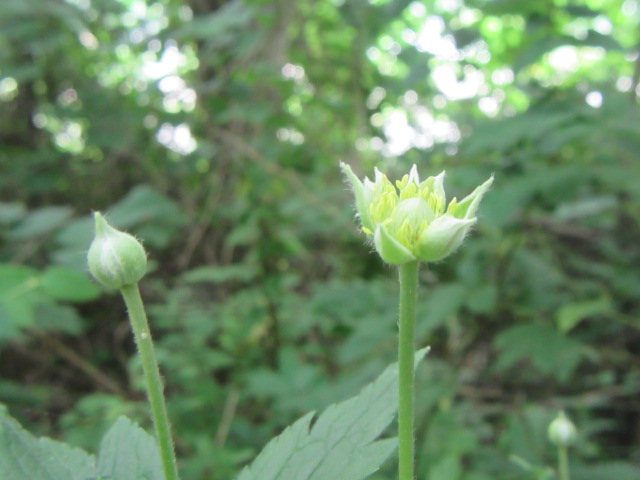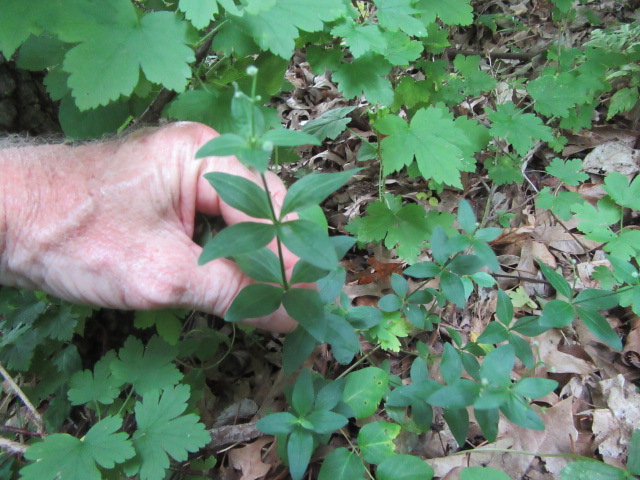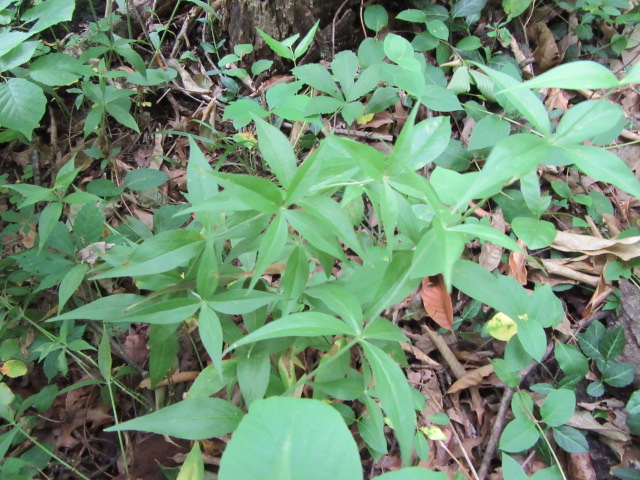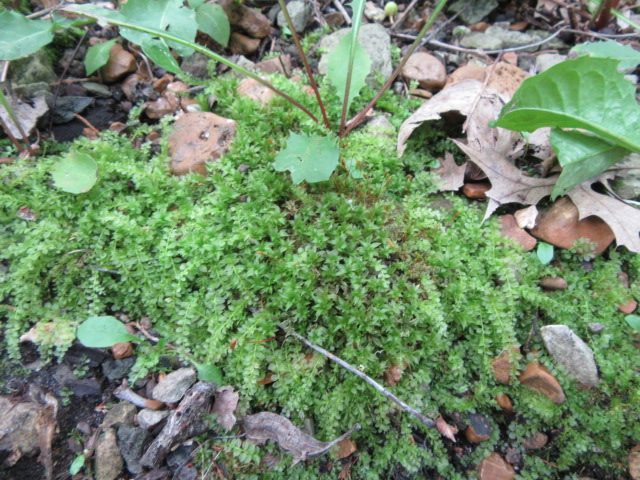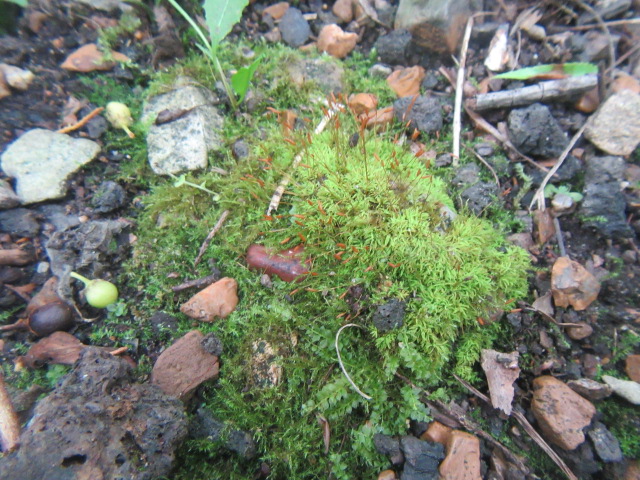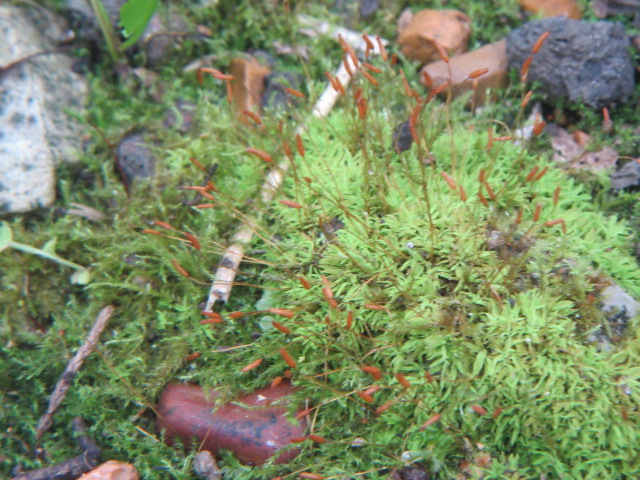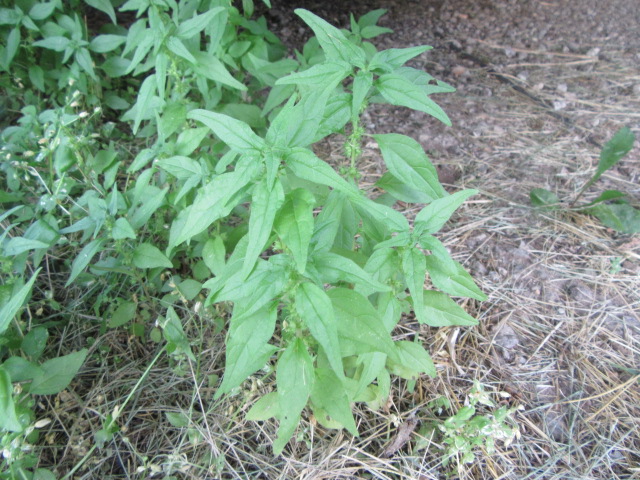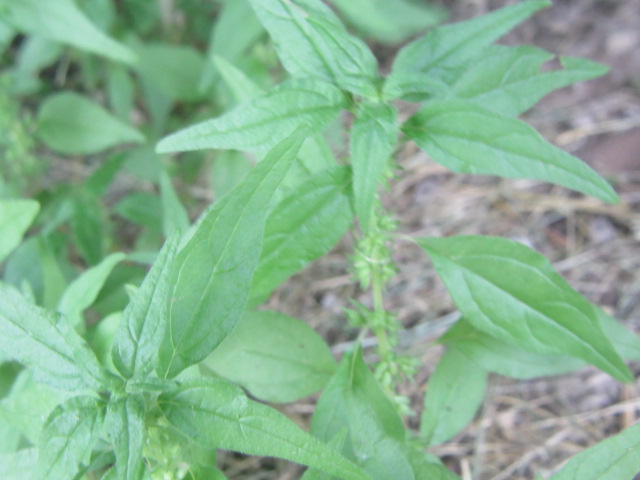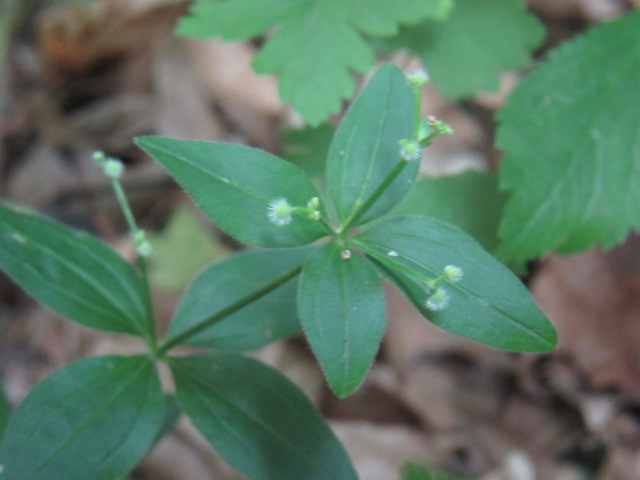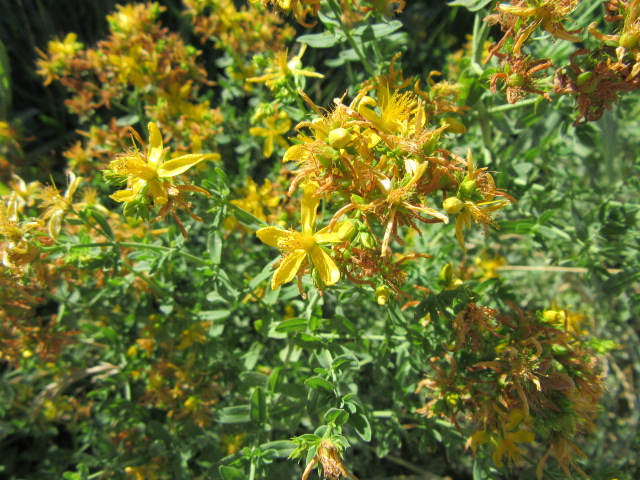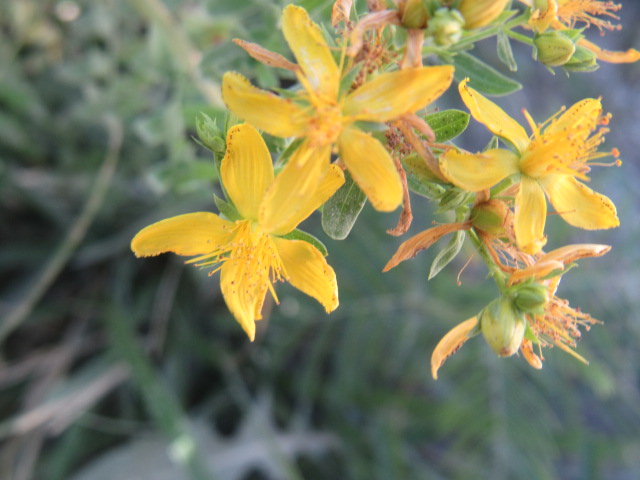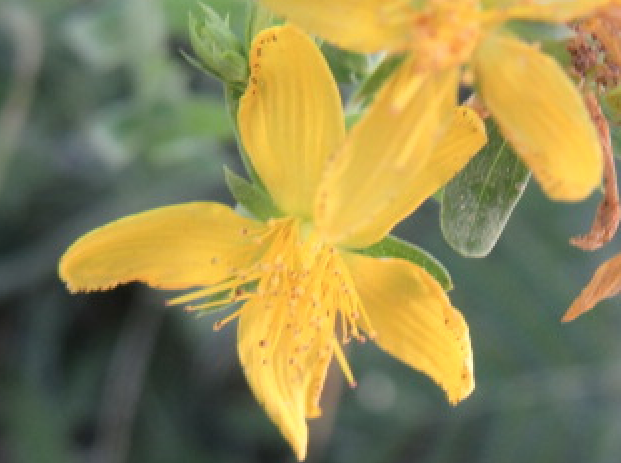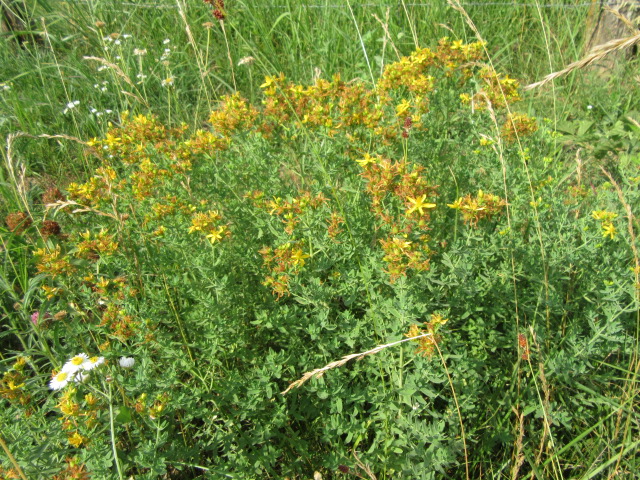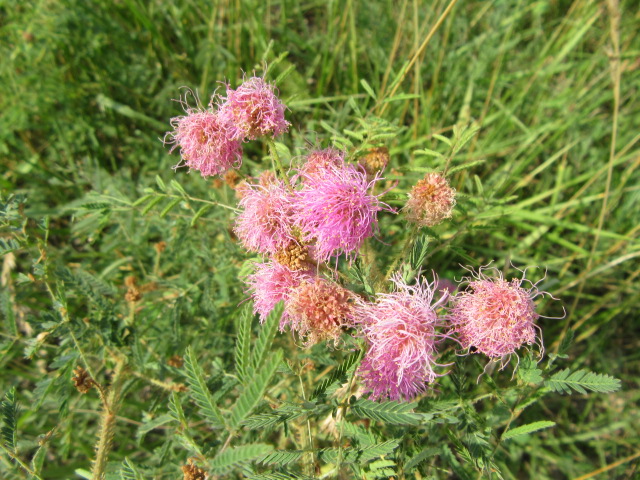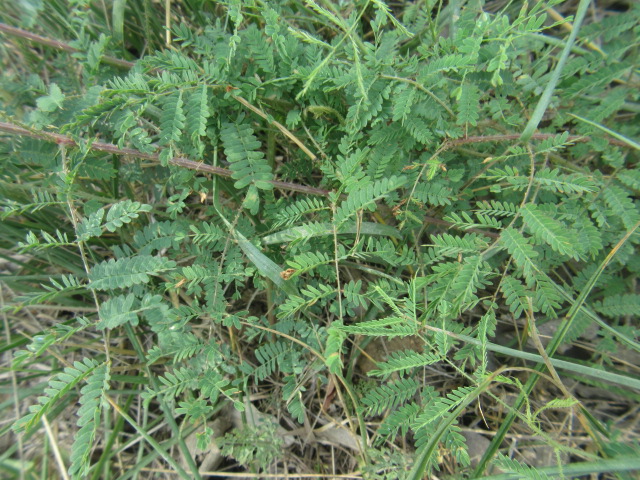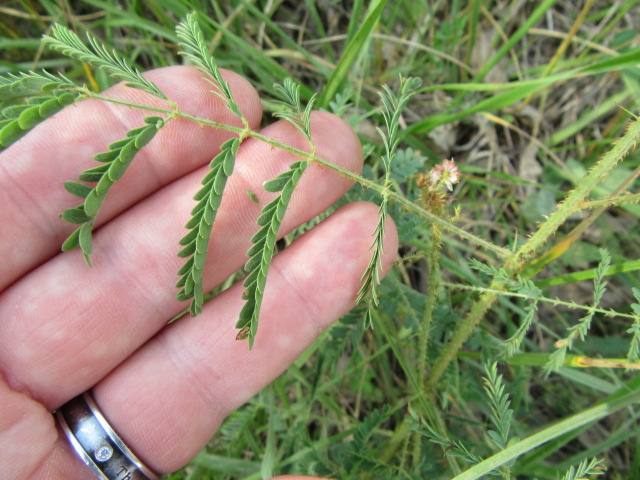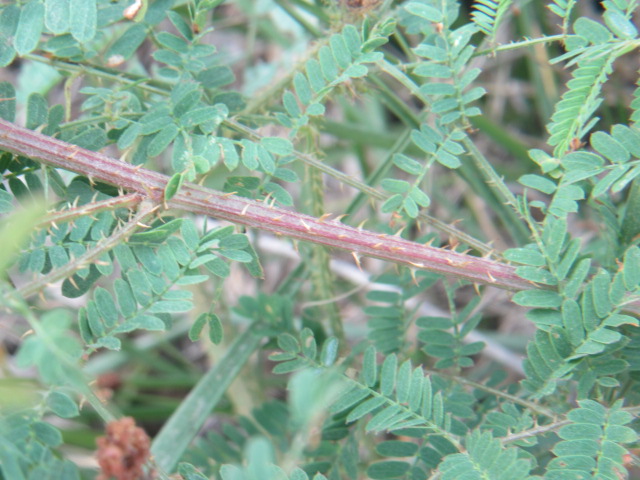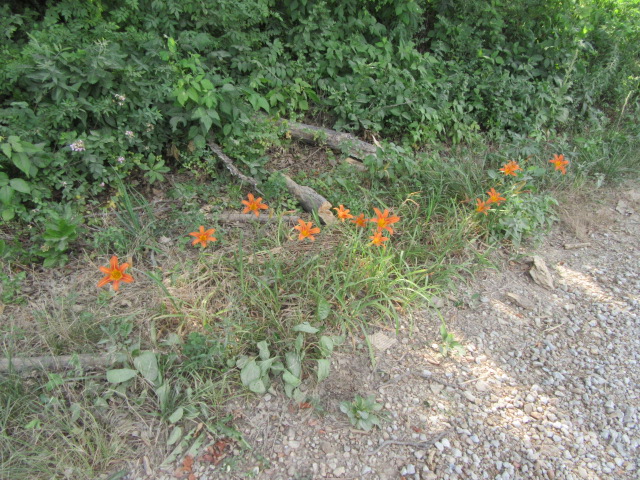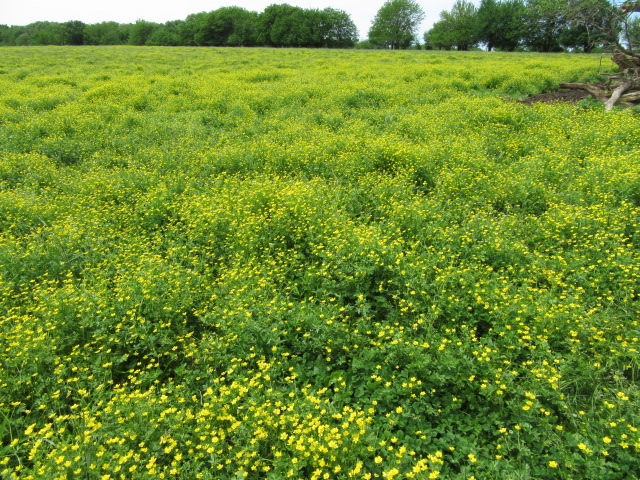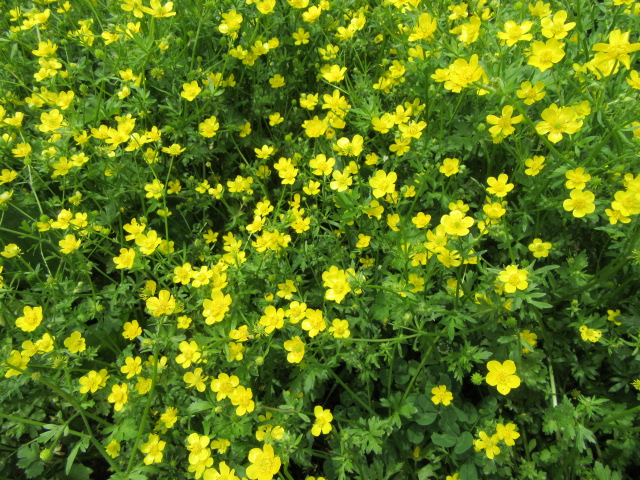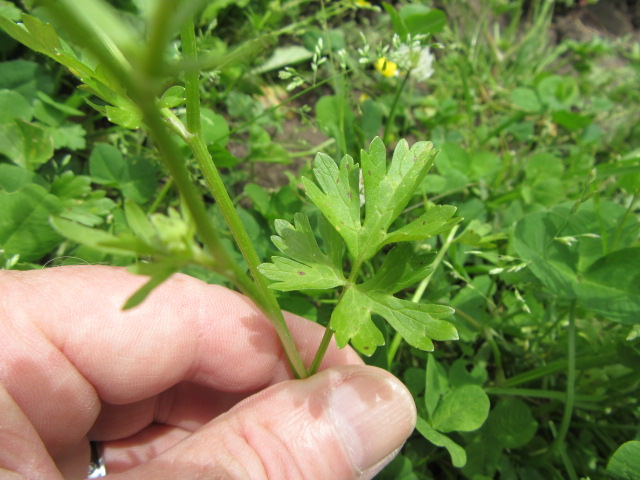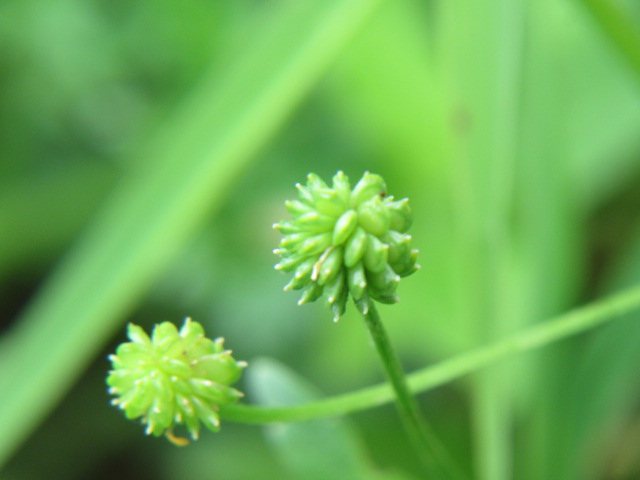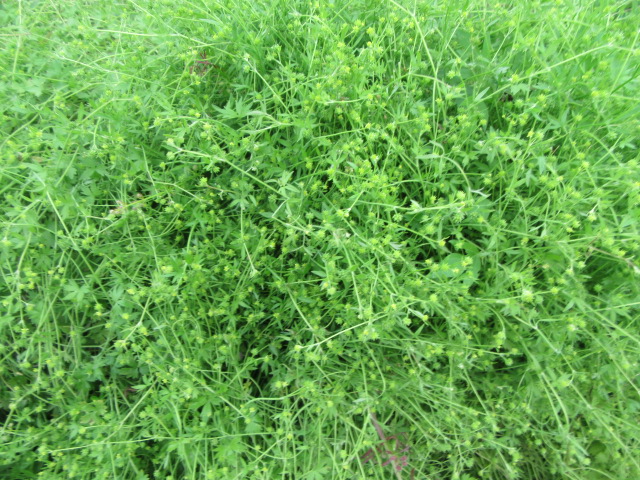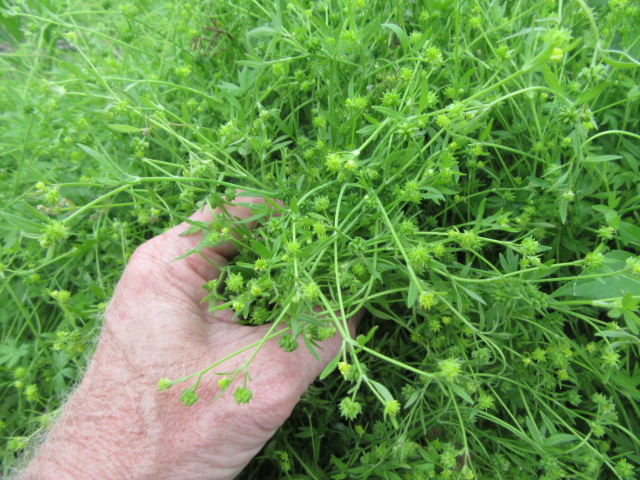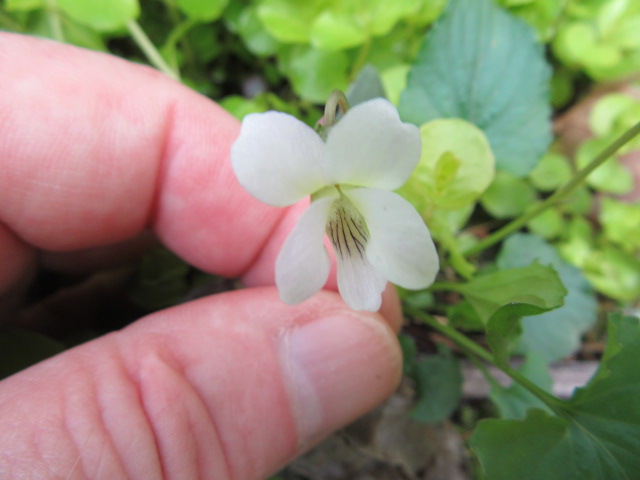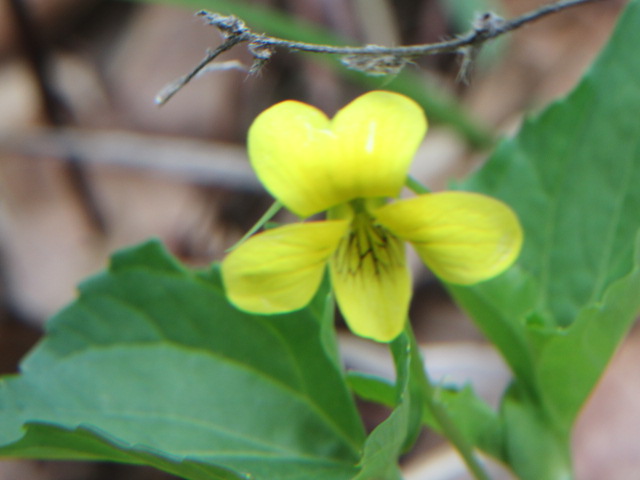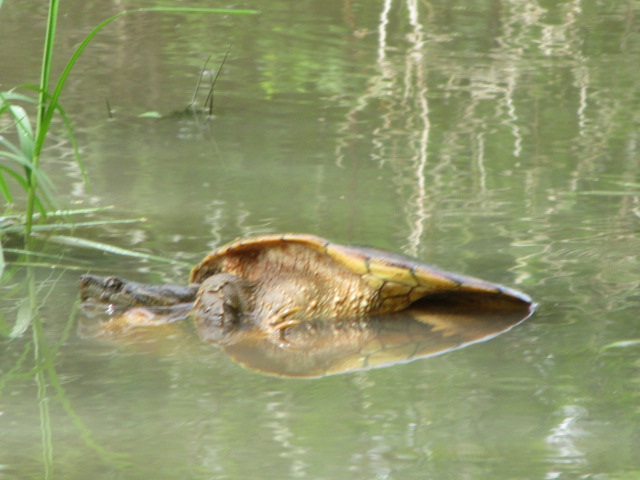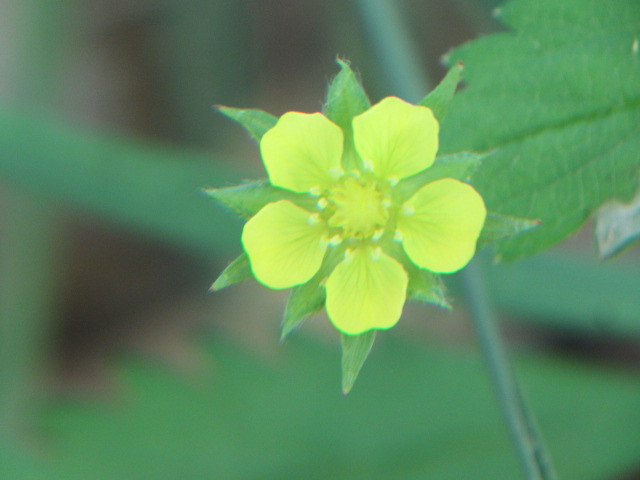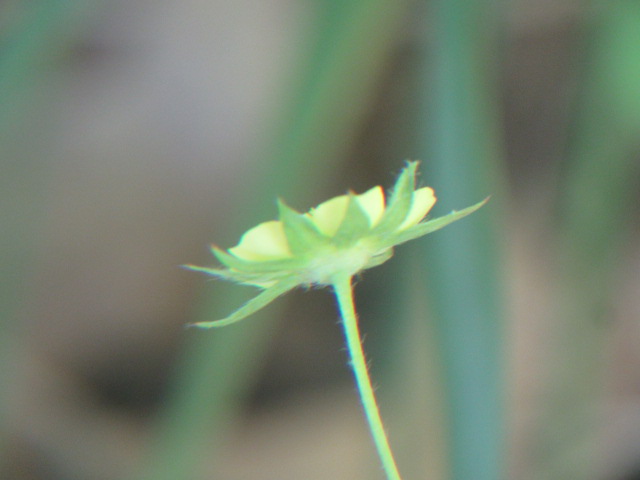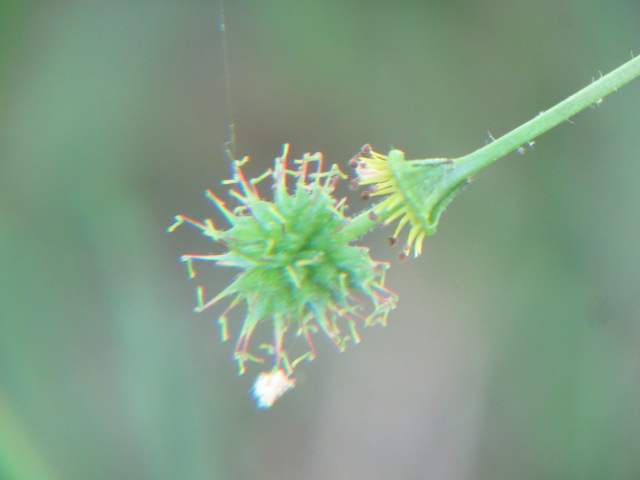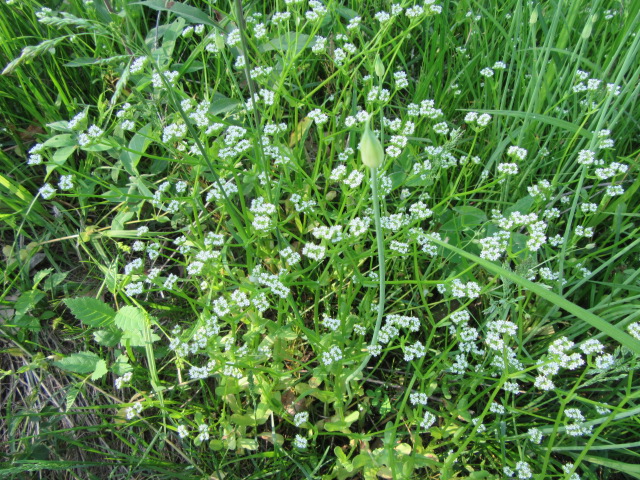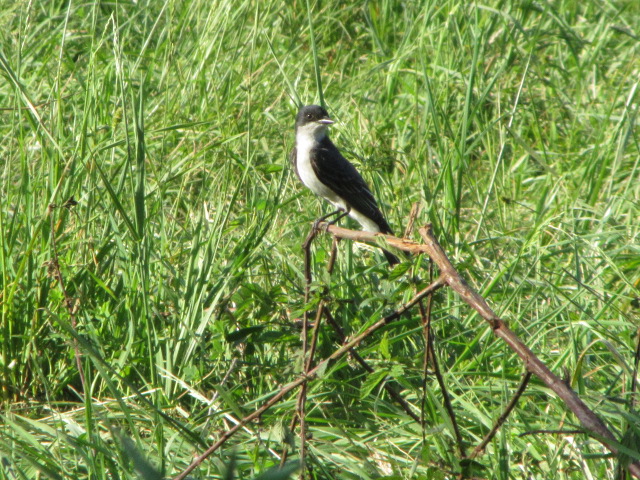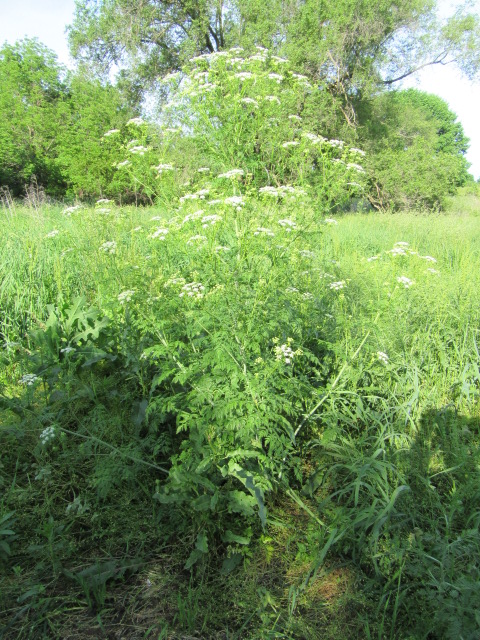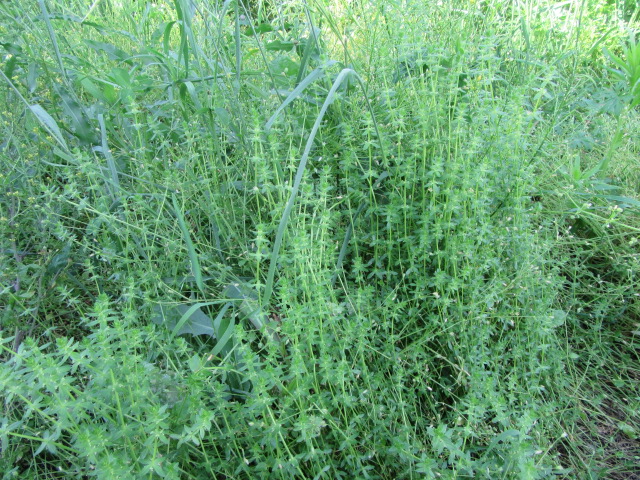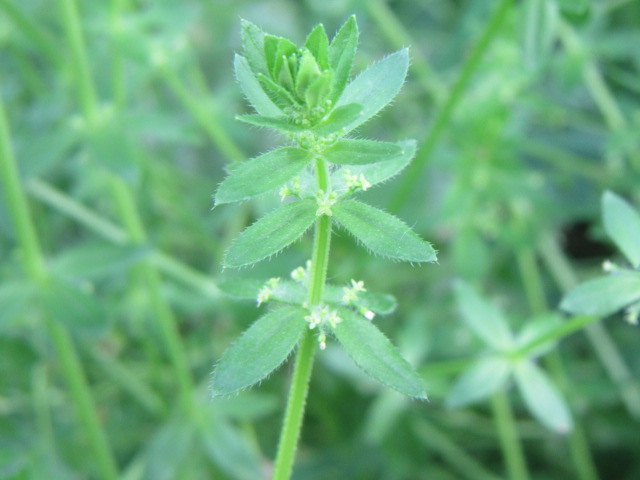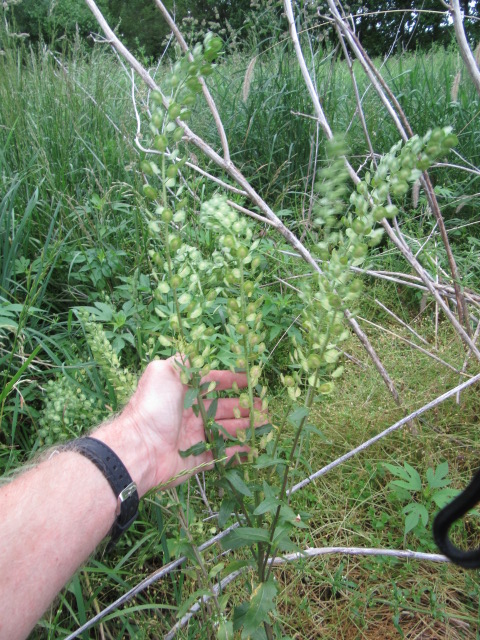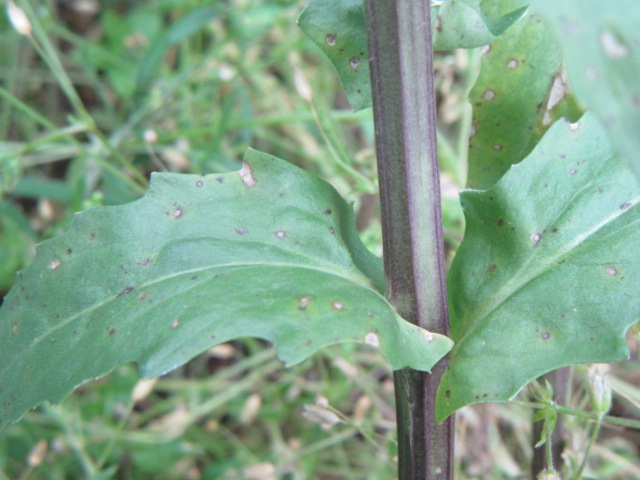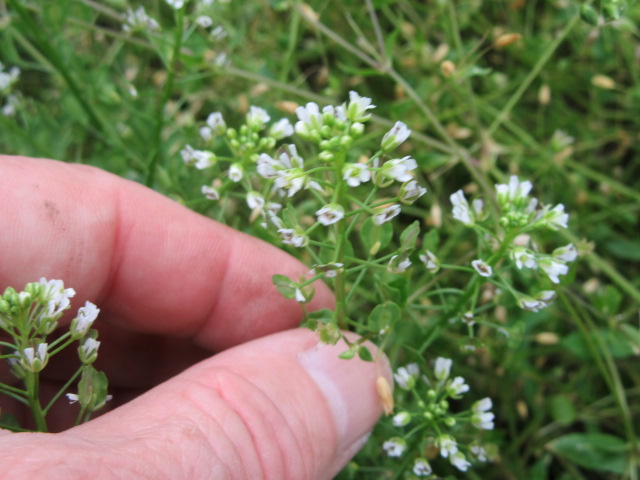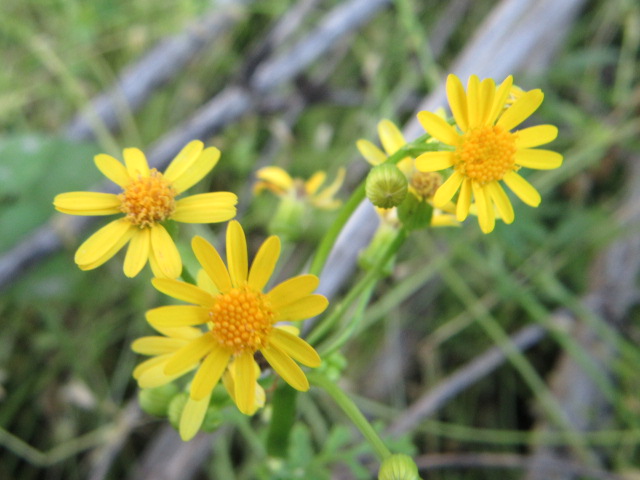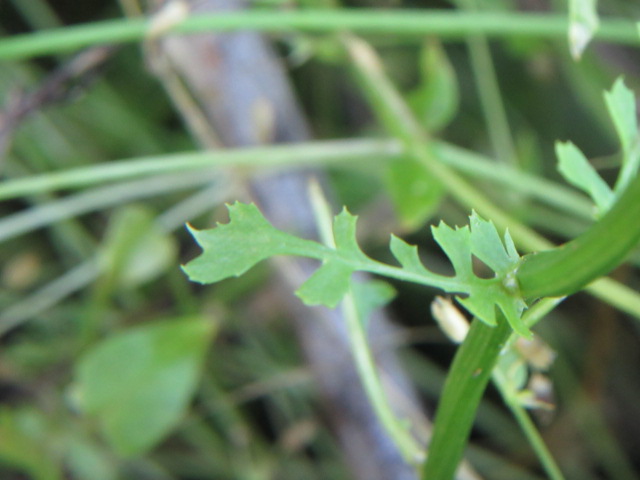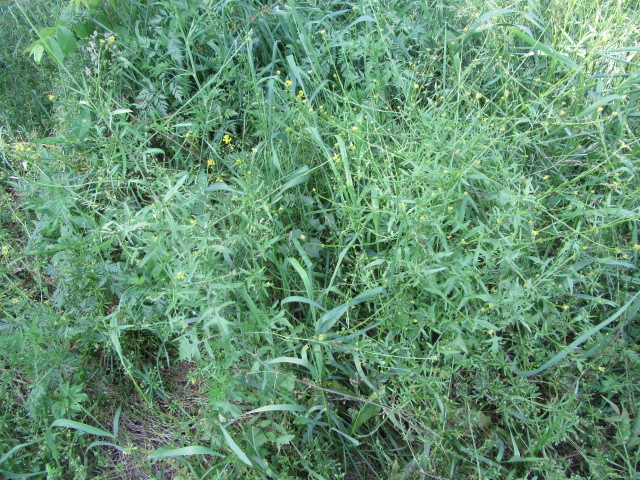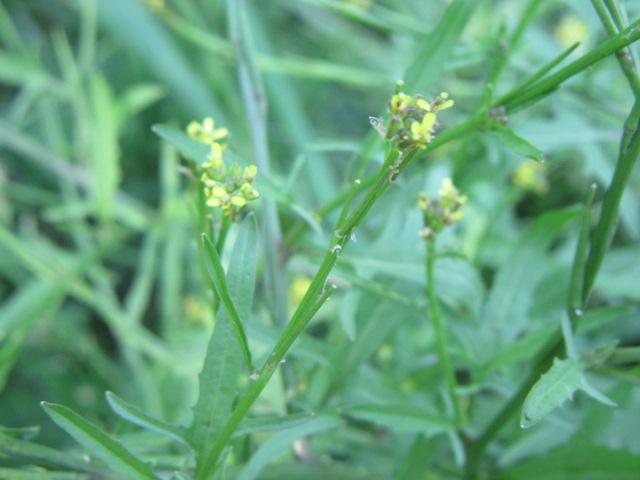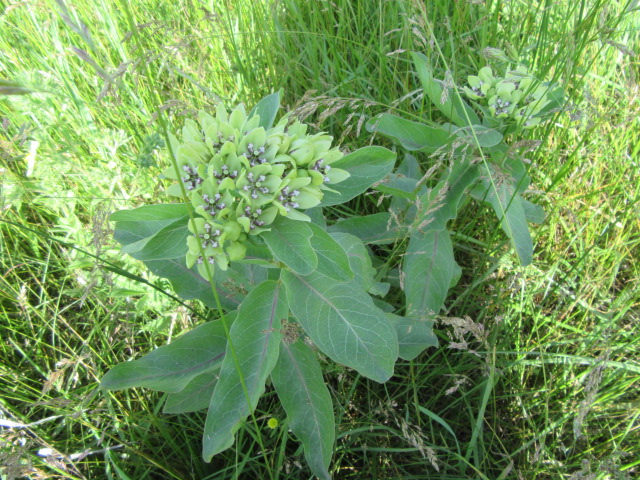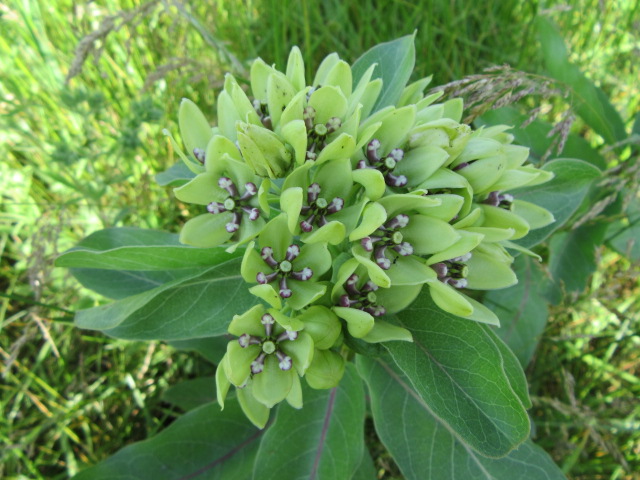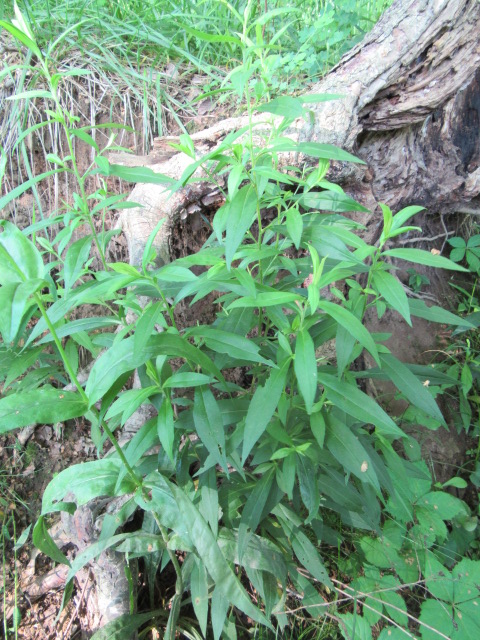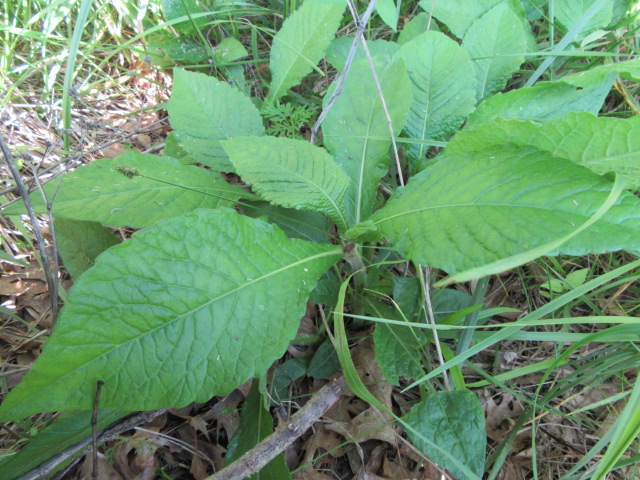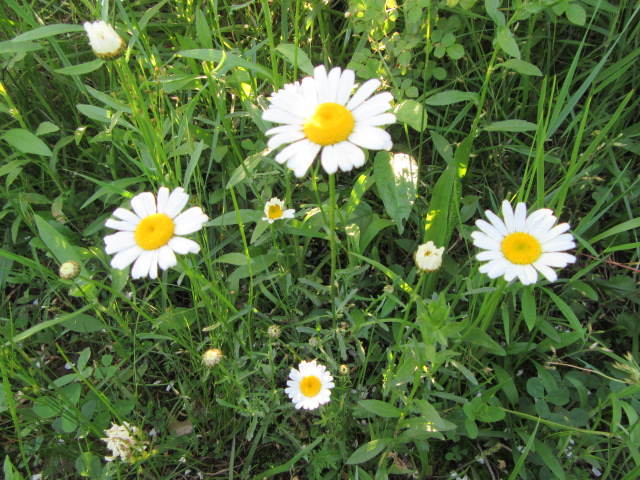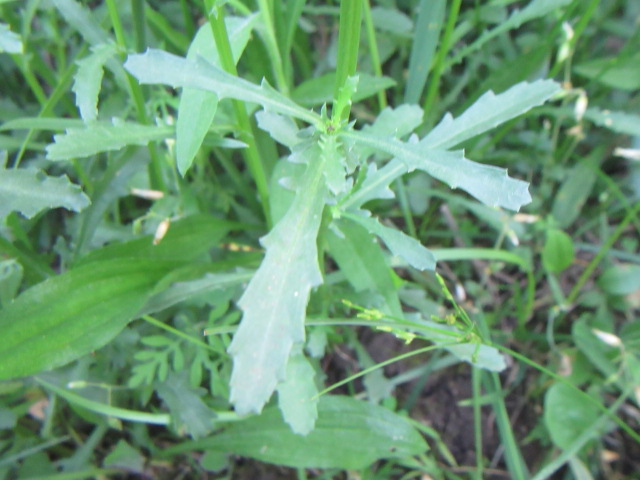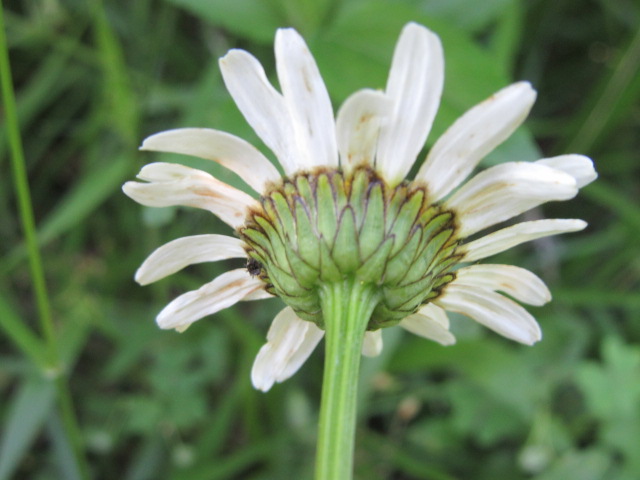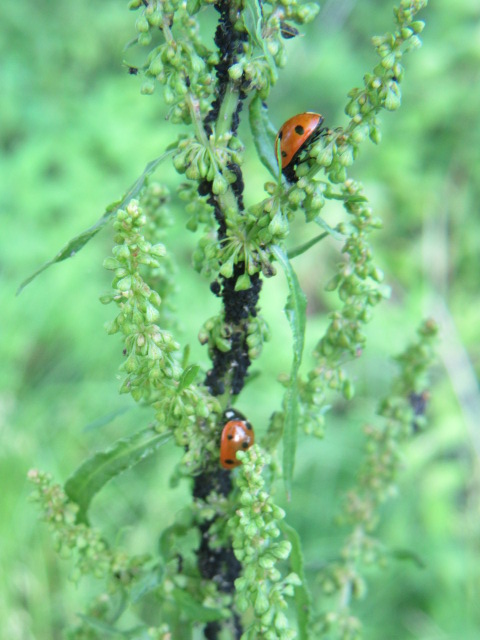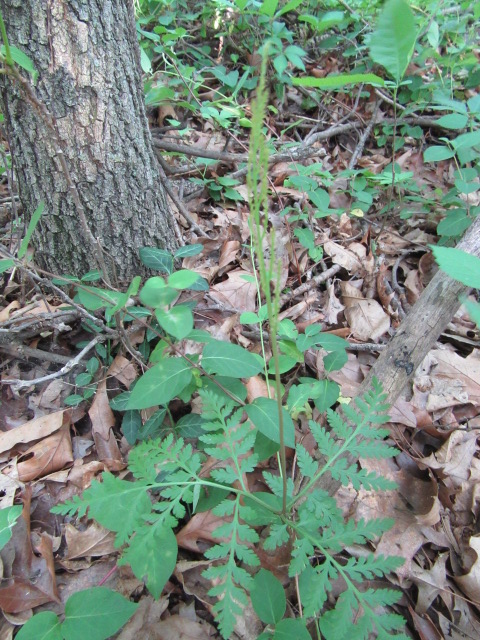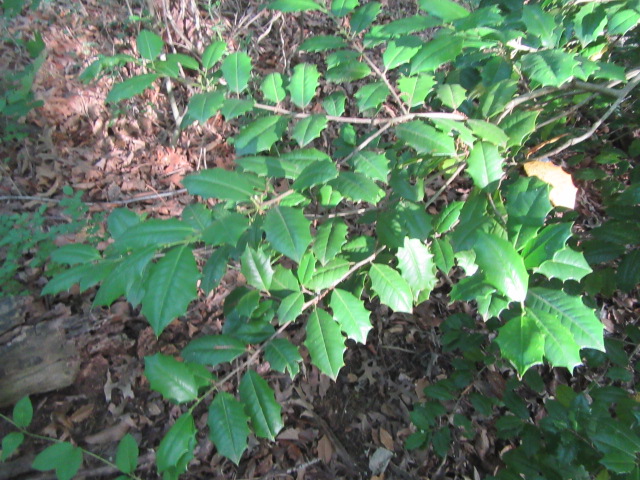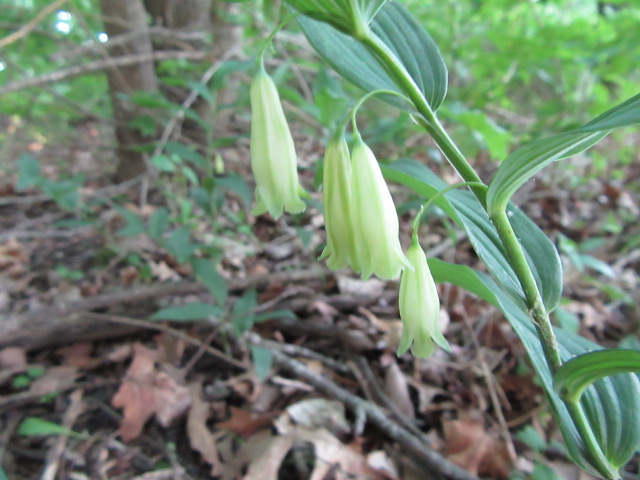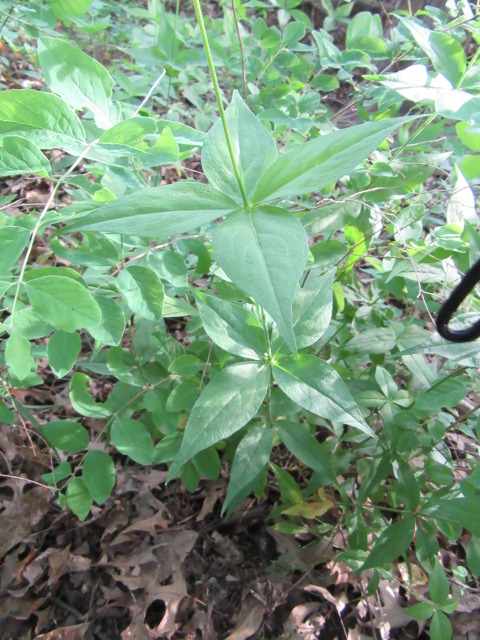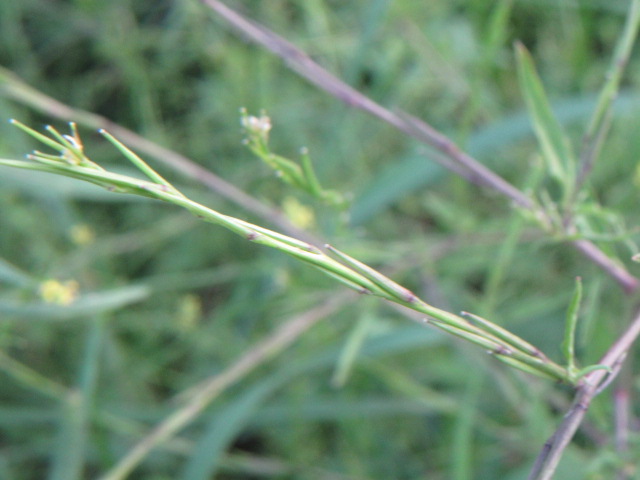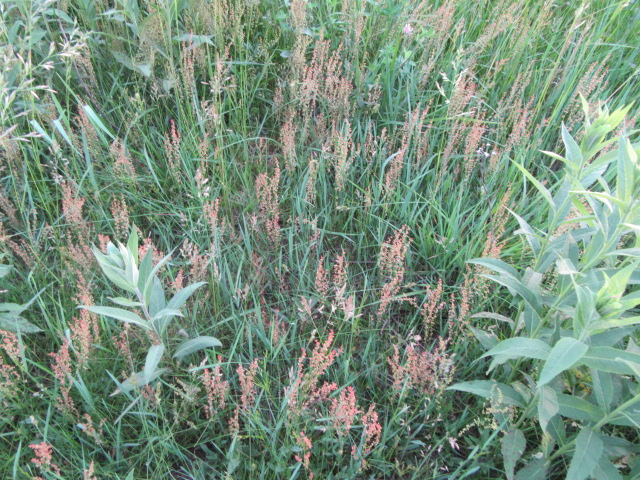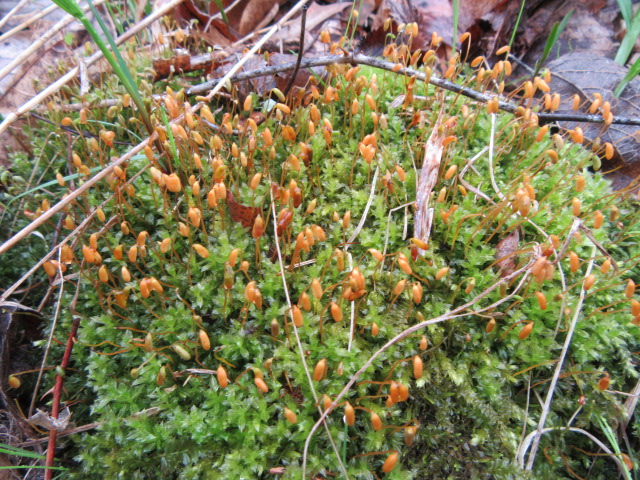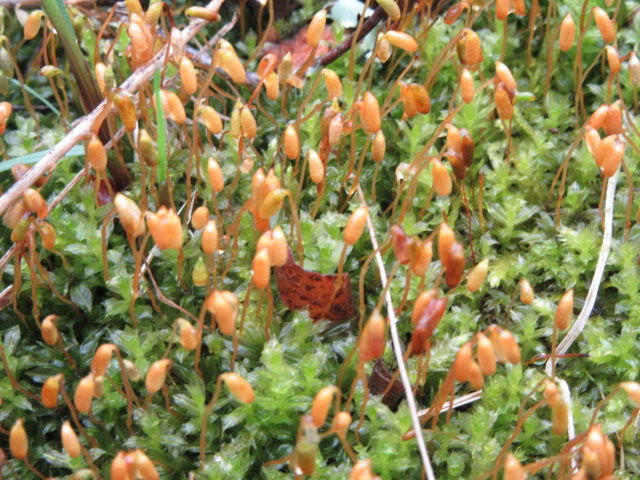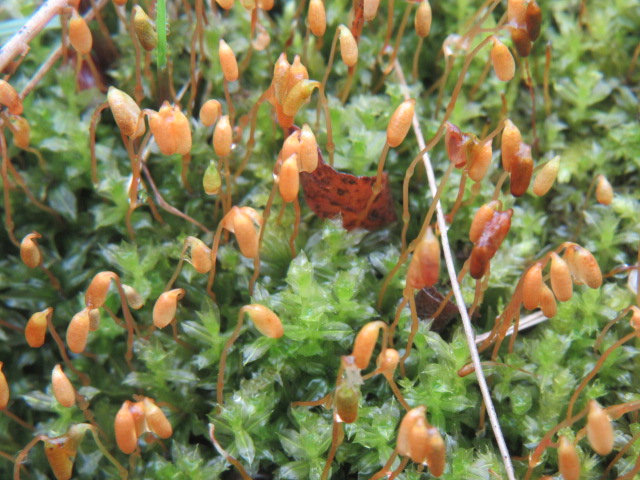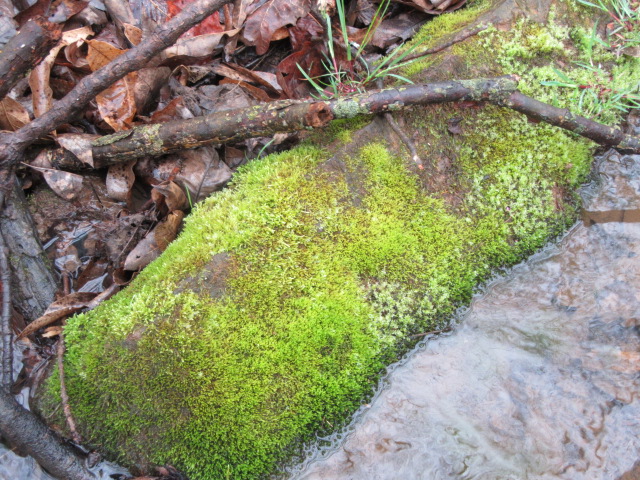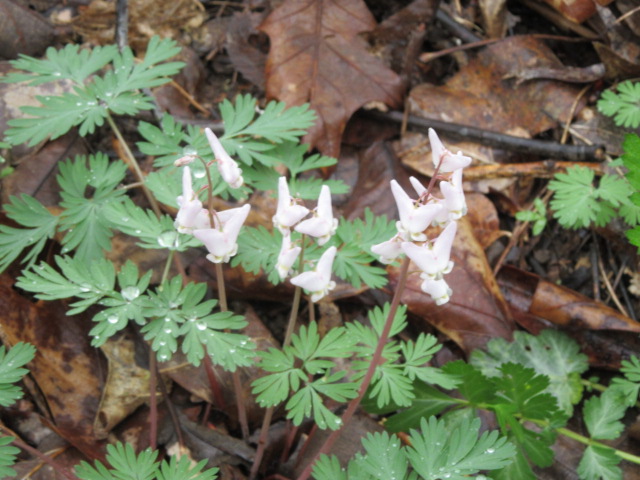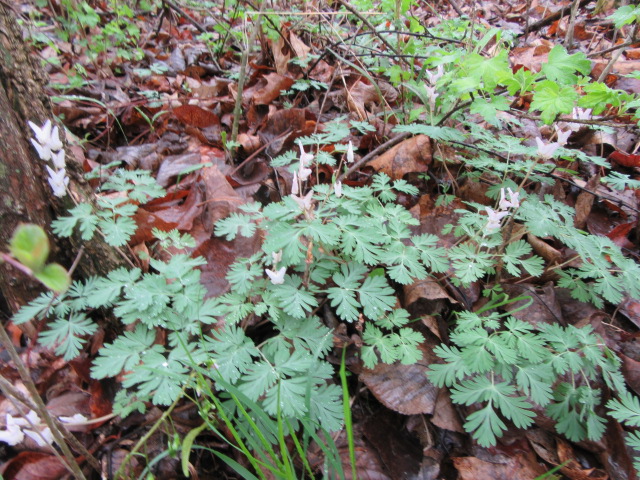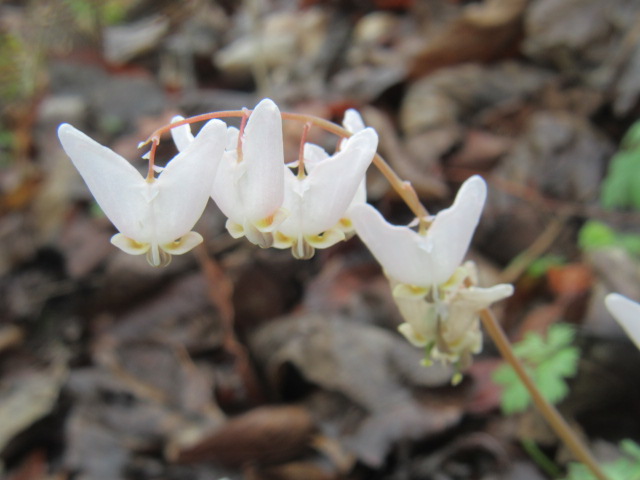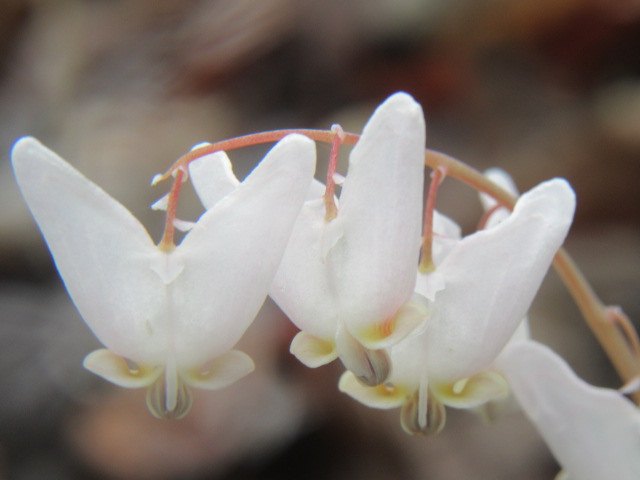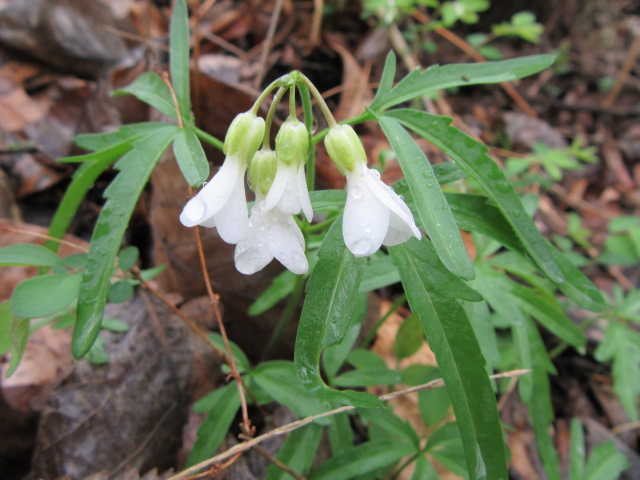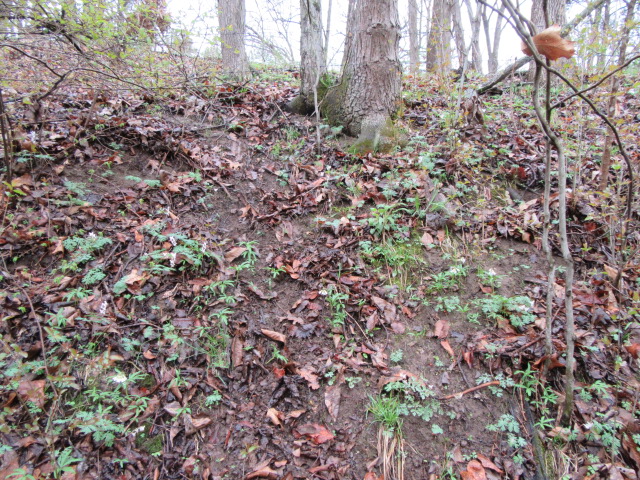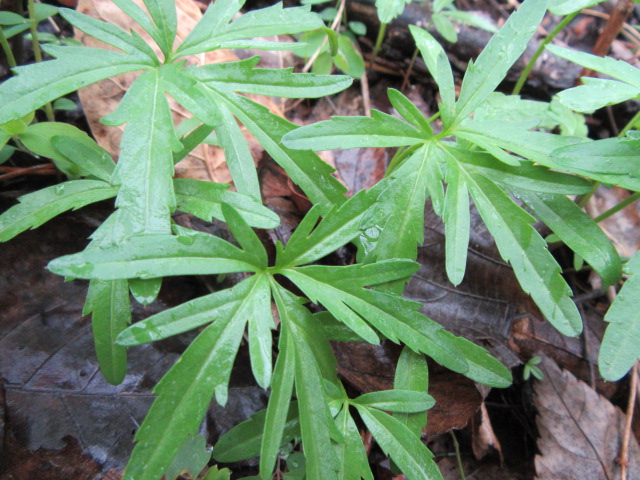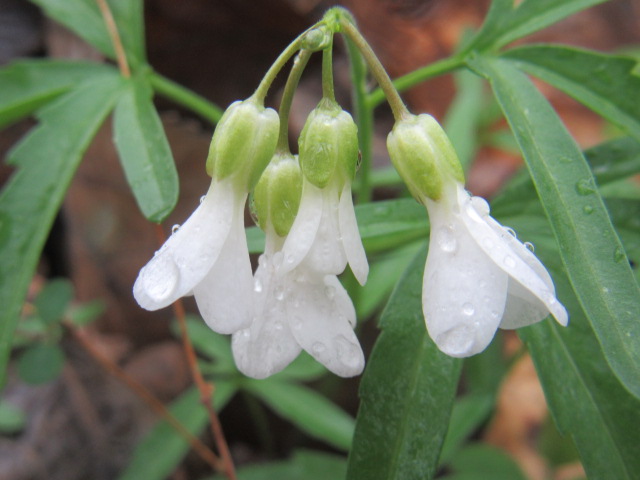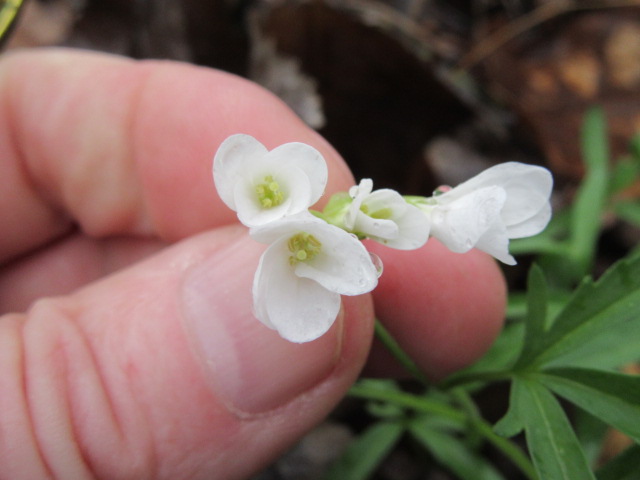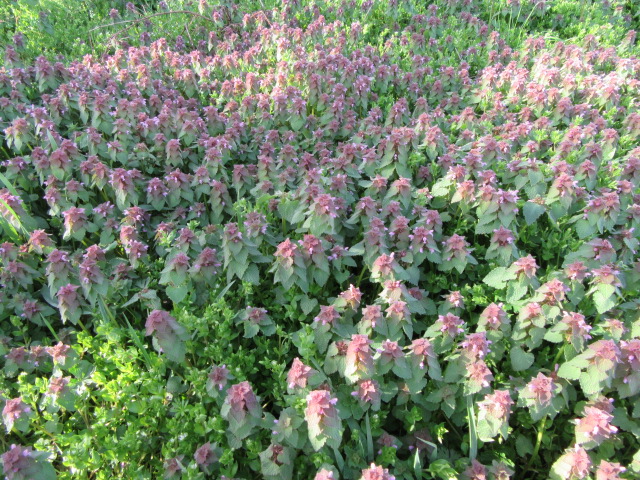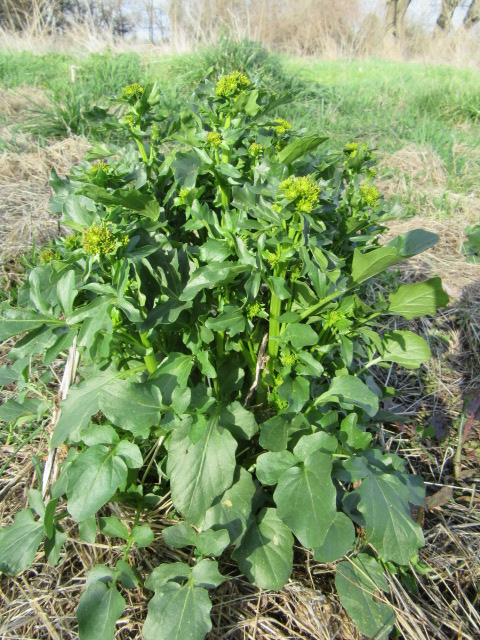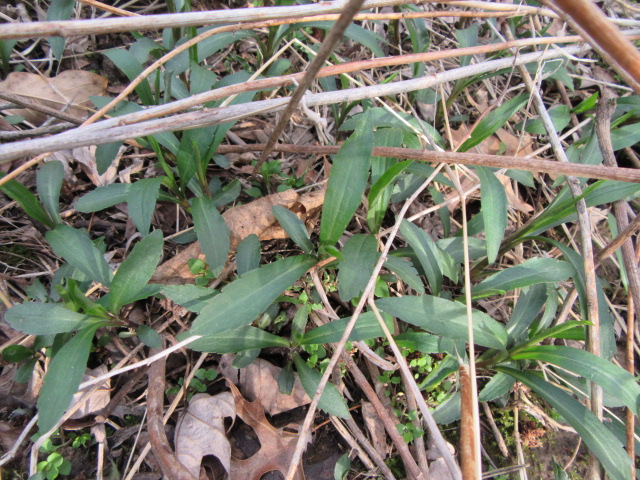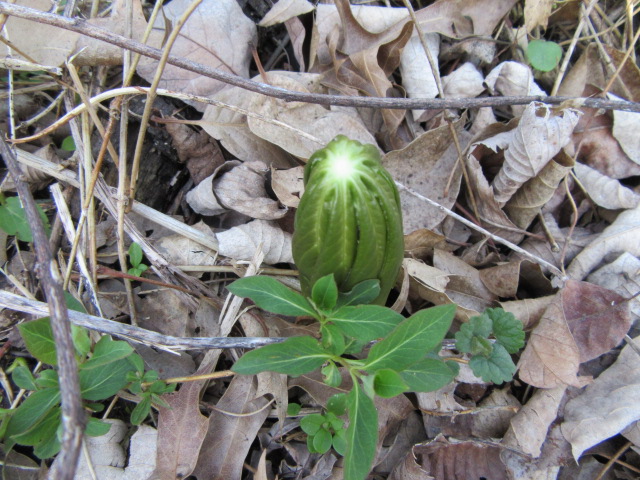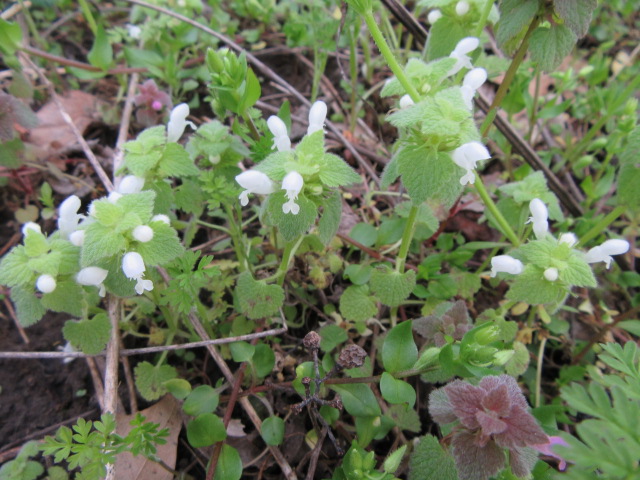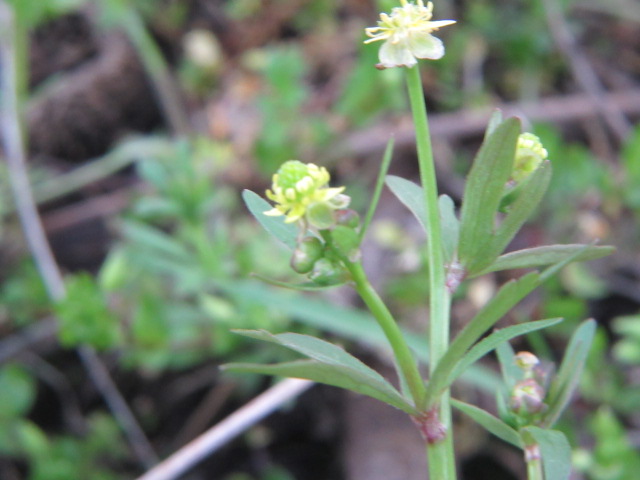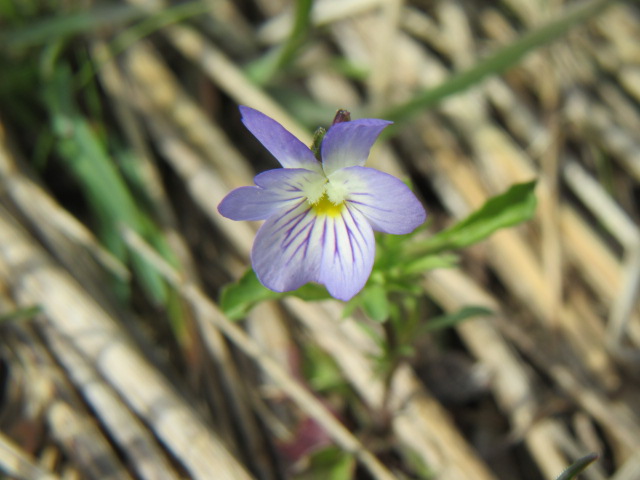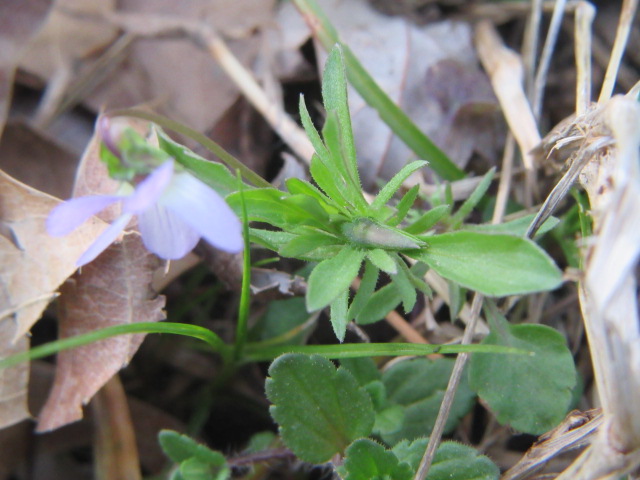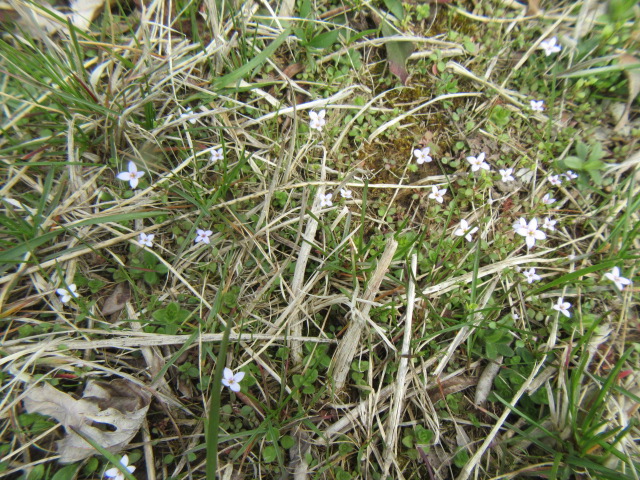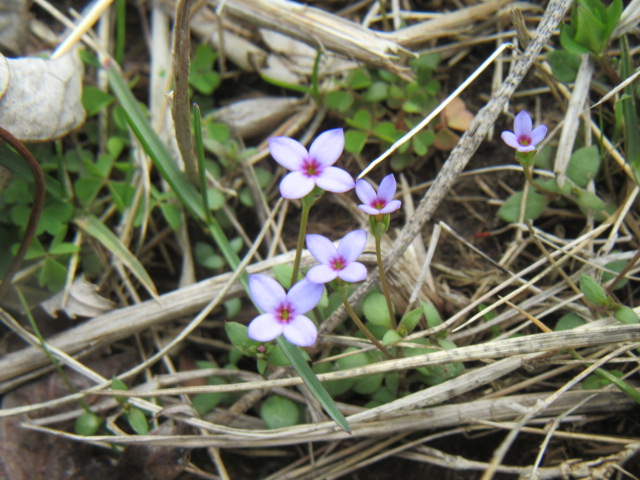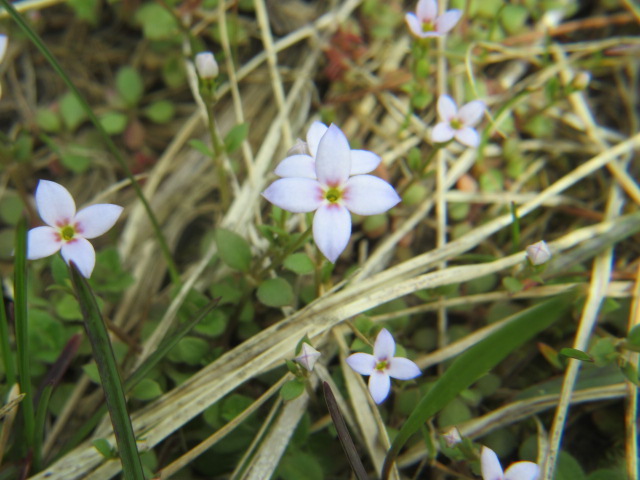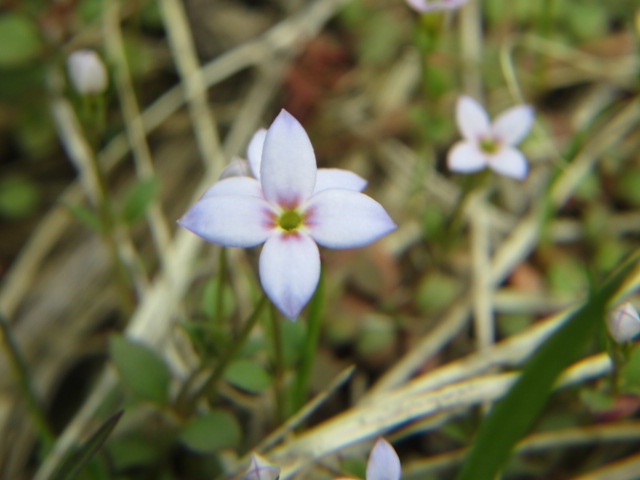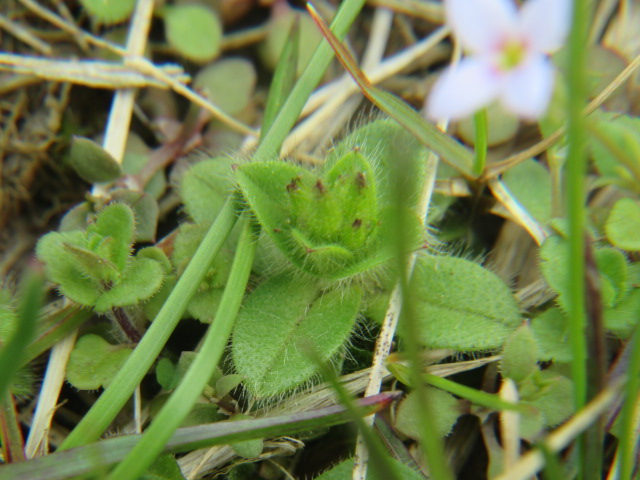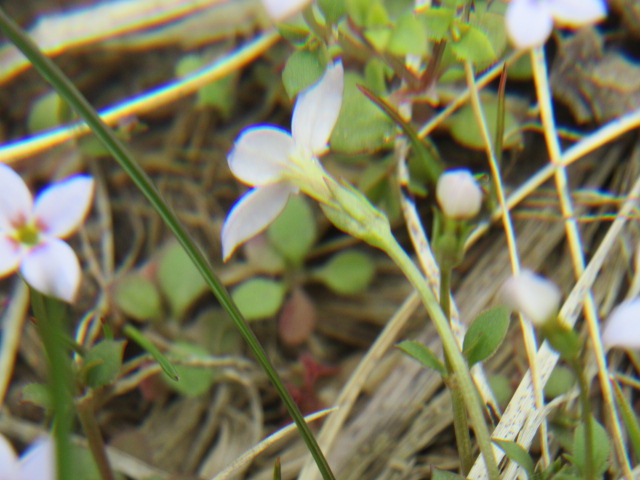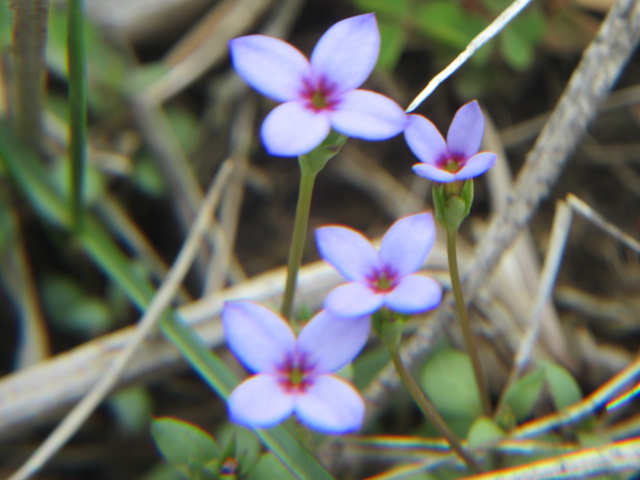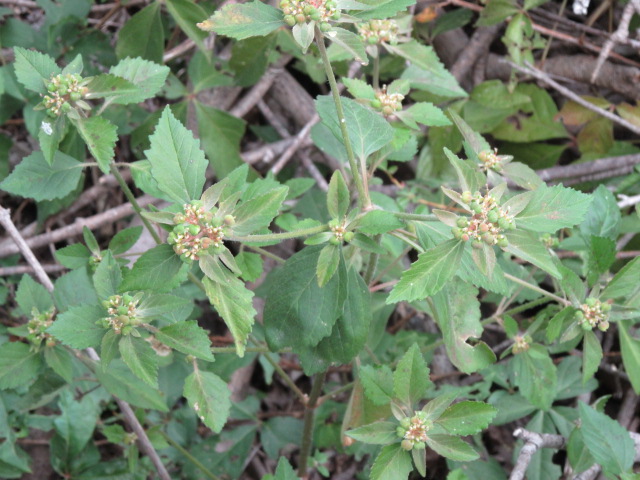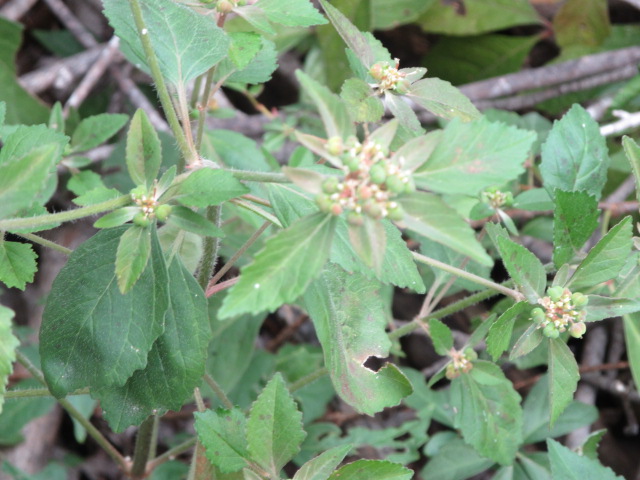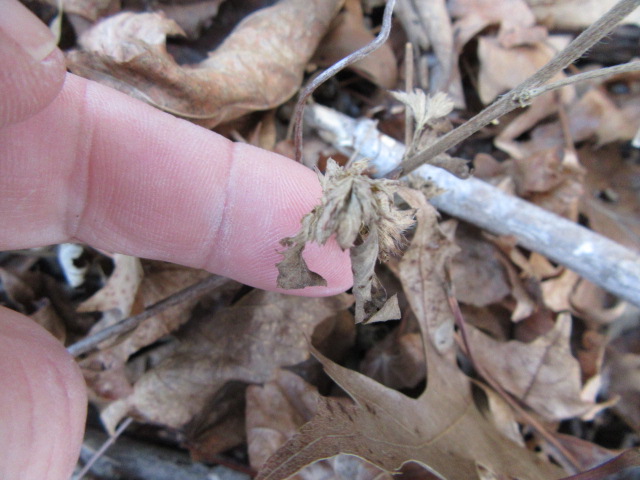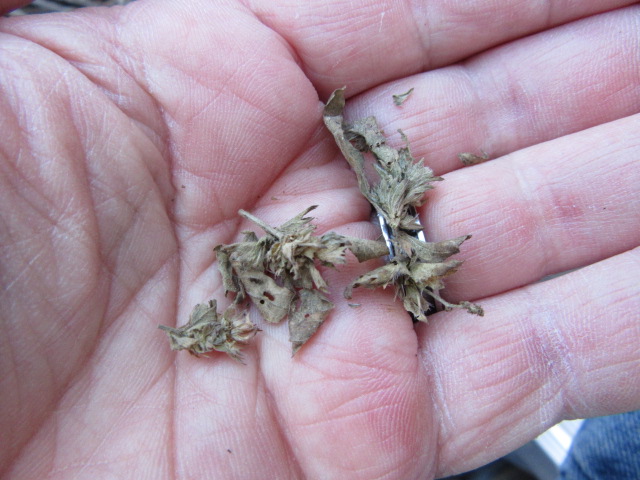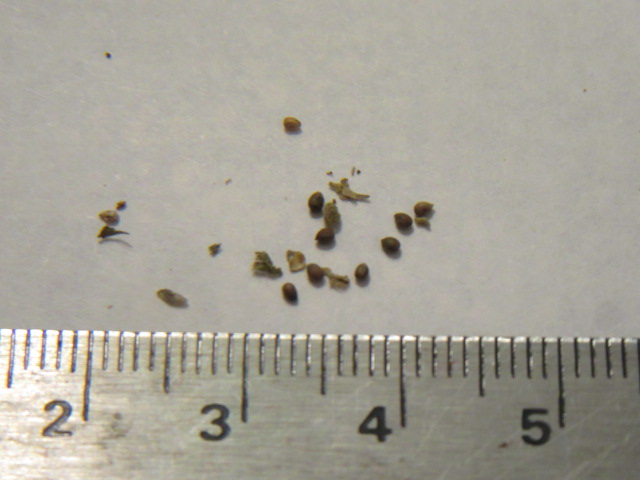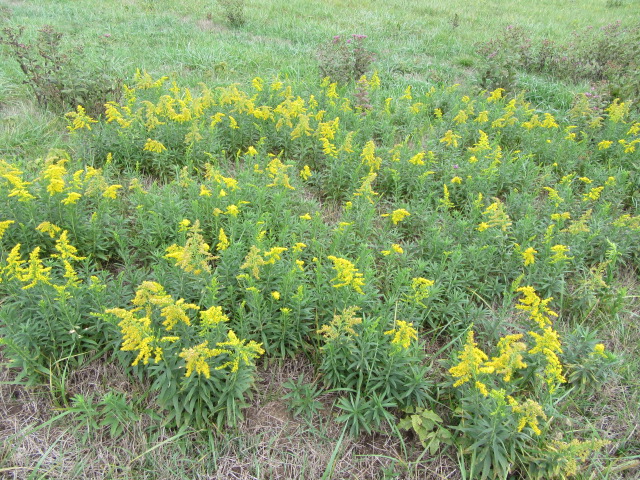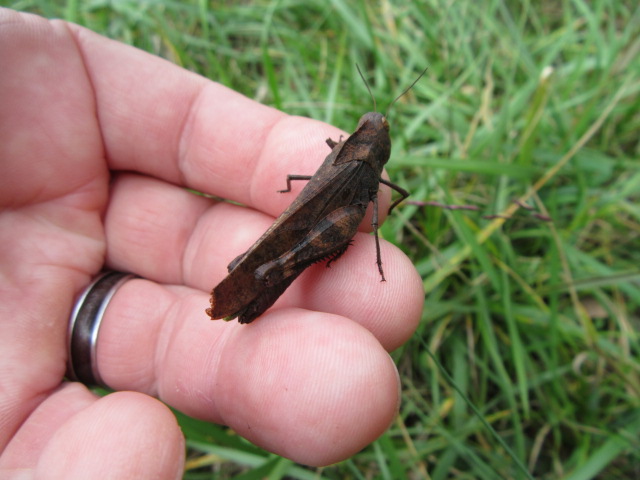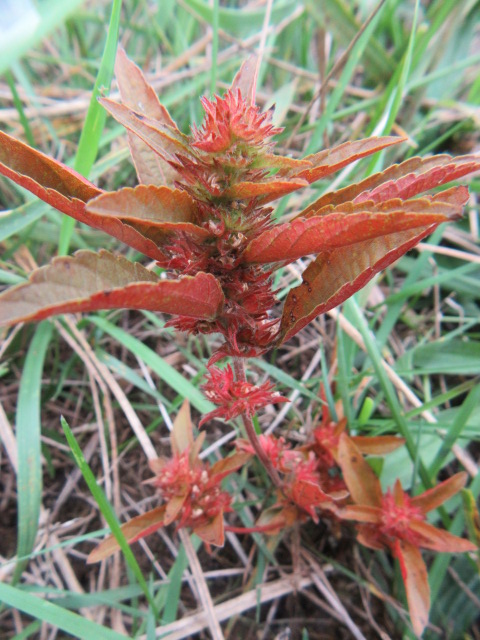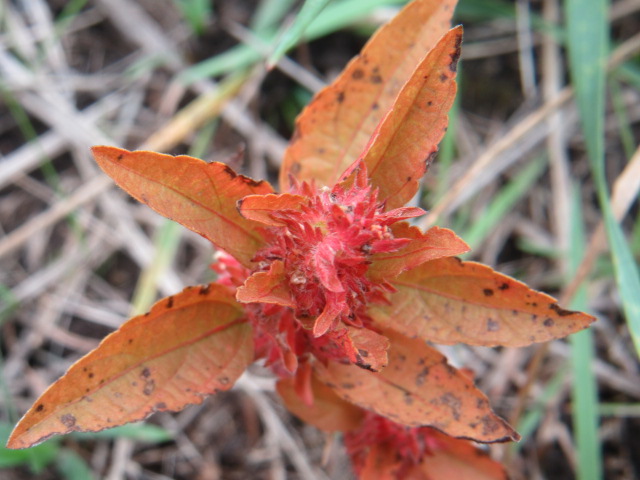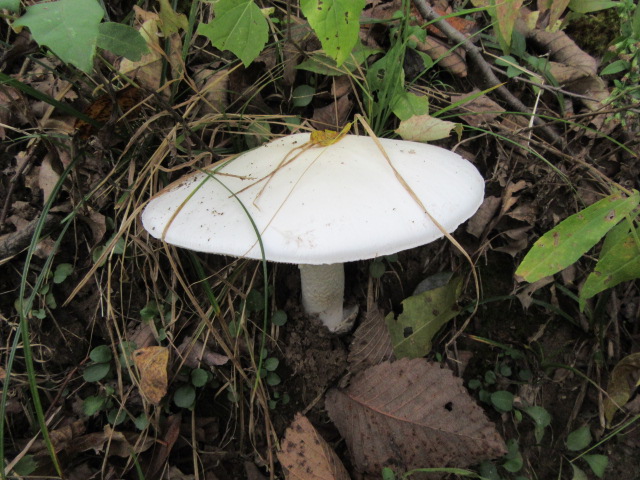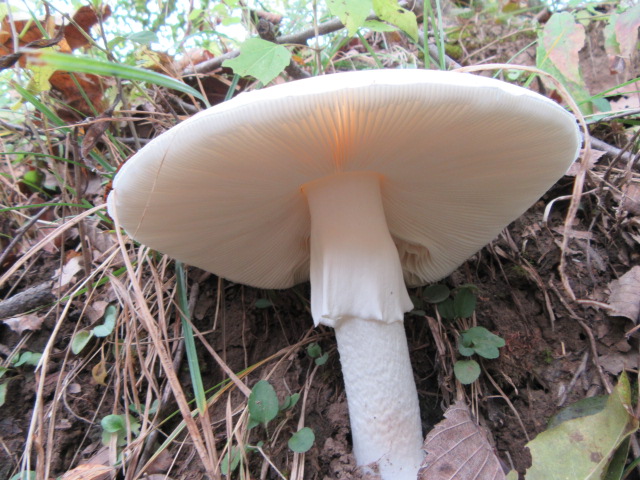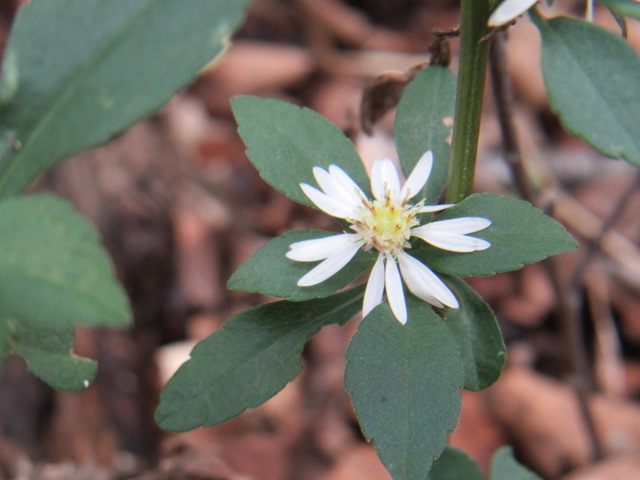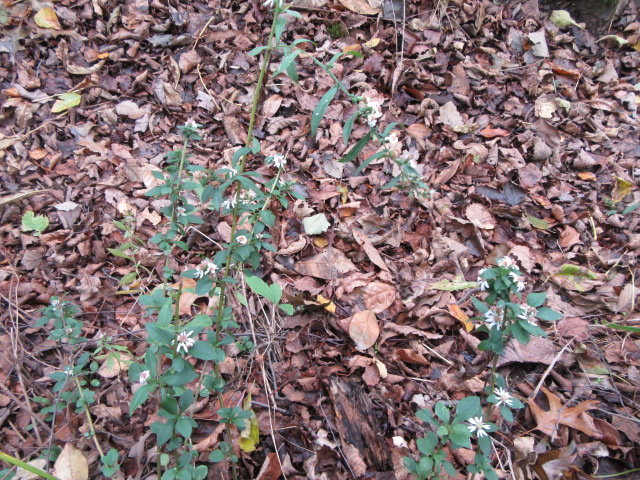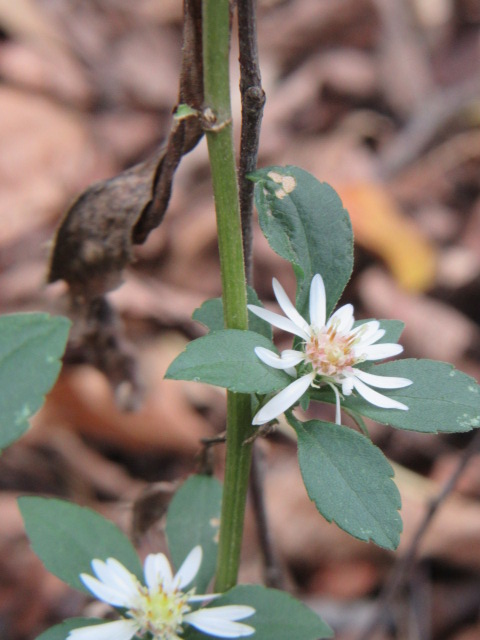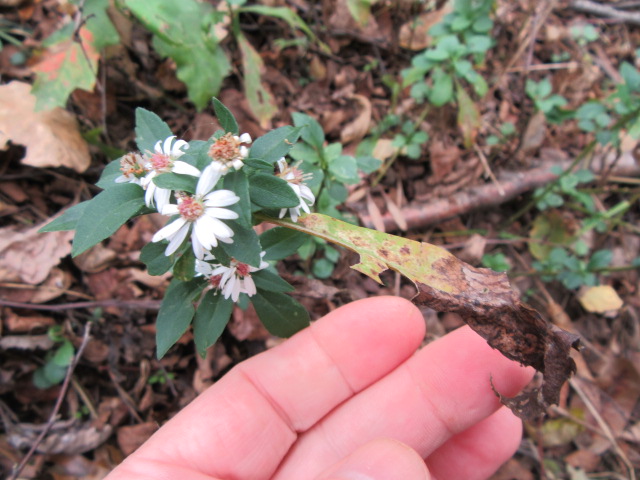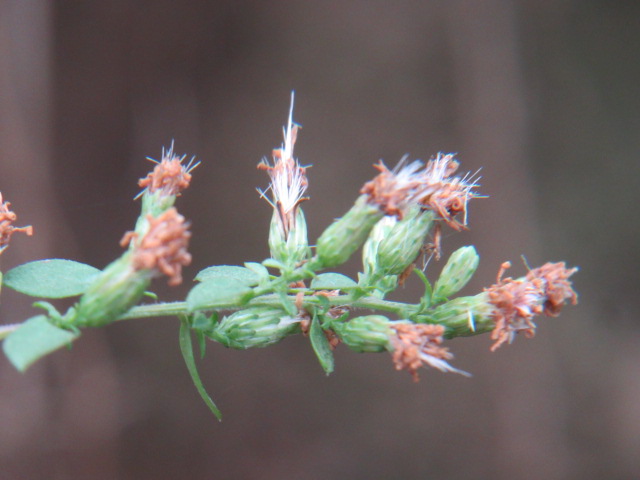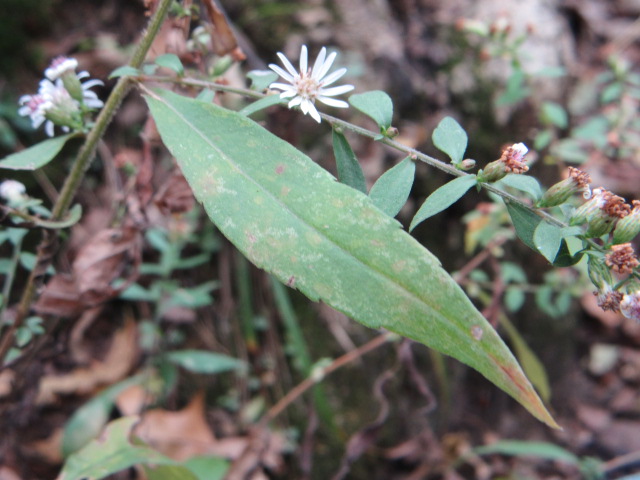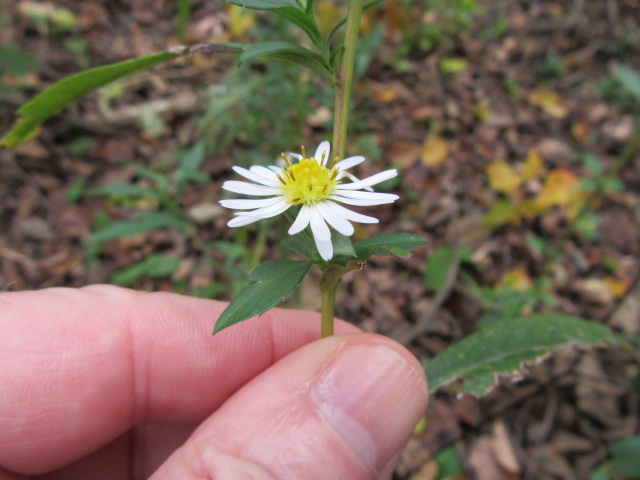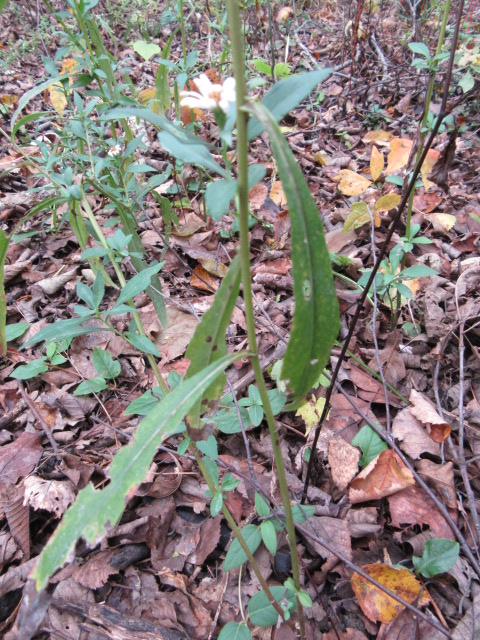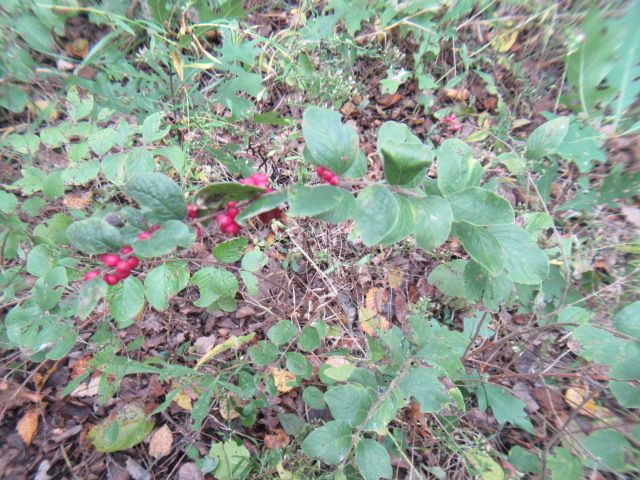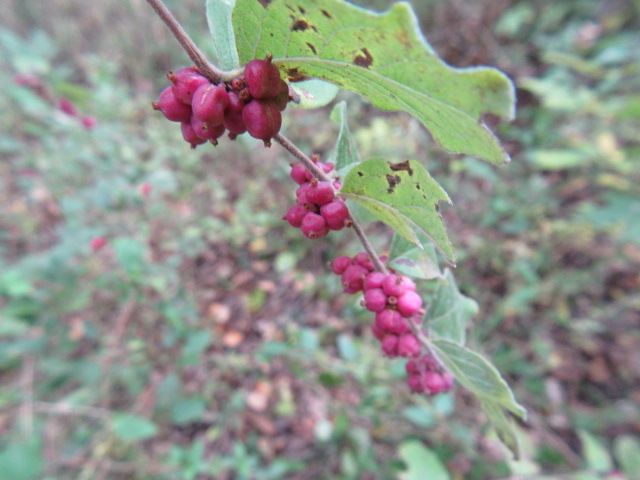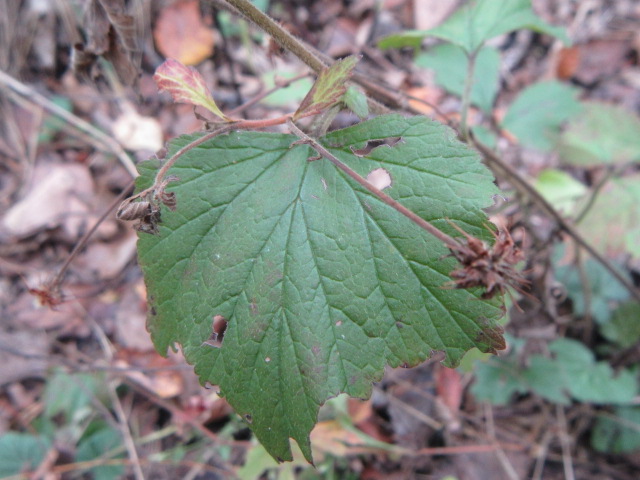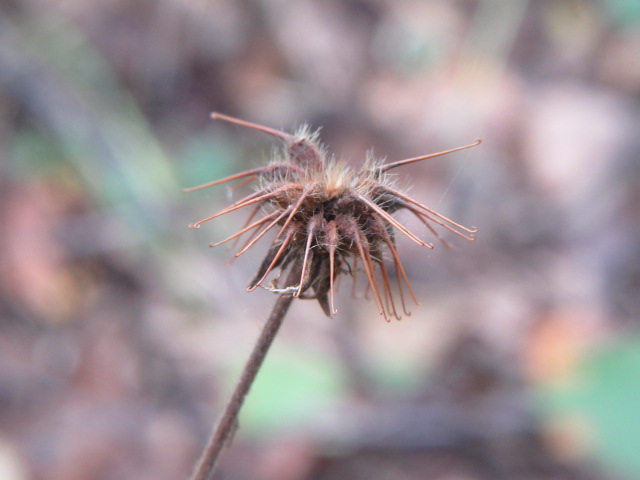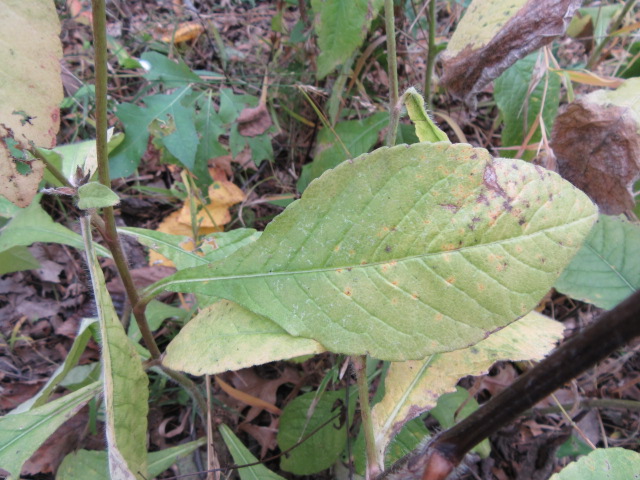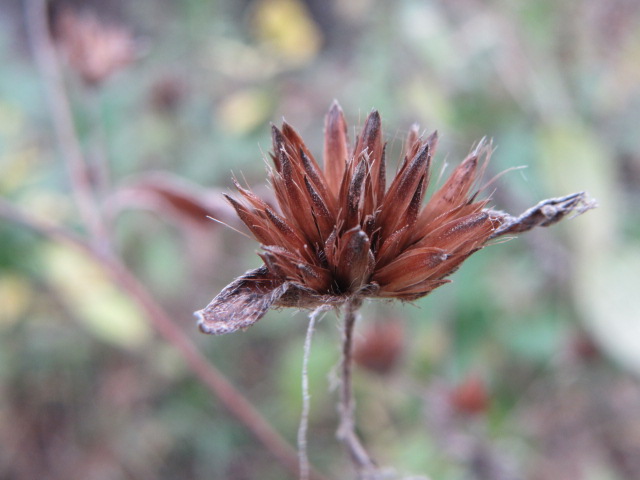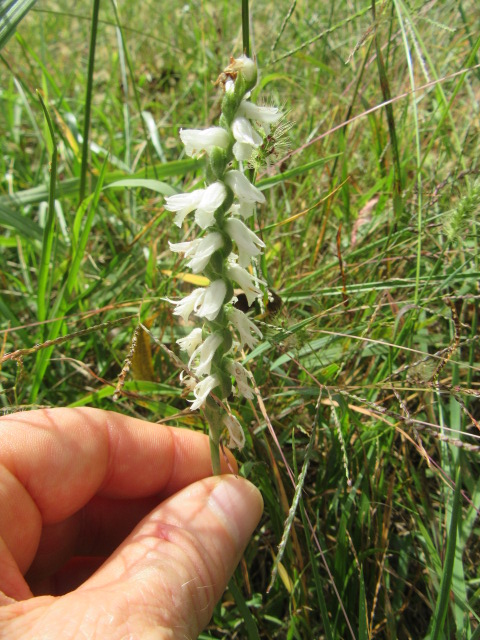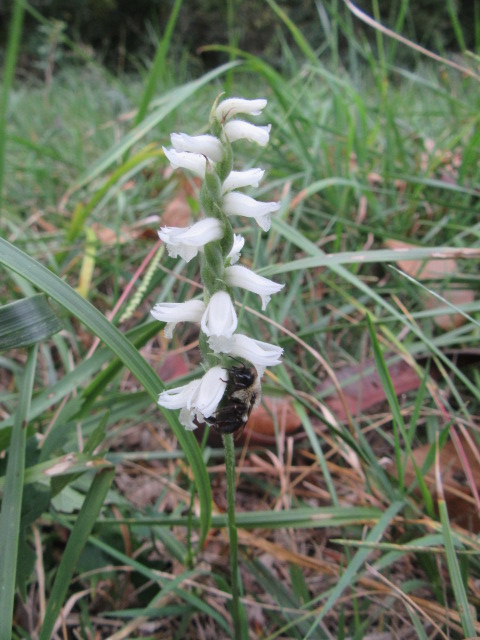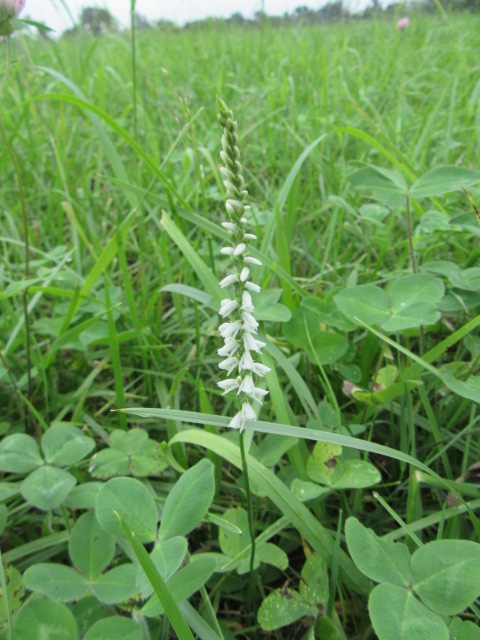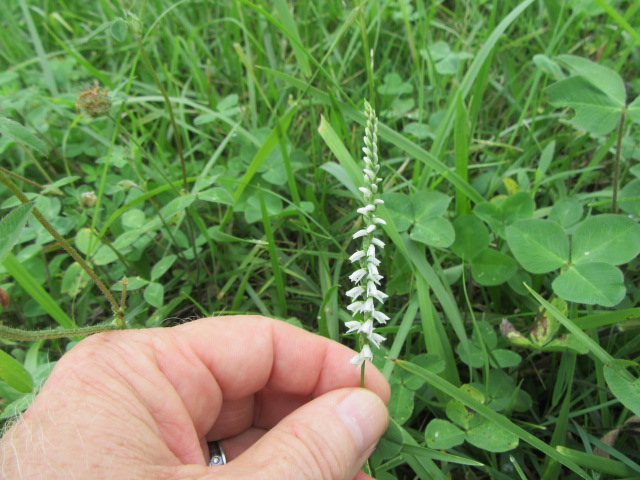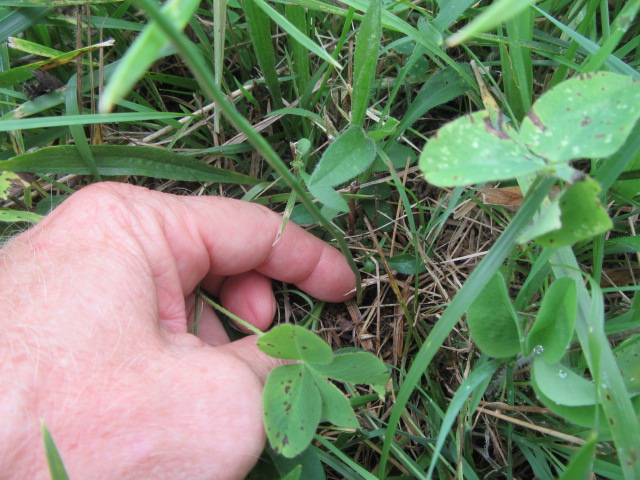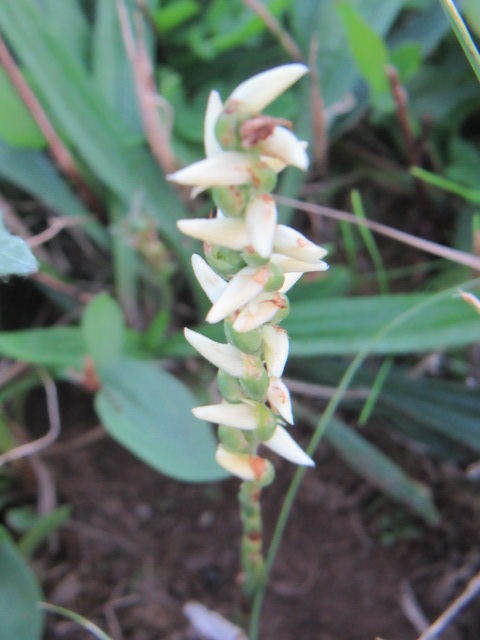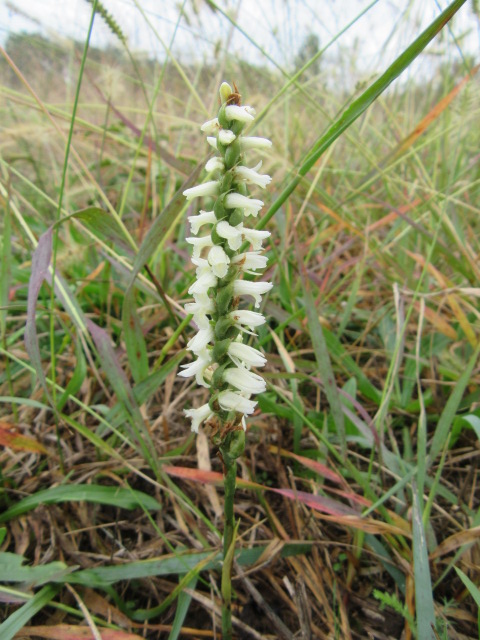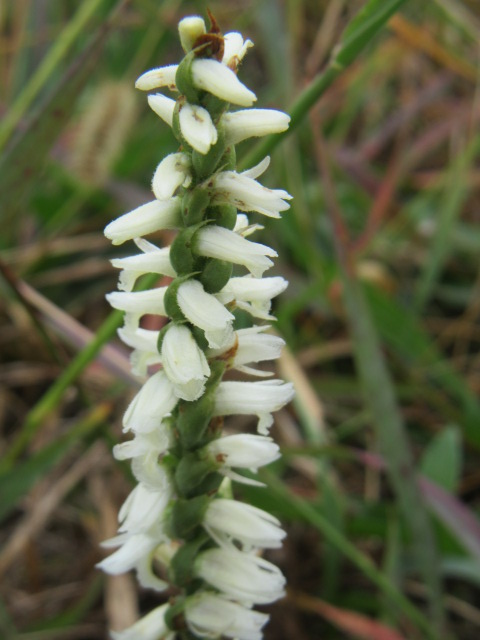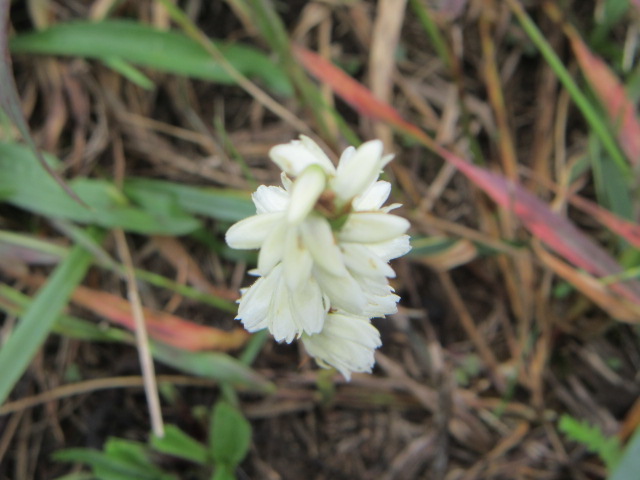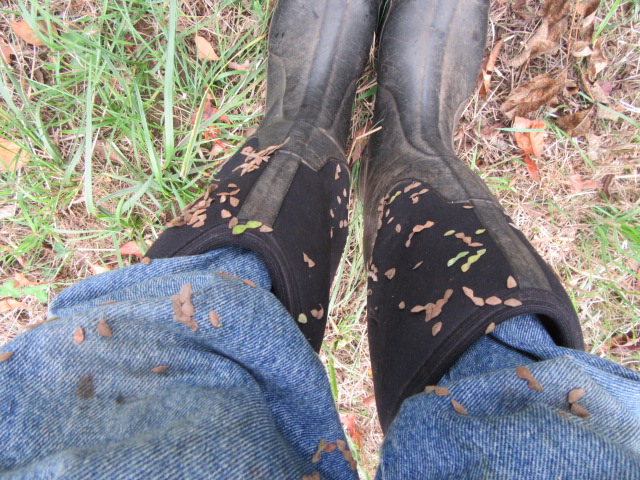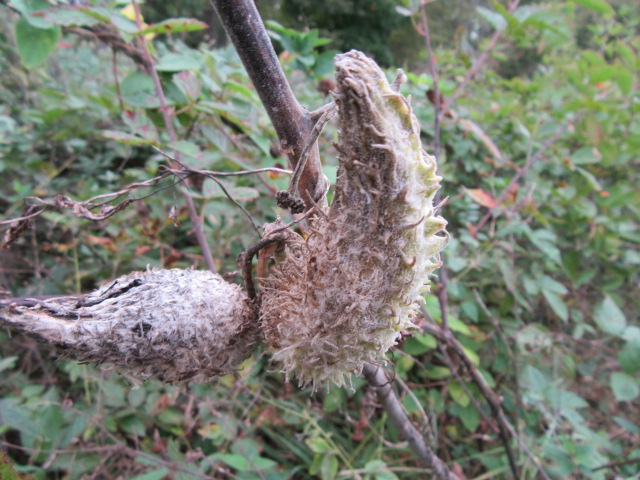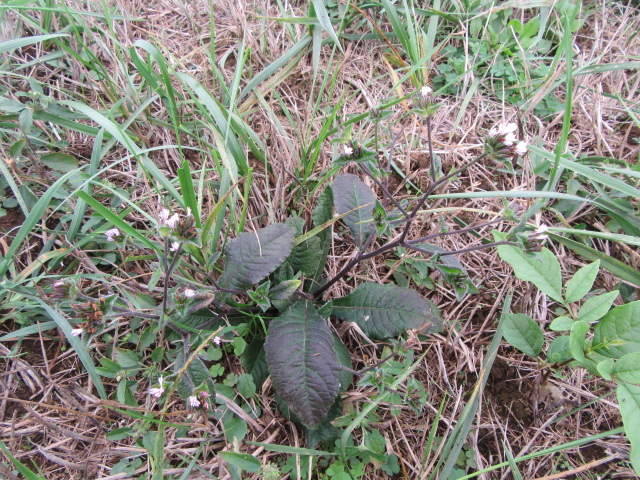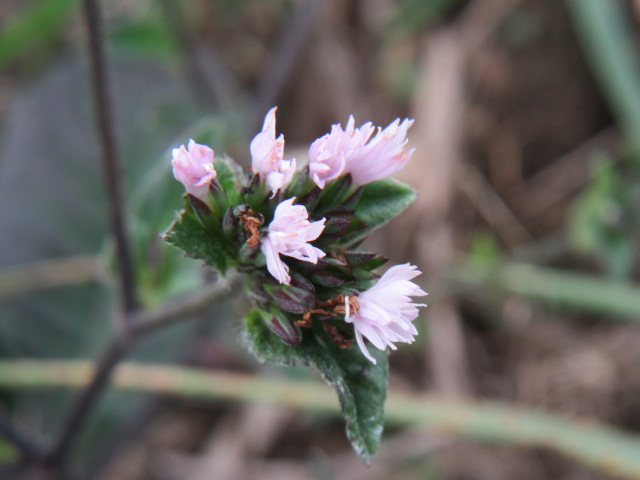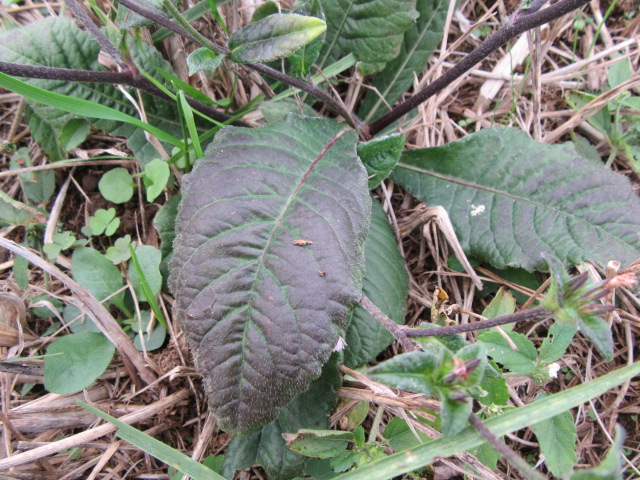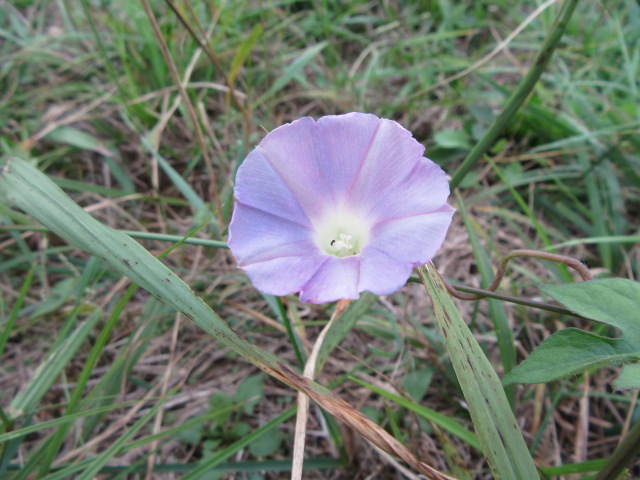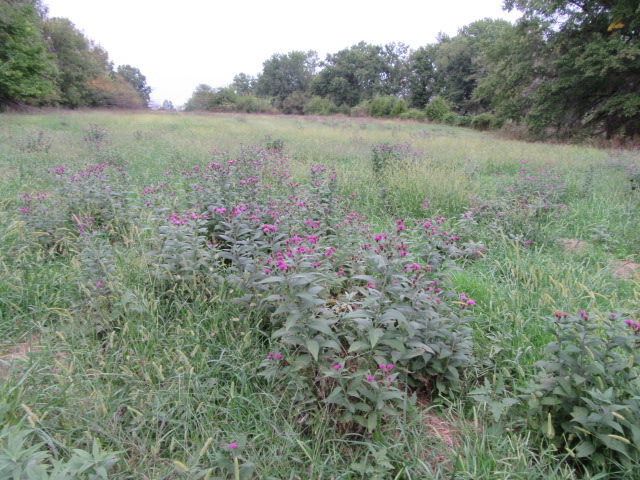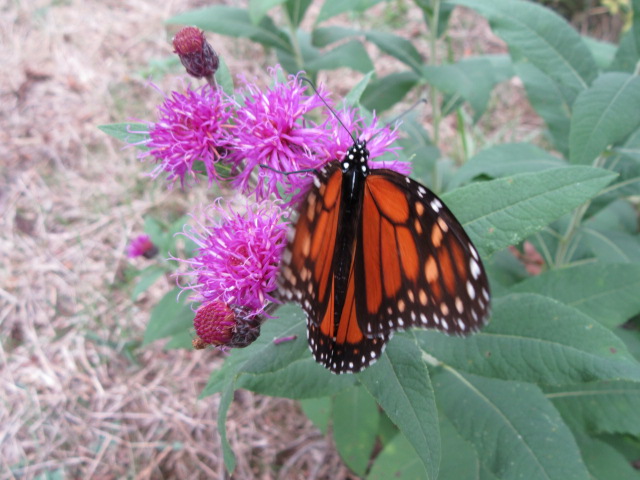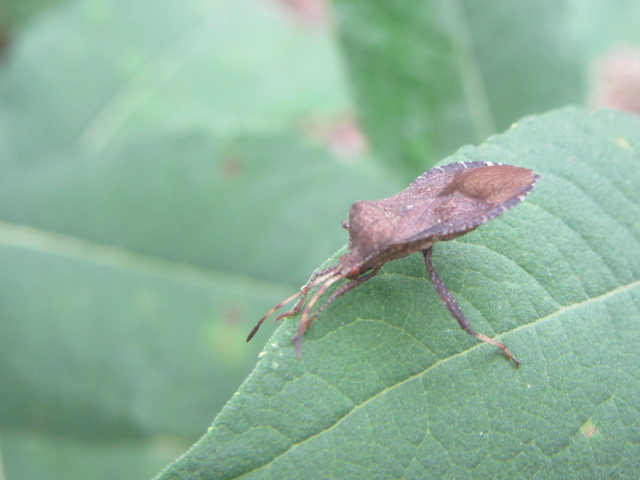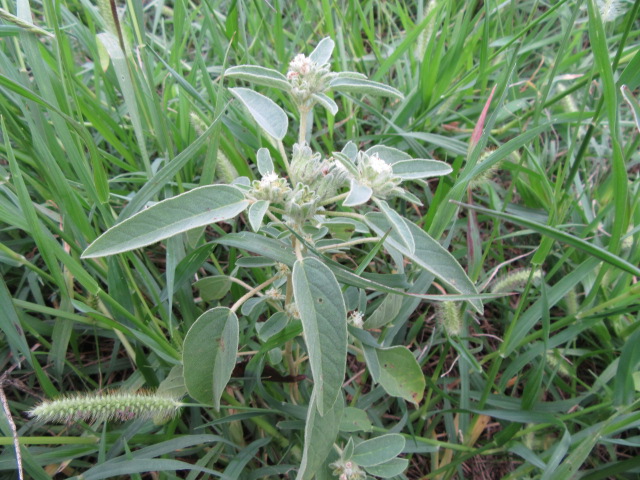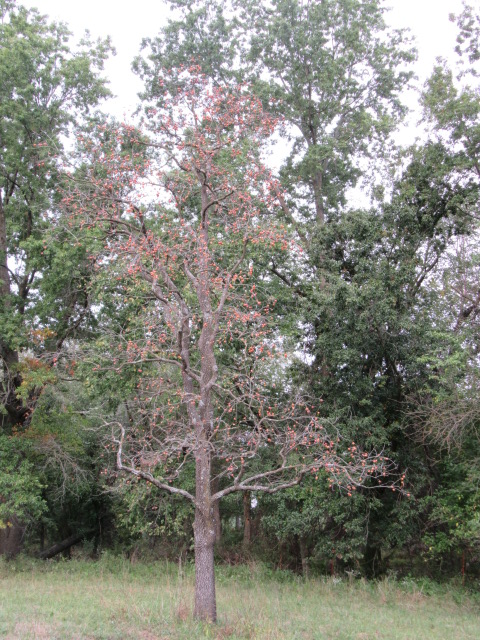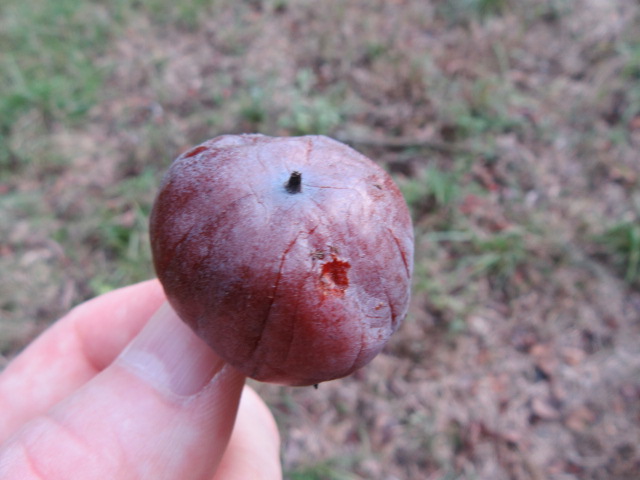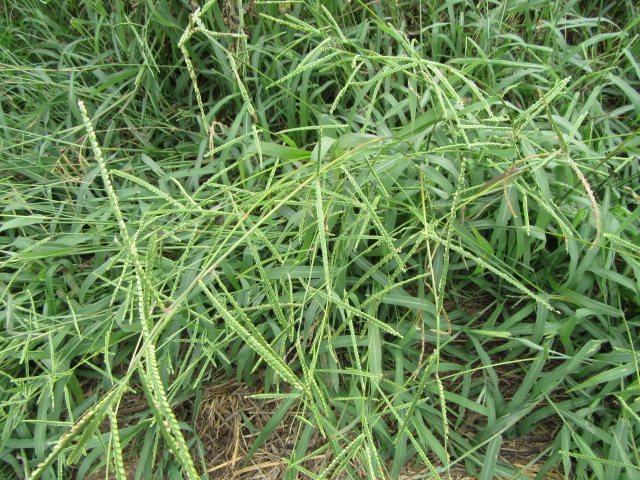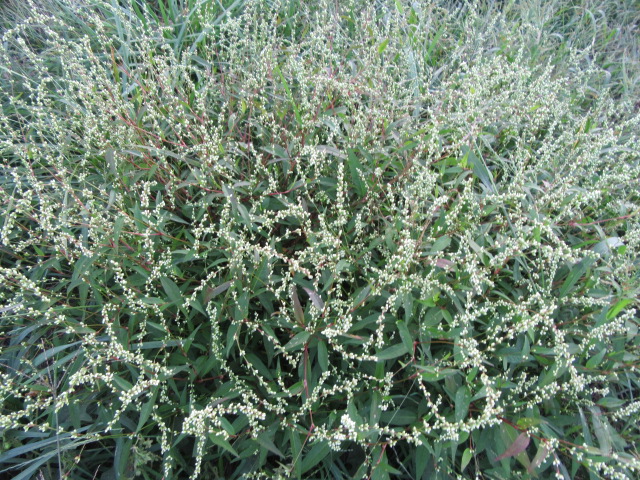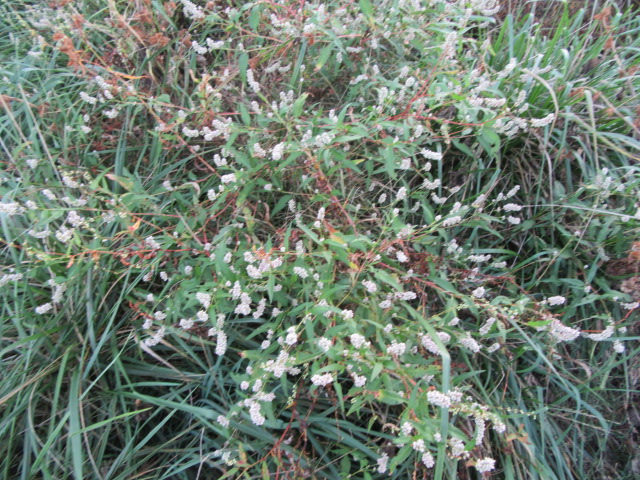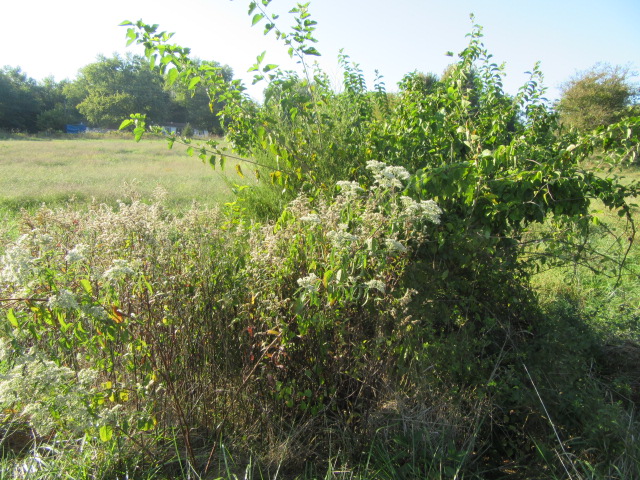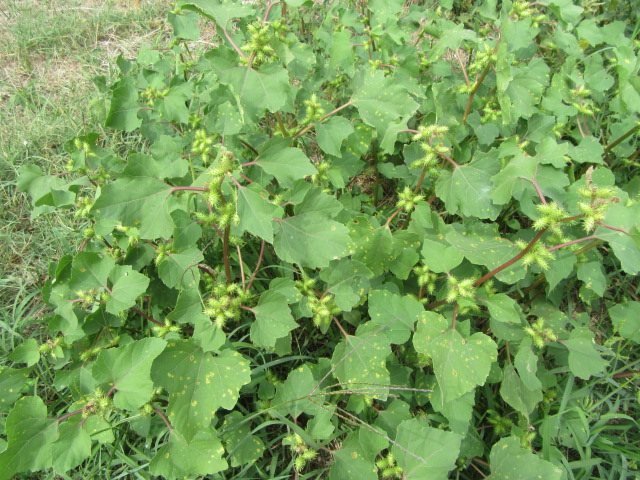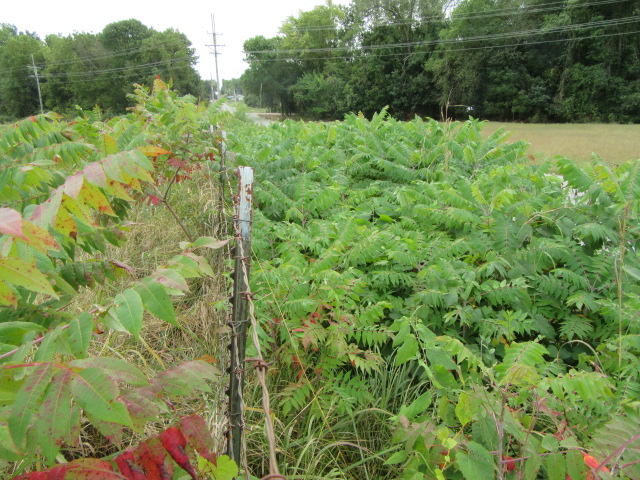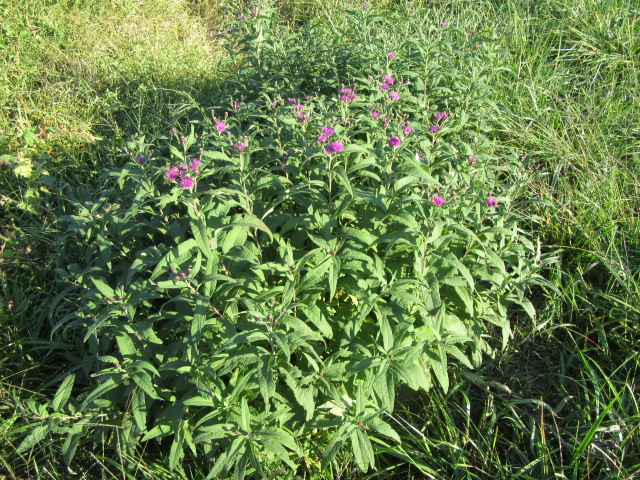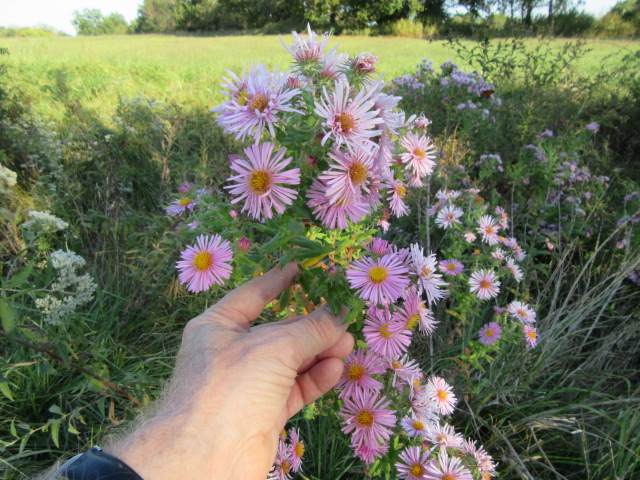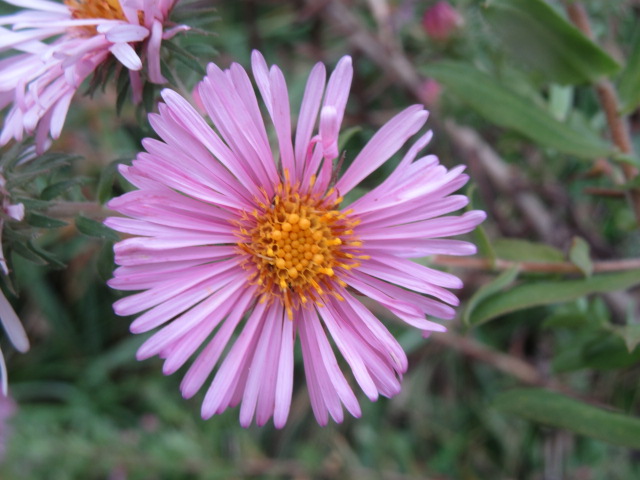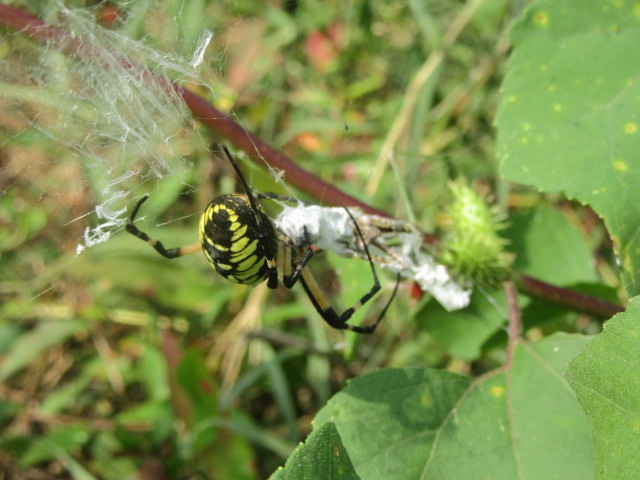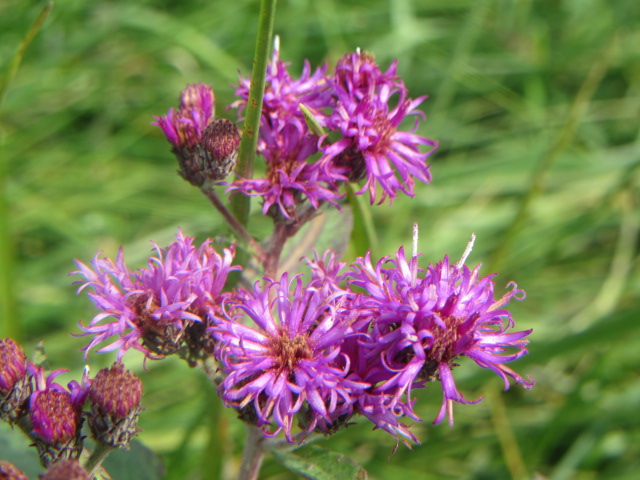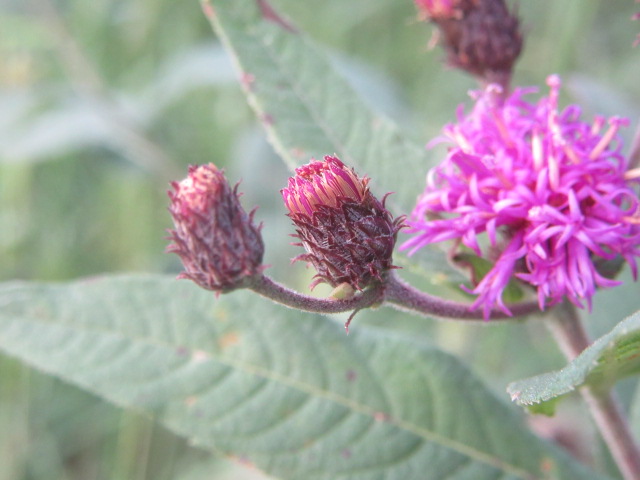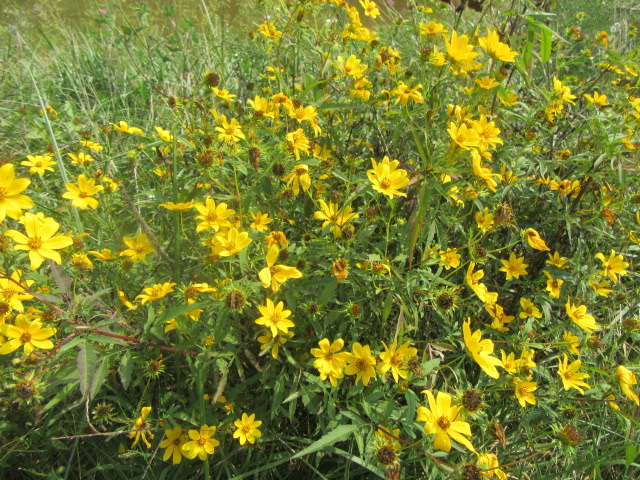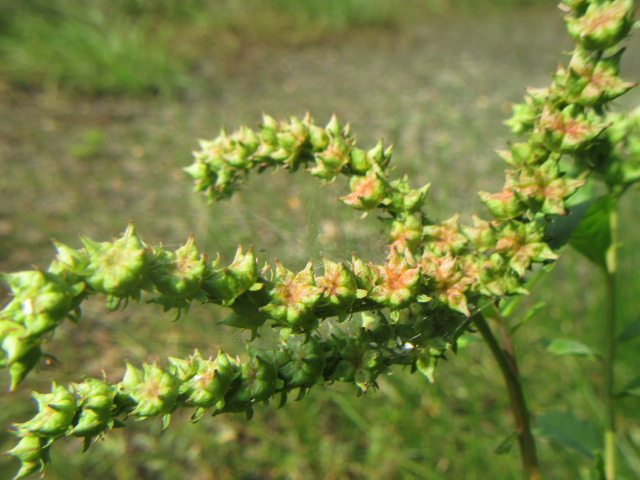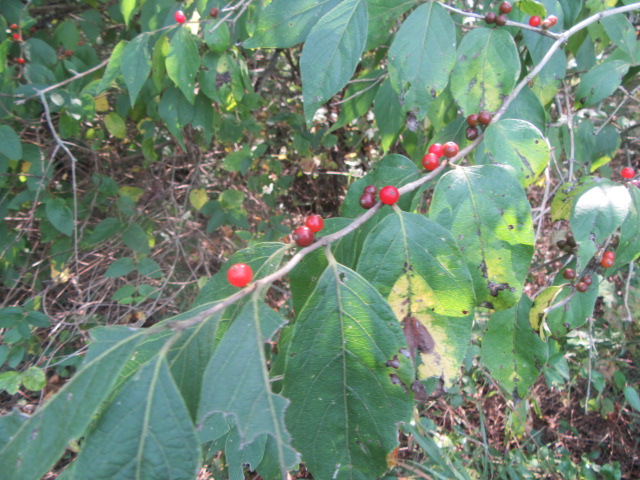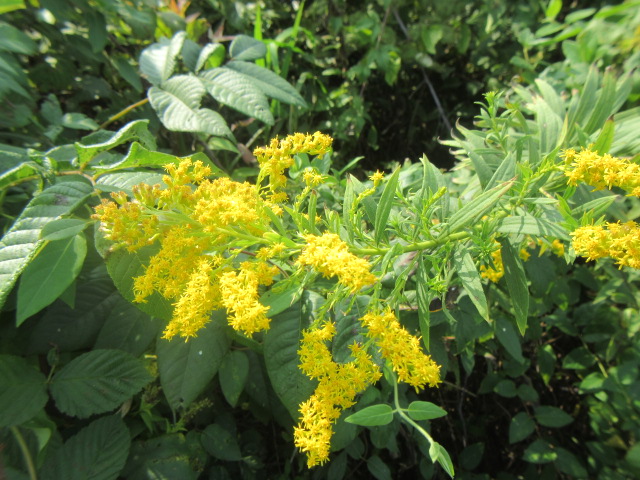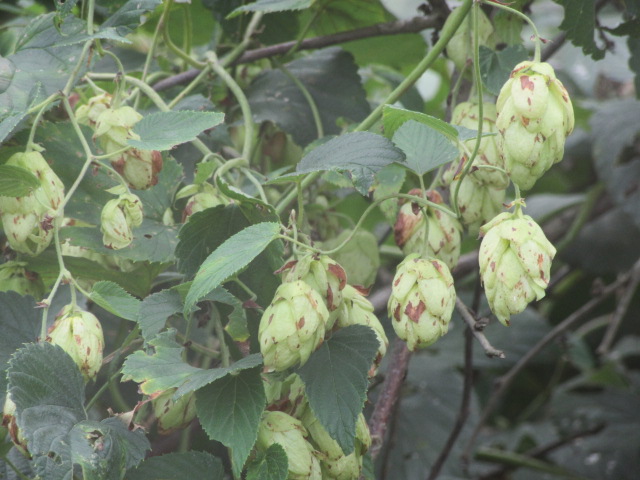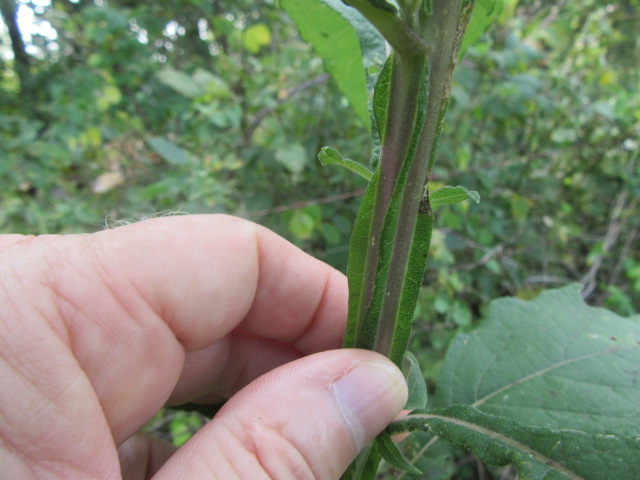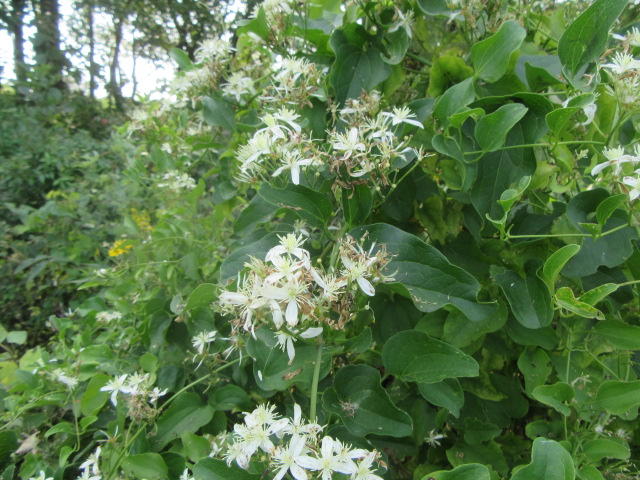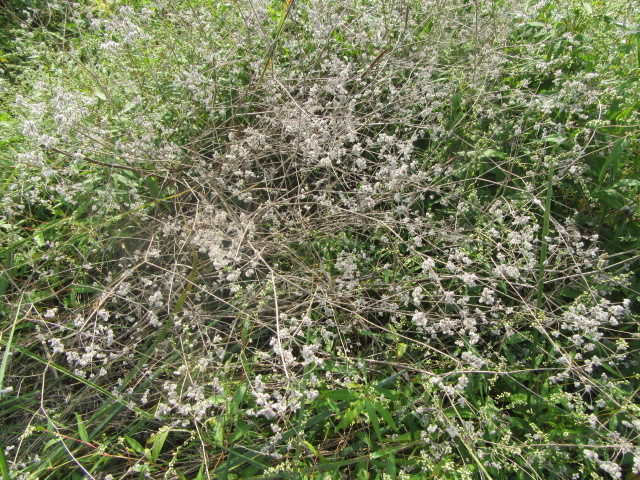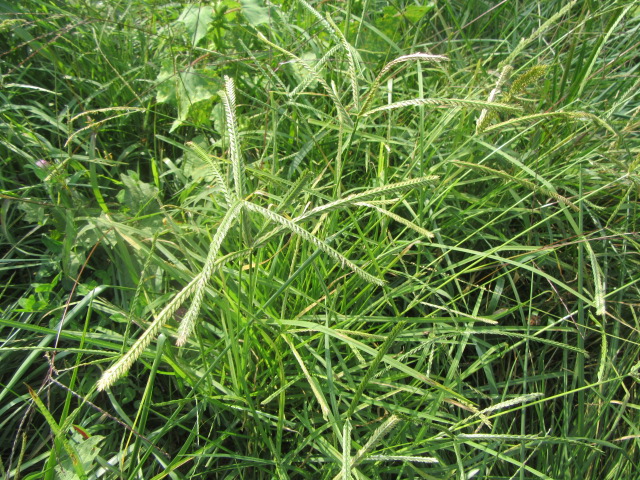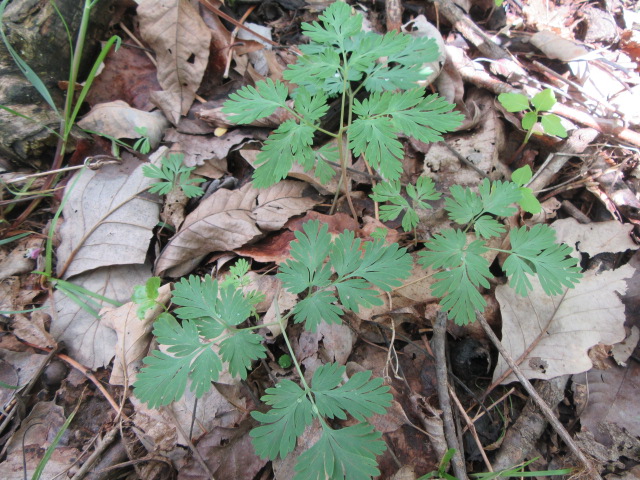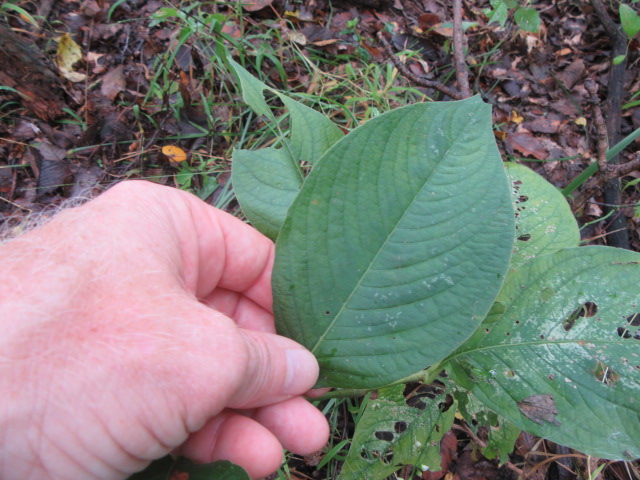
Persicaria punctata (Dotted Smartweed) on the left and Persicaria longiseta (Oriental Lady’s Thumb) on the right. This photo was taken near the pond at the back of the farm on 9-7-19. Persicaria punctata has “dots” on the flowers and Persicaria longiseta has cilia (hairs) on their flowers.
Hello everyone! I hope this post finds you all well. I think it has been three months since I decided to photograph and ID the Persicaria species here and what a journey it has been. I finished just in time because it is supposed to “F” tomorrow night. I hate it when that happens.
I have rewritten the opening I don’t know how many times and this post is very long (I am laughing). I finished and now It seems I am starting back at the top again. I wrote a page for each species as I went along so I could provide links to their pages. There you will see more photos and more ID information if you are interested. Just click on the species names and you will be redirected to their own page.

Persicaria species from left to right: Persicaria hydropiper (Water Pepper), Persicaria longiseta (Oriental Lady’s Thumb), Persicaria maculosa (Lady’s Thumb), Persicaria pensylvanica (Pinkweed), Persicaria punctata (Dotted Smartweed), Persicaria virginiana (Jumpseed), and Persicaria sagittata (Heartleaf Tearthumb) also along the bottom. Photo taken on 9-22-19, #635-3.
Most Persicaria species on the farm have many things in common, so the terminology basically applies to all seven species here (more or less). Their leaves are basically the same except for Persicaria sagittata and Persicaria virginiana. They all have ocrea at the leaf nodes. Their flowers are on racemes which would typically be called an inflorescence on many other species. They all have pedicellate flowers which is why their inflorescence is called a raceme. The flowers all produce a single achene (indehiscent fruit=not splitting open to release the seed when ripe). The seed is fairly large in comparison to the size of the flower and they form very early and remain in the flower. It is almost as if the whole fower is part of the achene. It is different with P. virginiana whose tepals seem to dry and peel off like the skin of an onion. Persicaria flowers have no petals. They commonly self-fertilize, and some are even cleistogamous (self-fertilization that occurs inside a permanently closed flower). I tried to translate most of the botanical terminology and descriptions, but just in case you can have a look at the glossary of terms from the Missouri Plants website by clicking HERE. Wikipedia has one you can view HERE.

Distribution map of Persicaria species Worldwide from Plants of the World Online by Kew. Plants of the World Online. Facilitated by the Royal Botanic Gardens, Kew. Published on the Internet; http://www.plantsoftheworldonline.org/ Retrieved on September 22, 2019.
As of when this post was published on October 11 in 2019, Plants of the World Online by Kew listed 129 accepted species of Persicaria worldwide (that number could change as updates are made on POWO). That doesn’t include subspecies, varieties, or forms (infraspecific names). Version 1.1 of The Plant List (2013) named a total of only 71 accepted species (including infraspecific names), 442 synonyms, and 163 names that hadn’t been assessed at the time. The genus Persicaria was first named and described by Phillip Miller in the fourth edition of Gardener’s Dictionary in 1754 but I didn’t notice any species he reclassified (he just assigned a new genus). And so it was. Many species were first in the Polygonum genus and have been in other genera along the way. The green in the map above represents locations where species are native and the purple where they have been introduced. Ummm… That only includes Cook Island, Falkland Island, Fiji, Hawaii, Society Island, Tonga, Tubuai Island, and Wallis-Futuna Island.
The Missouri Plants website lists ID information for 11 species of Persicaria and Wildflower Search has 14. I have identified seven species here on the farm. I previously thought there were eight. 🙂 I had taken a few photos of them in 2013 but really didn’t pay a lot of attention to them until this year. I guess the cows kept them in check so I really didn’t notice how many species there were right under my nose. Once the hay was baled and I mowed the “weeds” in the area behind the chicken house, behind the barn, and south of the barn, I noticed the Smartweeds had gone bonkers. They like growing in areas they won’t be disturbed, but even if mowed they bounce right back.

Persicaria longiseta (Oriental Lady’s Thumb), Persicaria punctata (Dotted Smartweed), and Persicaria pensylvanica (Pinkweed) all in one spot along the fence next to the barn on 9-15-19.
I decided I would identify the Persicaria species and started taking LOTS of photos of each colony mainly from August 3. Heck, now it is October 11! I don’t even remember when I started this post because I kept adding to it!

Photo of “punctate glandular dots” on the perianth of Persicaria punctata.
Most species were fairly easy to identify because of flower color and other features revolving around their flowers. The worse was trying to figure out Persicaria hydropiper and P. punctata. They are pretty much the same but one feature sets them apart from ALL other Persicaria species. Their flowers have “punctate glandular dots” which you have to use a 10x magnifying glass to see. I thought my magnifying glass must not be a 10x because all I see are weird lumps. Well, I was looking for spots or specks. Their leaves and stems are also supposed to have these weird dots but I cannot see them. P. punctata is supposed to have longer leaves than P. hydropiper, but I found that is not always the case. The largest colony of P. punctata has small leaves with the exception of only a few plants with a few larger leaves. There were a few other characteristics that are supposed to set them apart, but I found those were not always true either. In the end, only ONE thing perfectly sets them apart. The seed. P. hydropiper has dull black to brown seeds and all other species here have shiny black seeds. Taking close-up photos of tiny seeds requires A LOT of patience. Even with a magnifying glass in front of the lens most of the photos I took were not perfect. Persicaria seeds are about the size of the head of a pin. Their seeds seem to form even while still in flower, which was weird in itself. Then again, how can you tell when most species are “flowering”. Most of them seem to be continually in bud and the flowers never seem to open except for P. pensylvanica. A few times I did get photos of others but that was very rare and difficult.
(UPDATE! I wrote the above paragraph before exploring P. virginiana… They have black or brownish seeds and can be either dull or shiny).

Persicaria longiseta (Oriental Lady’s Thumb), Persicaria punctata (Dotted Smartweed), and Persicaria pensylvanica (Pinkweed) on 9-15-19.
Out of seven species present, five are native to the U.S. Three of those seven are hybrids. Non-native species were likely the result of crop and seed contaminants from their native country.

Steyermark’s Flora of Missouri pages 726-727 showing plate #499.
I rented volumes 1, 2, and 3 of Steyermark’s Flora of Missouri by George Yatshievych. Volume 3 has information about the Persicaria genus which covers 20 pages and 18 species. Much of the information is basically the same as information online, but this is where I figured out the species I thought was Persicaria setacea was regretfully more Persicaria longiseta. There is very little information online about P. setacea, and nothing when it comes to ID. Photos online looked exactly like the “wanted to be” Persicaria setacea along the pond in the back of the farm. Then when I checked the photos submitted on iNaturalist, I thought something was really weird. I thought, “Why in the heck do some of their photos show hairs sticking out horizontally from the ocrea?” So, although I only needed volume 3 of Steyermark’s Flora of Missouri, I decided to have them all sent from the main branch to the local branch. You can’t really tell that well, but P. setacea is the one in the lower left-hand corner of the page with the line drawings. This volume alone has 1,382 pages not including MANY pages in the front.
Well, I better begin the actual post now instead of just rambling on and on. I am much more talkative when I am writing than in person, and right now I have the keyboard at my fingertips.

Persicaria hydropiper (Water Pepper) on 9-4-19, #623-24.
This small colony of Smartweed in the pasture behind the lagoon was VERY perplexing for a while. It has red stems while the other clumps near it have green stems or near-red. Also, its racemes of flowers were very pendulous while the others were more erect and only drooping at the top. Even the larger colony a few feet away in the rock pile had green stems with racemes that go every which direction. As it turned out, all those characteristics are true for Persicaria hydropiper, the Water Pepper. I checked seed in this entire area, both from plants with red stems and green stems, and their seeds were all dull (not shiny) and black to brownish. The above photo was taken on September 4 and the racemes of this colony weren’t that long yet because it had been mowed off. I took another photo later but there is so much green you can hardly see how pendulous the racemes are.

Persicaria hydropiper (Water Pepper) on 6-19-19, #633-9.
This very large colony of Persicaria hydropiper with mainly green stems is growing next to the rock pile behind the lagoon. Well, not really a pile of rocks so much as large pieces of the old concrete foundation from an old barn. The barn used to be where the lagoon is and was one that my grandpa (mom’s dad) and his brother-in-law (Uncle Arthur) tore down and rebuilt here around 1960 or a few years later. They rebuilt the barn here and used the original square nails to rebuild it. I have a lot of memories of that barn, and not all good. The barn was VERY OLD and not all that sturdy. You had to be very careful walking around in the loft because there were a lot of holes in the floor. One time I fell through all the way to the ground. 🙂 Even though it was very old, it was also very neat. I always loved old barns…
Getting back to the above photo… You can see how the racemes of flowers are kind of growing in every direction.

Persicaria hydropiper (Water Pepper) on 8-30-19, #618-44.
Persicaria hydropiper can typically grow to around 36″ tall, or long. They are mainly decumbent unless they can lean on other plants. Missouri Plants says: “To 1m tall, herbaceous, glabrous or with some pubescence above, typically green or reddish, erect to spreading, multiple or single from base, simple to few-branching.”
Most Smartweeds are decumbent, which means they sprawl but turn upward toward the end. They root at their leaf nodes which allows them to spread quite readily. Even though these plants may appear to be only around 2′ tall (more or less), if you pull them will see the entire plant is much longer and has a lot of stems doing the same thing… Branching out… Some species grow more upright than others especially if they can lean on something.

Typical leaf of the Persicaria hydropiper (Water Pepper) on 8-30-19, #618-46.
Their alternate leaves have short petioles, sort of olive green in color, lanceolate to linear, and are around 3 1/2″ long x 3/4″ wide, smooth, and normally hairless. So, if you see a colony of white-flowered Persicaria and some of the leaves are 4″ or longer, they are likely not P. hydropiper and more likely to be P. punctata.

Persicaria hydropiper Water Pepper) on 9-4-19, #623-26.
As with all Persicaria species, P. hydropiper stems end with a raceme of flowers. P. hydropiper racemes are very slender, are pendulous or droop sideways. Their flowers are sparsely placed along the raceme.
Oh, a raceme is an elongated inflorescence with pedicellate flowers. An inflorescence is the part of the plant that contains the flowers, usually starting from the upper leaf node in this case. Umm… A pedicel is a flower stalk with a single flower. The stem part the flowers are on has a specific name but I forgot. So, the part I forgot with the pedicles of flowers and everything that goes along with it is the raceme. Of course, the flowers themselves have many parts but that is for another time. Nevermind that!

Persicaria hydropiper (Water Pepper) flowers on 9-22-19, #635-5.
Now, about their flowers… It took me a while to get a fairly good close-up photo of the flowers of P. hydropiper. I took A LOT of photos and none were as good as the photo above. I will keep trying so I can replace this photo with a better one at some point.
Anyway, Persicaria hydropiper flowers are greenish-white have 5 sepals, 2-3 styles, 4-6 stamens, and no petals. As with P. punctata, the flowers are covered with “glandular punctate dots” which you will only notice with magnification. The “glands” turn brown when the outer sepals dry out. The outer sepals are greenish, as with P. punctata, where other species are not. The sepals of all seven species here fuse together 1/2-1/3 way toward the base.

Persicaria hydropiper (Water Pepper) on 9-4-19, #623-28.
This is a very interesting photo. If you are randomly observing this plant or taking photos without knowing what you are looking at, you would say, “OH, that is pretty cool”.
The ocrea, sometimes spelled ochrea, is the “sheath” surrounding the stem at the node where a leaf emerges. After a while, a branch, or branches, may grow from this same node. Some species only branch out at the lower nodes of the plant. The ocrea on Persicaria species is nearly translucent and is formed by the fusion of two stipules. One word seems to lead to another… A stipule is formed at the base of a petiole. GEEZ! A petiole is the “stem-like” gizmo between the stem and the base of a leaf. A gizmo is what you call it when you don’t know what else to call it. Many species, maybe all, have these cilia growing from their ocrea but fall off fairly soon so they don’t become an ID issue.

Persicaria hydropiper (Water Pepper) on 9-14-19, #631-2.
With Persicaria hydropiper and a few other species, there are a few flowers that develop at their leaf nodes. These are called “axillary racemes”. Hmmm… A little spider is defending her territory.

Persicaria hydropiper (Water Pepper) on 9-16-19, #633-2.
Several species have this “zig-zag” effect on their stems, but maybe not on all their stems.

Persicaria hydropiper (Water Pepper) on 9-16-19, #633-2.
Another neat photo showing new stems coming from a leaf node.

Persicaria hydropiper (Water Pepper) on 9-16-19, #633-5.
This photo shows several racemes of flowers growing from lower nodes. Very common with P. hydropiper. The flowers on many Persicaria species are shy to open, so I was surprised to see a few flowers opened up on the Persicaria hydropiper on September 16.

Dull seeds of the Persicaria hydropiper (Water Pepper) on 9-16-19, #633-6.
Here you can see the seeds of Persicaria hydropiper that are dull, not shiny, and are black to brownish color. The seeds are one of a few ways to really tell P. hydropiper from P. punctata.
For more photos and information, click to go to this species own page HERE.
One thing I might add is that the leaves are edible. I ran across an article on a website called FORAGER/CHEF that talks about eating its leaves. The taste of the leaves is another way to tell this species from Persicaria hydropiperoides. Persicaria hydropiper and P. punctata have a very hot, peppery taste whereas P. hydropiperoides does not. Some information, however, says not to eat it because it will make your mouth burn and swell. I could live without that experience.
Hindawi (Evidence-Based Complementary and Alternative Medicine) has A LOT of information…

Persicaria longiseta (Oriental Lady’s Thumb) on 8-31-19, #619-9.
Persicaria longiseta, commonly known as Oriental Lady’s Thumb or Creeping Smartweed, is probably the second most abundant of the Smartweeds here on the farm. Ummm… It seems I find more every day, so they could be #1 by now. There didn’t appear to be that many Persicaria longiseta when I first started taking Persicaria photos and writing this post. Within a couple of weeks, I noticed them EVERYWHERE that other Persicaria species are growing. They are either very sociable or a bit nosy.
This species has many common names including Oriental Lady’s Thumb, Bristly Lady’s Thumb, Asiatic Smartweed, Creeping Smartweed, Long-Bristled Smartweed, Asiatic Waterpepper, Bristled Knotweed, Bunchy Knotweed, and Tufted Knotweed. With all those names to choose from, iNaturalist has chosen to call it Low Smartweed.

Persicaria longiseta (Oriental Lady’s Thumb) on 8-31-19, #619-12.
At first, I noticed them growing along the shed in the back yard where my grandparent’s house had been then I realized this was the same species that grow in the flower bed on the north side of the house (and under the porch).
Most Persicaria species have the same basic characteristics but Persicaria longiseta has TWO KEY identifiers that set them apart from all other species here.

Persicaria longiseta (Oriental Lady’s Thumb) showing the ocrea with cilia on 8-31-19, #619-14.
First, Persicaria longiseta has cilia (hairs, bristles…) sticking out around the top of the ocrea. While these cilia fall off of other species with age, they seem to stay on this species.
Persicaria longiseta are decumbent, of course, with light green to reddish-brown stems. They branch out near the base and send stems in every direction. Stems laying on the ground root at the nodes.

Persicaria longiseta (Oriental Lady’s Thumb) flowers showing cilia on 9-14-19, #631-5.
The second key identifier for Persicaria longiseta is the cilia on the flowers. Now, with age, a lot of the cilia on the flowers may fall off, but there will still be a few on the flowers on the lower part of the raceme. This was a problem with the plants by the shed because most of the cilia had fallen off their flowers by the time I knew they were there. In the above photo taken on September 19 by the twin Mulberry trees in the front pasture, you can not only see the cilia but an open flower… NICE!
Persicaria longiseta racemes are typically 1 1/2″ long. The racemes seem to stay erect instead of drooping, although they may be growing vertically or horizontally.

Persicaria longiseta (Oriental Lady’s Thumb) on 9-14-19, #631-10.
On September 14 I noticed some of the racemes of flowers on the P. longiseta in front of the Mulberry trees looked a little weird. This is the only species I have noticed with this weird feature.

Persicaria longiseta (Oriental Lady’s Thumb) on 9-18-19, #634-40.
The above photo is of a small colony of Persicaria longiseta behind the pond at the back of the farm.

Persicaria longiseta (Oriental Lady’s Thumb) on 9-18-19, #634-42.
This is an interesting photo…

Typical Persicaria longiseta leaf on 9-16-19, #633-14.
The longest leaves I have found on the Persicaria longiseta have been 4″ and may have a faint dark “smudge”. The dark spot is typical of many Persicaria species. They actually do look like a thumbprint.

Shiny seeds of Persicaria longiseta on 9-16-19, #633-15.
Kind of hard to tell, but the seeds of Persicaria longiseta are black and shiny.
An interesting thing, Wildflower Search says there is only a 20% chance this species is growing at this location. I haven’t figured out how to “pin” its location on that site, but I can with iNaturalist.

Persicaria longiseta (Oriental Lady’s Thumb) in front of the twin Mulberry trees in the front pasture on 9-22-19, #635-9.
For there to be only a 20% chance of Persicaria longiseta growing at this location there are sure a lot of them. They are everywhere Persicaria grow here in the front pasture, along the sheds and garage, in the yard, in the north flower bed under the porch, the back pasture, along the back pond and behind the pond. The rosy glow in the above photo is from their flowers.

Persicaria longiseta (Oriental Lady’s Thumb) with Salvia coerulea ‘Black and Blue’ on 9-30-19, #636-7.
The above photo shows how the Persicaria longiseta is growing among the Salvia coerulea ‘Black and Blue’ in the northeast corner bed on September 30.
As with most Persicaria species, P. longiseta is not a U.S. native. To view this species own page, click HERE… There are A LOT MORE photos.

Persicaria maculosa on 10-4-18.
Persicaria maculosa (Lady’s Thumb, Redshank, Heart’s Ease, etc.) is very similar to Persicaria longiseta except there are no cilia on their flowers and the bristles around the ocrea on their stems fall off. I am not sure where the above photo was taken here in 2018, but currently, the only colony I have noticed is in front of the twin Mulberry trees in the front pasture. I am sure there are more somewhere.

Persicaria maculosa (Lady’s Thumb) flowers on 9-4-19.
As you can see from the above photo, the flowers of Persicaria maculosa are not hairy… Flowers of this species are densely clustered and not all the same color. Although pink is the usual color, flowers can be red, greenish-white, or purple, even on the same raceme. Illinois Wildflowers uses the word “oblongoid” to describe the shape of the raceme of Persicaria maculosa because they are kind of rounded at the tip. Each stem can end in 1-2 racemes that grow to around 1 1/2″ long and are tightly packed. Flowers have 5 sepals and usually six stamens and no petals.

Persicaria maculosa (Lady’s Thumb) leaves on 9-4-19.
The spot on their leaves may be oval or triangular in shape and can be fairly dark to faintly visible. Leaves can grow to around 6″ long and are smooth along the margins and sometimes slightly ciliate. Each leaf has a short petiole or can be nearly sessile (no petiole, or a very short one in this case).

Persicaria maculosa (Lady’s Thumb’) on 9-4-19.
Some of the leaves of P. maculosa don’t have the “spot” either so it isn’t really a good way to make a positive ID all the time. You may even find colonies with no spot at all. Hmmm…

Persicaria maculosa (Lady’s Thumb) on 9-4-19.
I thought this was interesting. New stems emerging at a node with near translucent ocrea and a few cilia that will fall off eventually.

Persicaria maculosa (Lady’s Thumb) on 9-4-19.
Persicaria maculosa is a bit of a rambler…
To view the Persicaria maculosa page with more photos and information, click HERE.

Persicaria pensylvanica (Pinkweed) on 8-30-19.
Persicaria pensylvanica (Pinkweed) is plentiful and did rank #2 for a while (until P. longiseta completely went overboard). The above photo is from a large colony behind the barn rambling in a brush pile that didn’t want to burn earlier. Now I can’t find the brush pile. 🙂

Persicaria pensylvanica (Pinkweed) flowers on 8-30-19.
As you can see, their tiny flowers are various shades of light pink and almost white. Some are even two-toned. I noticed several small colonies of this species with pure white flowers while mowing the pasture at a friend’s farm (Kevin’s farm).

Persicaria pensylvanica (Pinkweed) ocrea on 8-30-19.
The translucent ocrea around the leaf (and stem) nodes appear to be cilialess because they have fallen off. It is strange how the top part of the ocrea is so straight, almost like they have been cut perfectly with a pair of scissors.

Persicaria pensylvanica (Pinkweed) on 8-30-19.
There is a smaller colony by the gate at the front of the barn. You can see, in the next photo…

Persicaria pensylvanica (Pinkweed) leaf on 8-30-19.
Some of the leaves have a dark spot that looks kind of v-shaped. A few of the stems on top of the plants were very hairy. I took photos but they were blurry. In technical terms, the stems are mostly glabrous but glandular-pubescent near the inflorescence. 🙂

Persicaria pensylvanica (Pinkweed) flowers on 9-1-19.
On September 1, I was pleasantly surprised with open flowers on the P. pensylvanica. Many Persicaria species are very shy and refuse to open their flowers. The magnifying glass did very good with this photo. 🙂 It takes practice and I am not going to mention how many photos I actually took.

Persicaria pensylvanica (Pinkweed) on 9-14-19, #631-15.
I finally got a pretty good shot of the hairy stems on September 14. Not quite as hairy as the one I saw previously.
To view the Persicaria pensylvanica page, click HERE.

Persicaria punctata (Dotted Smartweed) on 8-30-19.
Without a doubt, Persicaria punctata, the Dotted Smartweed is the most plentiful of the Smartweeds on the farm. Actually, P. longiseta has become very close to becoming #1 now. A lot of photos I have taken of other Persicaria species have Persicaria punctata and/or P. longiseta in the photo as well. In fact, a lot of photos of other wildflowers, in general, have one or the other in their photos.

Persicaria punctata (Dotted Smartweed) flowers on 8-30-19.
The flowers of Persicaria punctata look pretty much like P. hydropiper in that they are sparsely placed along the raceme. Both species have “punctate glandular dots” on their flowers (and other parts) you can’t see without magnification. BUT, the P. punctata racemes are basically erect or leaning not pendulous like P. hydropiper.

Persicaria pensylvanica (longer leaves) with Persicaria punctata (Dotted Smartweed) leaves on 8-30-19.
The leaves of P. punctata can grow up to 6″ long x 3/4″ wide while those of P. hydropiper are usually only up to 3 1/2″ long x 3/4″ wide.

Persicaria punctata (Dotted Smartweed) ocrea on 8-30-19.
The stems of P. punctata are green and glabrous and have reddish tinted nodes which are somewhat swelled. MOST of the ocrea I observed were “bristleless” because they had fallen off already. It took until September 18 before I photographed ocrea with cilia which you can see on this species own page.

Persicaria punctata (Dotted Smartweed) seeds on 9-16-19, #633-21.
Persicaria punctata seeds are black and shiny while P. hydropiper seeds are black to brownish and dull (not shiny). The seeds are one of the best ways to tell the two species apart.
To read more about the Persicaria punctata and see MORE photos, go to its own page by clicking HERE.

Persicaria sagittata (Arrowleaf Tearthumb) on 9-25-13, #190-26.
Persicaria sagittata (Arrowleaf Tearthumb, American Tearthumb, Arrowvine, Scratchgrass) was one of the first wildflower species I identified back in 2013. I found them growing in the swamp along with a MASSIVE colony of Impatiens capensis (Jewelweed) and some other neat wildflowers not found anywhere else on the farm. I haven’t been in the swampy area for a couple of years, but last time I checked the Broad-Leaved Panic Grass (Dichanthelium clandestinum) had pretty much taken over.

Persicaria sagittata (Heartleaf Tearthumb) on 9-25-13.
Persicaria sagittata is native to the middle to eastern half of North America and Eastern Asia.

Persicaria sagittata (Arrowleaf Tearthumb) on 9-1-19, #620-46.
I think the Persicaria sagittata (Arrowleaf Tearthumb) is the most interesting of the group here on the farm. It is a very easy species to identify with their arrow-shaped leaves. The largest leaves typically grow to 4″ long x 1″ wide that feels slightly rough because of the tiny hairs.

Persicaria sagittata (Arrowleaf Tearthumb) on 9-1-19, #620-45.
Terminal and axillary flowers are produced on short racemes with 1-10 flowers. Sometimes there are two racemes produced per leaf node on long peduncles up to 6″ long. A peduncle is a stem the flowers grow on. A raceme is an inflorescence with pedicellate flowers that grow at the end of the peduncle. One word leads to another… I can get more technical if you like.
As with all the Persicaria species here, the flowers consist of 5 sepals and no petals. I have only noticed white flowers, but they can also be pink.

Persicaria sagittata (Arrowleaf Tearthumb) stem on 9-1-09, #620-47.
The stems of Persicaria sagittata are actually square instead of being round like the other species here. The stems are covered with short retrorse prickles that point downward. Their stems can grow from 3-6 feet long and can climb on other plants. Stems laying on the ground can root at the leaf nodes. I only saw plants with green stems, but they can also be red or yellowish-green. Using the magnifying glass to get a close-up photo worked pretty good in the above photo.
To view the Persicaria sagittata page click HERE

Persicaria virginiana (Virginia Jumpseed) on 9-8-19, #626-12.
Persicaria virginiana is unique among the other Persicaria species on the farm. They are native to North America from the middle part eastward. Their common names include Jumpseed, Virginia Jumpseed, American Jumpseed, Virginia Knotweed, Woodland Knotweed, and maybe others. I didn’t really notice this species that much until one came up beside the steps to the back porch in 2017. I let the plant grow so I could make a positive ID. Even though they are considered a perennial, I think they probably mainly return from seed ( just my opinion from observation). A few plants have returned by the back porch but not in the same exact spot. This year one or two came up by the AC so I had to keep whacking them off with the trimmer along with the grass. Have to keep good airflow, you know. 🙂
On September 8 when I was on a photo spree in the back of the farm, I noticed a small colony of Persicaria virginiana in the lane near the gate that leads to the back pasture. Ummm… The problem was they are growing among the Poison Ivy so I zoomed in for a few photos.
Persicaria virginiana is more of an upright grower with stronger stems than the other species here. They are not decumbent and do not root from their lower nodes (hmmm… likely because they are not decumbent).

Persicaria virginiana (Virginia Jumpseed) on 9-22-19, #635-22.
Then on September 22, I noticed a single small plant behind the pond in the back pasture. I was able to take quite a few photos but the light was weird so most of them didn’t come out well. I needed more photos but I have been kind of busy lately. Now, as I am writing and have the time it is raining!
Anyway, the two most distinguishing features about Persicaria virginiana is their large ovate leaves and their curious flowers (especially when they start to fruit) on very long racemes up to 16″ long. I haven’t been able to photograph their open flowers but maybe I can still do that before it is too late. Their leaves are ovate and grow up to about 6″long x 3″ wide. Leaves can have a reddish to purplish V-shaped, crescent-shaped, or triangular splotch on the upper surface. I didn’t notice this on any of the plants here but some photos online do show this feature.
While the lower part of the stems are basically smooth, the upper stems and leaf surfaces have appressed hairs. You can’t see the hairs without magnification but they feel slightly rough. I didn’t get good photos of the ocrea around the leaf nodes yet, but they are brownish and weirdly fuzzy and sort of look like someone took a wire brush to them. The ocrea tends to dry and fall off so they are absent on the photos I did get.

Persicaria virginiana (Virginia Jumpseed) on 9-22-19, #635-26.
Umm… Their flowers are very small and I was able to get this close-up when I was taking a group photo of the Persicaria flowers on the back porch. Luckily I was able to find a plant flowering by the AC. If I had have known what their seeds looked like at the time I would have opened up a flower to have a look… Unfortunately, I didn’t know until I was reading about them in Steyermark’s Flora of Missouri to write their description on October 10 (late in the evening). I am hoping the rain will stop while I am writing so I can get photos! But, if you are reading this and there are no seed photos you will know that didn’t happen… I want to get this post finished!
The most interesting thing about this plant I only read in Steyermark’s Flora of Missouri and not on any other website I have noticed. It says tension builds up at the joint of the fower as the fruit matures which acts as a spring to shoot the seed up to 12 feet away. Passing animals also trigger this action then the seed gets stuck in their fur. The small two-angled seed tapers to a hooked beak (maybe the tail in the above photo is part of the seed). Seed can be black or brown, shiny or dull… I need to get a photo of those seeds!
Persicaria virginiana can have white, green, or pinkish flowers. They are sometimes used in woodland gardens and there are a few cultivars with red flowers and variegated leaves. There is a rare variant of this species in the south with thicker leaves.
You can click HERE to view the page for Persicaria virginiana.
WAIT A MINUTE!!!!
I HIT THE
JUMPSEED JACKPOT!

Persicaria virginiana (Virginia Jumpseed) on 10-10-19, #638-1.
Once it stopped raining this afternoon, Thursday, October 10 at 3 PM depending on when you are reading this, I decided I would see if I could find a closer Persicaria virginiana so I could get better photos of the ocrea, seed, and maybe open flowers. There were no more around the back porch or AC but I didn’t especially want to go to the back of the farm to wade in the Poison Ivy. There was one area I hadn’t been in pretty much all summer north of the chicken house. This area is about 150′ x 150′ and is where my grandparent’s old peach orchard was. I measured in the early 1980’s so I know how big it is. 🙂 Last year I backed the mower (with the tractor) in all this jungle and cleaned it up a bit. Anyway, I walked to the northeast corner and almost s–t! (sorry, but it’s true!)! Here right before my eyes was a HUGE colony of Persicaria virginiana!!! After I thought there were just a few on the whole farm, there is a HUGE colony right in the backyard!

Persicaria virginiana (Virginia Jumpseed) on 10-10-19, #638-2.
There were no open flowers but there were SEEDS GALORE! Remember I mentioned how the seeds shoot out? Well, it is really true! One plant I touched literally vibrated as the seeds shot out!

Persicaria virginiana (Virginia Jumpseed) on 10-10-19, #638-4.
And we have fuzzy ocrea! There were so many plants to choose from and I took over 50 photos total. Well, some were not that good and after choosing the best I saved 11. The wind was not being all that cooperative either. I truly hit the JUMPSEED JACKPOT! 🙂

Persicaria virginiana (Virginia Jumpseed) on 10-10-19, #638-7.
The only photos I had trouble were close-ups of the flowers. Seriously, folks, I was experimenting with not one magnifying glass, but two, one on top of the other. (I bought another magnifying glass because I didn’t think the old one was a 10x. But, as it turns out, they seem to be the same.) It works like a charm and is much better than just one but it still takes practice and patience. LOL! The problem is with zooming in, and with two magnifying glasses, you have to be very still. If not, the camera complains about vibration. Zooming in with one magnifying glass was tricky and sometimes the camera would shut off and say “lens error”. With two, I didn’t have to even zoom in that much and the camera never shut off. I think I could take photos of the hair on a gnat’s eyebrow now. (I would say butt, but I already said s–t earlier which could be deemed as inappropriate behavior).
In the above photo, you can really see the “hooked beak” of the fruit. There are two…

Persicaria virginiana (Virginia Jumpseed) on 10-10-19, #638-8.
Here’s a good one of the ocrea on one plant. The ocrea can be light to dark brown, depending on the preference of the plant. You can clearly see how the ocrea becomes dry and starts to tear away. This photo was taken toward the upper part of the plant so I could get a shot of the appressed hairs on the stem as well.

Persicaria virginiana (Virginia Jumpseed) on 10-10-19, #638-11.
I think half of the photos I took were of the seed. The seeds are fairly small but larger than the other species. When I was removing the outer part of the achene I had to be careful not to remove the “hooked beak”. The seed itself doesn’t have a beak and is part of the entire “fruit”. Hmmm… Like many other plant’s seed, they are part of what is called an achene. An achene is a dry, one-seeded, indehiscent fruit. Indehiscent means the achene (pod or fruit) does not split open to release the seed when ripe. Sunflower and strawberry seeds are two examples… I read that description on the Missouri Plants website’s glossary… 🙂
I can hardly believe it has taken so long to write this post and I am not even sure it is actually finished. It seems like I left out so much!
Now, as temperatures are cooling down I will have to be thinking about moving plants inside for the winter. The dreaded time of the year. The forecast for here says it will be clear Friday night and we will have a widespread “F”. GEEZ!!! I am never ready for that.
I hope you enjoyed this post as much as I did. Not because I did it, but because I learned a lot and that is always a great thing. Until next time, be safe, stay positive, hug someone or something you love (not just anyone because you may get slapped). As always, it is good to GET DIRTY!
